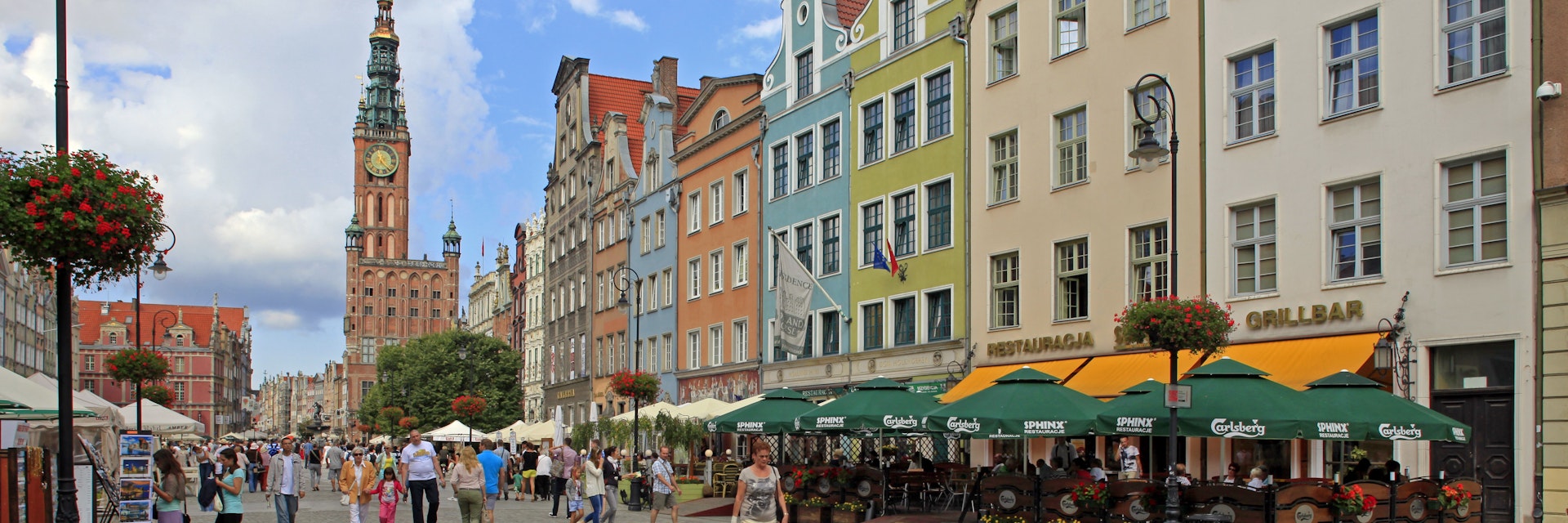
Getty Images
Like a ministate all to itself, Gdańsk has a unique feel that sets it apart from other cities in Poland. Centuries of maritime ebb and flow as a major Baltic port; streets of distinctively un-Polish architecture influenced by a united nations of wealthy merchants who shaped the city’s past; the toing and froing of Danzig/Gdańsk between Teutonic Prussia and Slavic Poland; and the destruction wrought by WWII have all bequeathed a special atmosphere that makes Gdańsk an increasingly popular destination.

Attractions
Must-see attractions.
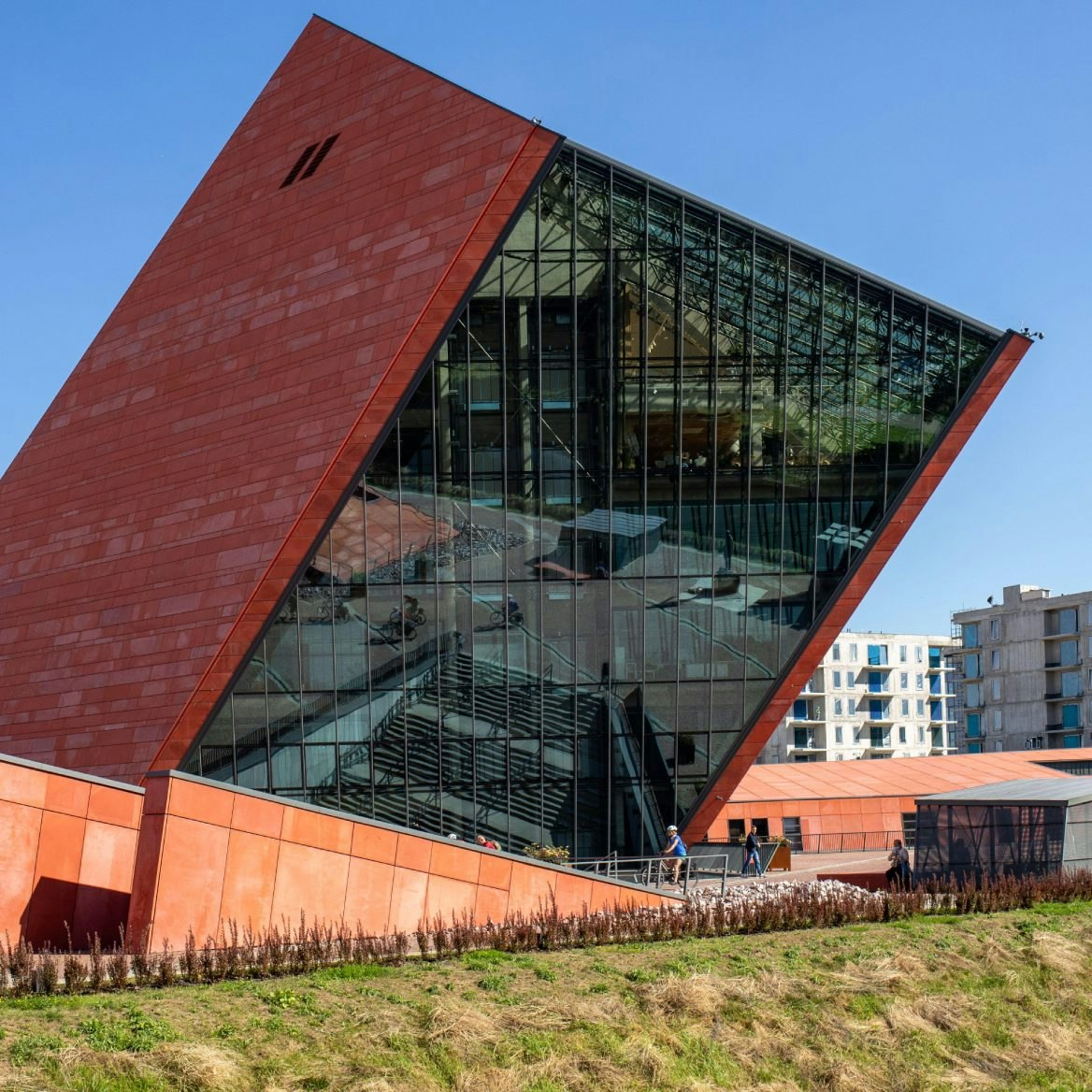
Museum of WWII
Opened in 2016, this striking piece of modern architecture is a bold addition to the northern end of Gdańsk's waterfront. It has rapidly become one of…
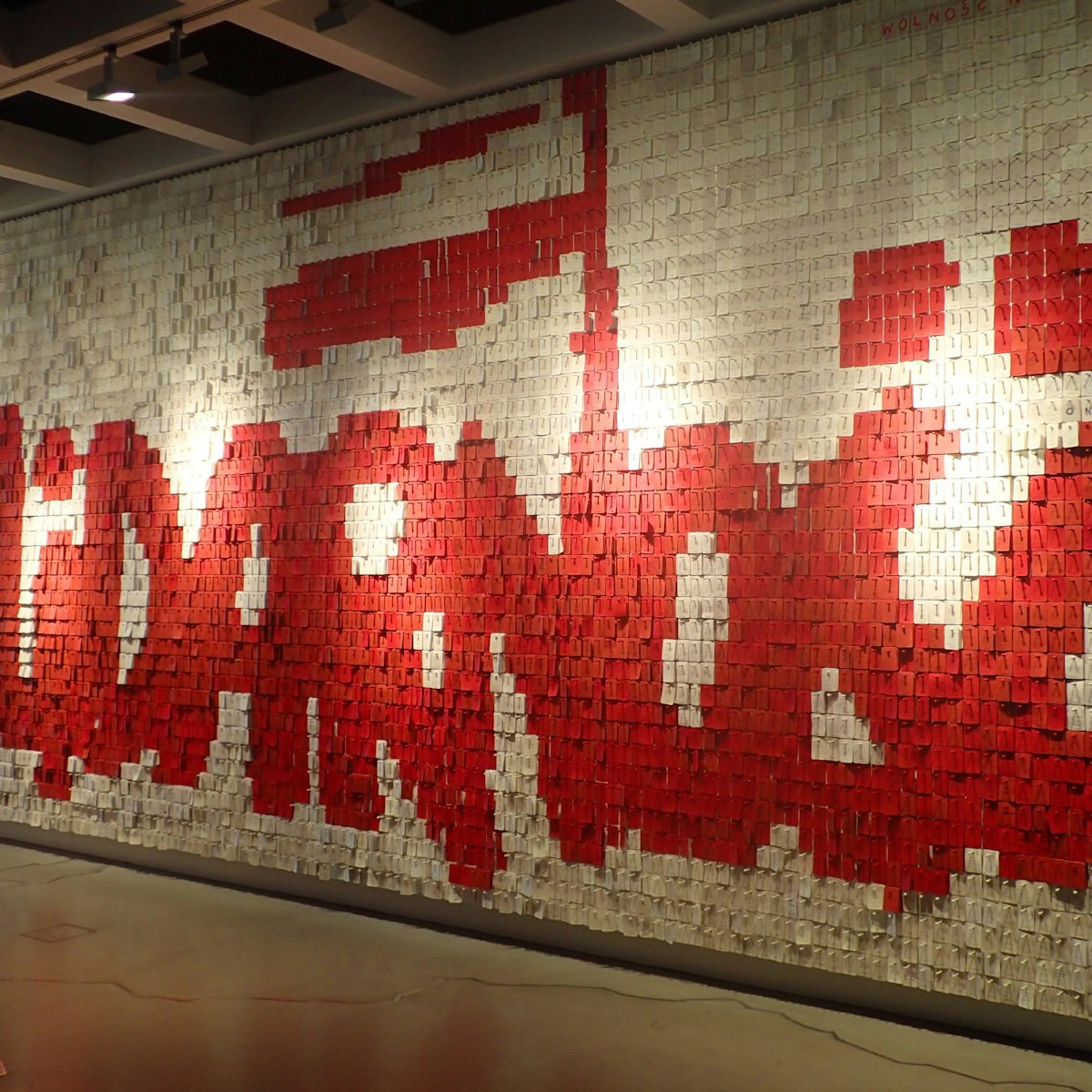
European Solidarity Centre
Opened in 2014, and housed in a truly awful example of 21st-century architecture (its rusty steel plates were designed to evoke ships under construction),…
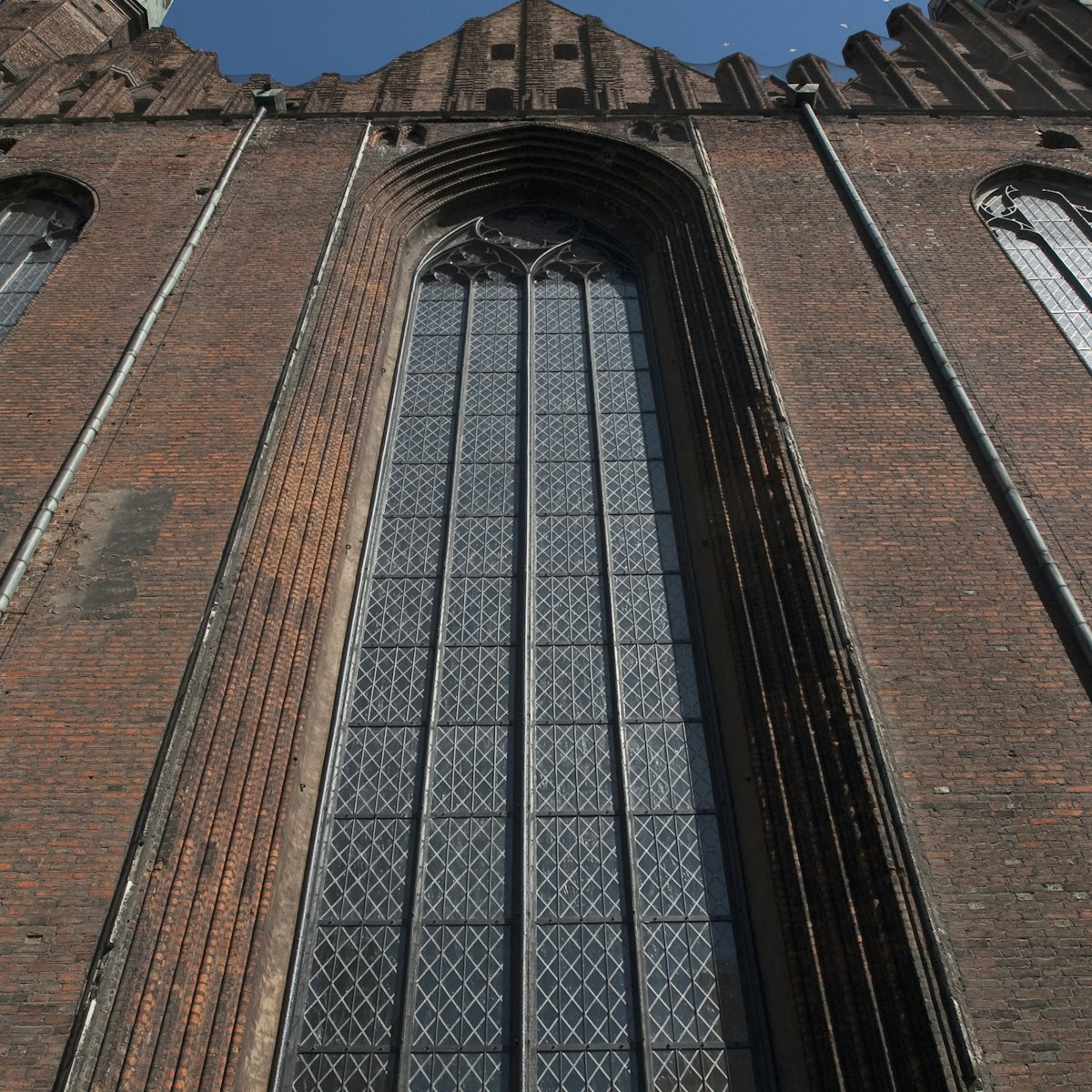
St Mary's Church
Dominating the heart of the Old Town, St Mary’s is often cited as the largest brick church in the world, its massive 78m-high tower dominating the Gdańsk…
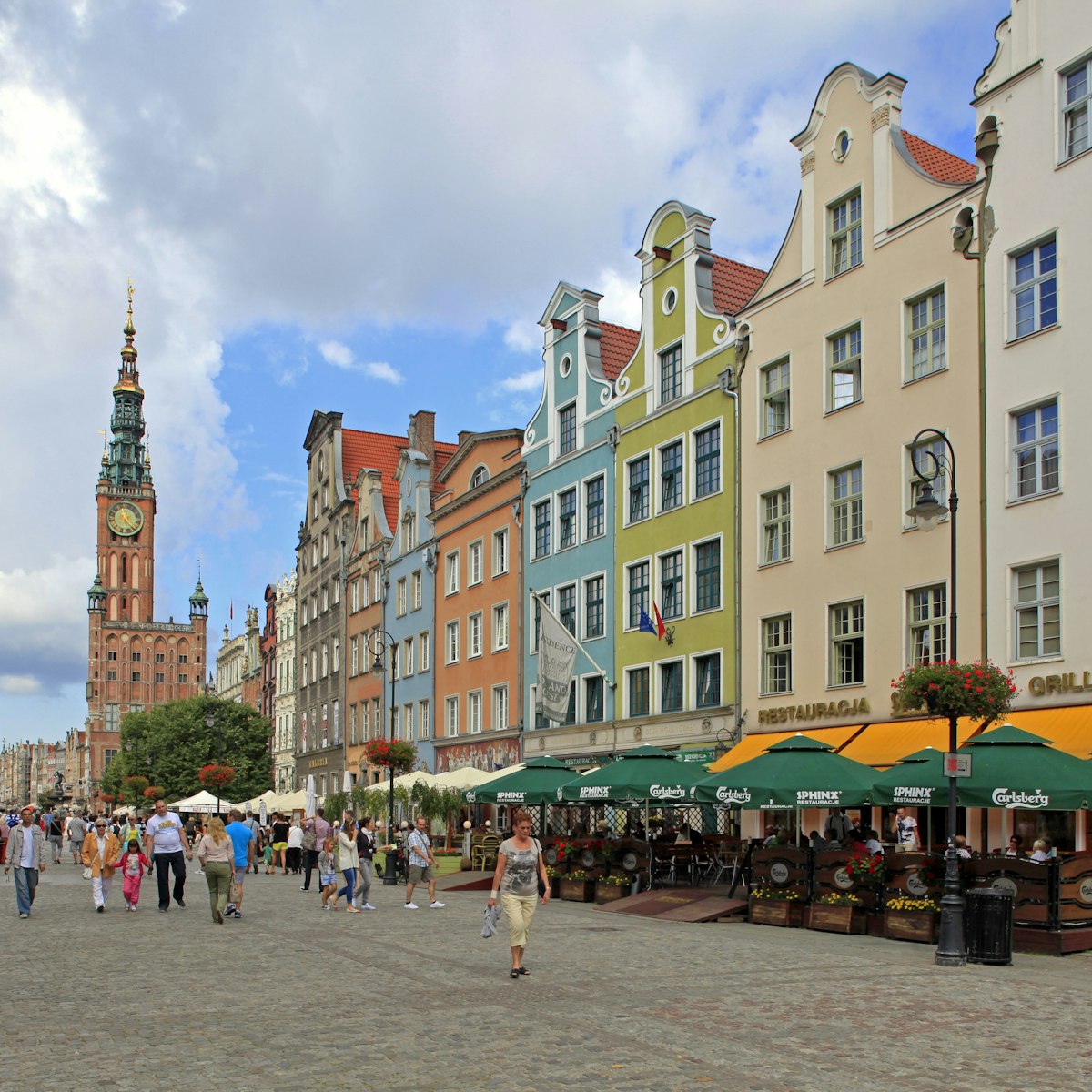
Długi Targ was once the main city market and is now the major focus for visitors. Things have gotten a bit touristy here over the last decade (dubious…
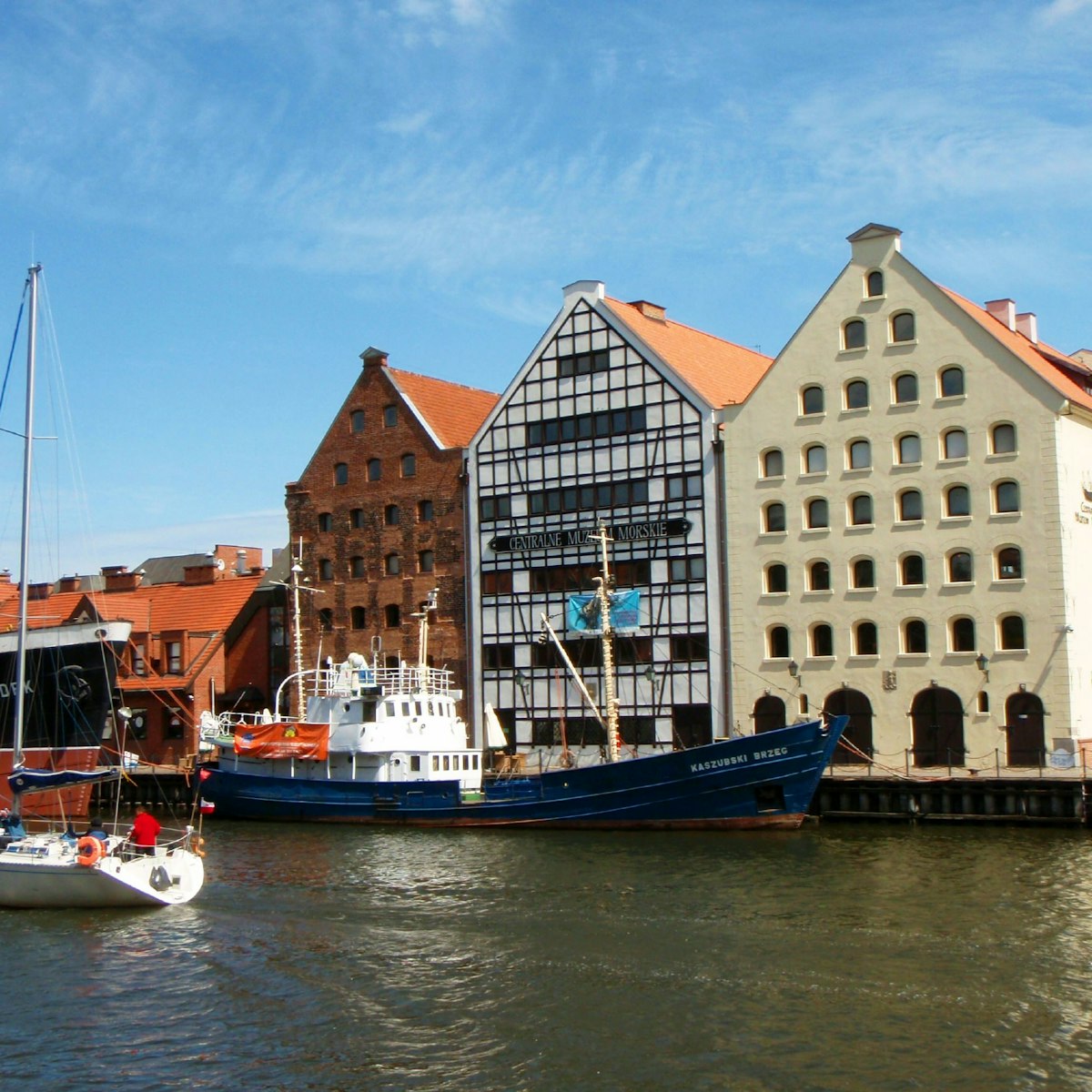
National Maritime Museum
This is a sprawling exhibition covering Gdańsk's role as a Baltic seaport through the centuries. The headquarters, the multimillion-euro Maritime Cultural…
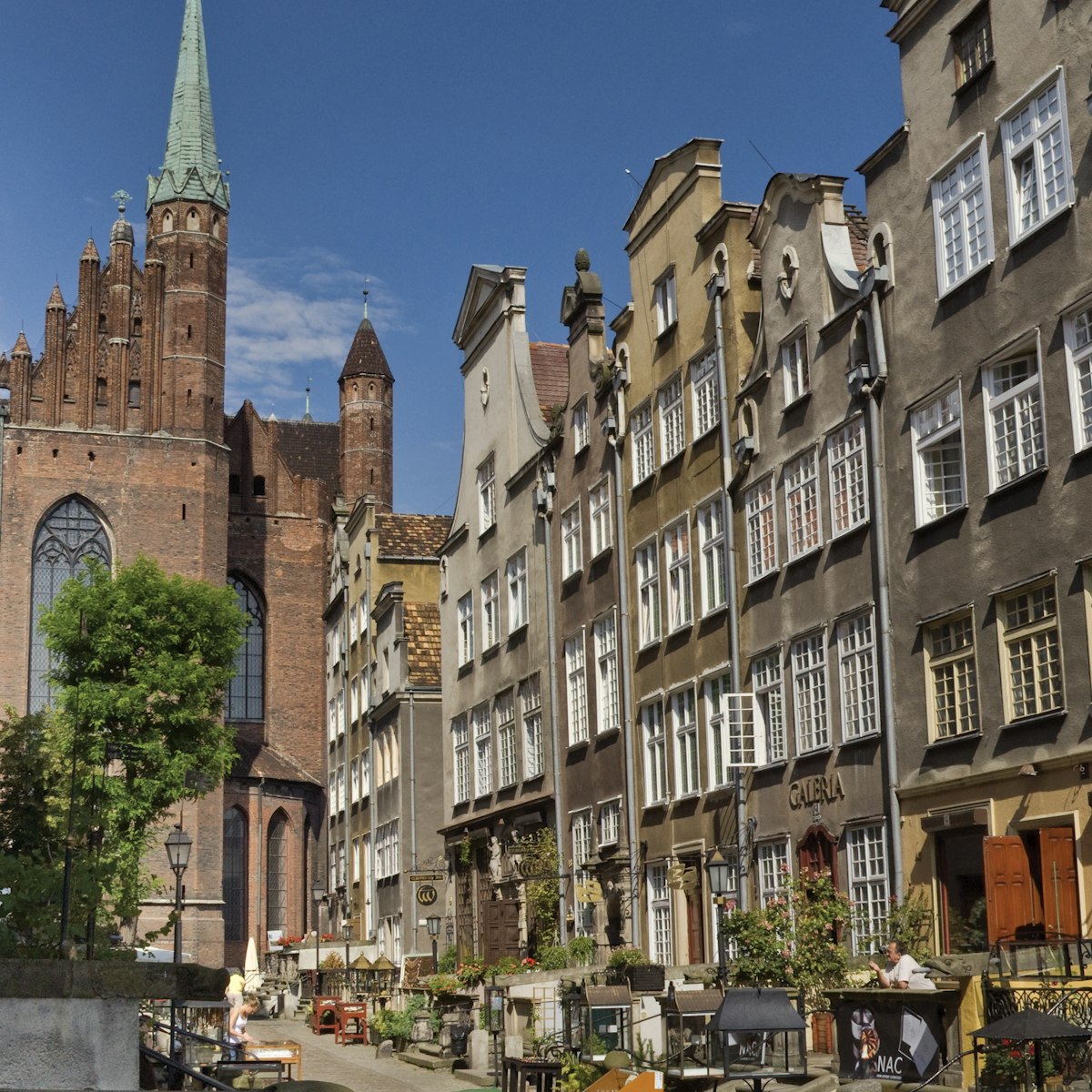
Ulica Mariacka
The most atmospheric of all Gdańsk's streets and one of Poland’s most photogenic lanes is this length of cobbles between the waterfront St Mary’s Gate and…

Artus Court Museum
Rising in all its embellished grandeur behind the Neptune Fountain, the Artus Court is perhaps the single best-known house in Gdańsk. The court has been…

St Bridget's Church
Founded over 700 years ago, St Bridget’s was reduced to medieval brick dust in 1945, and until 1970 only the outer walls were left standing. Very little…
Latest stories from Gdańsk
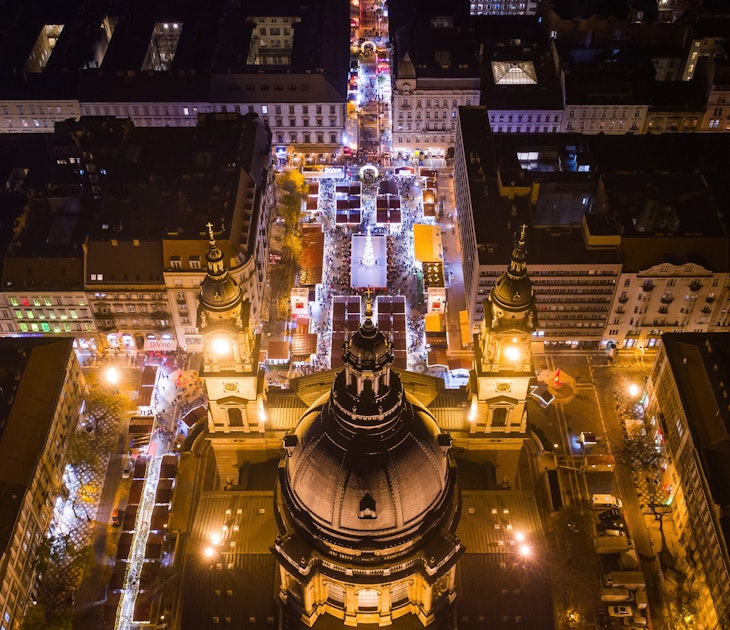
Festivals & Events
Dec 11, 2019 • 2 min read
With so many cities around Europe hosting amazing Christmas markets, visitors are spoiled for choice every December. While they all have different things…
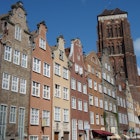
Sep 8, 2017 • 5 min read
in partnership with getyourguide
Book popular activities in Gdańsk
Purchase our award-winning guidebooks.
Get to the heart of Gdańsk with one of our in-depth, award-winning guidebooks, covering maps, itineraries, and expert guidance.
- South America
- United States
- TRAVEL GEAR
- Privacy Policy

- PHILIPPINES
- NETHERLANDS
- UNITED STATES
- OFF THE BEATEN PATH
- Responsible travel
- Animal tourism
- Eco friendly products
- Interview series
What to do in Gdansk: The only city guide you’ll need
One of Poland’s oldest cities, packed with colorful, architectural masterpieces, a center for historical treasures, lined by long white sanded beaches, and a symbol of the outbreak of the Second World War. Solidarity was born in Gdansk, the first anti-Soviet labor union. There is no arguing Gdansk is an important city, but it’s also one of the most beautiful cities in Poland. I totally fell in love with this place, and I’m sure you will too, so I put together a list of what to do in Gdansk and all the things you need to know to have a perfect stay.
There is so much to do in this wonderful corner of Poland that you could probably stay a week. But if you don’t have that long, here are the best things to do in Gdansk so you can pick your preferences and get the most of the time there.
Disclosure: This post may contain affiliate links. That means that if you make a purchase through one of those links, I will get a small commission at no extra cost to you. As an Amazon Associate, I earn from qualifying purchases.

Table of Contents
How to get to Gdansk
Gdansk is one of the biggest cities in Poland so it’s well commuted with the rest of the country, but there are also flights from other parts of Europe.
The airport is Gdansk Airport. Getting from the airport to Gdansk city center is easiest by SKM Train from Terminal 2 (departures) to Gdansk Wrzeszcz and change train there to the city center. You can buy tickets at the ticket machines at the train station.
The trains leave frequently and it’s much quicker than taking the bus which often stand in traffic. On the other hand, the bus takes you directly to the old town without change of vehicle.
Alternatively, you can go by taxi or download the FreeNow App which is similar to Uber. This is definitely much cheaper than regular taxis.
The main bus station in Gdansk is Gdańsk Główny (main station), where most national and international buses arrive and leave from. It takes under 10 minutes to walk to the old town, but there are taxis or you can use the FreeNow App to order a car if you have a lot of things to carry to your hotel.
Check buses and prices to Gdansk here .
Gdańsk Główny Railway Station is just behind the bus station. There are trains from all over Europe, as well as national trains going to Gdansk main station.
Check trains and prices to Gdansk here .
If you drive to Gdansk it can be worth noting that there is no such thing as free parking in the city center. It’s worth looking for a hotel with free parking if you plan on staying in the city for a few days.
Red Parking Zone: You have to pay all days between 09:00-20:00. This is the most expensive parking zone.
Blue Parking Zone: This is slightly cheaper than Red Zone and requires payment all days except public holidays from 09:00-17:00.
Green Parking Zone: Outside the city center with paying hours between 09:00-15:00.
Rent a car here .
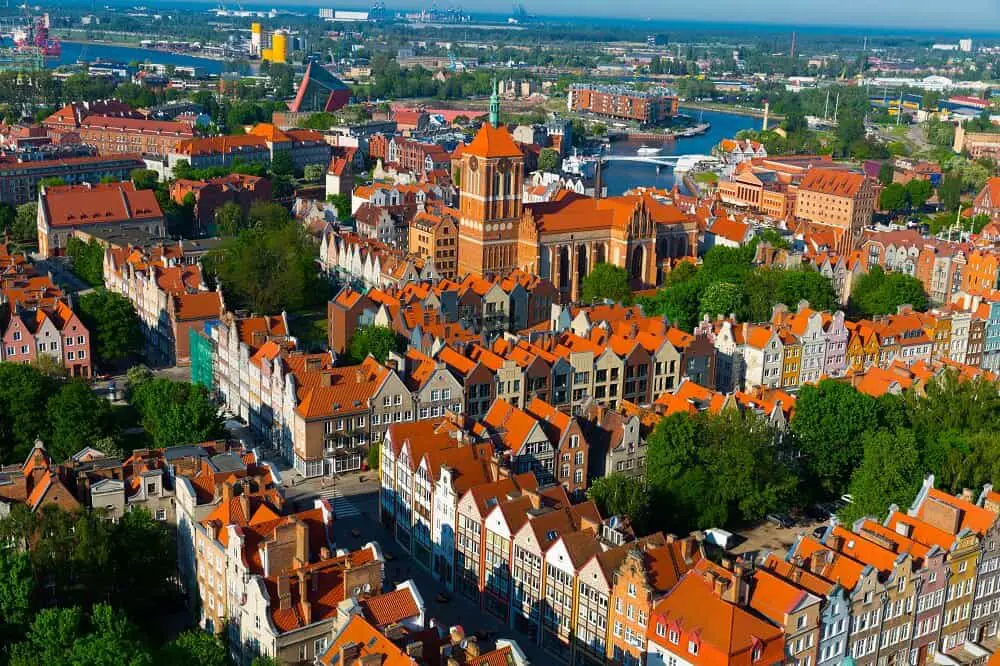
How to get around in Gdansk
Gdansk is a walkable city and you can easily get around by foot. However, if you want to go to places near Gdansk you can either book a driver for pretty cheap or take the bus or the tram.
You can buy bus/tram tickets on vending machines or directly from the driver. Once on the bus or tram, you need to validate your ticket.
There is also an Android app you can download to buy tickets, which is called Jakdojade. You don’t need to validate your app ticket as it’s accessible through the app. You find the app here .
If you want to travel to Gdynia or Sopot, you can take the SKM Train which leaves frequently throughout the day and every 2 hours at night time.
You can buy train tickets on the machines on the train station. Make sure you validate the tickets on the platform before you board the train. There is also an app for buying train tickets, Skycash .
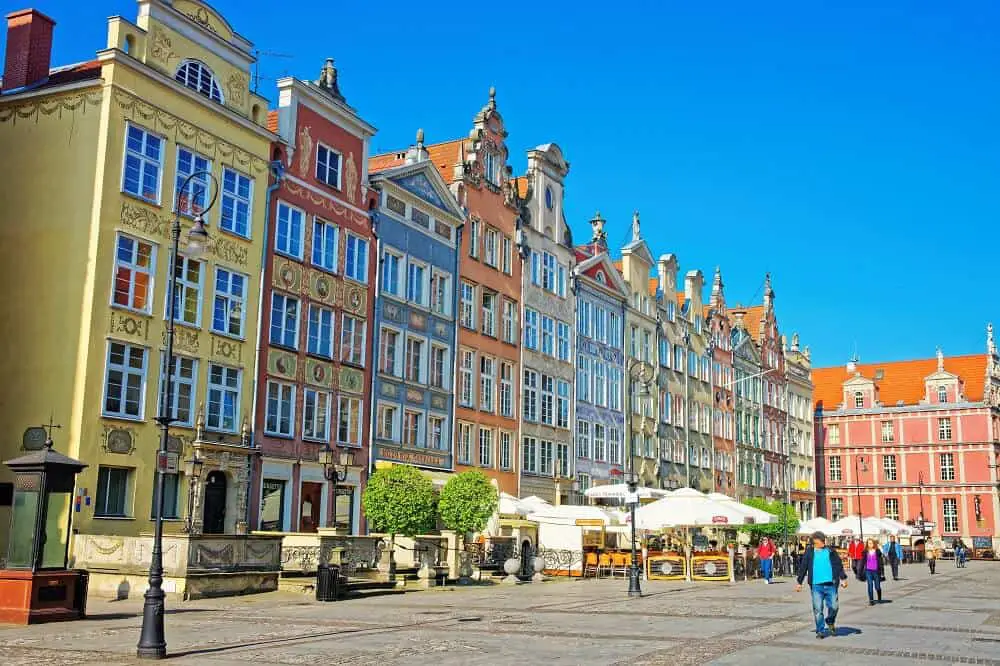
Best time to go to Gdansk
Gdansk is a wonderful summer escape with its astounding beaches. In June it’s normally not much rain and the Polish tourists usually don’t go before July and August. July is also said to be the rainiest month of the year.
If you don’t care too much about chilling at the beach and go swimming, the shoulder seasons in spring and autumn are beautiful to go sightseeing and not too cold.
But Gdansk also make a great winter city break in Europe as it offers so much sightseeing and is packed with museums. In winter the city usually gets temperatures around -3 to +3 degrees Celsius and occasionally it snows a little. You can read more about visiting in winter here .
Related: Places to go for Poland winter holidays
Best things to do in Gdansk
There are a lot of great things to do in Gdansk, here is a good selection of them so you can pick and choose how to spend your stay. The city you see today is mostly rebuilt after the World War Two, who practically destroyed everything Gdansk once was. That they did an amazing job rebuilding it is an understatement. The Poles turned Gdansk into easily the prettiest city in the country. So whatever you think are the best things to do in Gdansk, I’m sure you’ll enjoy its beauty.
Walk the Royal Way
During Medieval times, the Royal Way was used by kings to enter the city. It was a public event where everyone gathered to welcome the king and his men.
Today, it’s still one of the most important streets in Gdansk old town where you’ll find a lot of the most visited tourist attractions.
Walk along the charming, tall houses in Dutch style, and admire Artus Court and Neptune’s Fountain among other attractions. At the western end of this historical street, you find the Golden Gate.
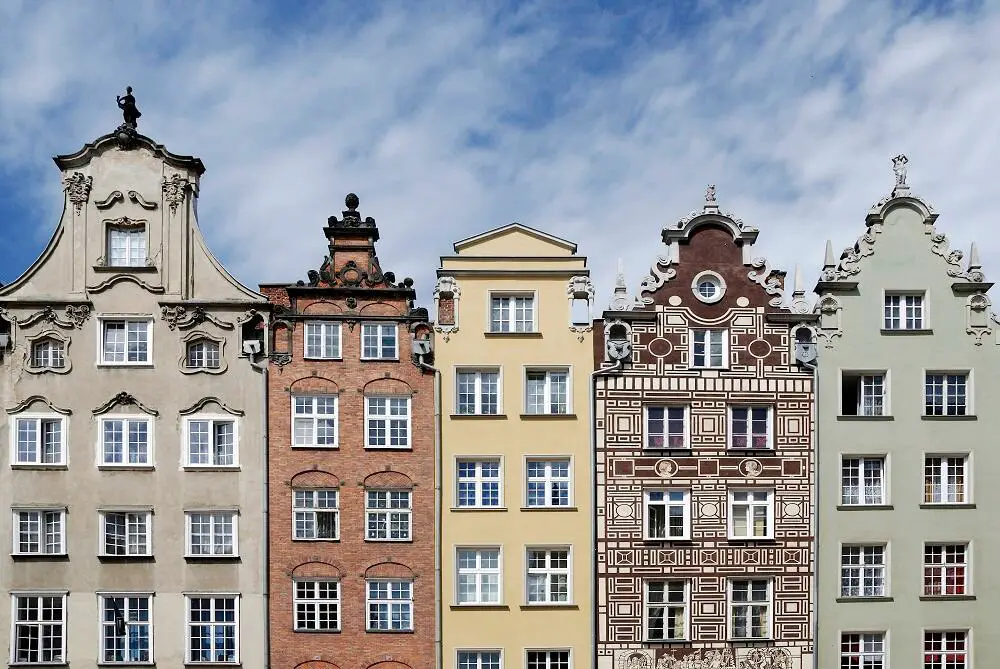
Golden House
The Golden House is an important building where several of the city’s mayors have lived throughout the years. It’s decorated with statues and it’s said that the ghost of Judyta Speymann walks around the hallways whispering “Act justly”.
The Golden House was destroyed during World War Two and later rebuilt.
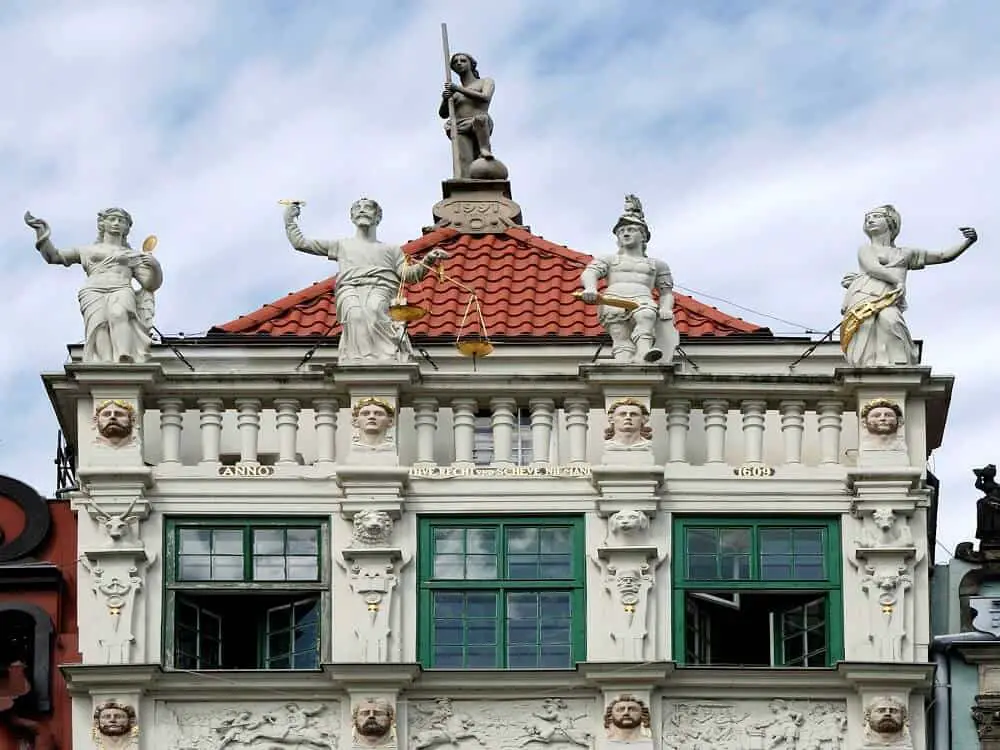
Tall ship river cruise
It might seem touristy and clishé, but what I remember as one of the most fun things to do in Gdansk was to ride a tall ship through the Motlawa River. It’s themed as Pirate Ship which makes it an adventure for the whole family.
You can actually take the ship to Westerplatte in the summer months, which can be a nice alternative mode of transport.
You can buy tickets on the dock next to the ships.
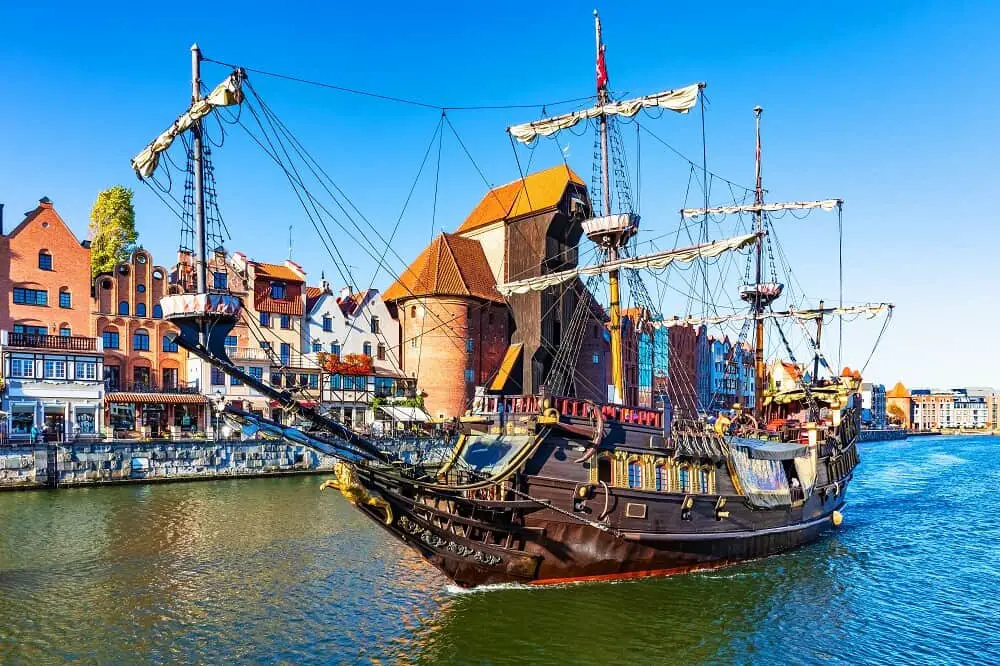
Climb the clock tower of the Main Town Hall
Along The Royal Way you find the Main Town Hall, recognized by its green, Gothic clock tower. This is where you’ll find the best views in Gdansk, so make sure you head there to climb up to see for yourself.
History buffs will also love Gdansk History Museum which is in the same building.
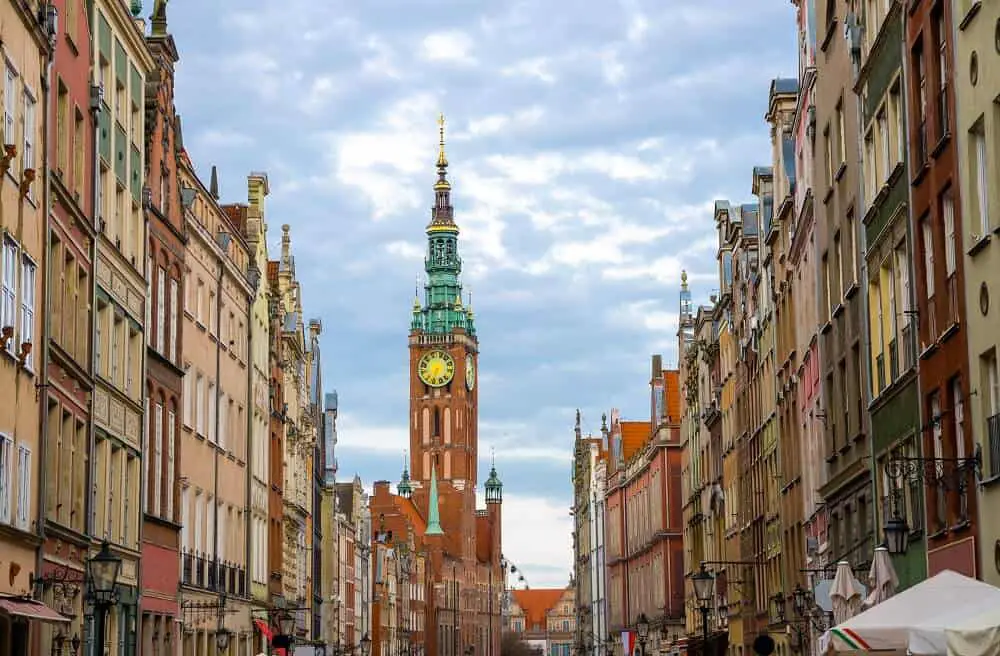
St. Mary’s Church
The most prominent landmark in Gdansk is without a doubt St. Mary’s Church, not so surprising, it’s one of the world’s largest brick churches. Located in the heart of Gdansk old town, a visit to the basilica is one of the top things to do in Gdansk.
Climb the more than 400 steps to the top of the bell tower for another spectacular view of the city. Gdansk is unique and beautiful, and it’s hard to get enough of the views of the colorful, charming houses that line up across the old town.
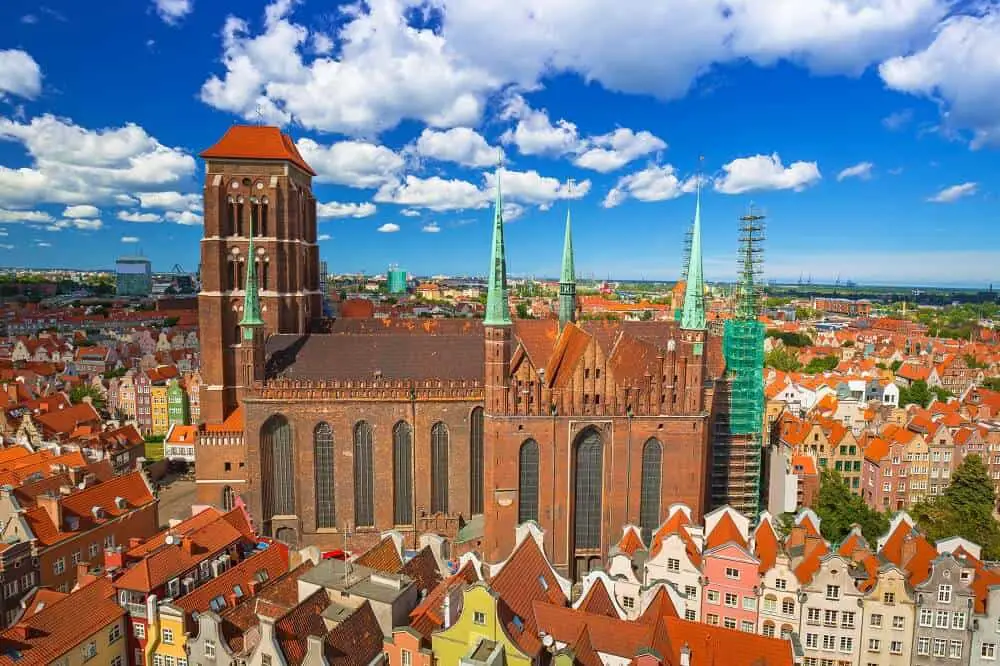
St. Mary’s Street (Mariacki street)
This street goes between St. Mary’s Basilica and the Motlawa River. Unique to Gdansk, when Mariacki street was rebuilt after the World War Two destruction, they used mainly debris found in the area which they puzzled together.
This charming street is packed with restaurants and cafes, and recognized for its stone terraces with broad stone staircases invading the cobblestoned street, and distinctive gargoyle rain gutters.

Prison Tower and Torture House
The Prison Tower was originally built in the 14th century as part of the city fortification. Later, it was rebuilt and used partly as courthouse, torture house, and prison. Until the middle of the 19th century it was even used for executions.
After being harmed in the Second World War, the structure was rebuilt and now houses a museum where you can learn everything about its intriguing history.

Also known as The Crane, Zuraw is a waterfront crane originally from the 15th century, and one of the most prominent landmarks in Gdansk.
The Crane has been used to transfer cargoes, raise masts on ships, and as one of the city gates, even a defense function. This was before it was destroyed under World War Two.
After the war, it was rebuilt and now it belongs to the Polish Maritime Museum.
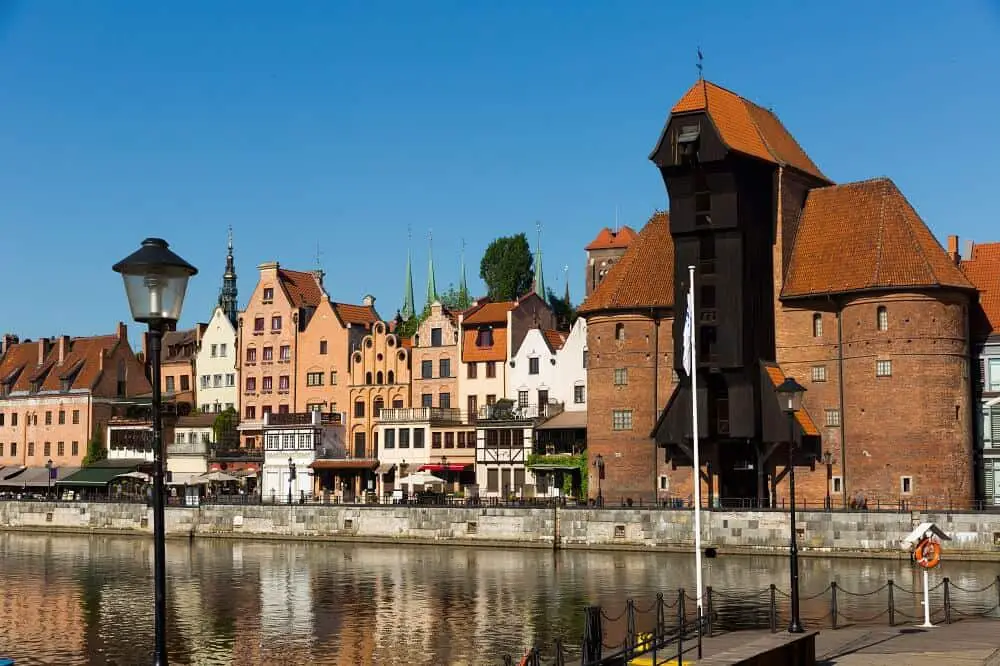
Artus Court
Artus Court used to be a meeting place for merchants in the 16th and 17th centuries. Today it is part of Gdansk History Museum, full of stunning sculptures and paintings.
The main attraction is the tiled stove in the main hall. With its 10,64 meters, it’s the tallest one in Europe.
As so many other historical buildings in Gdansk, Artus Court was completely destroyed during World War Two and was rebuilt to the beautiful structure you see today.
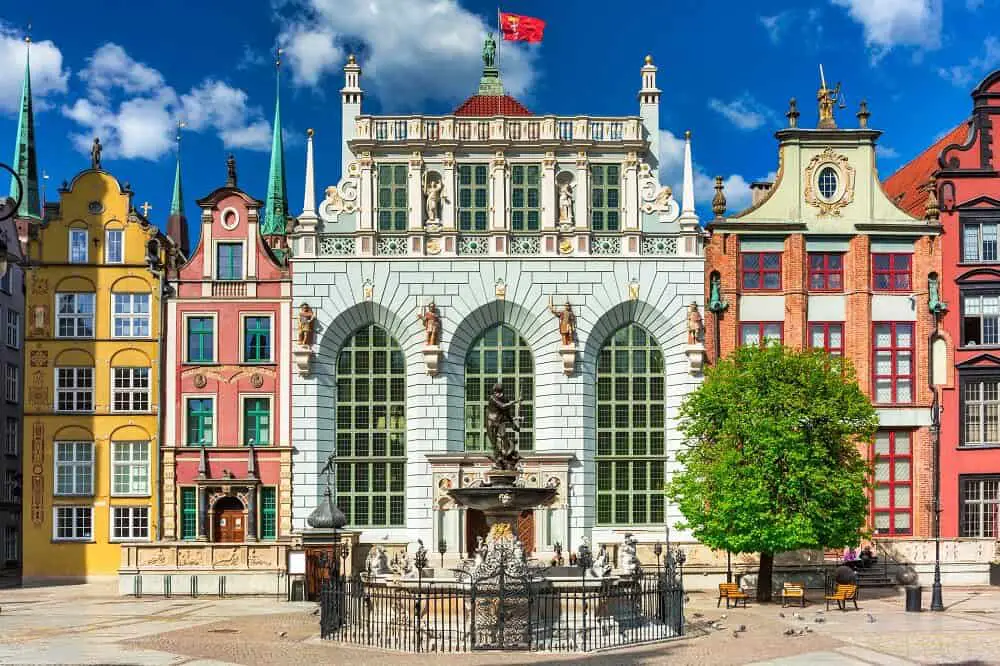
Neptune’s Fountain
Neptune’s Fountain is right in front of Artus Court along the Royal Way. Originally, it was built in 1549. During World War Two, the fountain was taken apart in pieces and hidden together with other local treasures. This saved it from the massive destruction the city saw. It was returned on its place after the war and later restored in 2011-2012.
The fountain is an astounding masterpiece in a mannerist-rococo style recognized by the statue of Neptune on top.
European Solidarity Center
The European Solidarity Center is a young museum from 2014, nonetheless important to Polish history. It shows the history of the Solidarity Movement that grew in Poland in the 1980s as well as the anti-communist opposition in Europe.
The museum also encourages open discussions and debates about the issues of social justice and other relevant topics.
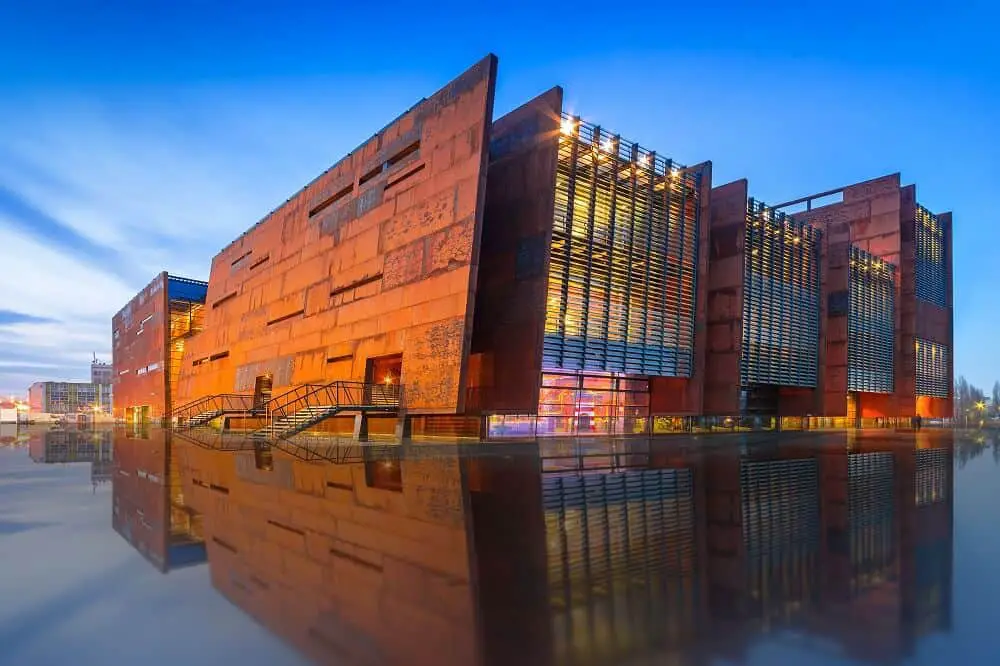
Sopot beach
Sopot beach is the finest in the Tri-City (Gdansk, Sopot, and Gdynia) and a visit there is without a doubt one of the best things to do in Gdansk.
Not only is it an astounding beach, but it also has Europe’s longest wooden pier with it’s 511,5 meters. This makes Sopot beach worth visiting even if you’re in Gdansk in winter .
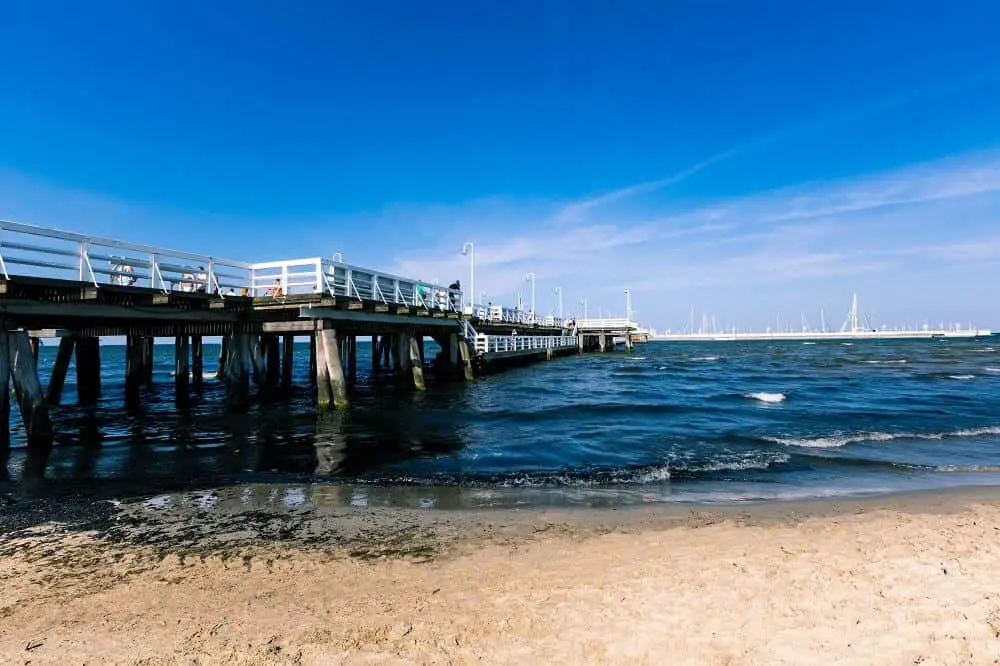
Museum of the Second World War
One of the most popular museums in Gdansk, featuring everything on the Second World War. The museum is divided in different rooms showcasing the different stages in the war and the suffering it caused. The rooms are spread over three main sections: Road to war, The horror of war, and The long shadow of war. There is even a children’s section.
This is an extremely impactful museum where you’ll learn a lot about what happened through old photos and videos.
Book tour and tickets here .
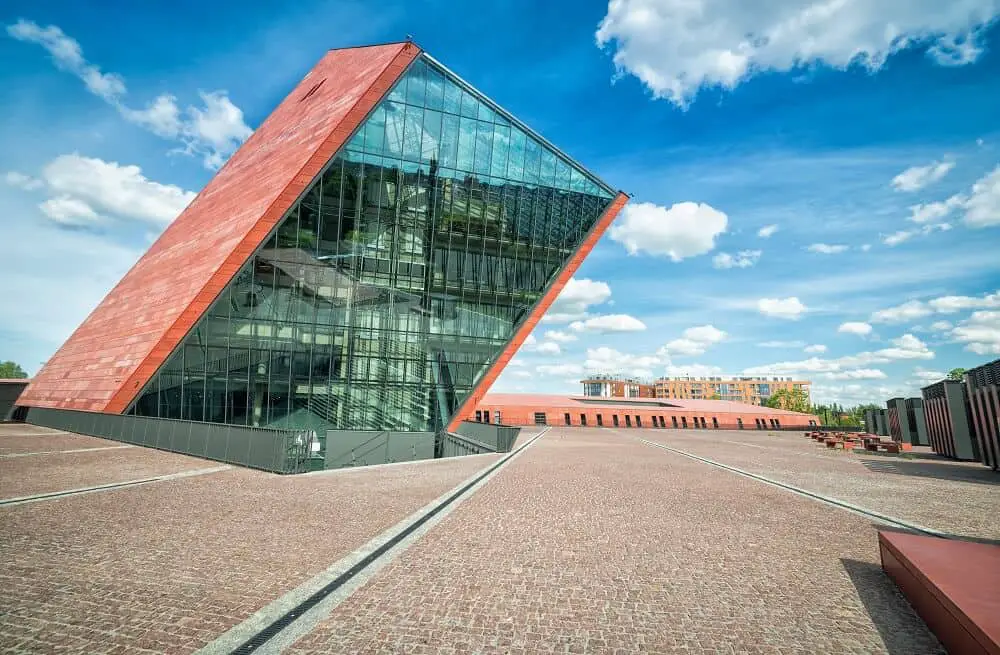
Westerplatte
Westerplatte was the Ground Zero of the Second World War and where the first shots of the war took place in 1939. Poles recognize Westerplatte as an extremely important site representing the bravery of defending the city against Hitler.
Today, Westerplatte is memorial site and historical park where you can see ruins and shelled bunkers as well as small museums, usually only open in the high season.
This is without a doubt one of the most important places to visit in Gdansk. You can get to Westerplatte by bus no. 106 or take the tall ship along the Motlawa river.

Golden Gate
At the end of The Royal Way, Dlugi Targ, you get to the Golden Gate, an astounding Renaissance city gate.
During the Second World War, the original gate was destroyed, originally built between 1642-1644. It was restored to what you see today in 1997.
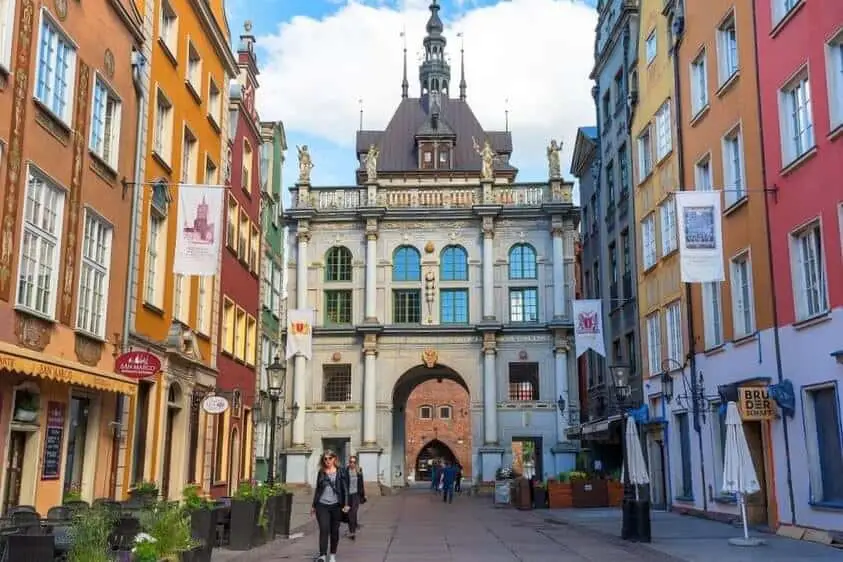
Oliwa Cathedral
Being the longest Medieval cathedral in Poland with its 107 meters, the Oliwa Cathedral is a must visit in Gdansk. The basilica dates back to the 12th century and is often considered the most beautiful in the country.
The interior is beautifully decorated with paintings from the 17th century, baroque and rococo altars, chapels, and tombs.
Yet the church is mostly known for its astounding rococo organ consisting of 7876 reed pipes! There are also 25 small, detailed angel figures decorating this wonderful instrument.
Gradowa Gora Hill
The short hike up to Gradowa Hill is definitely one of the best things to do in Gdansk if you plan to stay a few days. It’s a 46 meter high hill showcasing a 19th century fortress and lovely city views.
Gradowa Gora Hill is only a short walk from the main bus and train station.
Stutthof Concentration Camp
Only 50 kilomters outside the city, in Sztutowo, you find one of the longest active concentration camps in Poland. Not as famous as Auschwitz, the Stutthof Concentration Camp is just as strong an experience and important in both Polish and world history.
You can witness the different camps, the villa of the main commandant, as well as gas chambers and crematoriums. Some 65 000 people lost their lives in Stutthof concentration camp. These were prisoners from 28 countries, mainly people that the German army considered slowing down their takeover of the Pomerania region.
There is a memorial statue of Wiktor Tołkin, a member of the Armia Krajowa resistance that was arrested and imprisoned in Auschwitz between 1942 and 1944.

What to do in Gdansk as a responsible traveler
I hope you’ve got a good idea of what to do in Gdansk. But as always, make sure you travel responsibly and respect the locals wherever you go. Make sure you especially pay respect if you visit the concentration camp as it’s an extremely sensitive and horrific part of Polish (and European) history.
You can also bring a few zero waste items to avoid single use plastic, like a reusable water bottle, reusable coffee cup, and straw.
READ NEXT: How to spend one day in Dresden Germany
Like this? Make sure you pin it for later!
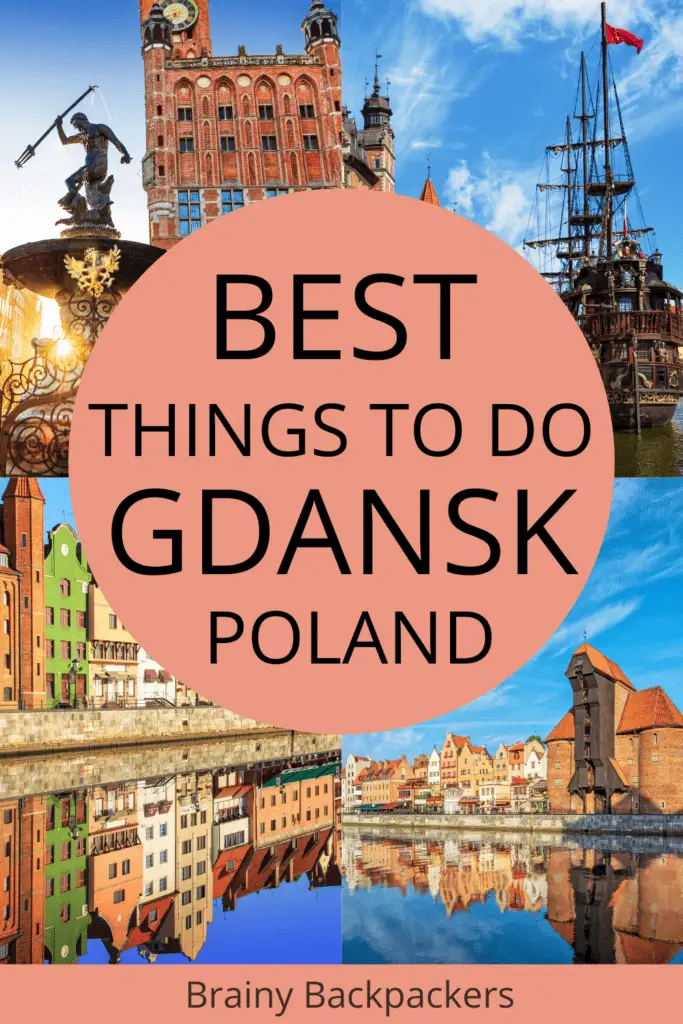
Email address:

21 Best Things To Do in Gdansk, The Coastal town of Poland
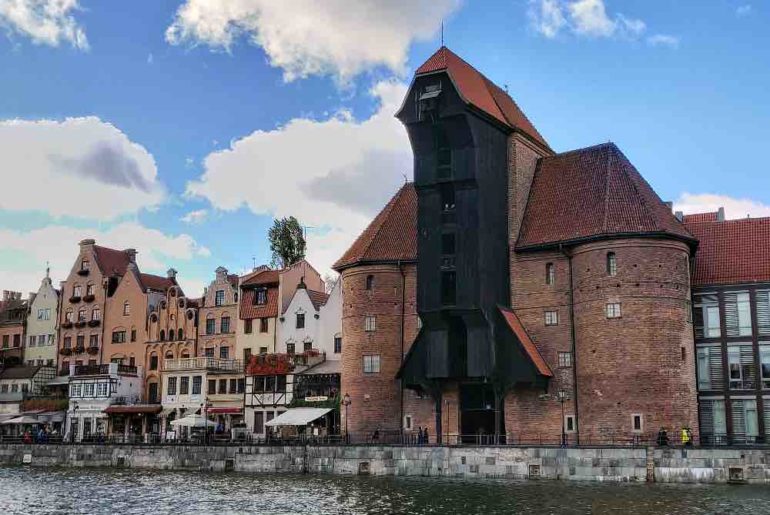
Gdansk was one of the first cities that I came across while researching on the best things to do in Poland.
Gdansk is the country’s gateway to the Baltic Sea.
So Gdansk is a favourite among the Polish as well as international travellers, who fly to Gdansk for a beach holiday during summer for its beaches.
In this travel guide, I’ll share with you the best things to do in Gdansk.
This exhaustive Gdansk travel guide includes some great tips, transport, tours, and many more apart from Gdansk’s attractions.
Don’t forget to book this post to plan your Gdansk trip!
BEST THINGS TO DO IN GDANSK
Wander around the old town of gdansk.
When you are in a European city, checking out the old town is obviously one of the top things to do.
What’s different in the case of the old town of Gdansk is that the old town is not really old.
Gdansk was almost entirely wiped out in World War II.
So the old town was actually reconstructed to resemble the earlier buildings, which were all built in the Dutch Renaissance style because the earlier architects were from the Netherlands.
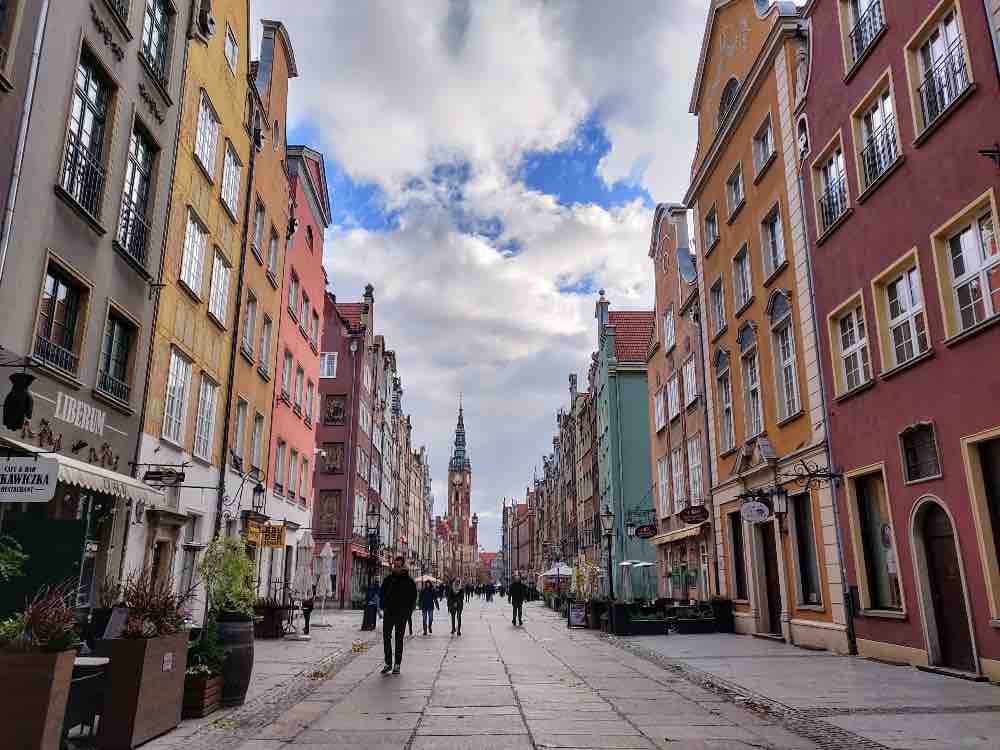
Did you know? Most of the street names in the old town of Gdansk haven’t been changed in the last 500 years or so.
Also, unlike the old towns in other cities, you’ll not find a square.
Instead, the old town area is spread between the streets, beginning at Dluga street or Long street, and extends up to Dlugi Targ or the Long Market.
On the way, you’ll pass through the majestic Town Hall and Arthur’s Hall.

I had joined a free walking tour of the old town, and the guide told us about the Royal route, which includes the Dluga street.
Encompassing many prominent buildings, it starts at Wyznna street and passes through Dlugi Targ, which ends at Brama Zielon.
I just navigated using Google maps to find the others not covered in the tour.
All the places are well-marked on the maps and you should be able to find them easily.
Here are some of the guided walking tours that you can try. There are different types of tours to explore Gdansk old town, with some including audioguides.
- Gdansk Old Town 2 Hour Walking tour
- Gdansk Old Town Private Walking Tour
Head to Stocznia Gdansk or Gdansk Shipyards
As I mentioned earlier, Gdansk was a prominent port city for more than 7 to 8 centuries.
So its legacy with shipbuilding dates back to these times when the city was just granted the privilege to trade.
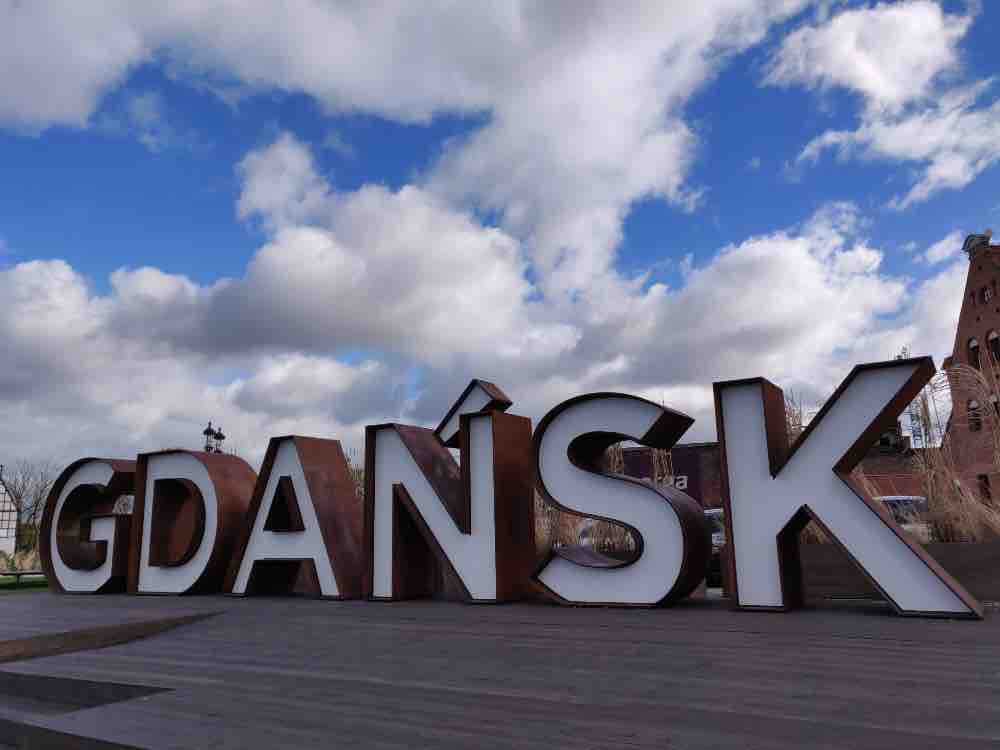
Once home to more than 20,000 workers who built round the clock to build ships, Gdansk shipyards became a meeting point for those who led the Solidarity movement against communism in the late ’70s. This is really a great place to capture through your lens.
While here, don’t miss the Crane
As you pass by the shipyards, you can’t help feeling as if you have arrived in a Dutch city like Amsterdam.
With canals and Dutch-styled buildings, I instantly remembered my travels in Amsterdam a few weeks ago.
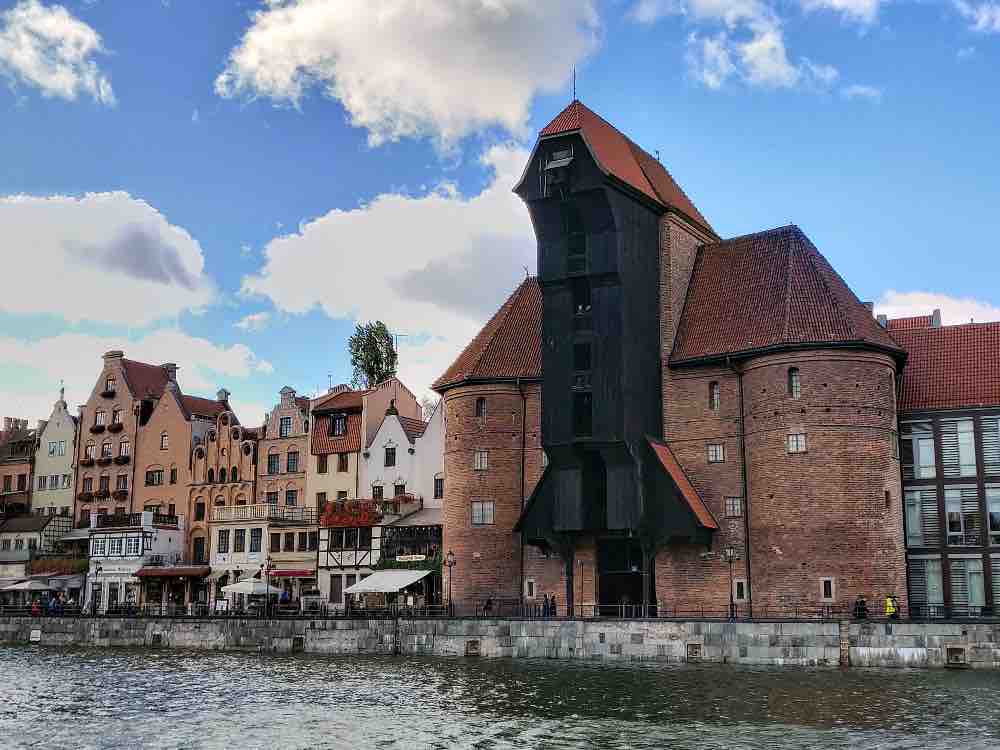
What you can’t miss amidst these elegant uniform buildings is the Crane, which sits on the Motlawa River. It stands out today due to its antique appearance.
The crane hoisted the masts of ships, along with loading them with goods.
Our guide explained the mechanism of how it worked, and I couldn’t stop being amazed by the engineering feat of medieval times.
Travel Through Time on Mariacka street
Mariacka Street is unique and special because of its layout.
As soon as you enter, you notice that all the buildings on the street are above the ground level.
The narrow, cobbled street consists of stairs consisting of 3 to 4 steps leading you into the buildings.
This elevation is an example of how the streets in Gdansk earlier existed.
Due to its damp nature and close proximity to the waterfront, much of the streets would be submerged, and hence all the buildings would be built at an elevation.
The traditional buildings stand elegantly in different bright colours, and it’s just a treat to watch such cuteness.
And if you are traveling with your partner, this is surely one of the romantic places to be in Gdansk.

Mariacka Street is known just for this. It is the centre for modern-day Amber shopping.
You’ll see shops selling amber jewellery in all shapes and sizes.
The basements of these buildings today house beautiful cafes, boutique shops and places to shop for souvenirs in Gdansk.
At the other end of the street is the impressive Mariacki Church.
Visit the Amber Museum
Called the Baltic’s Gold, Amber is a favourite among the precious stones for many. Did you know? Poland is the largest exporter of Amber in the world.
Much of the Amber comes from the Gdansk area, so obviously Gdansk Amber is too popular.
So while you are here, head to the Amber Museum to know all about it.
From furniture adorned with Amber to the antique collection, this Museum is a compact place to know about Amber. Plus, you get some pretty views of the old town from its top floor.
Amber Museum timings: 9 AM to 8 PM. Closed on Mondays Entry fee: 12 PLN
Head to St. Catherine’s Church Tower for Gdansk’s views
St. Catherine’s church is not hard to miss while you are in the old town area.
To get some fabulous views of Gdansk, climb the tower to the top. All the climb is worth it, totally.
Check out the old post office
Located next to the harbour area in central Gdansk, The old post office has a special place in History.
Officially, this is where World War II kicked off when the German troops attacked the post office in the wee hours. More than 50 Polish employees fought to protect the attack.
The building also includes a museum, which showcases the events leading up during the war and also the history of the postal service.
There is a square consisting of a statue commemorating the defenders of the post office.
Visit the World War II Museum
Opened in 2014, World War II Museum is one of the best Museums that I have visited.
I love history and hence Museums are enchanting to me, but I must say that I loved this place impartially.
You’ll be taken through the entire war period, starting from the events before the war until the many decades, where you’ll see how the World War II shaped and rewrote history for millions of people across many countries in the world forever.
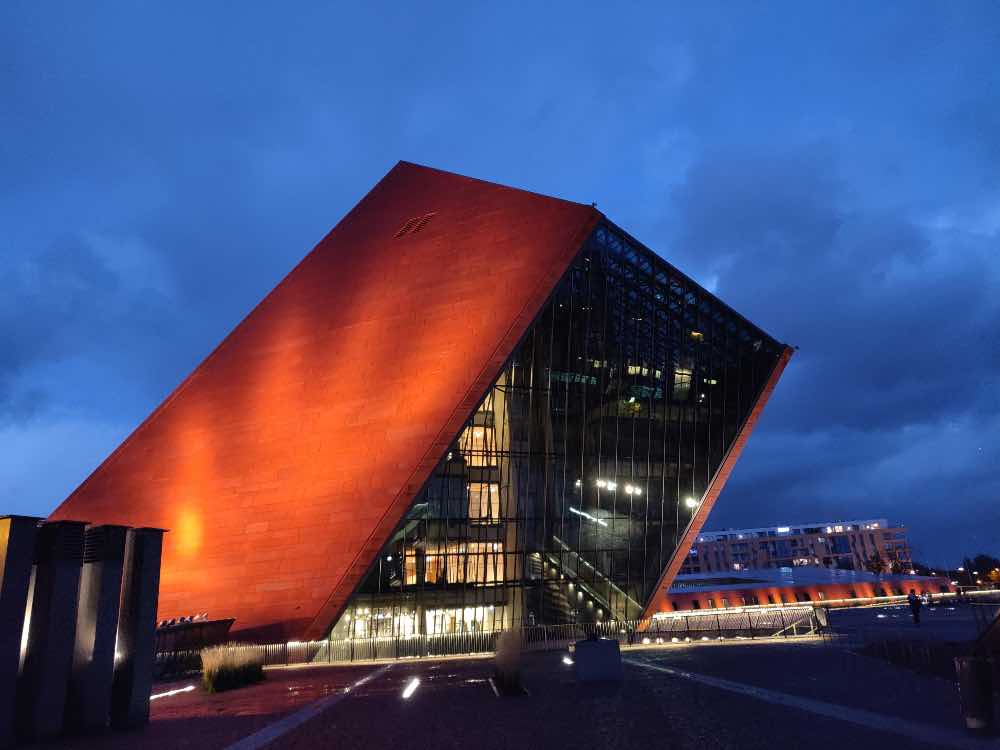
There are lockers and if you have a backpack with you, you’ll need to put it in a locker.
Only small handbags are allowed. 2 PLN deposit is required for a locker.
You can keep your coats in the coat racks for free. The museum is closed on Mondays, and if you want to save some bucks, the Museum is free to visit on Tuesdays.
So it’s crowded on Tuesdays. Try to be early to collect your free pass on Tuesdays.
World War II Museum timings: Closed on Mondays. Tue-Fri: 10 AM to 7 PM; Sat-Sun: 10 AM to 8 PM. World War II Museum entry fees: Free entry on Tuesdays. Normal ticket – 23 PLN; Reduced ticket – 16 PLN; Family ticket – 55 PLN; Temporary exhibition – 1 PLN
Check out the Solidarity Museum
The people of Poland fought against communism much like their neighbours for more than 2 decades.
The Solidarity centre was built to commemorate the heroes that were responsible.
The building houses a museum, statues outside, and you can easily spend half a day here.
Solidarity Museum timings: Mon–Fri – 10 AM to 7 PM; Sat-Sun – 10 AM to 8 PM Solidarity Museum entry fees: Regular 20 PLN
Unusual Things to do in Gdansk
If you are still wondering what to see in Gdansk, here are few more Gdansk attractions that you can explore.
Visit the Library in the Solidarity Museum
If you are a bookworm like me, you could check out the library that’s present in the same building where the Solidarity Museum is located.
There aren’t many books in English, but if you speak any of the European languages, you could end up finding a good read.
Check out the Antique Gdansk Railway Station
If you don’t have detail for an eye, you could possibly pass off Gdansk railway station. But if you take a moment, you’ll notice a lot happening around this area.
First of all, the railway station is an example of ancient European architecture. Opposite it stands the bus station.
If you walk below crossing the bus station to the other extreme end, you’ll enter a local market, where you could find some old traditional eateries and cheap places to shop in Gdansk.
I enjoyed strolling around in this area, where I managed to grab something cheap to eat as well as do some shopping in Gdansk on a budget.
A quick tip: If you are traveling during Autumn or Winter, make sure to check out this neighbourhood early as many shops close around 6 PM.
Discover the vibrant murals in Zaspa
Zaspa is home to the largest outdoor art gallery in Europe, consisting of vibrant wall murals.
All of them free to see! If you want to know the legends and local stories of these murals, you can take guided tours of Zaspa neighbourhood.
Sign up for Gdansk food tour
I am sure that after spending a good time in Poland, you would most likely develop a taste for Polish food.
The best way to get into the heart of Polish food is to enroll yourself for a food tour in Gdansk.
On this guided license tour, you’ll get to savour Polish drinks, appetizers, main courses as well as desserts.

Book Gdansk Food Tour With Authentic Polish Cuisine
Eat at a Milk Bar
One of the fun things to do in Gdansk is to go Milk Bar hunting. Milk Bars are local restaurants serving delicious Polish food at very cheap prices.
The portions are massive, the taste is delicious and you pay by the weight of the food. Plus, they are home-cooked.
So basically for backpackers and budget traveler, it’s like a jackpot! And yes, there are decent options for vegetarians.
So In Gdansk, there are many Milk Bars that are worth visiting.
Some of the popular ones to try are Bar Turystyczny, Pijalnia Wódki I Piwa, Kmar Bar Mleczny, Academic Milk Bar, Syrena and Bar Mleczny Neptune.
Google them to read the reviews and locate them and start your Milk Bar hunt!
Explore the Market Hall
The Market Hall is the local market of Gdansk consisting of three levels.
Built in the 19th century, it looks anything but as an actual market.
From meat to fresh veggies, you can have a look at what the people of Gdansk eat! Visit this market for its unique build and the charm of local markets.
Enjoy the laid back Gdansk Nightlife
Gdansk is a popular destination for stags, and this came to me as a surprise.
I mean, I was expecting more happening things would lure stags, but there are quite a few things in Gdansk for stags.
One of them definitely is making the most of Gdansk’s nightlife.
Sure, it might not be loud and out as in bigger cities, but there are plenty of beer bars, pubs and restaurants for enjoying good Polish Vodka along with excellent food.
Obviously, if you are traveling alone, these places are great to find people to tag along!
Climb the Gradowa Hill
Located just outside the city walls of Gdansk, Gora Gradowa is a small hill offering different views of Gdansk.
If the weather is great, climbing this hill is a perfect thing to do in Gdansk in the evening.
The Hewelianum Centre, a science centre is also close by.
Gdansk Itinerary
Now you got an idea about the top things to see in Gdansk, let’s look at how you can plan your itineraries to help you visit Gdansk.
How many days in Gdansk should you plan?
Ideally, I would recommend spending 3 days in Gdansk itself, excluding any day trips that is.
I mean with 2 days, you can cover the sights, but you’ll have to rush a bit. Here’s how you can plan Gdansk sightseeing on your own.
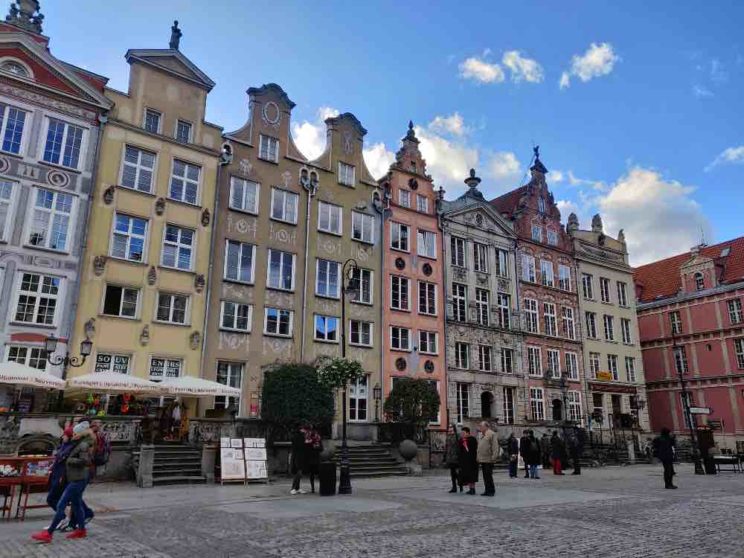
1 day in Gdansk
If you have just one day in Gdansk, you should spend the first half exploring the old town.
Try to cover these streets, all part of the Royal Route. Upland Gate (Brama Wyzynna), Golden Gate (Zlota Brama), Prison Tower and Torture Chamber (Wieza Wiezienna), Gdansk Town Hall (Rathaus), Arthur’s Court (Dwor Artusa), Long Street (Dluga), Long Market (Dlugi Targ), Neptune Fountain (Fontanna Neptuna), Green Gate.
Then you can make your way up to the shipyard, checking the crane.
End your old town tour on Mariacka street.
You could then head to the Solidarity Museum or the World War II Museum if Museums are your thing.
If you prefer going to only one, I would suggest WW II Museum.
Alternatively, you could go to Westerplatte, although you’ll have to rush if you are pressed on time.
2 days in Gdansk
Day 1: You could check out the old town and visit either of the museums.
Day 2: Take a day trip to Malbork Castle or head to Sopot for a beach day.
No matter which one you take, you’d be left with some time. You can head to the market hall or the post office in town ending your Gdansk trip.
3 days in Gdansk
Follow the above for the first 2 days.
You could use the third day to do another day trip to Gdynia, Westerplatte, Malbork or head to Oliwa, or take a Gdansk cruise.
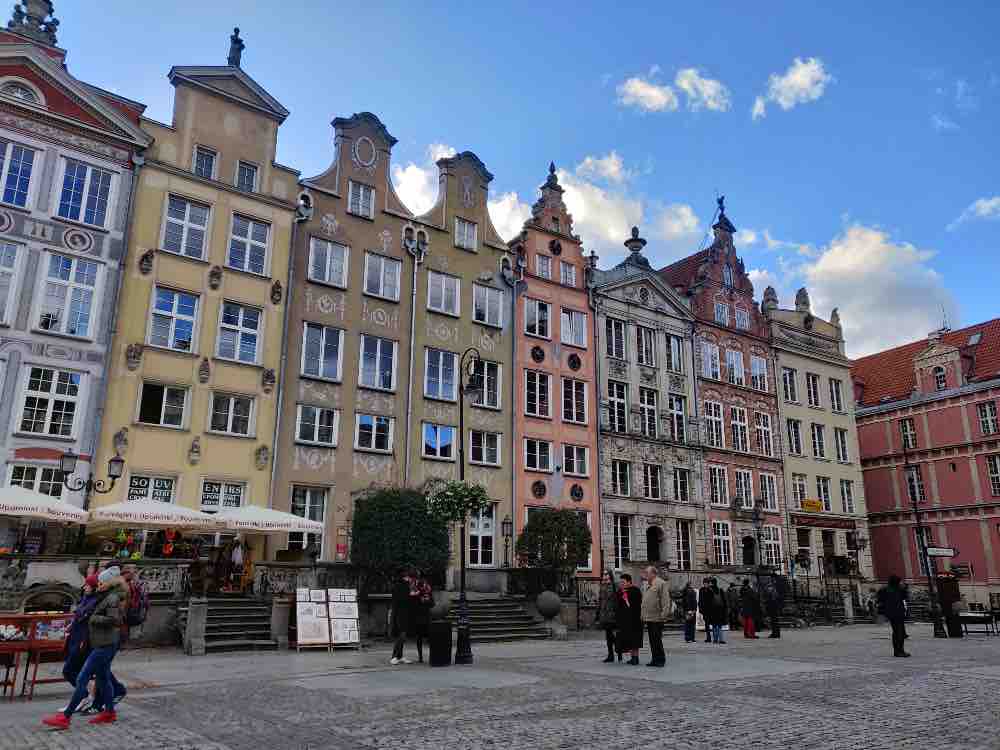
How to get to Gdansk?
Trains : The best way to travel in Poland is through trains.
The country has good connectivity through different types of trains, which are also the cheapest way to travel within the country.
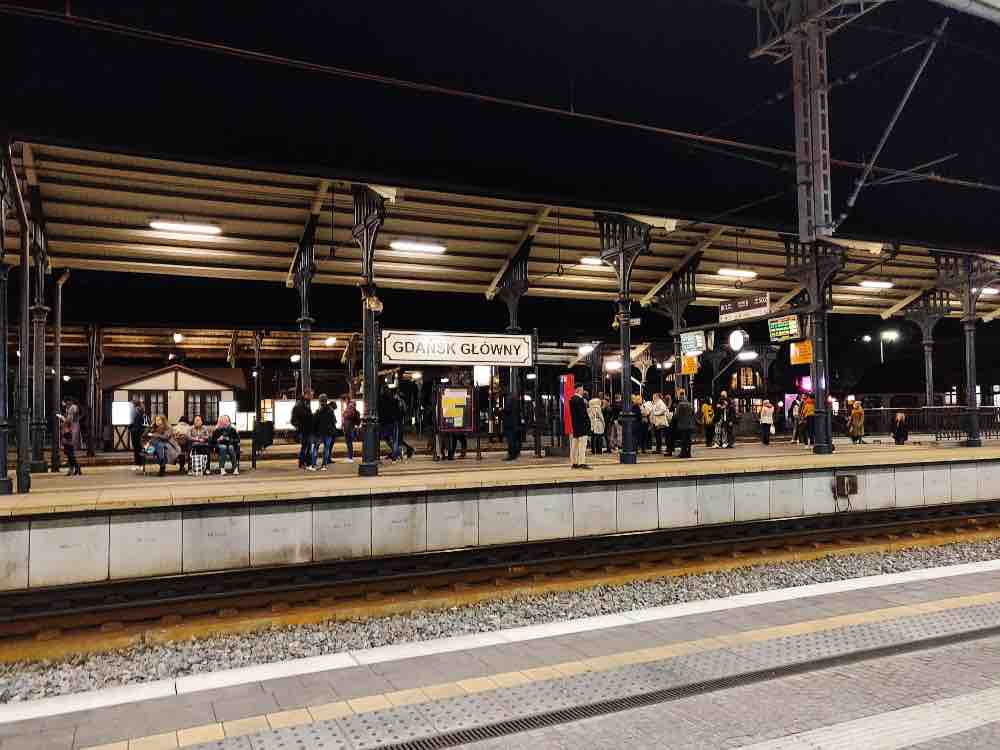
You can book the train tickets on this website .
There are four types of trains – EIP, EIC, IC and TLK, with TLK being the cheapest and also the slowest among all.
Sometimes, they do offer promotional tickets or highly discounted tickets, which are easier to get if you buy directly from the ticket office.
So if you find them online, do head to the ticket office right away to get the cheapest tickets(if you are unable to book online).
You can check for buses as well. There are a few private operators running buses between cities.
You can also fly any major city to Gdansk Airport.
The Lech Walesa Airport in Gdansk is located about 10 km. You can take the public bus to the city from there or the local train to Gdansk Glowny.
Getting around Gdansk
Public transport is very good in Gdansk and is a very convenient way to travel.
Wishing the Tricity of Sopot, Gdynia and Gdansk, you can travel using the SKM trains.
Trams connect the main areas in Gdansk including the old town and the railway station.
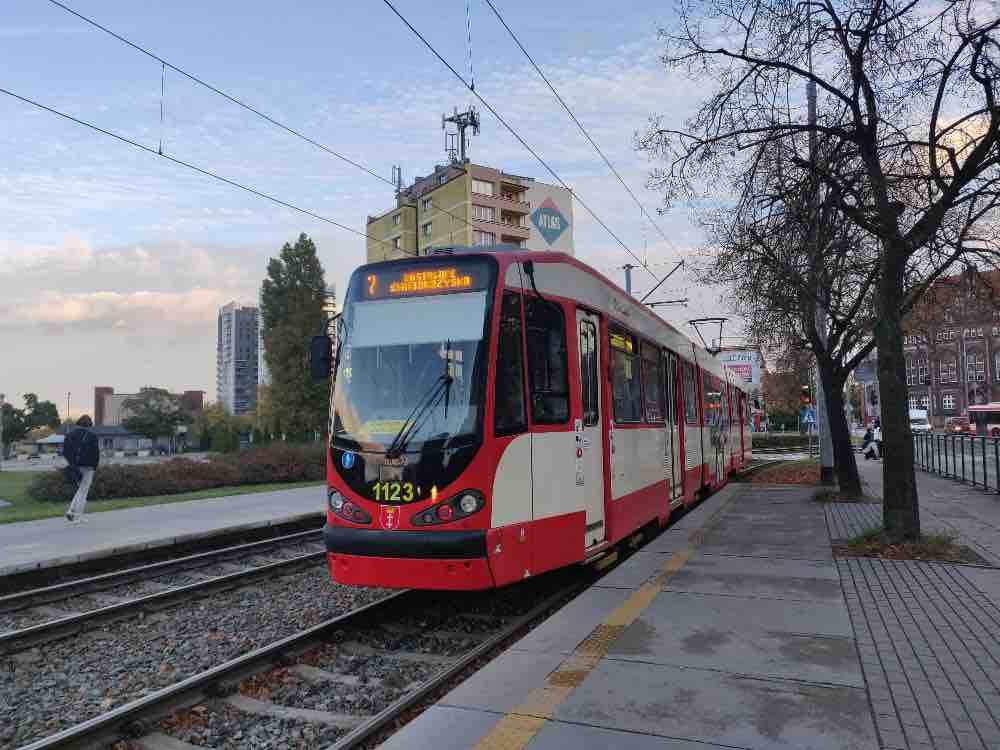
There is a 60-minute ticket at 3.20 PLN regular price, which can be used in trams and buses. A 24-hour ticket costs 13 PLN.
Tickets can be bought in kiosks and ticket offices, and you need to validate them in a small yellow machine in trams, buses and before you board the train on platforms.
Note that you can’t buy a ticket from the driver in trams.
There is Uber and local cabs ply as well, within as well as around the city.
Gdansk Travel Card
If you plan to visit Gdansk for a longer duration intending to move around covering many attractions, it’s ideal to buy Gdansk travel card by Gdansk tourism.
You can get them in the central stations or sometimes in big kiosks. Gdansk tourist card offers free/discounted entry to many museums, attractions and shops.
You can top it up with transportation ticket and travel freely all over Tricity using public transportation. The cards come with a validity of 24, 72 and 120 hours.
Where to stay in Gdansk?
Where to stay in Gdansk depends on how far or close you would like to stay from the centre and of course, the budget.
The central area is near the old town, and there are many hotels in Gdansk Old town.
There are some hostels and guesthouses around Gdansk Glowny Central, which is known as Centrum. Being a compact town, it shouldn’t matter much where you stay as the connectivity is good as well.
I stayed at Old Town Hostel, which was actually not in the old town but close to it. It was cheap and clean, with a kitchen that I used to cook something basic for myself.
So If you are looking for a budget hostel, I would recommend the Old Town Hostel .
Other good hostels in Gdansk old town are Midtown Hoste l , Elewator Gdańsk Hostel , La Guitarra Hostel, Hostel Universus i Apartament , Grand Hoste l , World Hostel , 4-friend Hostel , 5 Point Hostel and High Five Hostel
Some good mid-range hotels in Gdansk are Vintage Apartment in the heart of Gdansk old town, Motlawa Premium Apartment , Stare Miasto Gdansk , Awiator Modern 83, Apartment Adalbert Euro Apartment Piwna , and Seaside
And here are some hotels with excellent location and reviews that you can check if budget is of no constraint – Loft in Old Town Gdansk , Alpaca Apartment Old Town with Hall, Apartament Chleb I Wino , Apartment Spirit of Gdansk and Apartment Zuraw.
So if you are still reading this, it means that you’ll be planning your trip soon. Hope this guide helps you to enjoy Gdansk!
OTHER POSTS THAT YOU WOULD WANT TO CHECK OUT
Warsaw Travel Guide – Best Things to Do in Warsaw
Wroclaw Travel Guide – Best Things to do in Wroclaw
Malbork Castle – How to plan a day trip to Malbork Castle from Gdansk
Share the Love. Pin this post!

Note: This post contains affiliate links, and if you make any purchase, I would get a small sum without any extra cost to you.
Connect with me on Facebook , Twitter , and Instagram for travel stories.
Subscribe to My Blog Posts for Travel Inspiration, Tips, Travel Guides & Stories. No Spam!
- Recent Posts
- Your Ultimate Guide to the Best Things To Do in Krakow, Poland - April 12, 2024
- Exploring the Hidden Gems of European Ski Resorts - March 28, 2024
- 25 Beautiful Landmarks In Poland For Your Bucket List - March 16, 2024
Related Posts

Your Ultimate Guide to the Best Things To Do in Krakow, Poland
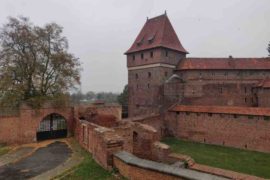
25 Beautiful Landmarks In Poland For Your Bucket List

The Complete 10 Days In Switzerland Itinerary For a Fantastic Trip
- SOLO TRAVEL
- ARUNACHAL PRADESH
- HIMACHAL PRADESH
- UTTARAKHAND
- THE PHILIPPINES
- UNITED STATES
- TRAVEL FACTS AND TRIVIA
- WORK WITH ME
Type above and press Enter to search. Press Esc to cancel.
Best Things To Do in Gdansk, Poland (2-Day Guide)
Gdansk in Poland is a colorful and romantic port town, nestled on the Baltic Sea coast, and it’s totally surprising! Much of the city was destroyed during WWII, but it came back stronger and better than before. Spend your days gazing at the pretty pastel-colored houses that line the wide cobblestone avenues, or get up high by climbing one of the many towers around town. There are many things to do in Gdansk so you can even extend your itinerary and see beautiful nature outside of the city too!
Day 1: Gdansk Old Town
Part of the charm of Gdansk is its small size. This means that the old town is easily walkable, as all the main sights are within touching distance of each other.
Here are all your hotel options in Gdansk.
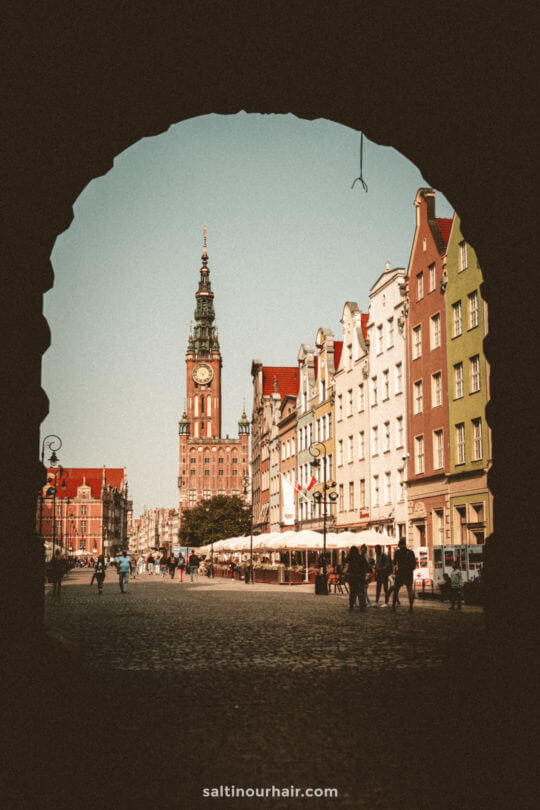
Piwna Street & St Mary’s Basilica
Start your day on the peaceful street of Piwna. Wander along the cobbled avenue, sip a coffee at the many cafes, and visit the cute souvenir shops. It’s the perfect place to sit outside one of the restaurants, people watching and admiring the beautiful architecture in summer. There’s plenty of places to try a typical ‘pierogi’ ( polish dumpling ) here too!
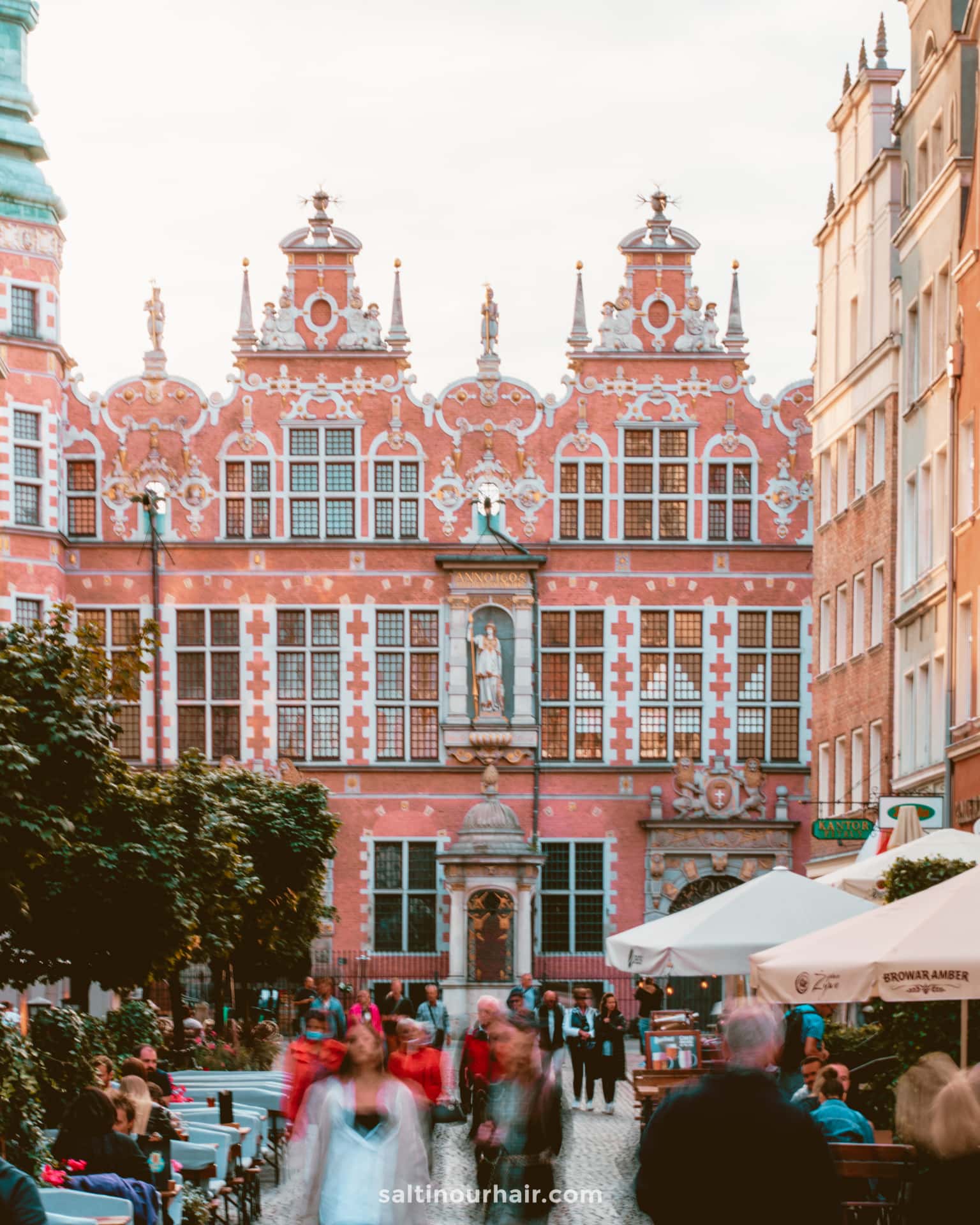
St Mary’s Basilica
The main attraction on Piwna Street is the St Mary’s Basilica: the largest brick church in the world! It’s so large, in fact, that it can fit up to 25,000 people inside.
Book this popular walking tour of Gdansk
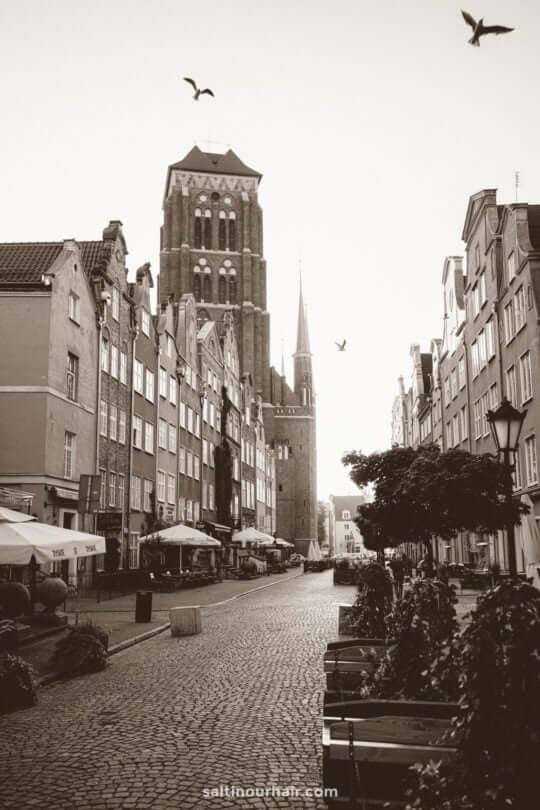
Visiting the inside is completely free, see the famous astronomical clock, and climb the 400+ steps to the top of the bell tower for one of the city’s best views!
Entrance fee: Visiting the tower costs 10 Polish Zloty. (2.5 USD)
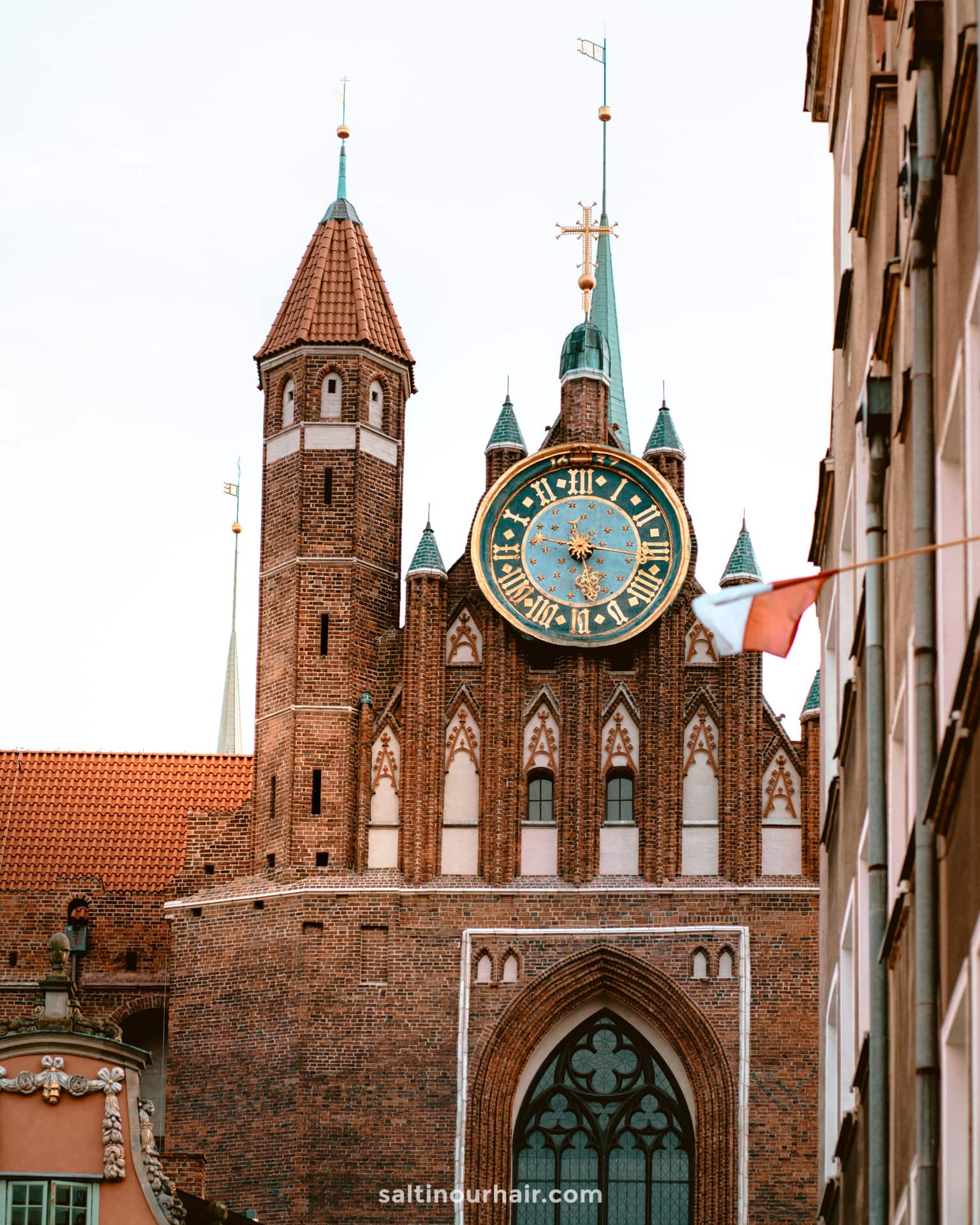
The Royal Chapel
Next head to the Royal Chapel, a gorgeous orange building with pistachio-colored window frames and detailing. Built in the late 1600s. Unfortunately, it is not open to the public.
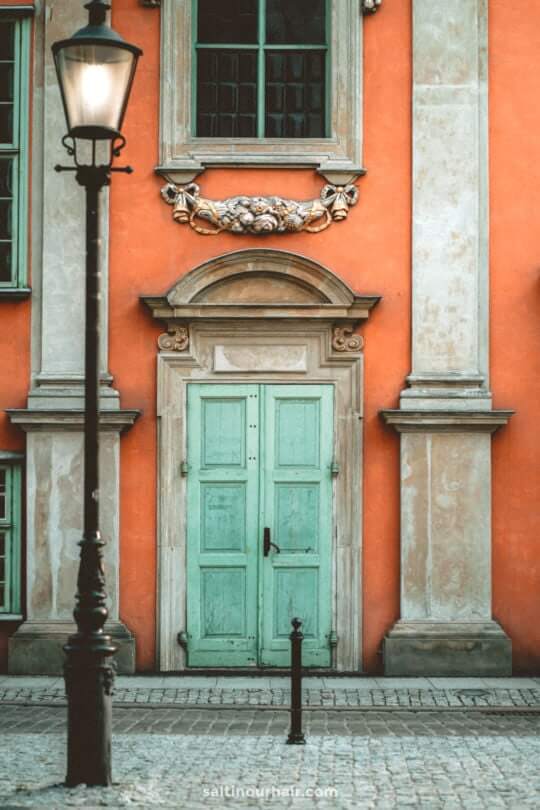
Four Quarters Fountain
Opposite the Royal Chapel is the Four Quarters Fountain. The fountain is a contemporary piece of street art created to show where the old four quarters of Gdansk once met. On a hot summer’s day, people are cooling down in the fountains of water!
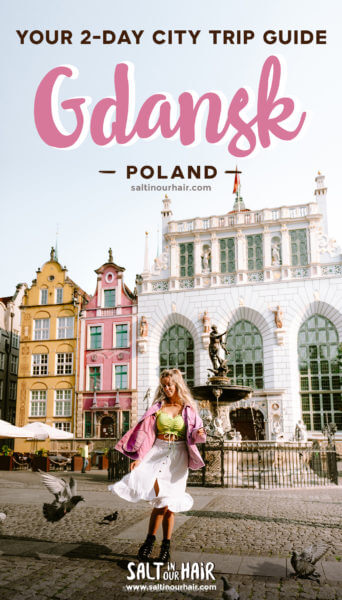
Mariacka Street
Gdansk has been a mining center for amber for hundreds of years, a product used to make jewelry, art, and sculpture. Mariacka Street is a hub of jewelry shops and art galleries.
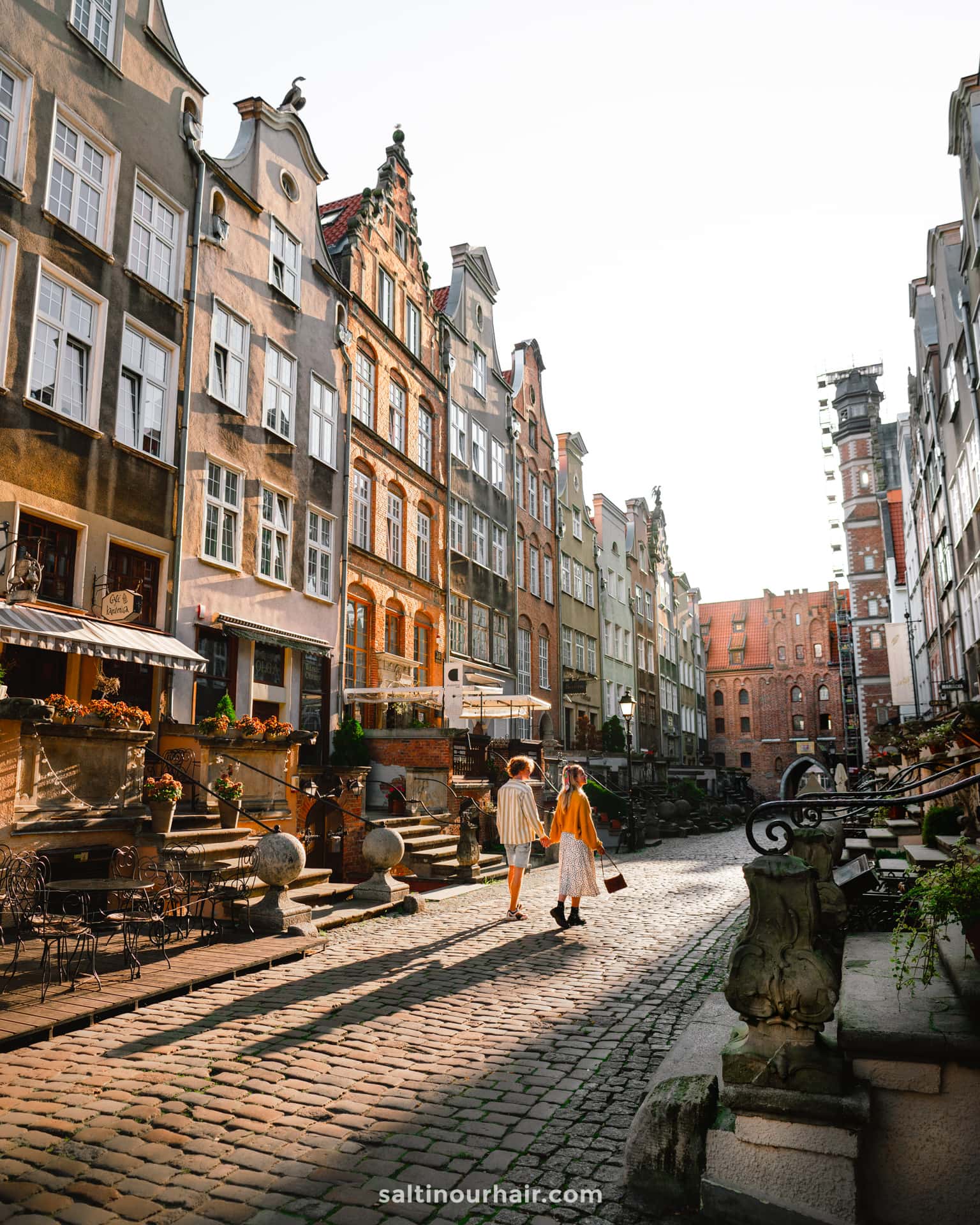
Mariacka Street was almost completely destroyed during WWII and has been restored to its former glory. Thus, the architecture is stunning and has some unique features, such as the ornate gargoyles found on many of the rain gutters.
Tip: Stop for a coffee & cake break at the cool and contemporary Drukarnia Cafe.
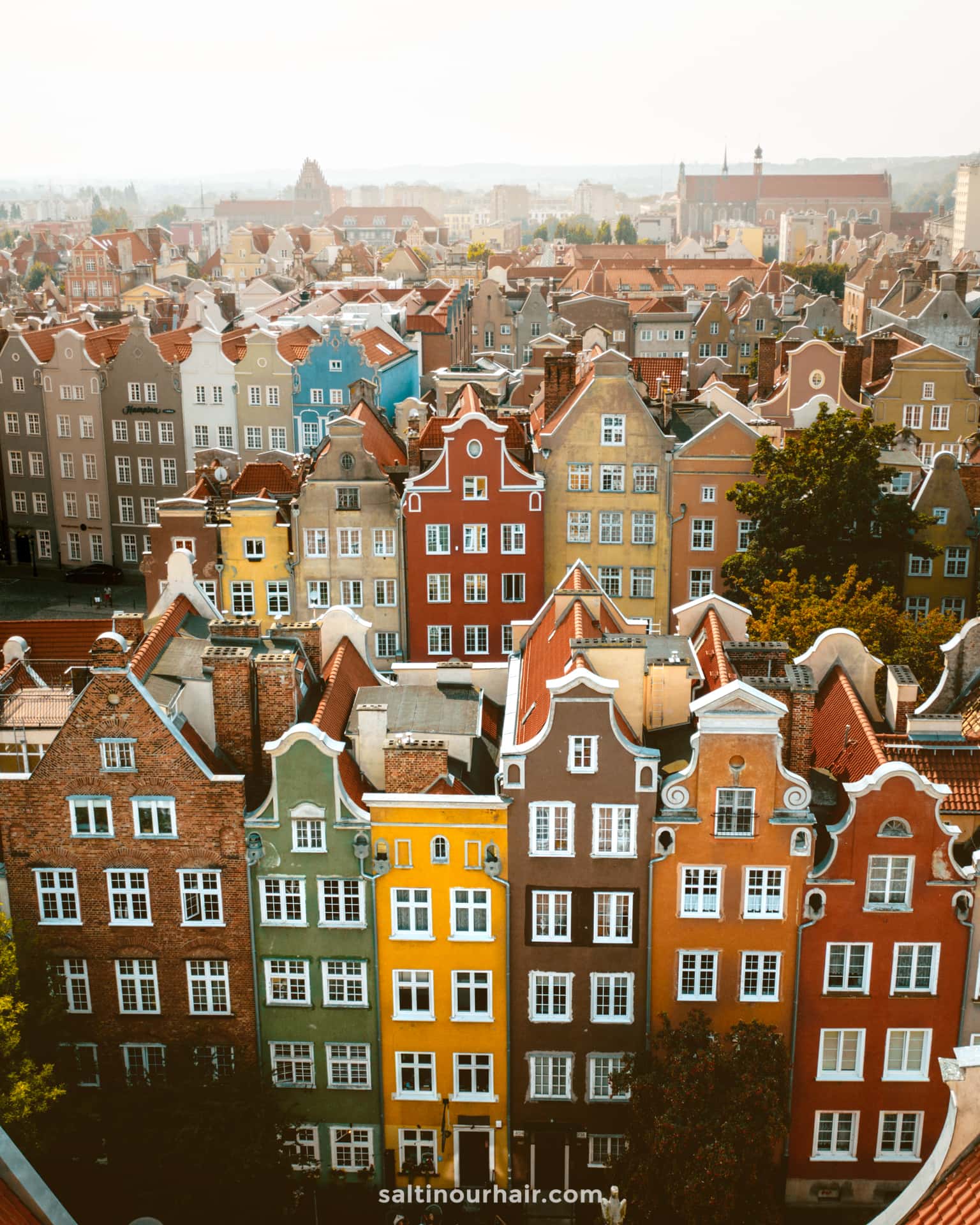
Dluga Street & Dlugi Targ
Gdansk’s main street, named Dluga Street, runs through rows of beautiful, colored townhouses and is alive with the buzz of street artists and musicians. The lively street is the very heart of the city and is an absolute must-see while in Gdansk.
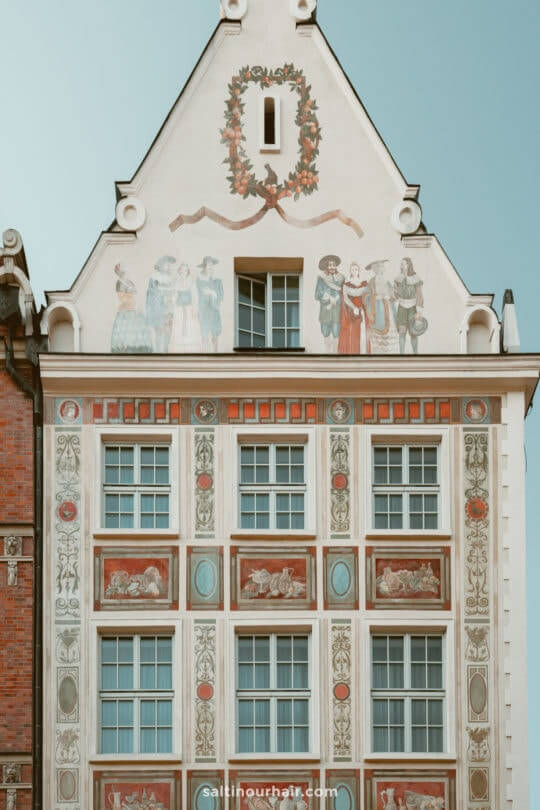
Check out the grand houses, gold gilding, and stunning paintwork, with the Uphagen House as the absolute eye-catcher. This was an 18th-century merchant’s house reconstructed after the war and is now part of the main Gdansk City Museum.
Also visit: Charming Krakow in Poland
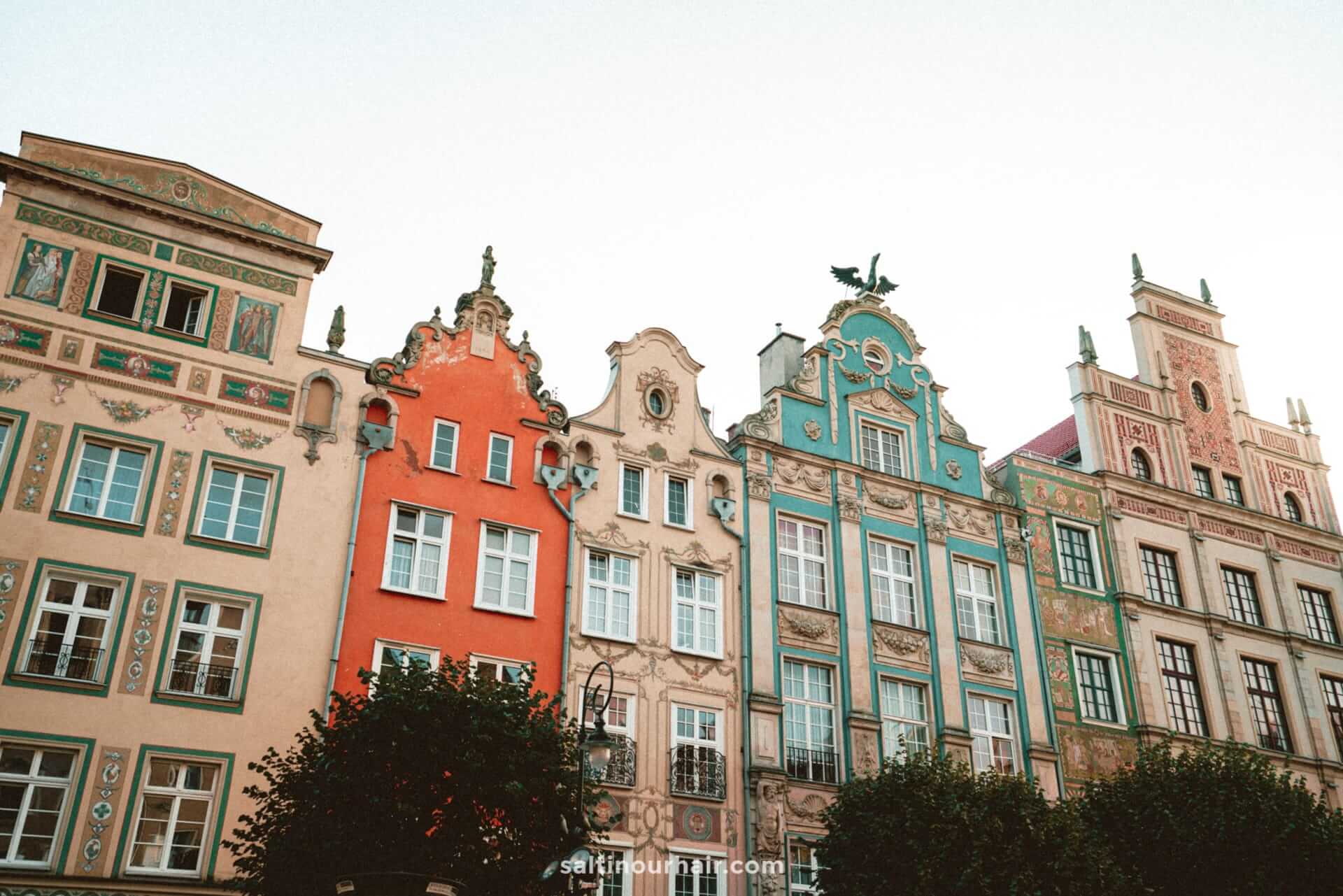
Dlugi Targ Street
Continue to walk along Dluga Street until it runs into Dlugi Targ Street (the Long Market). This is the street where the main market of the city once was. It is quite busy and touristy, but it is still worth walking along to admire the beautiful architecture.
Hotels in Gdansk 😴
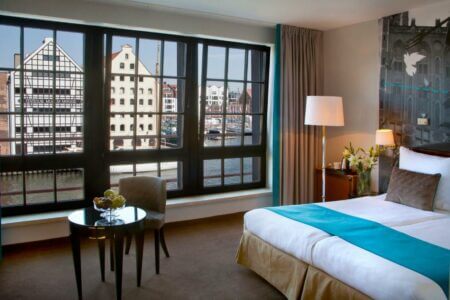
Green Gate & Green Bridge
At the end of Dlugi Targ, pass through the Green Gate before crossing the Green Bridge over the river. The Green Gate is particularly impressive with its four huge stone passageways.
Make sure to visit: The painted village Zalipie in Poland
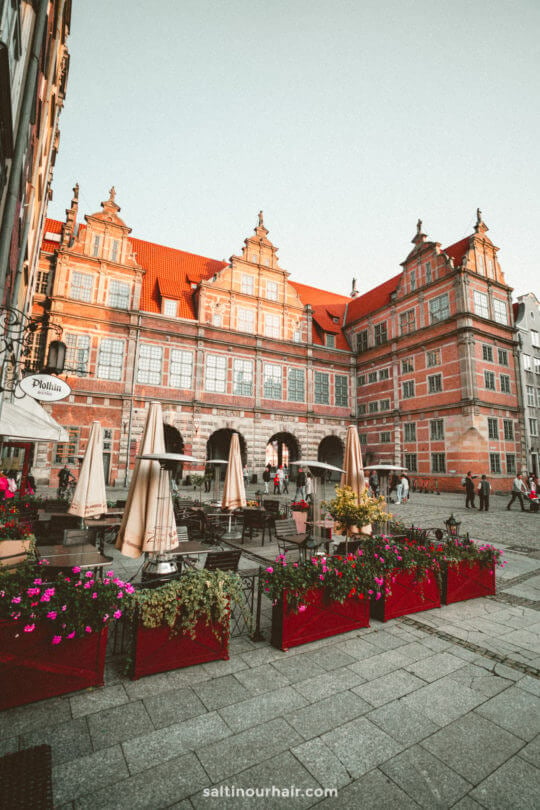
Neptune’s Fountain in Gdansk
At the beginning of Dlugi Targ, after coming off Dluga Street, is the most iconic statue in Gdansk: ‘Neptune, the God of the Sea’. The bronze statue is iconic to the city and is popular among visitors. If you are visiting during Christmas, this is also the spot for the huge Christmas tree with twinkling lights.
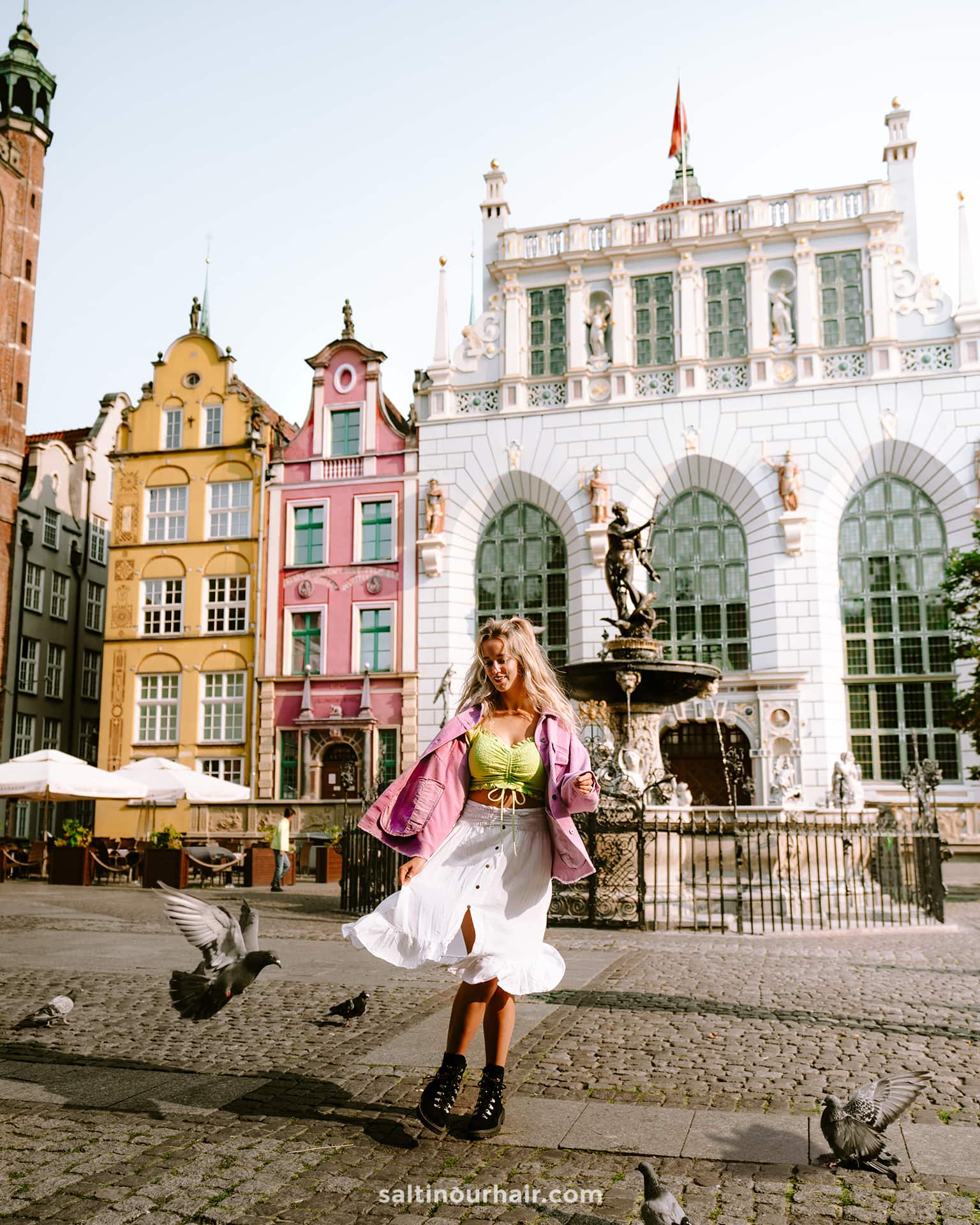
Artus Court
The fountain sits in front of Artus Court, a beautiful building which is now part of the Gdansk History Museum. Its white brick facade sits beautifully between the vibrant pinks, yellows, and oranges of the surrounding mansions, making it a great setting for photographers.
Tip: Next to the Neptune Fountain is the main town hall, with its gothic green spire. You can climb to the top of the tower for awesome views across the city. This is a really worthwhile climb to look down on the colored townhouses lined up in neat rows below.
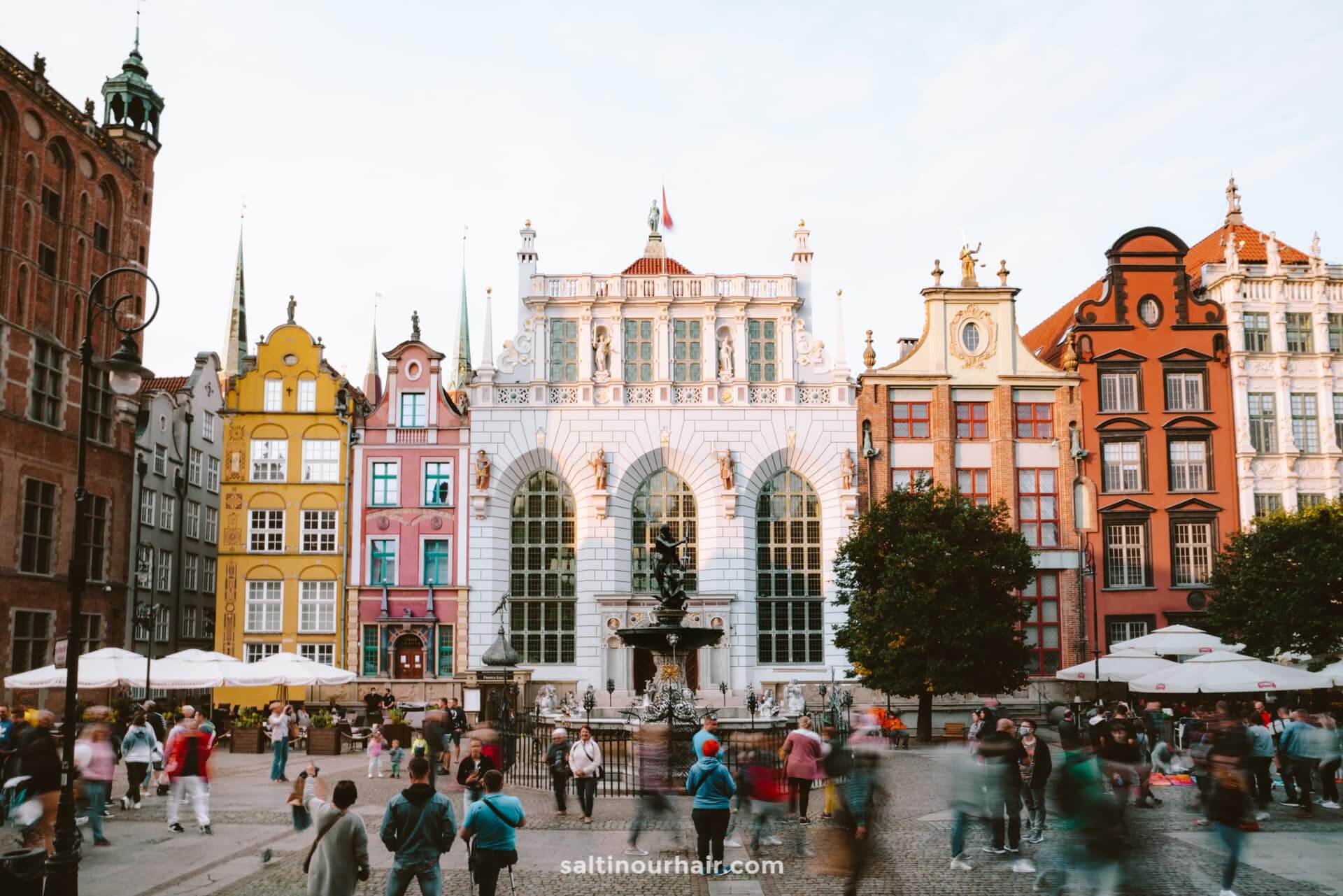
Motlowa River & The Holy Spirit Bridge
The Motlowa River runs through Gdansk and out to the Baltic Sea. The lovely promenade along the river has many incredible restaurants. It’s a lively place with many boats and ‘pirate’ ships coming in. It’s even possible to do a history tour by kayak along the river, which is a great way of viewing the buildings from a different vantage point.
See tickets and availability for a kayak tour of Gdansk
The interesting new footbridge (2016) lights up at night and twists and rotates when it opens or closes for passing boats. It’s located HERE .
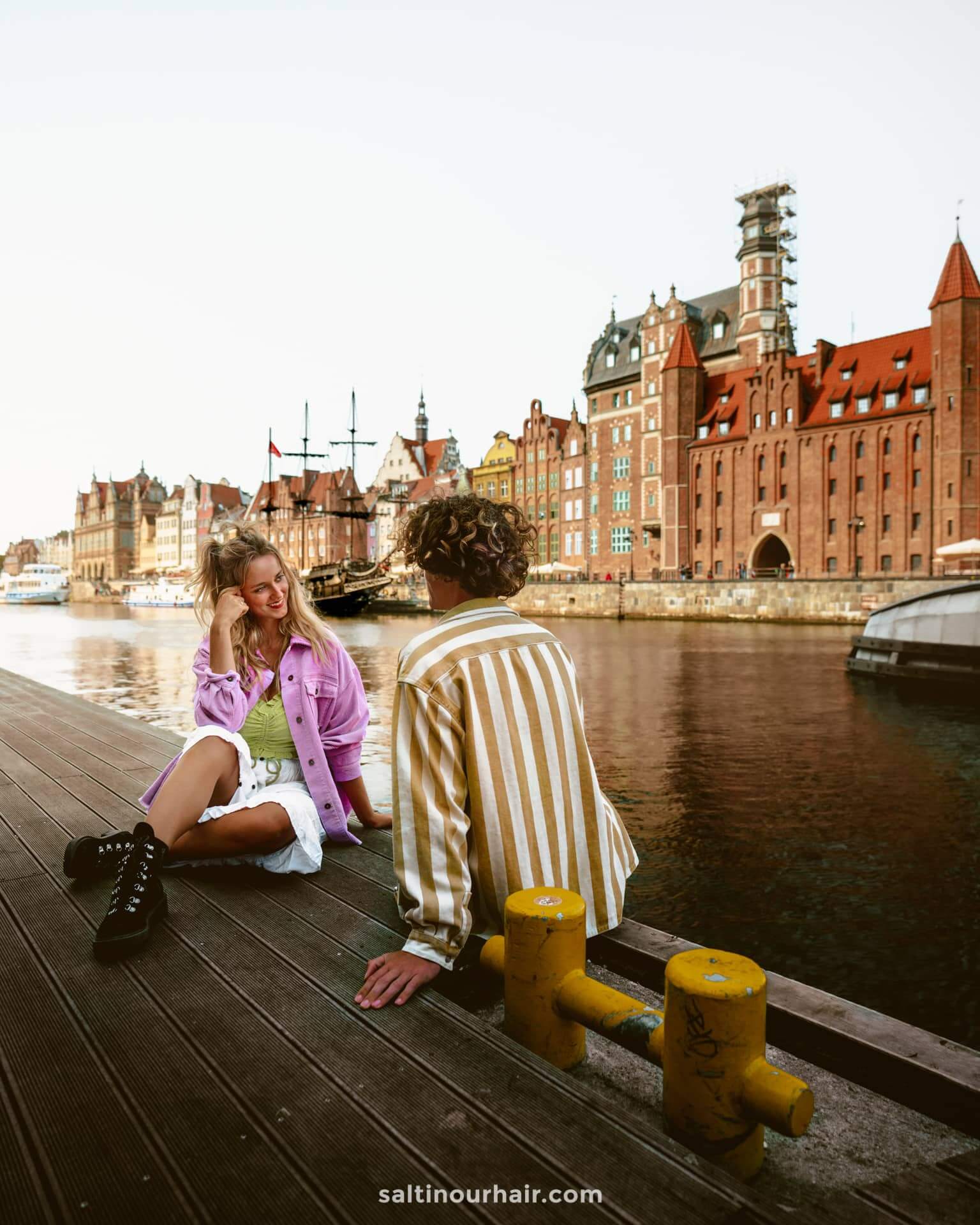
The Crane, Gdansk (Zuraw)
Another iconic symbol of Gdansk is the Crane. This building was once a port crane, used to remove cargo from ships. During the war, like many other buildings in Gdansk, it was destroyed. However, it was later returned to its former glory in the 1950s and now houses the National Maritime Museum of Gdansk.
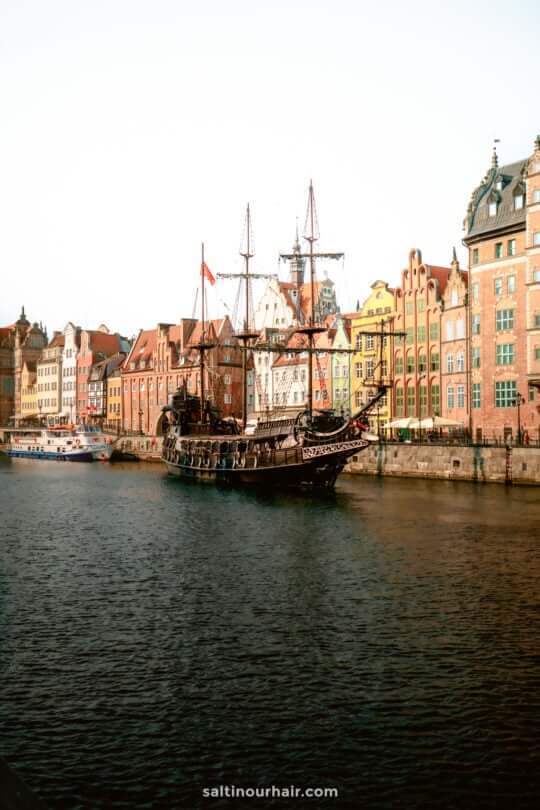
Hungry? Grab something to eat at ‘Ostro’, a delicious wood-fired pizza restaurant nearby. Another great alternative, especially for vegetarians, is the amazing asian inspired ‘Manna 68’, located on Swietego Ducha Street.
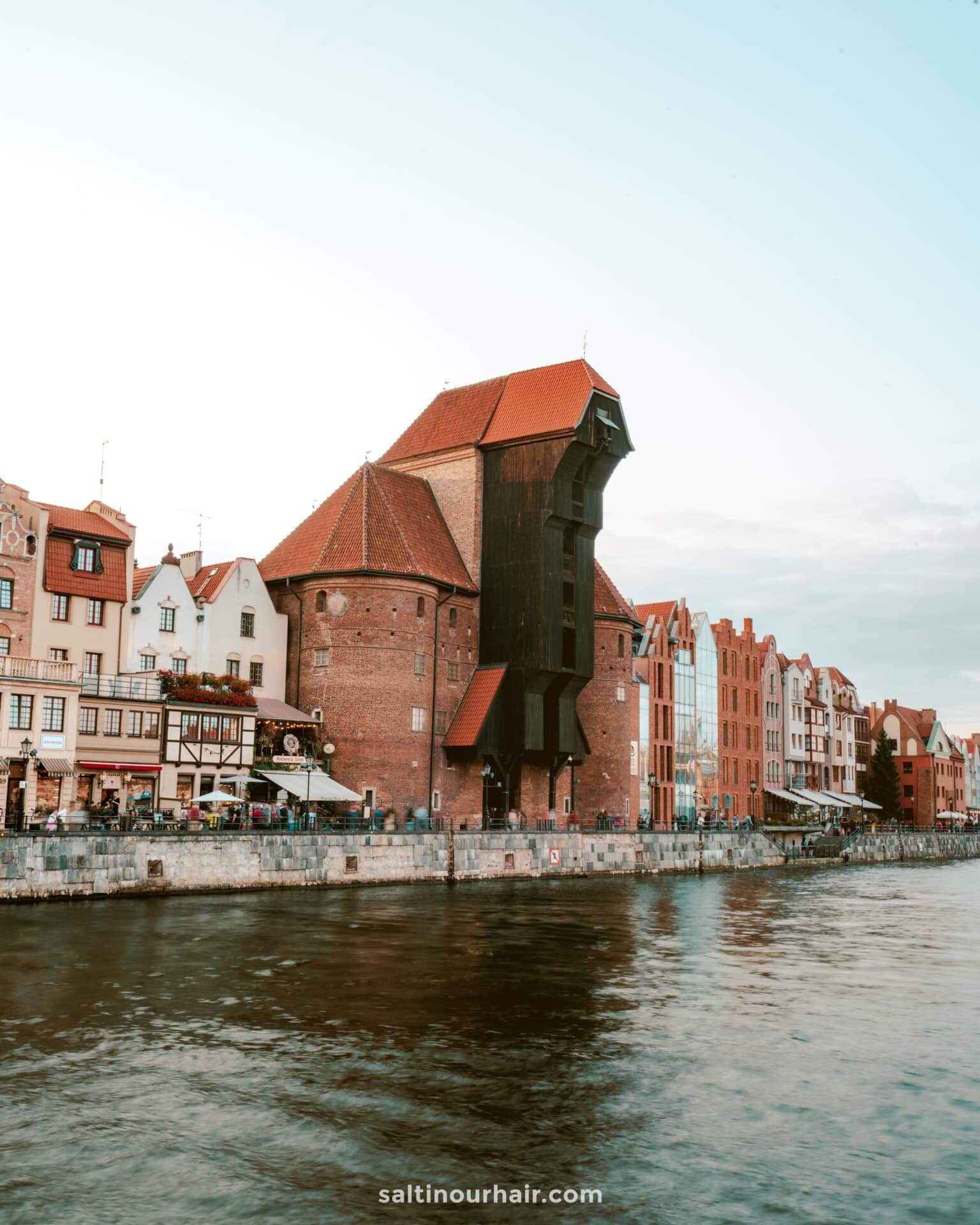
Wielki Młyn (Great Mill)
A 10-minute walk from the Crane is the Great Mill. It’s currently closed for renovations so it’s not possible to visit inside, but its sheer size is extraordinary to see if you’re nearby.
Also see: The windmills of Zaanse Schans, Netherlands
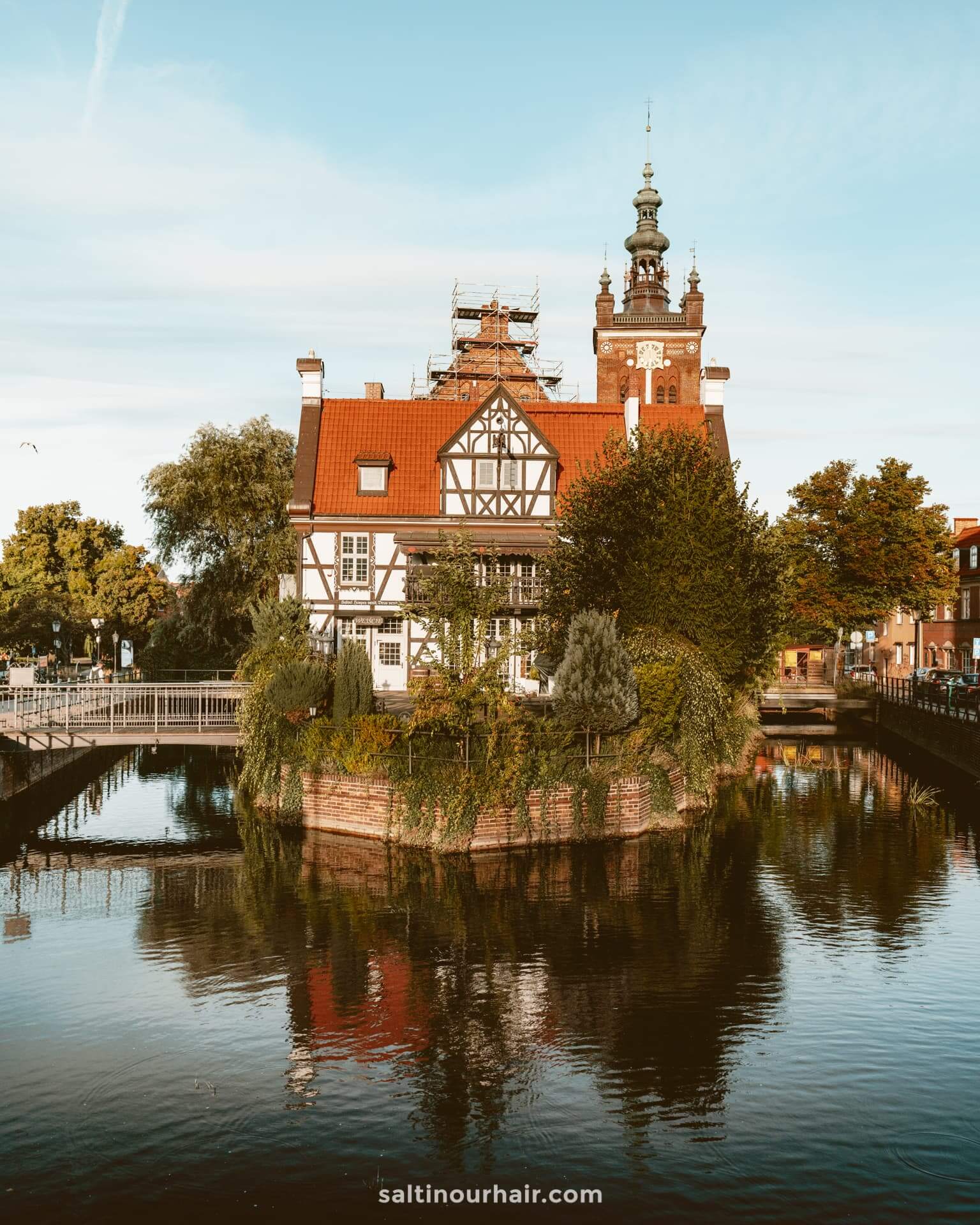
Day 2: Outside Gdansk
Jump in your car, a bus/tram, or on a water ferry, and head out towards the Baltic coast for all of day two’s activities.
Westerplatte
First, make a stop at the phenomenal memorial of Westerplatte, located on a peninsula off the Baltic Sea. This was where the first battle of WWII took place. Now an impressive stone column stands here as a memorial to the soldiers who died. Here’s an in-depth tour to learn even more about the history.
Via public transport : Bus 106 or in the summer there is the option of taking the F5 water tram.
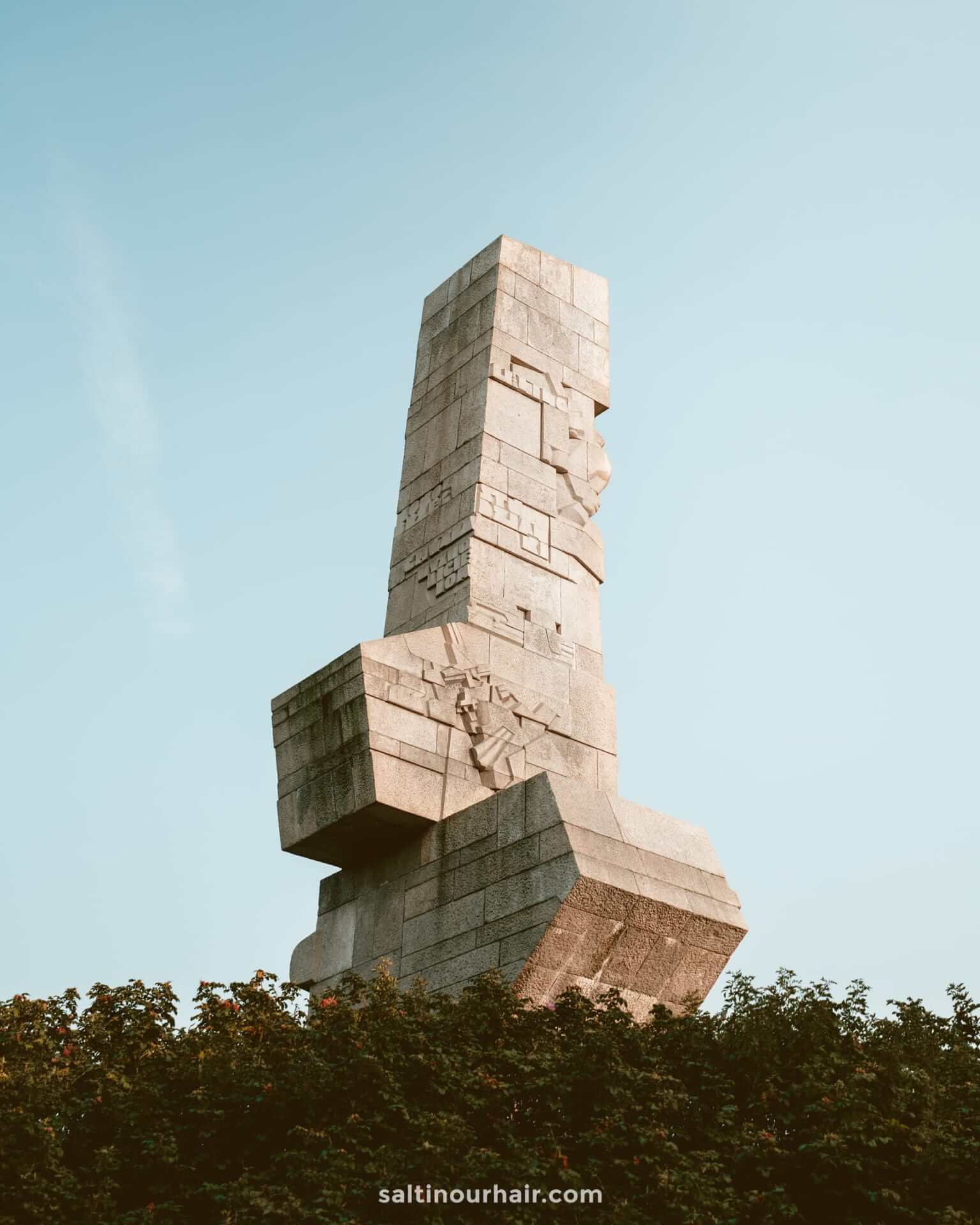
Vistula Mouth Fortress (Wisloujscie Fortress)
On your way back from Westerplatte, further inland, visit this circular fortress. From above, the circular building sits on top of a star-shaped green bank, surrounded by a moat. The shapes and symmetry of this incredible building are a must-see and a surprising find in Gdansk.
Get there: Driving, bus 106, or in the summer via the F5 water tram.
Tickets: Visiting the exterior is free but tickets are required to visit some of the interior rooms or towers.
Kepa Redlowska
Don’t miss out on a trip out a little further along the coast to Kepa Redlowska, an incredible nature reserve. This area is beyond surprising; you truly won’t believe you’re in Poland!
Discover more in our: 2-week travel guide through Poland
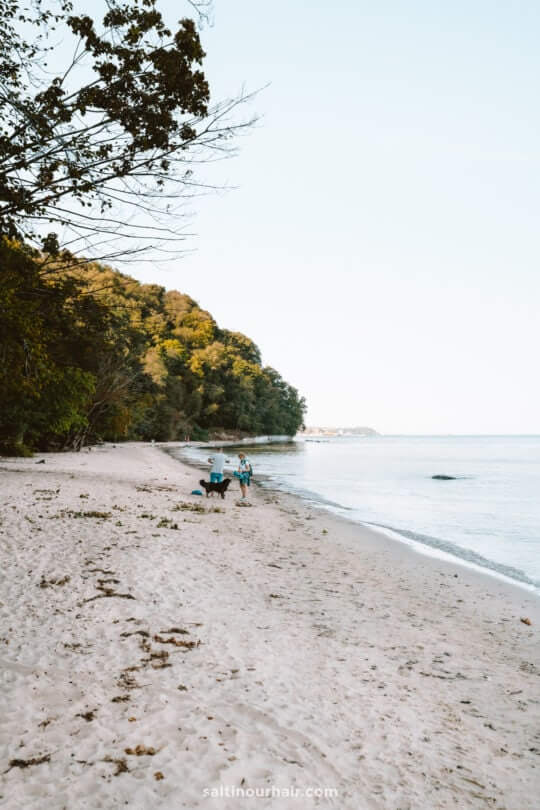
Discover stunning white beaches with crystal clear water that gives it an almost Mediterranean feel, apart from the colder water ;-) ! Walk on one of several nature trails alongside white cliffs and lush green forest and enjoy this slice of Polish wilderness.
Via public transport : Take the train + a short walk. Use Google maps for the exact timing.
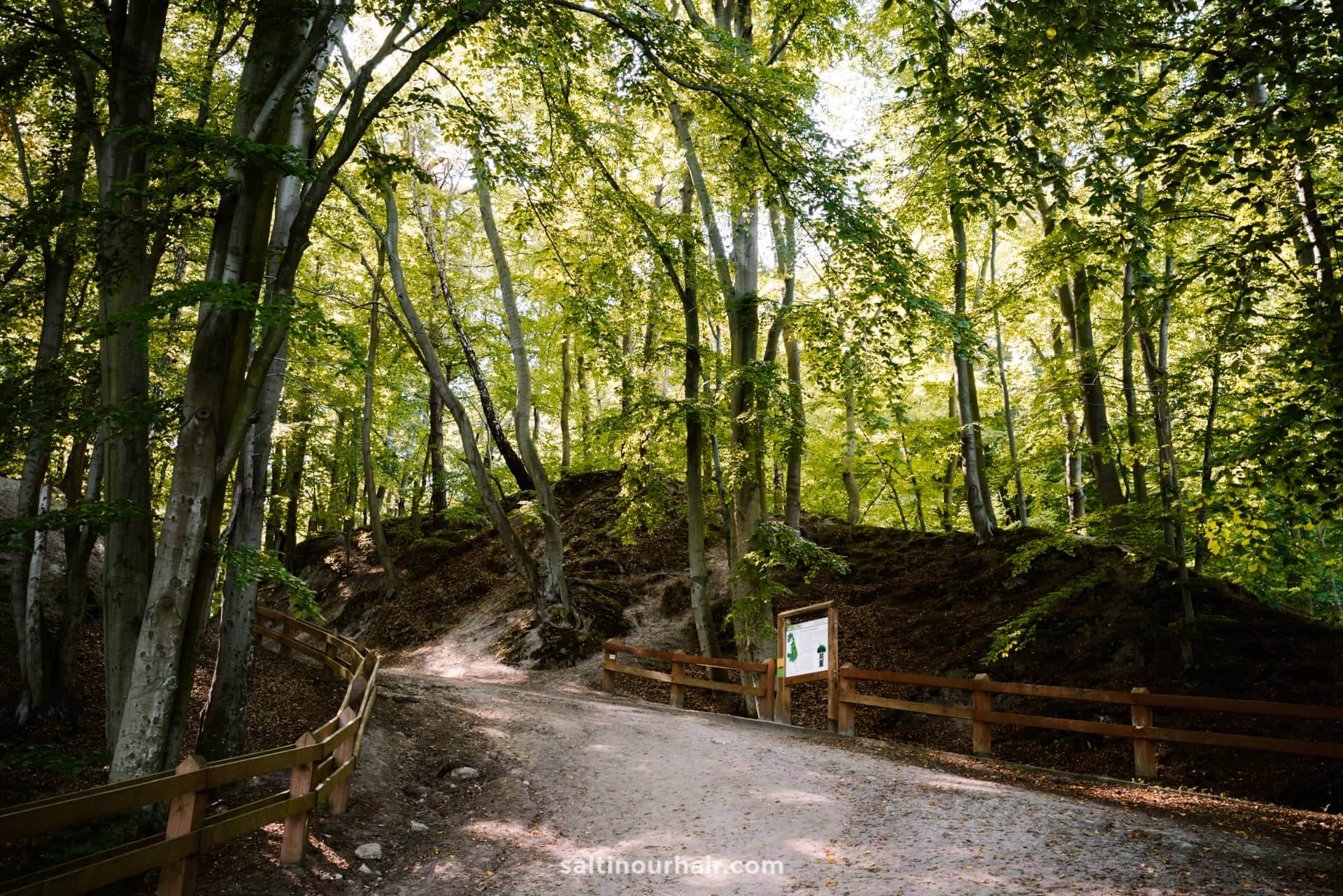
Just 20 minutes from Gdansk is the small seaside city of Sopot. It is known for its beach and great sunset at the pier. Don’t miss out on visiting the weird and wonderful ‘crooked house’ on Monte Cassino Street; a warped, twisted building like the one in Prague !
Visit Sopot on a private tour from Gdansk
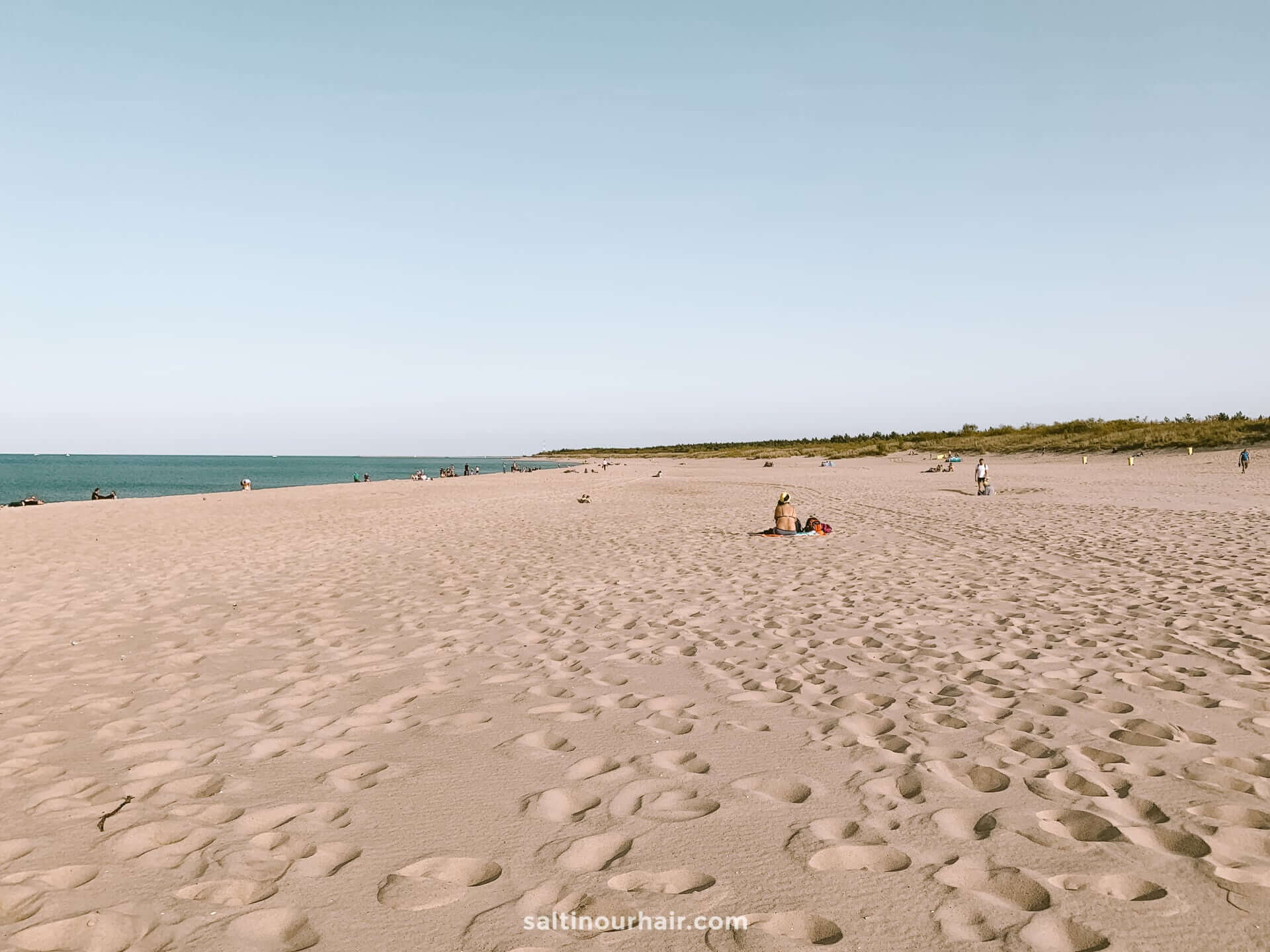
Restaurants in Gdansk
Gdansk has a great selection of restaurants. These were our favorite places to eat:
- Ostro (Italian)
- Guga Sweet & Spicy (Vegan)
- Familia Bistro Garbary
- Machina Eats and Beats
Getting To & Around Gdansk
Gdansk has its own international airport, so it’s possible to fly directly into the city from other European destinations . If you are coming from Krakow or Warsaw , there is also the option of taking the train. This can be done in roughly 7 hours from Krakow or a shorter 3-hour journey from Warsaw. The best option, for both nature and the city, is to travel by car on a Poland road trip itinerary .
We recommend to rent a car in Poland through Sunny Cars with free cancellation and insurance included. Book your rental car here .
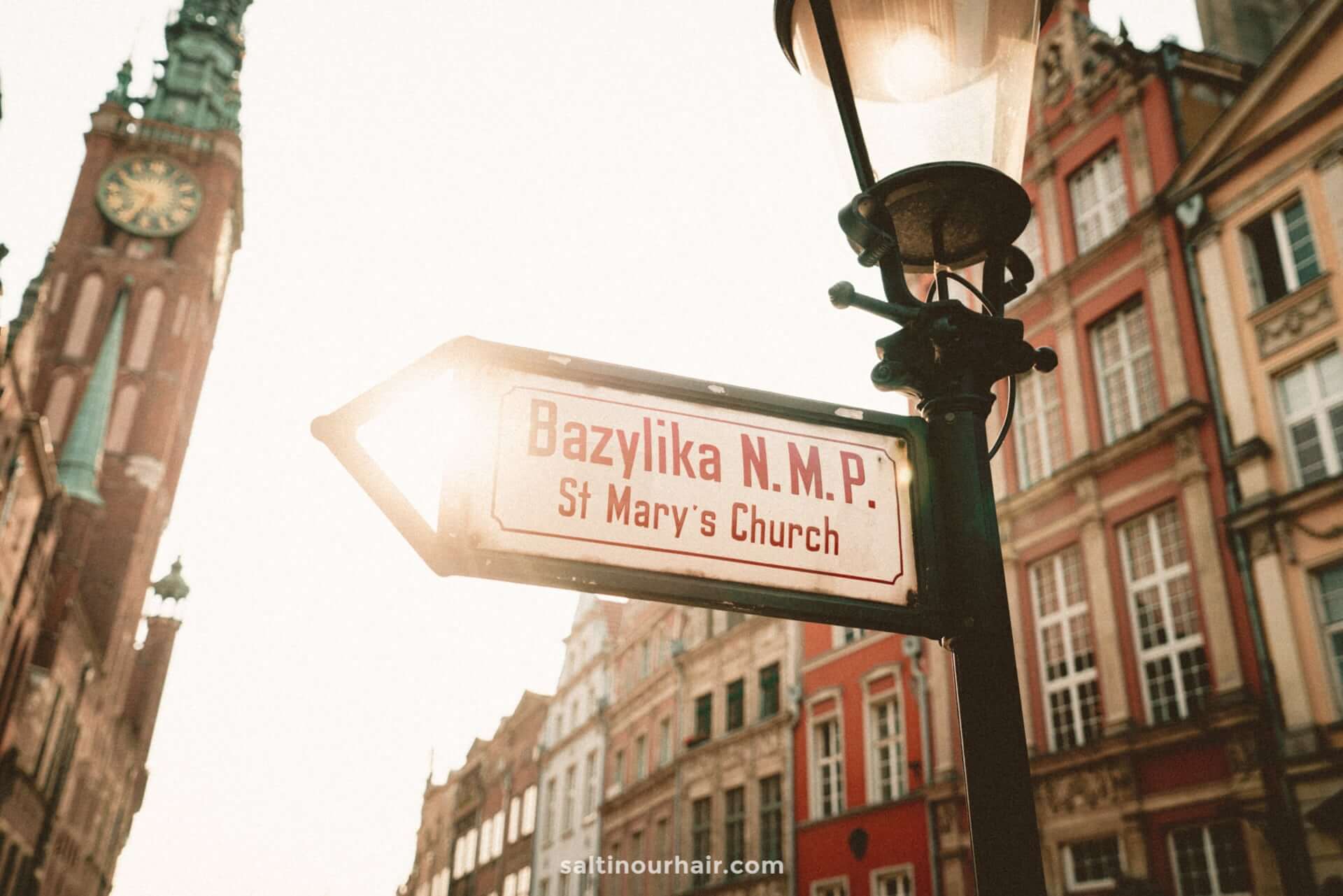
Getting Around
All the best things come in small packages, and Gdansk is no exception. The city is small and perfectly formed so that you can see all the main sights within a 30-minute walk. If you’re wishing to venture further outside the city, there are good public transport options.
Alternatively visit cities like Sopot and Gydnia on a private day tour from Gdansk.
Where to Stay in Gdansk
Stay anywhere inside the old town to soak up the charming atmosphere of the historical city and be close to all the top things to do in Gdansk.
We stayed at Hotel Hanza , a contemporary hotel located right on the waterfront, right next to the iconic ‘Crane’ building. This is a good option for a nice outlook over the harbor.
By purchasing through our links, you support us at no additional cost. Thank you for your support. ♥️
- Find Hotels via Booking.com
- Find a Rental Car via Sunny Cars
- Find Flights to Poland via Skyscanner
- Get a Travel Insurance via Heymondo
- Book Tours & Attractions via GetYourGuide
- Book a Bus/Train/Transfer via 12Go
12 Best Things To Do in Krakow, Poland
9 best things to do in wroclaw, poland, how to visit auschwitz concentration camp in poland.
Looking for more travel information? Plan a chat with us for personalised travel advice or get an answer from the Salt in our Hair Travel Community on Facebook.
Your email address will not be published. Required fields are marked *
Notify me when new comments are added.
Używasz przestarzałej przeglądarki. Prosimy zaktualizuj ją aby zwiększyć przyjemność z przeglądania strony i bezpieczeństwo.
- Tourist Card
Quick Contact
- Uczniowska 22, 80-530 Gdańsk
- +48 58 305 70 80
- +48 516 060 459
- [email protected]
GDAŃSK Authentically.
Top attractions.
Be inspired by a list of unique and charming places, which you just must see during your visit
Historical places
Gdansk is city with unique history. It’s influence still perceptible today.
Amazing nature
Active in gdansk, gdansk with a bicycle, active by the water, tastes of gdansk, check out what you gain with a tourist card, free entries.
Check out with Gdansk’s attractions can you see free of cost with a Tourist Card
Discounts for activities
Discover the city from water perspective renting a kayak or a SUP. With a Tourist Card you get 20% discount
Discounts at restaurants
Use to Card to get discounts at chosen restaurants.
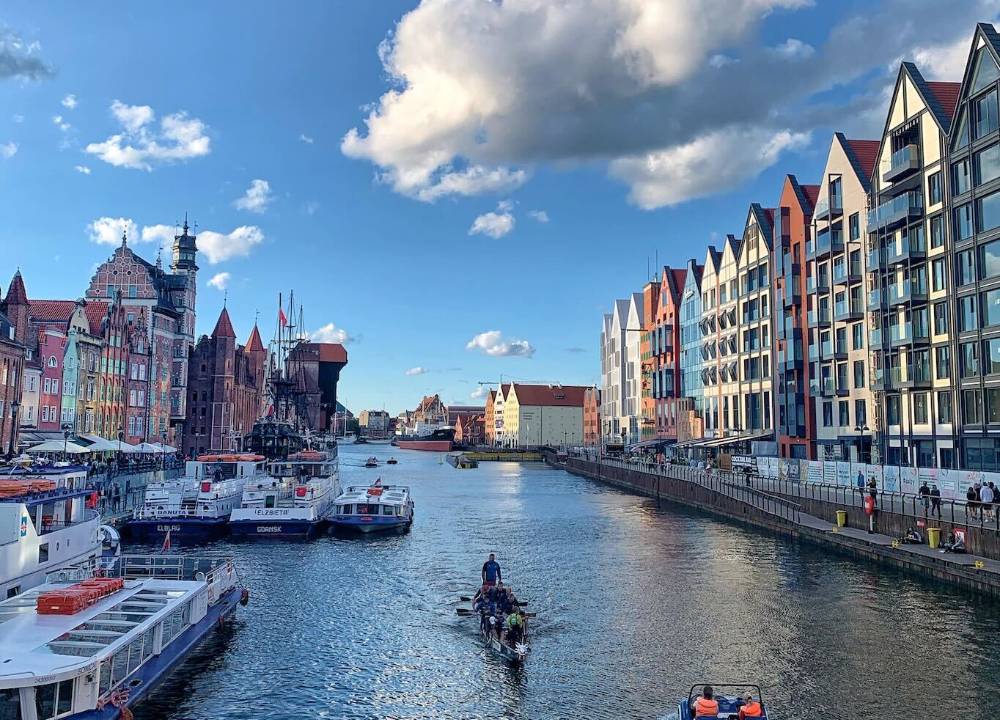
Business tourism

Home » Travel Guides » Poland » 15 Best Things to Do in Gdańsk (Poland)
15 Best Things to Do in Gdańsk (Poland)
Poland’s largest port flourished during Medieval times as a merchant city trading Baltic amber. In the 20th century events took place in Gdańsk that would affect the course of world history.
On 1 September 1939 the Wehrmacht launched their Invasion of Poland at the Westerplatte peninsula north of the city. And just over four decades later in 1980 Lech Wałęsa would found Solidarity.
As the Soviet Bloc’s first independent trade union, Solidarity would eventually lead to an end to communist rule in 1989. Both the war and Solidarity are remembered with world-class museums. Gdańsk’s Old Town, rebuilt after the Second World War, is a trelliswork of streets skirted by tall patrician and merchant tenements, while hulking gates defend the landward and water-side entrances.
Let’s explore the best things to do in Gdańsk :
1. Trakt Królewski (Royal Way)

To cut to Gdańsk’s core and see a host of top monuments in one walk, take this horizontal route east towards Motlawa River between two city gates.
Along Ulica Długa (Long Street) and then Długi Targ (Long Market), the Royal Way first got its royal designation in 1457 when King of Poland Casimir IV Jagiellon entered Gdańsk.
Starting in the west at the Upper Gate and finishing at the Green Gate, the way is flanked by tall, narrow patrician tenements painted in jaunty colours and capped with gables.
There are way more attractions and noteworthy sights on Trakt Królewski than we could cram into one paragraph.
But at Długi Targ 44 do stop for a photo of the Artus Court, a Renaissance meeting place and stock exchange, now a branch of Gdańsk’s Historical Museum.
Suggested tour : Gdansk Royal Route Private Walking Tour
2. St Mary’s Church

This humungous Gothic church was started in the 14th century and, with a volume of up to 190,000 cubic metres, is counted among the three largest brick-built churches in the world.
Standing in the 66-metre-long nave you’ll need to take a moment just to wrap your head around the dimensions of this epic building that can hold 25,000 worshippers.
A major reconstruction was needed after the Second World War, but all of its valuable fittings were saved.
You can peruse treasures like an astronomical clock from the 1460s, the high altar raised in the 1510s and a marvellous Gothic stone pietà carved at the start of the 15th century.
If you’re up for climbing nearly 400 steps you can battle your way to the top of the monolithic 77.6-metre main tower.
3. Neptune’s Fountain

On Long Market, a few steps from the Artus Court is an enduring symbol for Gdańsk.
Neptune’s Fountain is a Mannerist monument cast in bronze in the city in 1615, but wouldn’t be installed for another 18 years.
The sculptor was Abraham van den Blocke, originally from what is now Kaliningrad, but with Flemish parents.
Located by the palatial townhouses where Poland’s royalty would stay in Gdańsk, the fountain’s sculpture shows Neptune bowing his head slightly as a sign of deference.
On the basin beneath him are ornamental fish and cherubs.
And if you’re wondering, the fig leaf on his private parts wasn’t in the original design, but was added in a restoration in 1988.
Recommended tour : Gdańsk Private Walking Tour: Legends and Facts
4. Golden House

Staying on the Long Market, two doors to the right of the Artus Court is a building often lauded as the most beautiful in the city.
It’s not easy to disagree when you glimpse the white and gold facade.
With Mannerist architecture, the Golden House was made for Jan Speyman, mayor of Gdańsk at the start of the 17th century.
Designed by Abraham van den Blocke once more, the house has Gdańsk’s signature narrowness and height.
But where it stands out is for its sculpted friezes, 16 busts on its pilasters representing the Polish kings and the statues atop its balustrade for Achilles, Antigone, Cleopatra and Oedipus.
5. Main Town Hall

The Main Town Hall was drawn up by a team of Dutch architects in the middle of the 16th century.
You’ll have to crane your head back to see him, but there’s a life-sized gilded statue of Sigismund II Augustus, the king of the period, on the pinnacle 83 metres above street level.
The interior is also managed by the Historical Museum and has sumptuous state rooms in the Dutch Mannerist style.
The Small Council Hall, Great Council Chamber, White Hall and Winter Hall have gilded stucco, coffered ceilings, marble floors, frescoes, sculptures and tapestries . You can head to the observation gallery for a vertical view of the city and hear the 37-bell carillon chime on the hour.
6. Ulica Mariacka (St Mary’s Street)

Beginning at St Mary’s Church and continuing east towards the Motlawa River and St Mary’s Gate, Ulica Mariacka is a delightful cobblestone street edged by narrow merchants’ houses with regal portals.
You can understand why this street is often used as a shooting location for period movies, and like a lot of Gdańsk it had to be pieced back together after taking extensive damage in the Second World War.
All of the entrances to these houses are on little terraces a few steps up from the street itself, and the restaurants that line the way have tables in these cute spaces, often with ornamental reliefs on their low walls.
7. Gdańsk Crane

An emblem for the city, the Gdańsk Crane on Motlawa’s Long Embankment dates back to the 14th century.
This piece of machinery harks back to the time when Gdańsk was in the Hanseatic League, and could load or unload four tons of cargo, lifting it to a height of 11 metres.
The power came from humans, as groups of men would walk inside two large wooden wheels as if they were hamsters.
The crane doubled as a waterside city gate and was in use up to the 1800s.
Now maintained by the National Maritime Museum, you can go in to see the wheels and an exhibition about work and daily life in the port from the 1500s to the 1700s.
8. Dlugie Pobrzeze (Long Embankment)

Before the port was relocated to the mouth of the Dead Vistula River in the 19th century, this quay was where all of Gdańsk’s loading and unloading took place.
In those times defence was vital, and so there’s a “water gate” defending the entry to each of the streets running perpendicular to the river here.
These seven gates, the old warehouses on the opposite bank, and the characteristic narrow gabled houses overlooking the water, conjure old-time maritime magic.
But while the scene is now rather quaint, the docks here had a nasty reputation in the old days when thugs would prowl the quayside.
This popular tourist route has lots of outdoor seating if you’d like a meal by the water.
9. Museum of the Second World War

This landmark museum was inaugurated in March 2017 and stands on a quarter that had been flattened in the war.
It makes sense that Gdańsk should have a museum of this calibre about the conflict because the Invasion of Poland began in earnest in the Free City of Danzig on 1 September.
Many of the museum’s 2,000 exhibits were donated by families that were caught up in the conflict, putting a human face on the devastation.
The exhibitions are designed in an unorthodox way and so are difficult to describe in a paragraph, but there are many immersive walk-through installations.
One that will stay with you is a Warsaw apartment, with rooms from before, during and after the war.
There are also two tanks, a Sherman M4 Firefly and a Soviet T34, placed in war-damaged street scenes that had to be built around them.
10. Westerplatte

Afterwards you can make the brief trip to the peninsula that curves around the final bend of the Dead Vistula.
Here you’ll set foot on ground zero for the Second World War.
A Polish military transit depot was installed here in the 1920s by permission from the League of Nations, and was seen by the Germans as a vital first domino for their invasion.
With dwindling supplies and no effective way of responding to the attack, the depot withstood bombardment from the sea and for seven days before surrendering on 7 September.
After the war one of the guardhouses was restored and turned into a museum, while the others have been left in ruins.
At the highest point of Westerplatte there’s also a memorial to the “Coast Defenders”, erected in 1966 and made of 236 granite blocks rising to 25 metres.
Suggested tour : Private Westerplatte Tour by Car or Cruise Transport
11. Golden Gate

At the western end of Long Street, this beautiful Mannerist gate is in a string of fortifications in front of the fearsome Prison Tower and High Gate.
The Golden Gate is from the 1610s and was raised to replace a Gothic gate that had come before.
Abraham van den Blocke, the man behind Neptune’s Fountain and the Golden House came up with the design for this structure.
The gate has a balustrade on its roof and on both sides are four allegorical statues representing the qualities of an ideal citizen based on the classical cardinal virtues: Peace, Freedom, Wealth and Fame on the west side, and Harmony, Justice, Piety and Prudence facing Long Street.
These figures are at the top of four Ionic columns with golden capitals.
12. Oliwa Catheral

As you see it now, this church in the Oliwa District, some 10 kilometres northwest of the Old Town , dates to the 14th and 15th centuries.
A fire gutted the interior in 1577 during the city’s rebellion, so nearly all the ornamentation is Renaissance, Mannerist and Baroque.
There’s a solemn Baroque portal from 1688 at the entrance, below two narrow towers, each 46 metres tall.
The nave, chancel and 23 altars are festooned with paintings by Gdańsk’s foremost artists in the 17th century.
There are two main altars, one “Old” in the Late Dutch Renaissance style from 1605, and the other “New”, from 1688 and viewed as the finest piece of Baroque art in Pomerania.
13. European Solidarity Centre

Solidarity was a trade union and civil resistance movement founded at the Lenin Shipyard in 1980 and led by future president Lech Wałęsa.
To understand Solidarity’s context and progress you can come to the six exhibition rooms at the Solidarity Centre on its namesake square.
The centre opened in 2007 and its rusted facade points to Solidarity’s industrial beginnings.
There’s a lot of substance at the exhibition, which uses imaginative design to make sure you’re never overwhelmed by facts.
You’ll get to know the key characters, find out about Solidarity’s core philosophy and the role of the church in the movement, and also how it quickly spread to other Soviet satellite states.
14. Amber Museum

That Prison Tower dwarfing the Golden Gate has a museum all about Gdańsk’s relationship with this gemstone.
The amber deposits in the Baltic are the richest in the world, and amber helped fuel the city’s economy after a guild for this gemstone was formed in 1472. Poland’s first museum dedicated to amber documents this history, showing how it was extracted in Medieval times and how it was ascribed magical and even medicinal properties.
There’s a stunning collection of amber art from the 16th, 17th and 18th-centuries, as well as modern, artistic contemporary jewellery crafted in Gdańsk.
Check out the Jurassic Park-style “inclusions”, where insects have been trapped in this fossilised tree resin for tens of millions of years.
15. Jelitkowo Beach

After a day or two on the streets of Gdańsk you may be ready to rest up on a beach on the Baltic for an afternoon.
The closest is on the waterfront of the Jelitkowo District to the northwest of the Old Town.
This beach has a clean ribbon of fine sand backed by a chain of parks and curving for several kilometres up the coast to the west.
Behind the foreshore there’s a paved cycling path if you’d like to break even further from the city.
But wherever you are you’ll never be more than a short walk from a beach bar in summer, and there are bouncy castles and trampolines to keep littler members of the clan entertained.
You can get to Jelitkowo via trams 2, 6 or 8.
15 Best Things to Do in Gdańsk (Poland):
- Trakt Królewski (Royal Way)
- St Mary's Church
- Neptune's Fountain
- Golden House
- Main Town Hall
- Ulica Mariacka (St Mary's Street)
- Gdańsk Crane
- Dlugie Pobrzeze (Long Embankment)
- Museum of the Second World War
- Westerplatte
- Golden Gate
- Oliwa Catheral
- European Solidarity Centre
- Amber Museum
- Jelitkowo Beach

The Perfect 1, 2 or 3 Days in Gdansk Itinerary
Last Updated on February 28, 2024
by Olivia Ellis
Disclaimer: This article contains affiliate links. That means if you click a link and make a purchase, we may make a small commission. As an Amazon Associate we earn from qualifying purchases. For more information, see our privacy policy.

Mapping out a great 1, 2 or 3 days in Gdansk itinerary is a great addition to any trip to Poland. It is a beautiful and unique city located on the Baltic coast offering a relaxing, delicious, and interesting weekend getaway.
It’s unfortunate that Gdansk receives a small amount of tourists in comparison to other cities in Poland such as Krakow or Warsaw , as it’s an incredibly special city to visit.
As Poland’s principal port city, Gdansk offers an interesting history, beautiful architecture, and a quaint city center.
Table of Contents
How Many Days in Gdansk?
As a major city on Poland’s Baltic coast, it is understandable that you’d be wondering how many days to spend in Gdansk in order to see the highlights, get a good feed for the city and not feel too rushed.
If you’re short on time and only have 1 day in Gdansk, you can explore the highlights of the city – including Gdansk’s picturesque historic center – eat a few delicious meals in the city and perhaps take a boat cruise on the Motlawa River.
With 2 days in Gdansk, you’ll be able to visit and wander the city at a much more leisurely pace, take a boat cruise along the Motlawa River, and learn further about the city, its history, and culture in one of Gdansk’s wonderful museums.
This is the perfect amount of time if you’re hoping to get the most out of the city without exploring further outwards of the city.
If you’re able to spend 3 days, you’ll have the time to do everything in both one and two days, but also visit an area/city near Gdansk, further enriching your visit to this unique part of Poland.

Getting To & Around Gdansk
If you’re planning on flying into Gdansk from another country in Europe, Gdansk has its own airport that conveniently offers routes to quite a few European and other Polish destinations.
Gdansk Lech Walesa Airport is located about 12 kilometers from the city center and offers public transportation to the city center from the airport.
Public transportation options are either train or bus, and both bring you directly to the city center. By train or bus, expect a 20-40 minute ride depending on your chosen mode of transport.
If you prefer to forego public transportation and take a taxi from the airport to the city center, a taxi is still an affordable option. You can also organise a transfer in advance.
Gdansk Glowny, the city’s main train station is also located centrally and has direct routes to most major cities in Poland (including Krakow , Warsaw , Wroclaw and Poznan ), giving an affordable and convenient mode of transport if you’re visiting Gdansk to/from other Polish destinations. You can view train schedules here .
While Gdansk is Poland’s 4th largest city, the city center is quite compact, making it an ideal city to visit if you enjoy a charming, walkable atmosphere.
On the contrary, if you like to take advantage of public transportation during your travels, you can also explore Gdansk using its efficient public transportation system. The city’s public transportation system is well-developed, quick, and affordable, and consists of trams, buses, and suburban trains.
If you’re planning on using a fair amount of public transportation as well as visiting Gdansk’s main attractions, a great option to save money is to purchase the Gdansk Tourist Card .
A 24-hour tourist offers discounts and free admissions to museums, cultural and entertainment sites as well as discounts to local restaurants and other top attractions in Gdansk. Longer pass options are available as well, further increasing the cost-efficiency of your trip.

1, 2 or 3 Days in Gdansk Itinerary
Day 1 – gdansk historical center.
A visit to Gdansk’s historical center is truly a well-preserved step back in time. The streets are lined with beautiful, colourful buildings, many of which have been carefully restored to their original grandeur.
The city’s rich history is on display everywhere, from the intricate facades of the many merchant houses to the soaring heights of the medieval churches.
You’ll find that, unlike other major European cities, Gdansk only has a small number of tourists, giving the feeling that you’re alone among locals in such an enchanting and unique city.
Dlugi Targ (Long Market)
The perfect spot to begin is in the city’s historic center, more specifically the “Długi Targ” or Long Market – the main market square in the heart of Gdansk.
The Long Market is located on Ulica Dluga (or Long Street) which is easily the most recognisable street in Gdansk and is a bustling pedestrian street that begins at the Golden Gate and ends at the Green Gate, lined with colorful merchant houses, cosy cafes, and shops of all sorts for visitors and locals.
At the center of the square, you’ll notice the impressive Neptune Fountain, dating back to the 17th by Flemish Architect Abraham van den Blocke. Gdansk has had a strong Dutch influence and you’ll notice this while wandering throughout the old town, with Dutch architecture at the forefront of the buildings and homes.
You can also take in the historic main town hall on this street, which is home to the Museum of Gdansk – a history museum that can help you learn more about the city.
Another option to learn more about the city is to take part in a walking tour of the city. Walking tours are an excellent way to explore the beautiful and rich city of Gdansk.
Guided tours such as this walking tour typically start in the heart of the Old Town and take you on a journey through the city’s rich history, architecture, and culture with a knowledgeable local guide to give you a local perspective of the city.
All in all, there is no doubt that the Long Street and Long Market are some of the best places to visit in Gdansk.

Motlawa River Waterfront
On the opposite end of the Long Market, you’ll find yourself at the “Green Gate”. The gate is part of a three-story building that was built in the 16th century as a residence for Polish monarchs and is the middle point between two parts of the city; the elegant center, and the vibrant Motlawa River Waterfront.
The Motlawa River Waterfront is a picturesque and atmospheric part of the city that offers the perfect opportunity to enjoy a drink or dinner while taking in the idyllic riverfront scenery.
The colorful merchant homes that line the river date back to the 16th and 17th centuries and create a charming setting. The contrast between these historic buildings and the sleek modern architecture nearby reflects Poland’s commitment to preserving its past while embracing the future.
Motlawa River Cruise
A riverboat tour in Gdansk is a popular way to explore the city’s waterways and see its major landmarks from a different perspective that’s not possible on foot.
The tour such as this 45-minute cruise usually starts at the Motława River near the Old Town and takes you on a scenic route past historic buildings, bridges, and shipyards.
Taking a boat tour down the Motlawa is a great way to learn about the city’s history and architecture while enjoying a relaxing ride on the water. You’ll find a variety of boat tours that cater to different preferences and needs, ensuring you find the perfect fit for your desires.

St. Mary’s Church
Another must-visit spot in the historic center is the impressive St. Mary’s Church. Built in the 15th century in Gothic style architecture, St. Mary’s Church is one of the largest brick churches in the world.
The church has been damaged and restored several times throughout history, including during World War II, but has always stood as a symbol of resilience for the people of Gdansk. The church’s interior is decorated with beautiful frescoes and stained-glass windows, while the exterior boasts intricate details and sculptures.
St. Mary’s Church is also home to an impressive 15th-century astronomical clock, which still functions today.
For impressive views of Gdansk, a must-do is to walk up the 405 steps of the church’s bell tower to experience Gdansk from an entirely different level, with views going beyond the city and over the Baltic region. This is one of the best things to do in Gdansk.
While visits to the church itself are free, there is an admission fee to climb the bell towner with varying visiting hours, so make sure to check daily hours in advance before visiting.

Day 2 – Gdansk’s Museums
If you’re spending 2 days or a weekend in Gdansk, then plan to spend the second day exploring some of Gdansk’s most famous museums and learning a bit more about the history of this fascinating Polish city.
Gdansk is renowned for its fascinating and distinctive museums, and the next stop on your Gdansk itinerary will be at one of these interesting locations.
The Amber Museum
Poland is known for its cultivation of amber, and the perfect spot to learn more about this integral part of Poland’s stunning export is to head to the Amber Museum. The Amber Museum is a must-see for anyone interested in learning about the history and cultural significance of amber.
The museum is located in a beautifully restored Gothic building in the heart of the Old Town and features an extensive collection of amber artifacts, and jewelry.
You’ll also have the opportunity to learn about the origins and properties of amber, as well as its use in art, religion, and trade throughout history.
The museum has varying open hours, so it’s important that you check opening hours before visiting.
The Museum of the Second World War
Located in Gdansk, you’ll find one of the most important museums in the world dedicated to World War 2, The Museum of the Second World War.
The museum’s exhibits cover the entire span of the war, from its causes and outbreak to its aftermath and legacy, and feature a wide collection of artifacts, documents, photographs, and media that provide visitors with a detailed and immersive understanding of the war and its impact on the world.
The Museum of the Second World War is a thought-provoking museum in Gdansk that offers visitors a comprehensive understanding of the war and its impact on the world.
Plan to spend at least 2-3 hours here in order to really take in the exhibits in the museum and to get the most out of your visit. This is really something that should absolutely be on your list of you’re seeing Gdansk in 2 days.

European Solidarity Centre
If you have time or energy after the previous two museums, then consider heading to the European Solidarity Centre. This is a relatively new museum in Gdansk and it covers the history of solidarity and resistance movements against the communist regime in Poland.
This is a great museum to visit if you’re interested in learning more about the city’s more recent history or are interested in learning about Poland under communism.
Day 3 – Malbork Castle or Gdynia
If you’re seeing Gdansk in 3 days, you may be ready for a change of scenery by day 3 as the city center is quite small.
In this case, the perfect way to spend your third and last day in the Baltic Polish region is by heading out to one of the nearby areas on a day trip to further enrich your visit.
Malbork Castle
One of the best day trip options from Gdansk is to the largest castle in the world, Malbork Castle.
Malbork Castle was built in the 13th century and was originally home to the Teutonic Knights, a religious order of Crusaders. During World War 2, almost half of the castle was destroyed and has now been restored as a UNESCO World Heritage Site.
The castle itself is a full-day experience, from wandering the gardens and taking in the fortified castle’s Gothic exterior, to exploring the castle’s courtyard and museum’s interiors.
Due to the size of the castle, the castle is open for exploring different routes of grounds and castle on different days.
Because of this, if you’re hoping to explore the castle in its entirety or specific parts of the castle, I highly suggest checking in advance to make sure that your desired areas to explore are open. Ticket costs also vary depending on the extent of the castle your chosen route entails, with reduced ticket options and free visit days available.
Malbork is easily reached by train from Gdansk Glowny (Gdansk Central Station) in around 30 minutes to an hour depending on the train you take. You can also take an organised tour .

Gdansk is part of a tri-city region in Northern Poland, along with the cities of Gdynia and Sopot. All cities are independent, with their own governments, but all three cities live and work among each other with extremely well-connected public transport.
While Sopot is an incredible city to visit in the summer due to its renowned beaches, the longest wooden pier in Europe and summer nightlife, we’re going to focus on visiting Gdynia from Gdansk.
There are plenty of things to do and see in Gdynia, from exploring its naval history at the Gdynia Naval Museum and the ORP Błyskawica warship to strolling along the famous waterfront promenade. If visiting throughout the summer, you can also enjoy a day of relaxation at one of the many sandy beaches or take a dip in the sea at the popular Jelitkowo Beach.
If you’re particularly keen on arts and culture, the Museum of the City of Gdynia and the Musical Theatre offers important insights into the city’s history and contemporary cultural scene.
The Museum of Emigration is also a great option for a visit to Gdynia, as Gdynia was a major port of emigration in the early 20th century. The Museum of Emigration tells the story of the many Polish emigrants who left their country to start a new life abroad.
To get to Gdynia, the best mode of transport is by train. There are regular departures with a journey time of 30-40 minutes depending on the train you take. You can also take an organised tour .

Where to Stay in Gdansk
Celestin Residence – This hotel is a great place for mid-range visitors to this coastal Polish city. There are a number of rooms (and even some apartments) on offer, and there is also parking for those with a car and breakfast available each morning.
PURO Gdańsk Stare Miasto – This swish and modern hotel is great for those who want a high-end stay while visiting Gdansk. They have a number of swanky rooms to choose from along with a perfect location for exploring all the city has to offer.
Dom & House – If you’d like to have your own apartment while visiting Gdansk, then this aparthotel is a great option. There are a number of fully-furnished apartments on offer, a great location for exploring the sites, and amenities like on-site parking and a swimming pool to enjoy.
Hostel Mamas & Papas – Budget and solo travelers to Gdansk will love this cool hostel in the center of the city. Offering both dorms and private rooms, they have great common areas and a wonderful social atmosphere making it easy to meet other visitors to this Polish city.
Not quite what you’re looking for? Click here to browse more Gdansk hotels!
The city of Gdansk is truly a Baltic treasure, with delicious food, charming streets and architecture, and interesting cultural sites and attractions. Whether you’re looking for a weekend getaway or your next stop on a Poland itinerary , there’s no doubt that you’ll fall for this beautiful city.
Are you planning a trip to Gdansk? Have any questions about this itinerary? Let us know in the comments!

Related Posts:

Is Krakow Expensive? A Guide to Prices in Krakow

The Ultimate 2, 3 or 4 Days in Krakow Itinerary

The Ultimate 2 to 3 Days in Warsaw Itinerary

About Olivia Ellis
Olivia is a writer for The World Was Here First. Originally from Michigan, USA, she is currently living in Athens, Greece exploring Europe and filmmaking. When she’s not travelling or writing, Olivia can be found cooking delicious new recipes from around the world, reading, and spending time outdoors.
Leave a Comment Cancel reply

Travel Guide to Gdańsk, Poland

Ra's Travel Guide to Gdańsk
Experience Gdansk's rich history, sip gold-flake vodka, and explore top attractions in this Polish gem; a travel guide to Gdansk.
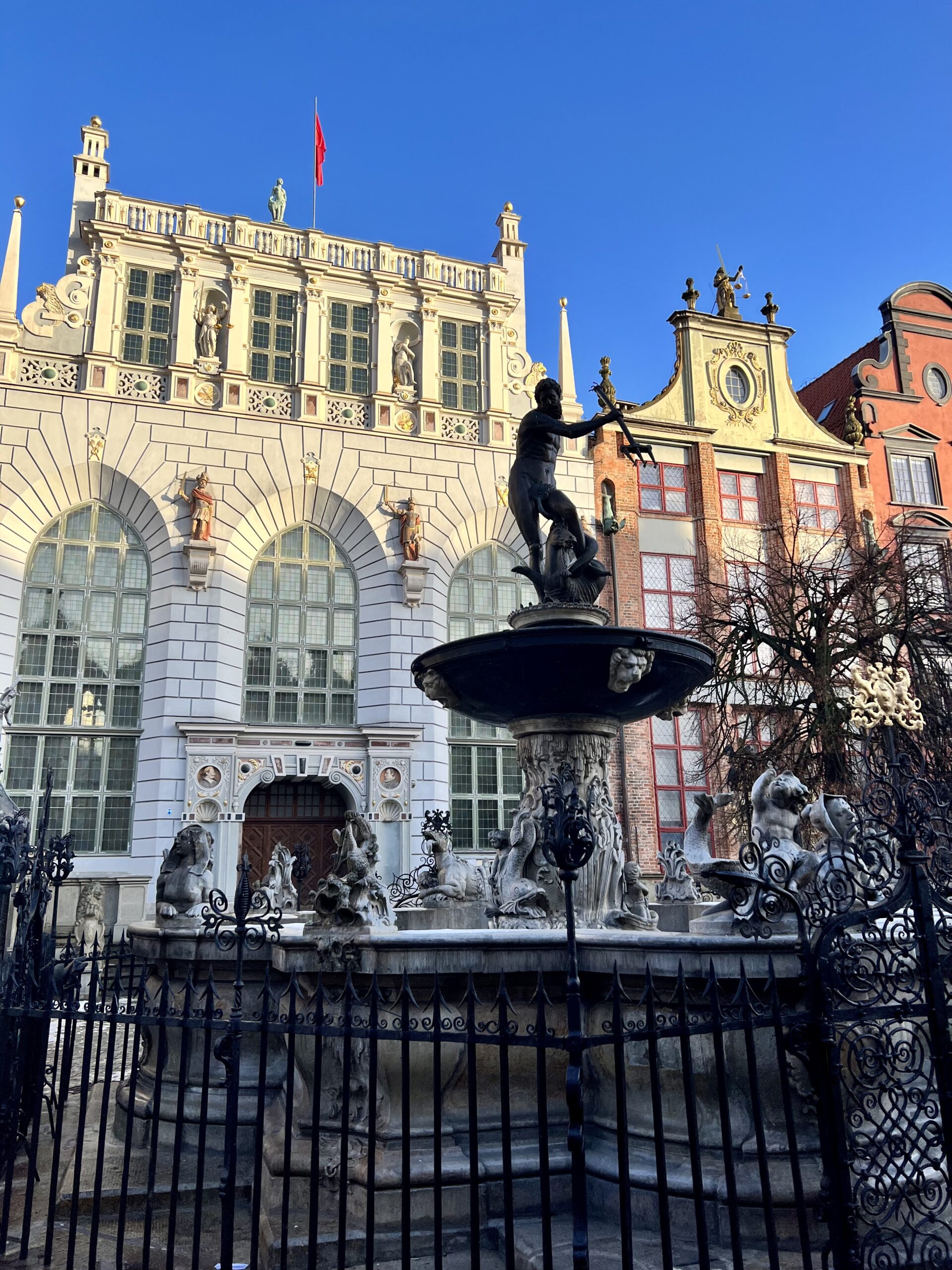
Gdansk, a city meticulously restored to its pre-WWII glory, offers a captivating journey through history. Nestled in northern Poland, it beckons travelers with its famous gold-flake vodka and its role as a stop on the Amber Road. Whether you seek history or modern delights, Gdansk has something for all ages and interests. Use this travel guide to Gdansk to help plan or navigate your trip!
Getting to Gdańsk, Poland: Transportation Options and Travel Tips
Traveling to and from Gdansk is a breeze with affordable train options (around $10 USD) connecting you to the city, conveniently located just a 10-minute walk from the Old Town. The FLXBUS is an economical alternative for traveling within Poland. Gdansk Lech Wałęsa Airport serves international and domestic flights, making it an ideal starting point for your Polish journey. For exploring beyond the city, consider renting a car, especially if visiting other parts of Poland, as mentioned in other parts of this travel guide to Gdansk.
To plan your route and transportation methods, use Rome2rio, a handy tool providing route combinations from anywhere.
Where to Stay in Gdańsk, Poland?
Numerous accommodations are scattered throughout Gdansk, with the Old Town being a prime location. Availability and prices vary by season. Book well in advance if you prefer staying in the Old Town.
During my visit, I secured a private apartment in the Old Town for just $20 USD per night. It was a fantastic find within walking distance of everything. Keep in mind that the Old Town can get lively on weekends, so pack earplugs if you're a light sleeper.
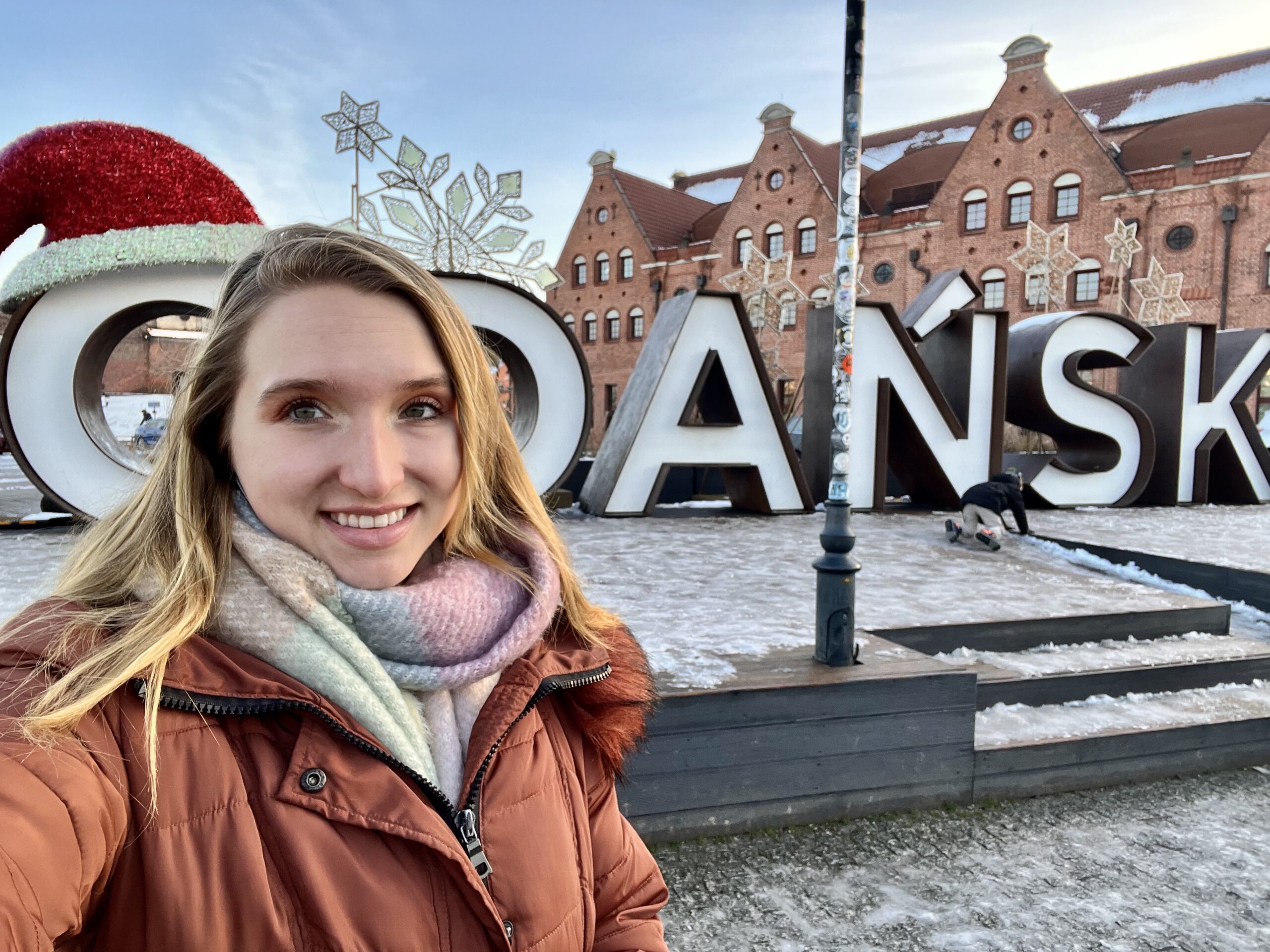
Guides to Poland
Getting around gdańsk, poland.
Cars can be rented from agencies at the city’s international airport or from other major cities in Poland. The traffic is rather minimal in Gdansk except for during commuter hours. The public transport in Poland is very clean and widespread, but renting a car is great if you plan on traveling around Poland and out into the more rural areas. It is important to note that 0.2% is the maximum blood/alcohol limit, so not even one drink if you’re driving.
Bus/Tram/Trolleybus
Local public transport is efficient and takes you around Gdansk and to nearby Gdynia. Tickets are available at stations and kiosks.
In Gdansk, you have the option of using both traditional taxi companies and Uber. The primary taxi companies operating in Gdansk include Neptun, Hallo, and Elite Airport Taxi. These taxis generally follow metered pricing, but it's advisable to request a fare estimate before entering the taxi and ensure that the meter is activated to avoid any surprises. This way, you can enjoy a reliable and transparent taxi service during your stay in Gdansk.
Bike/Electric Scooters
Explore Gdansk's bike-friendly streets with Lime or Bolt rentals, conveniently accessed through mobile apps. Make sure to have the apps downloaded and set up before you arrive.
Sightseeing on foot is not only budget-friendly but also offers unexpected discoveries. Wear comfortable shoes for a memorable city exploration.
What to Do in Gdańsk, Poland?
Historical walking tour.
Start your visit in Gdansk with a walking tour to help you plan your sightseeing and orient with the city. While there are many tour groups and agencies offering tours, my favorite are the free walking tours which are tip based. The guides are very well trained and do the walking tours as a passion project. Don’t forget to bring cash to tip your guide!
Stroll through this colorful and architecturally stunning part of the city. Despite its destruction during WWII, today it boasts cobblestone streets and iconic attractions like the Gdansk sign, Golden Gate, and Neptune Fountain.
Main Town Hall
Located near Neptune Fountain, the town hall houses the Gdansk History Museum (free on Tuesdays) and offers panoramic views from its tower.
St. Mary's Church
Home to one of the world's oldest celestial clocks, the church's tower offers a unique aerial view of the city after climbing 408 steps.
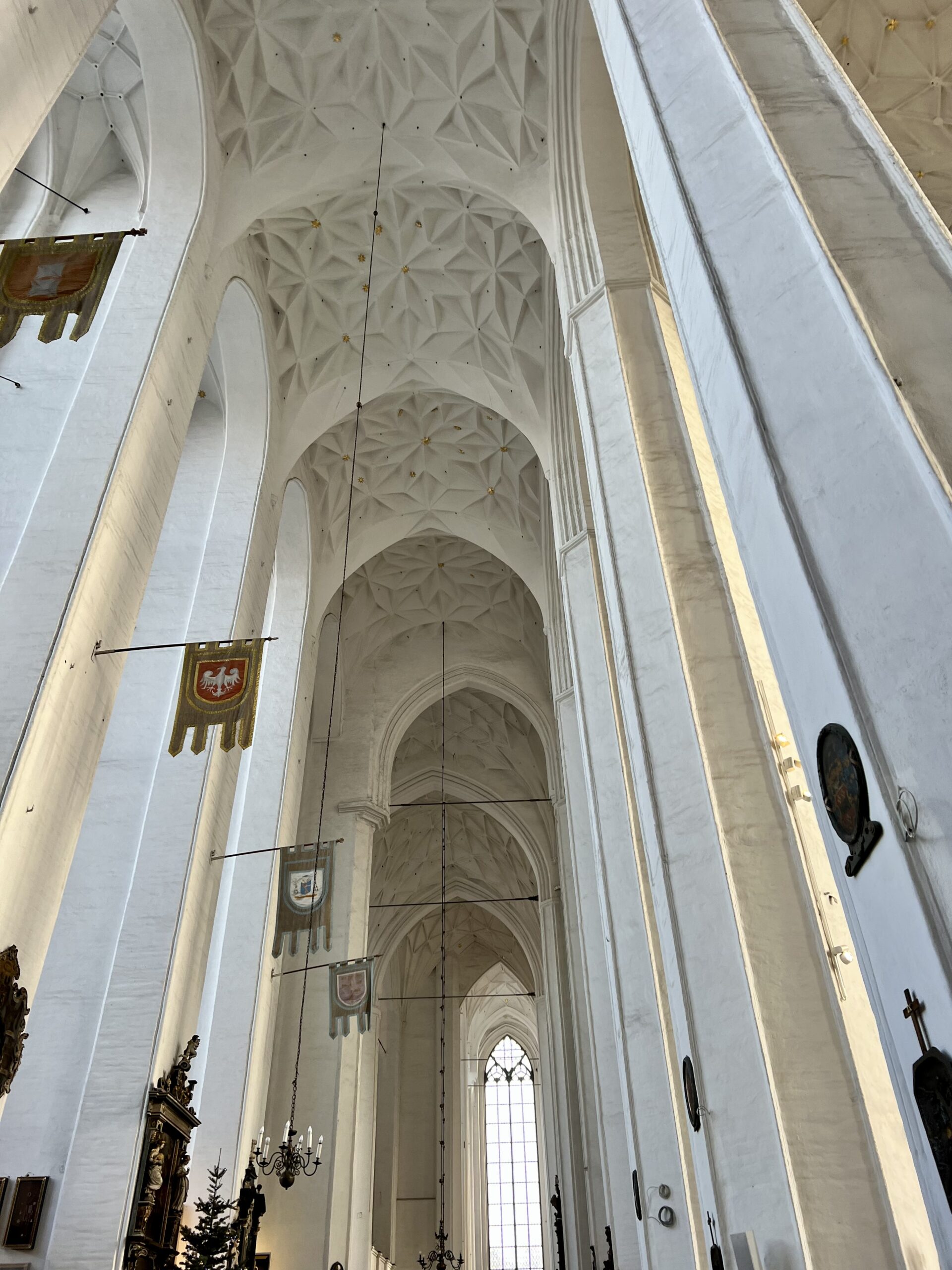
Mariacka Street
If you have a penchant for purchasing amber, you've come to the right place in Gdansk. Along Mariacka Street, you'll find amber vendors lining both sides of the street, offering unique jewelry pieces you won't come across elsewhere. Besides shopping for amber, this charming street also features several delightful cafes and spots where you can indulge in a glass of wine while taking in the stunning architectural beauty of the area. It's a perfect combination of shopping, relaxation, and admiring the city's architecture all in one place.
St. Bridget's Church
Marvel at the beautiful amber altar, a masterpiece 17 years in the making, showcasing 13 meters of amber (and still growing).
Museum of the Second World War
The museum opened its doors in 2017 and provides a comprehensive exploration of WWII's impact on Poland and the events that precipitated the war. It offers an extensive and in-depth experience, so plan to dedicate at least three hours to fully immerse yourself in its exhibits and historical insights. For added convenience, consider purchasing your tickets online in advance to skip the lines and make the most of your visit to this remarkable museum.
Amber Museum
Discover the Baltic region's amber heritage and Poland's role in the Amber Road. The museum showcases various types of amber and artifacts.
Explore this neighborhood adorned with over 50 murals and the Monumental Paintings Collection. Use this map to locate all the artwork: Zaspa Map .
Polish Post Office Museum
During the Nazi invasion of Gdansk, the Polish Post Office became a target and was attacked while Westerplatte was under assault. This harrowing siege endured for a grueling 17 hours before the defenders met a tragic fate and were executed. Adjacent to the museum dedicated to this historic event, you'll find a solemn memorial wall paying tribute to those who lost their lives during this significant chapter in history. It stands as a poignant reminder of the sacrifices made during that time.
European Solidarity Center
Commemorate the Solidarity movement's pivotal role in Poland's transition from communism. Tour the center or use an audio guide to delve into this important part of Polish history.
Gdansk, Poland, a city lovingly restored from its wartime devastation, invites travelers to embark on a captivating journey through history, culture, and unforgettable experiences. From the charm of the Old Town's cobblestone streets to the poignant reminders of WWII's impact, Gdansk offers a rich tapestry of attractions and activities. Use this travel guide to Gdansk to plan your trip!
The majority of locals speak English, but it is helpful and appreciated to know some basic phrases in Polish.
My Playlist for Gdańsk, Poland
"Jestem" by Kamil Bednarek
"Sto lat" (One Hundred Years)
"Lubię, kiedy patrzysz jak tańczę" by Taco Hemingway
"Kocham Cię jak Irlandię" by Edyta Górniak
"Dwa serduszka" by Wojciech Gąssowski
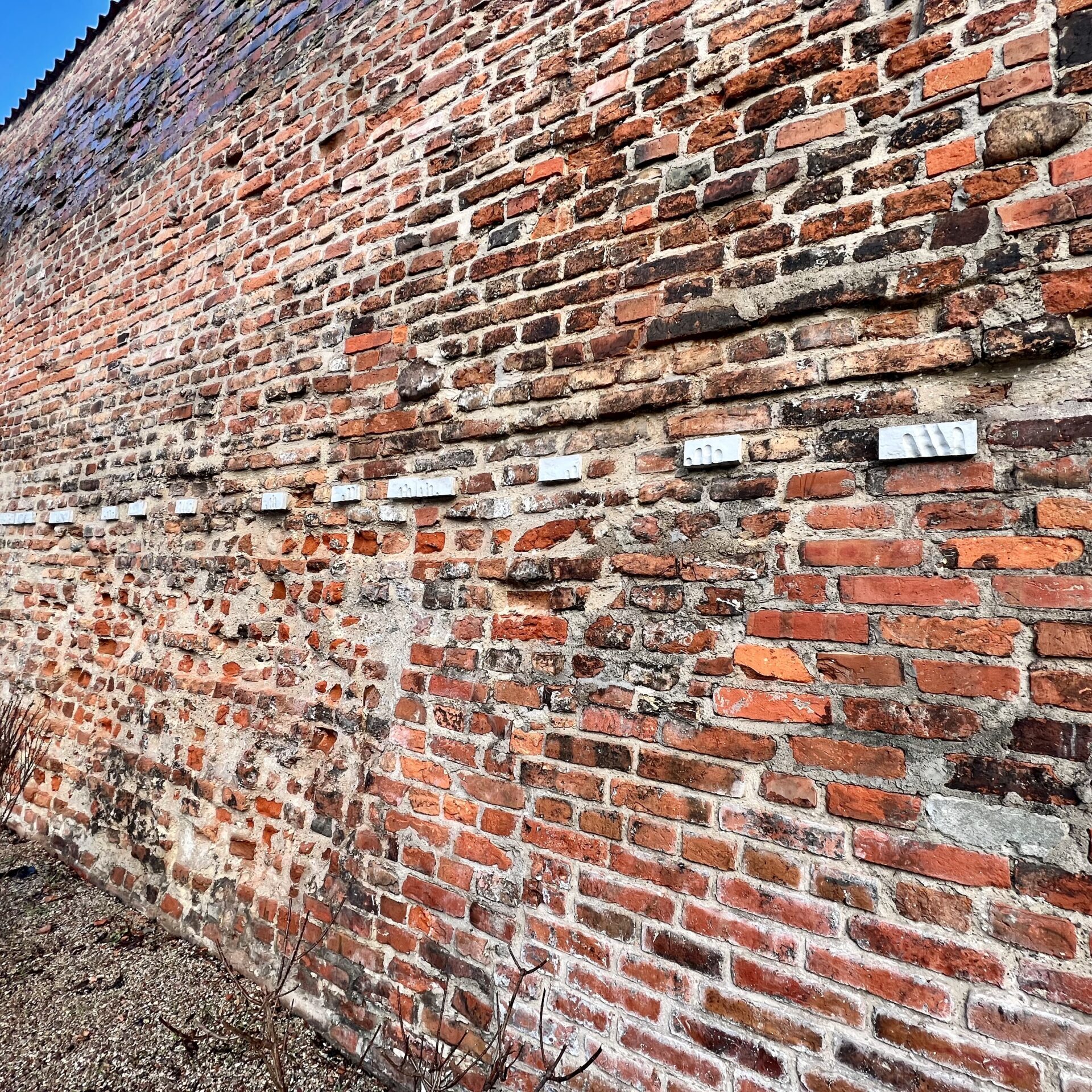
Recommended Reads
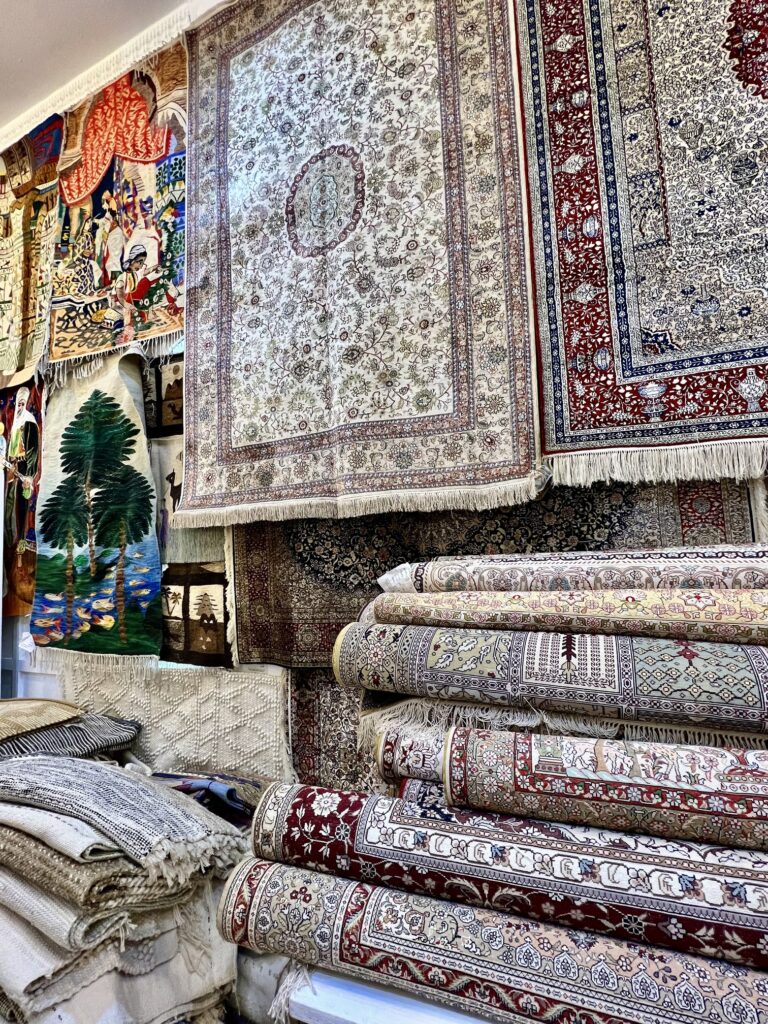
Authentic Egyptian Souvenirs: Top 10 to Buy in Egypt
A trip to Egypt is a once-in-a-lifetime experience, so you’re most likely leaving room in the suitcase…

Best Places to Visit in Egypt: Top 5
Egypt is a bucket list adventure filled with historical treasures and insight into ancient civilizations. From crystal…
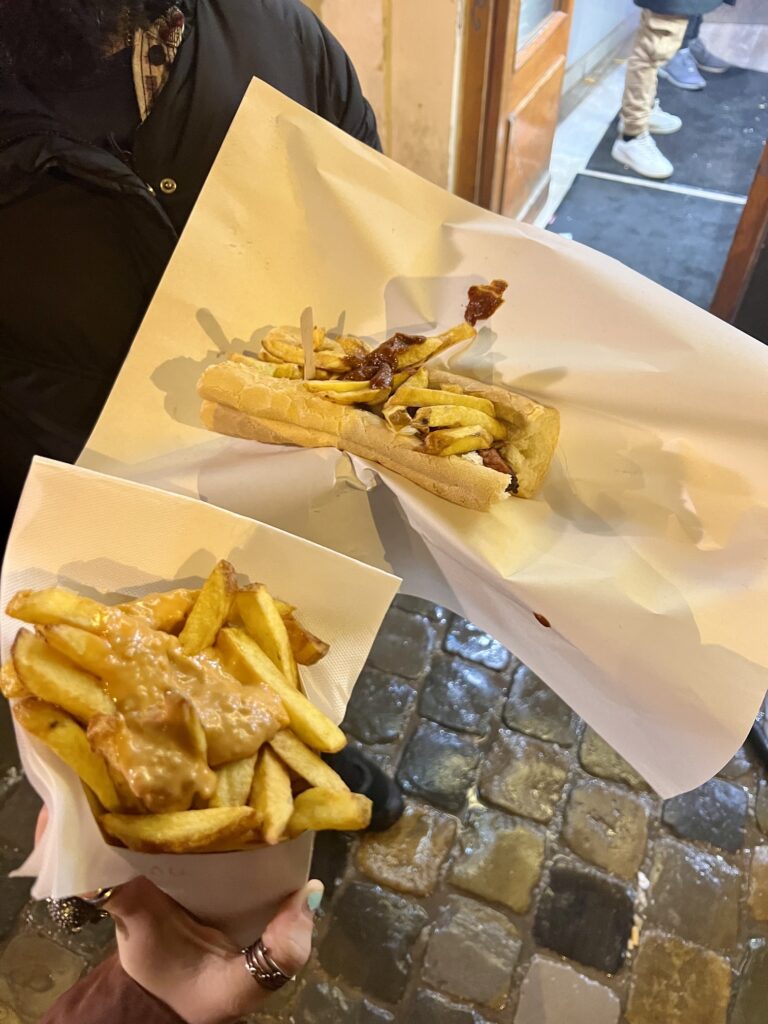
Best Places for Fries in Brussels- Top 10
Hungry and in Brussels? Look no further! Here are the top 10 best places for fries in…
- South Africa
- Afghanistan
- North Korea
- Adventure + Outdoors
- Amusement Parks
- Backpacking Trips
- Boating + Cruises
- Budget Travel
- Bus + Train Travel
- Coasts + Islands
- Country Trips
- Fall Vacations
- Family Vacations
- Green Travel
- Heritage + History
- Honeymoons + Romance
- Inspiration + Guide
- Landmarks + Attractions
- LGBT Travel
- Markets + Bazaars
- National Parks + Reserves
- Nature + Wildlife
- Parks + Gardens
- Pets + Animals
- Photography
- Airlines + Airports
- Budgeting + Currency
- Business Travel
- Celebrity Travel
- Customs + Immigration
- Deals + Rewards
- Family Travel
- Hotels + Resorts
- Luggage + Packing Tips
- Offbeat News
- Photography Tips
- Responsible Travel
- Solo Travel
- Tech + Gear
- Travel Etiquette
- Travel Warnings
- Bars + Clubs
- Celebrity Chefs
- Restaurants + Cafés
- Wine + Vineyards
- Beach Hotels
- Boutique Hotels
- Hotel Openings
- Hotel Reviews
- Luxury Hotels
- Mountain + Ski Resorts
- Spa Resorts
- Vacation Rentals
- Asia Cruises
- European Cruises
- Festivals + Events
- Museums + Galleries
- Style + Design
- Travel’s Best
- Hotel with Agoda.com
- Hotel with Booking.com

Where to eat in Nha Trang? — 27+ budget, best places…

What to eat in Singapore? — 10+ must-eat & best street…

Must eat in Nha Trang — 45+ best street food in…

How to prepare for trekking in Nepal? — 10+ Nepal trekking…
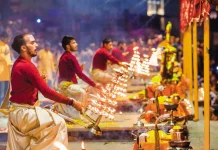
Where to go & what to do in Varanasi? — 15+…

What to buy in Indonesia? — Top +9 famous gifts, souvenirs…

What to buy in Kyoto? — 31+ must-buy Kyoto souvenirs, gifts…

What to buy in India? — 29+ best gifts from India…

India trip tips — 9+ things to know before going to…

All about tips in Nepal — How much to tip in…

Cambodia travel tips — 15+ what to know & things to…

Must eat in Hong Kong — 7+ must eat & must…

Top hotels in Siem Reap — 8+ best places to stay…

Top hotels in shanghai — 15+ best hotels in Shanghai

Top hotels in Malacca — 10+ good & best hotels in…

Top places to stay in Bali — Top 10 best areas…

10 must-know things for your best first time European river cruise

Top 3 best luxury cruises in Halong Bay, Vietnam

Cherry blossom festival Korea 2024 — Top 5 cherry blossom festivals…

Ghibli museum blog — The fullest Ghibli museum guide for first-timers

Kyoto festival — Top 10 best events & most famous festivals…

National Palace Museum Taipei blog — What to see in National…

Japanese waterfall — Top 10 most beautiful waterfalls in Japan in…

19+ most beautiful towns in Europe every tourist need to visit…

Georgia travel photos — 20+ captivating photos show Georgia is heaven…

Explore Damnoen Floating Market — The oldest floating market of Thailand

Visiting Fenghuang Ancient Town — One of the most charming ancient…

Mekong Delta travel blog — Beyond rivers of Southwestern Vietnam

14 reasons why you should travel when you are young

Shigaraki Tanuki – An animal symbol of good luck in Japan

Living in the charms of cave houses in Andalucia, Southern Spain

20+ jaw-dropping tiny homes around the world
Gdansk travel guide — the ultimate gdansk guide: best things & what to do in gdansk.
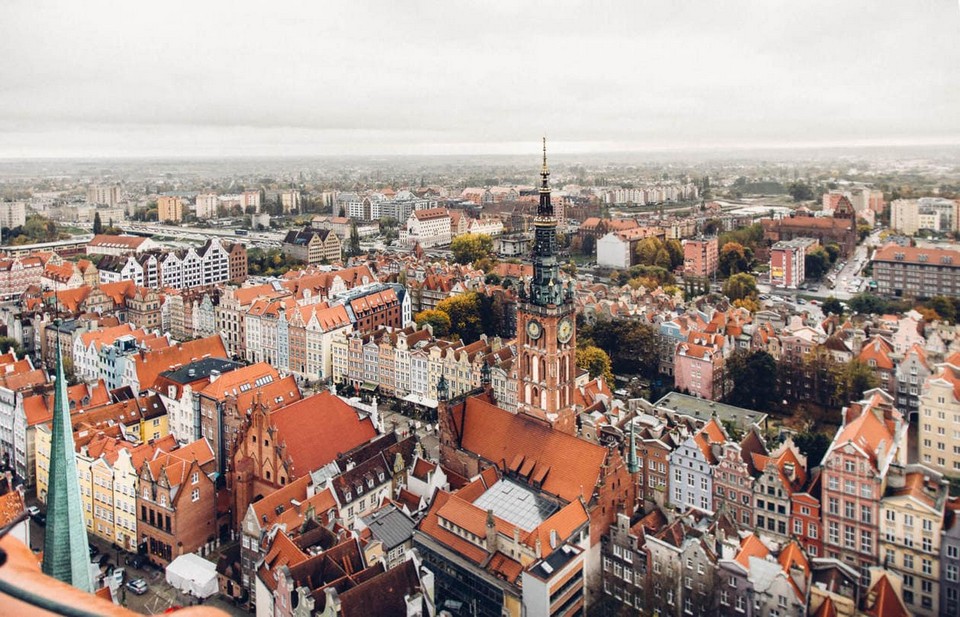
Poland has never been a popular tourist destination. But in recent years the number of visitors has increased rapidly. Who could not help but fall in love with the magnificent medieval works and buildings, the quaint and beautiful cities, the splendid old towns – the symbols of a history full of ups and downs? Traveling to Poland, just visit the capital Warsaw is not enough. Remember the hidden gem of Gdansk too! Today, I will share with you all my experiences I got during my trip to one of the most Polish famous destinations — Gdansk. So, what to do in Gdansk and how to plan a perfect budget trip to Gdansk for the first-time? Let’s check out our Gdansk travel blog with the fullest Gdansk travel guide (Gdansk guide) from how to get there, best time to come, where to stay, best places to visit and top and best things to do in gdansk as well as suggested Gdansk itinerary 3 days 2 nights to find out the answer!
- What to do in Gdansk? — Top 10 best things to do in Gdansk
- What to buy in Poland? — Top 13+ souvenirs & best things to buy in Poland
- What to do in Wroclaw? — 13+ cool, must see & best things to do in Wroclaw
- Wroclaw travel blog — The fullest Wroclaw travel guide for first-timers
- Warsaw 1 day itinerary — How to spend a day in Warsaw & what to do in one day trip in Warsaw?
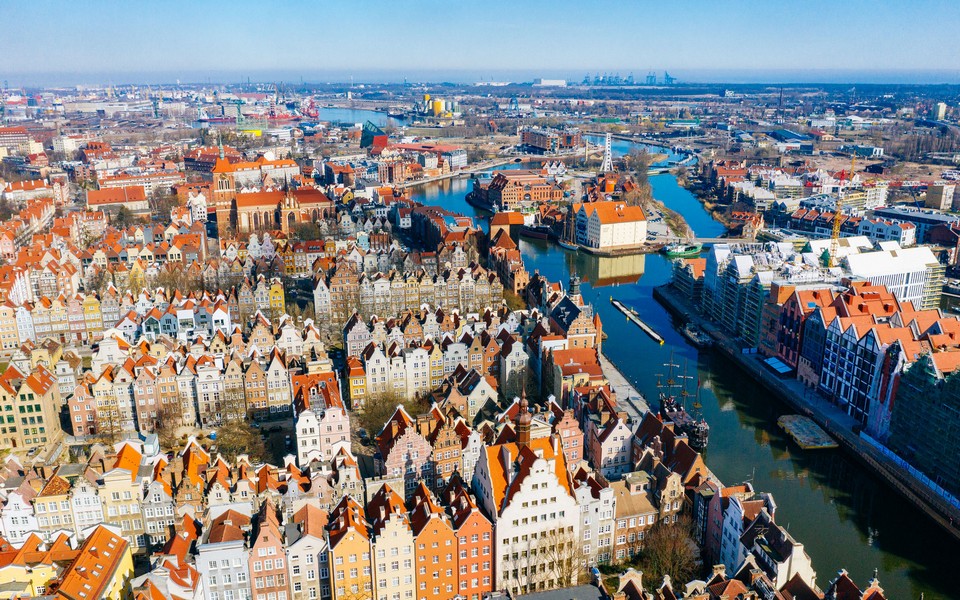
Gdansk is a rather small port city located in the Northern Poland. This is the birthplace of the world’s first self-determination movement against the Soviet Communist regime. If you love history and culture, you should definitely not miss this city. I must say that I love this city the most in Poland. It’s even one of my favorite cities in Europe!

Gdansk travel guide: Overview of Gdansk
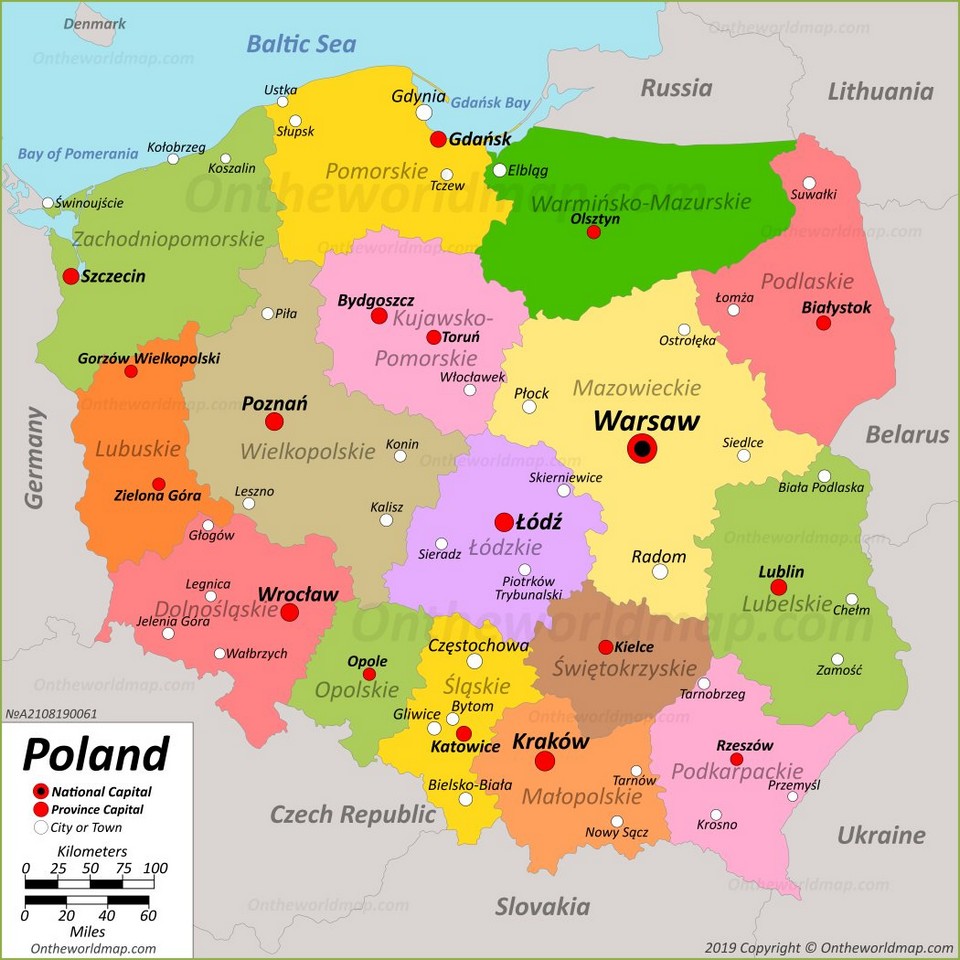
Gdansk is known as a beautiful port city located on the Baltic Sea coast. This place was once the first place of Poland where broke out the World War II and the Solidarity movement (The Independent Self-Governing Trade Union “Solidarity”) contributed to successfully overthrowing communism. Therefore, the modern port city of Gdansk today is often known to tourists as a symbol of a city of freedom and is also considered one of the most famous Polish tourist cities today.
Gdańsk is the main port of Poland and it has had a complicated historical period when it was invaded by many foreign powers. After the decline of the Polish royal family, this place was once occupied by the Austrians, Prussians (present-day Germans) and Russia and disappeared from the world political map for more than a century.
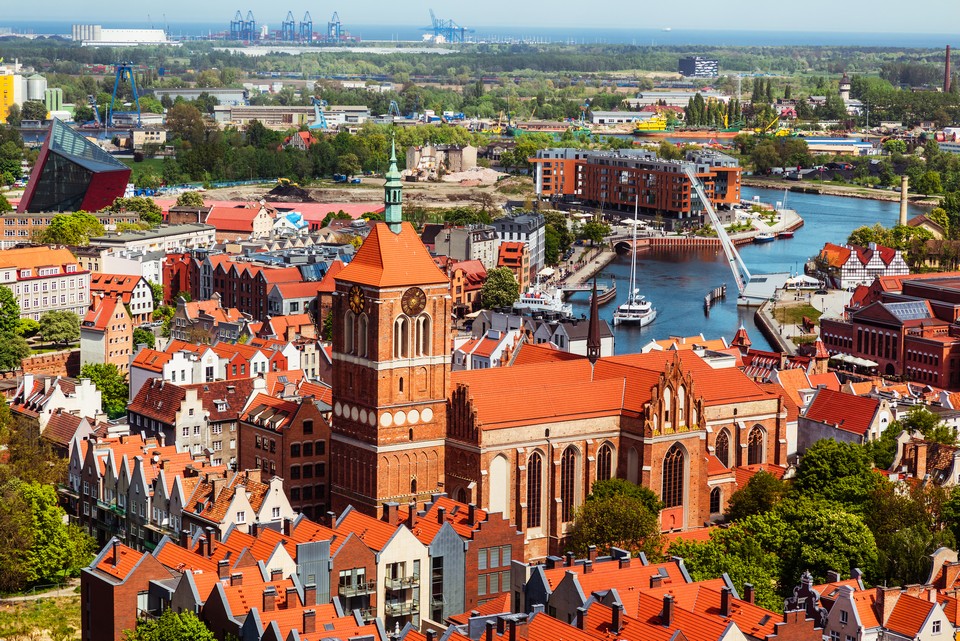
In the early 20th century, this place was freed by Germany, but World War II once again turned Gdansk into a fierce battlefield. It was one of the most devastated cities in Europe at that time. All houses and streets were destroyed to 90% and it took several decades for the Poles to restore them. When I went to see it, I admired the Polish people’s national pride and their will and efforts.
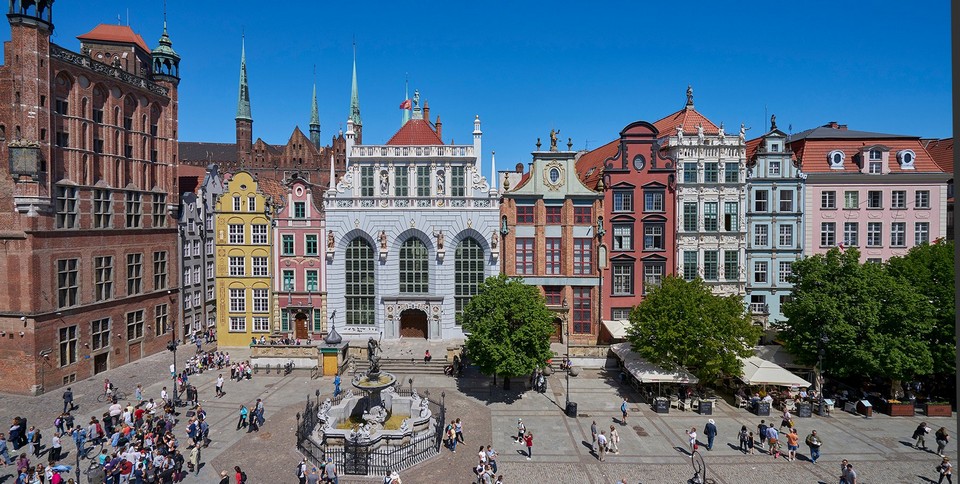
Gdansk, Poland is located right on the coast of the Baltic Sea, so traveling from here to Nordic countries or other Baltic countries is quite convenient. You can take a ferry from Gdánsk to Stockholm, Copenhagen… all are Okay.
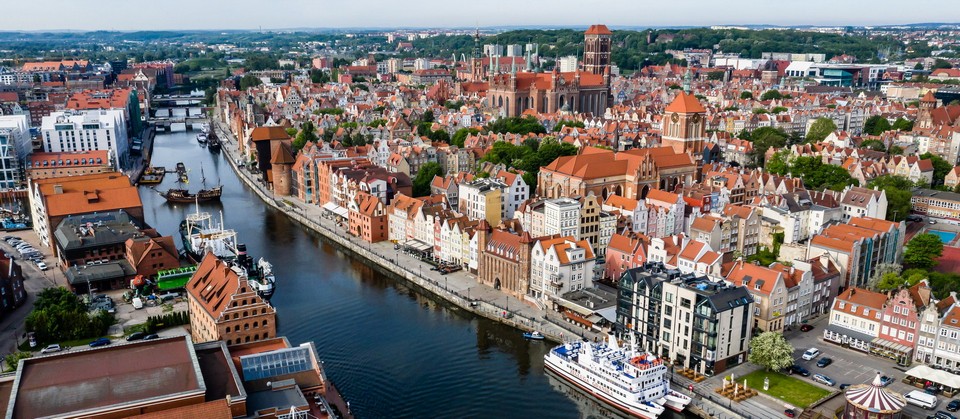
Gdansk guide: How to get to Gdansk?
Gdansk has an airport. The airport’s name is Lech Walesa (GDN), named after the leader of Gdansk’s Solidarity (Polish Trade Union). Gdansk Airport is an international airport, quite modern and large, it is easy to find flights here, you can use Google Flights or Skyscanner to search suitable flights. I recommend the low-cost airline Ryanair. You can fly to Gdansk from Denmark, Sweden, Norway, Greece, Ireland, Italy, the UK, Spain, Israel, and even from the island of Malta! I flew here from Stockholm. Ticket is only about 10 euros/way. But I have to fly from Stockholm Skavsta Airport, so I had paid about 30 euros.
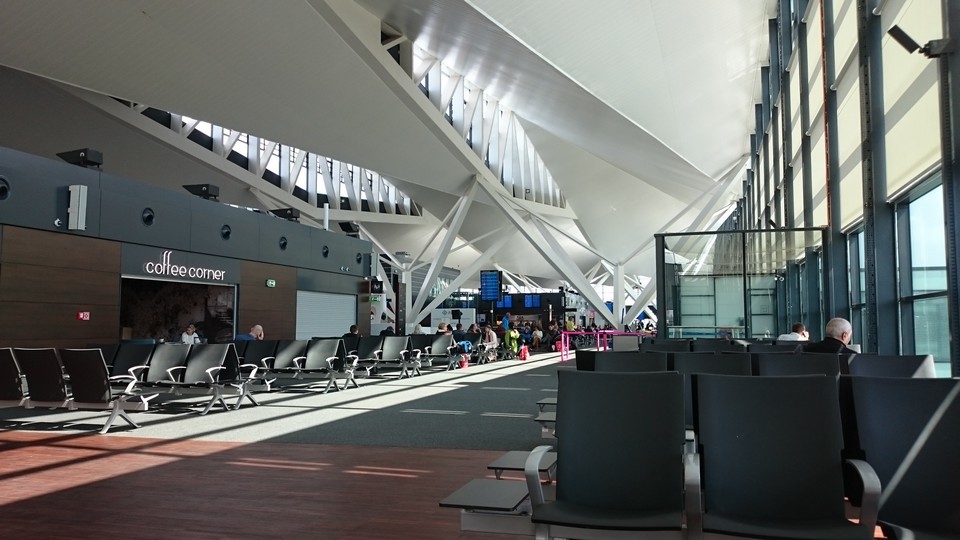
Getting from Gdansk airport to the city center is also very cheap and simple with direct buses. You just need to go out, take bus 210 of ZTM and go straight to Gdańsk Main Station (Gdańsk Główny). The direction of the bus is GOSCINNA direction. This bus runs every 30 minutes. On weekends, one trip every hour. The fare is 3zl (less than 1 euro). Bus tickets can be purchased at ticket vending machines at the bus stop.
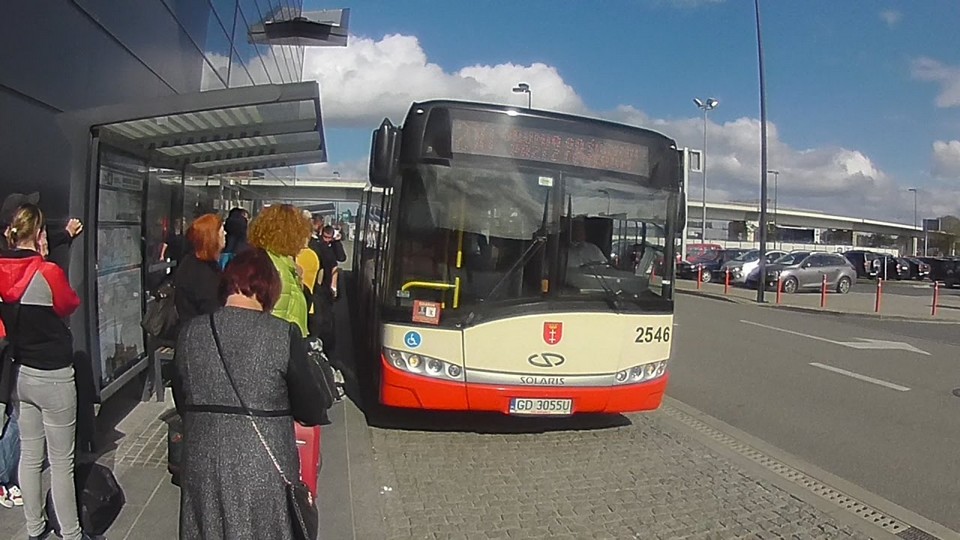
Train is also an easy and cheap option if you depart from other Polish cities. This is the homepage of the Polish railway system. You can easily check the railway routes and schedules.
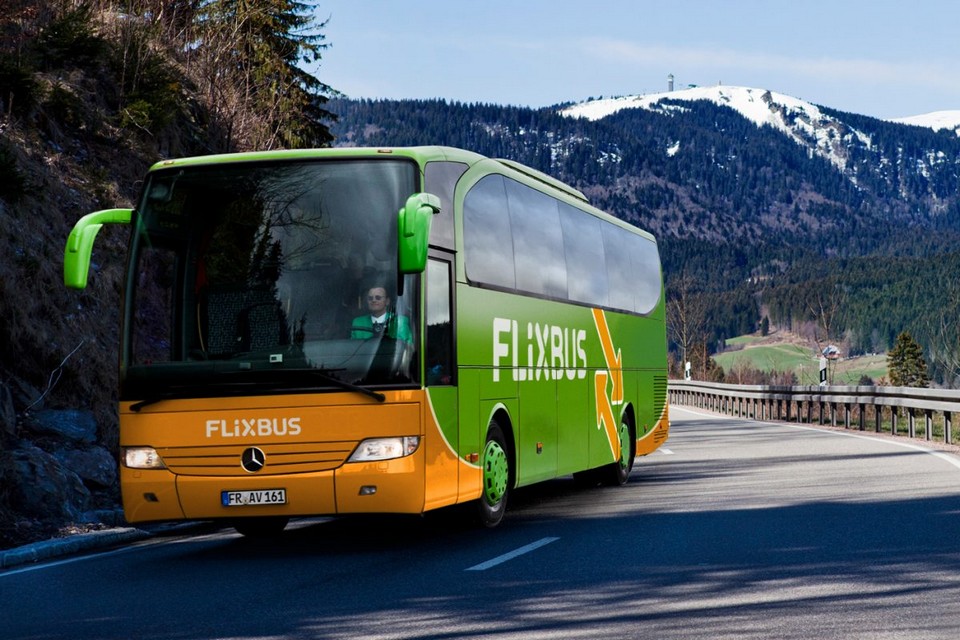
There are very efficient bus companies that run to Gdansk, my favorite one is Flixbus (very familiar with people who often travel in Europe) and Polski bus. Polski bus is a Polish company, running on time and efficiently.
Gdansk travel guide: Getting around Gdansk
- Bus, tram single ticket: €0.75/way.
- Ticket valid for 1 hour: €0.9 (this type of ticket can take many buses and trams. As long as you travel within 1 hour, the ticket above can only take a single trip).
- Day ticket: €3.
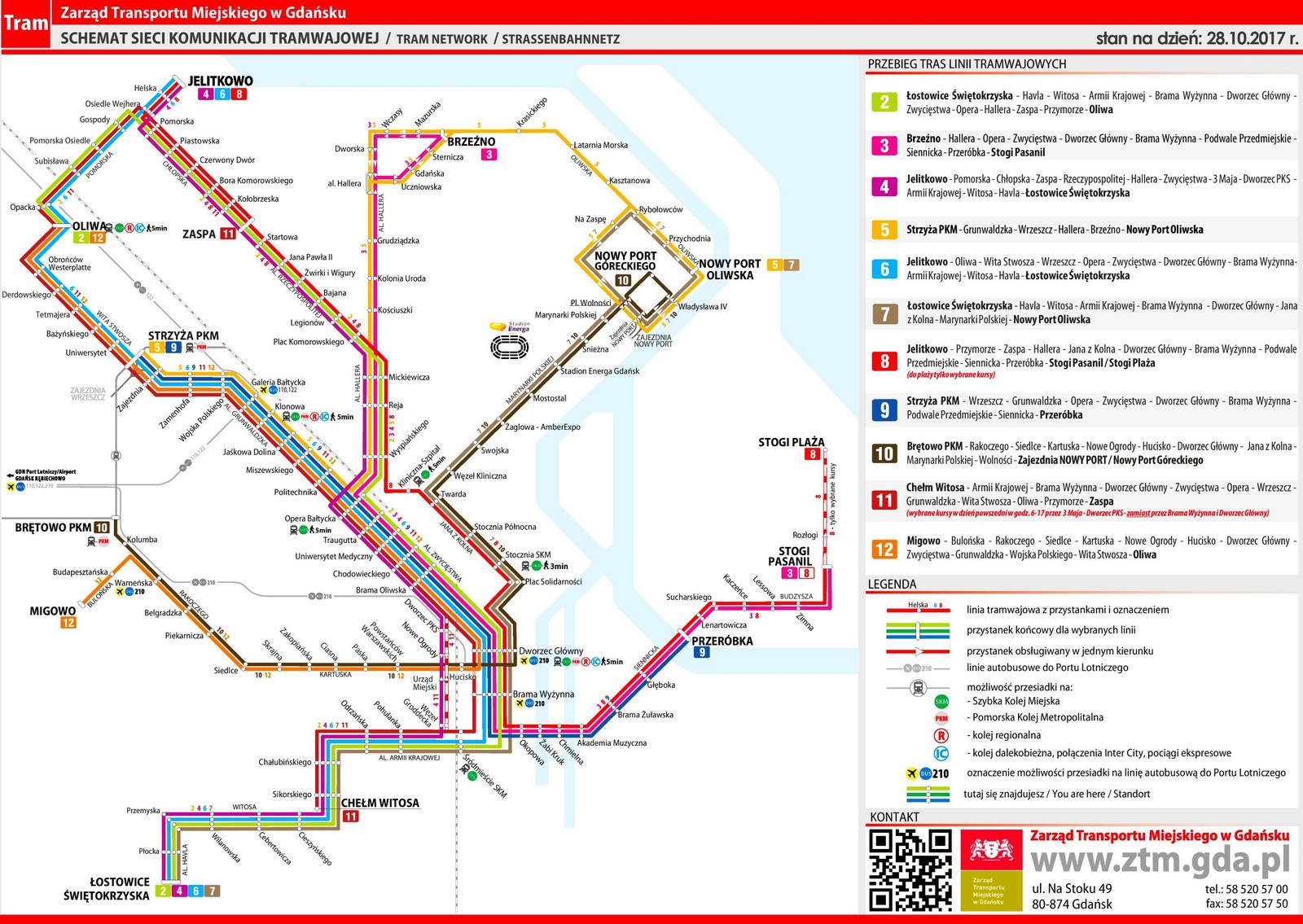
You can buy tickets at the ticket vending machines/kiosks or buy directly on the bus. Note that you should only buy directly when you have the right amount for the driver. They rarely have enough cash to give you back. Remember to stamp your ticket when you get on the bus.
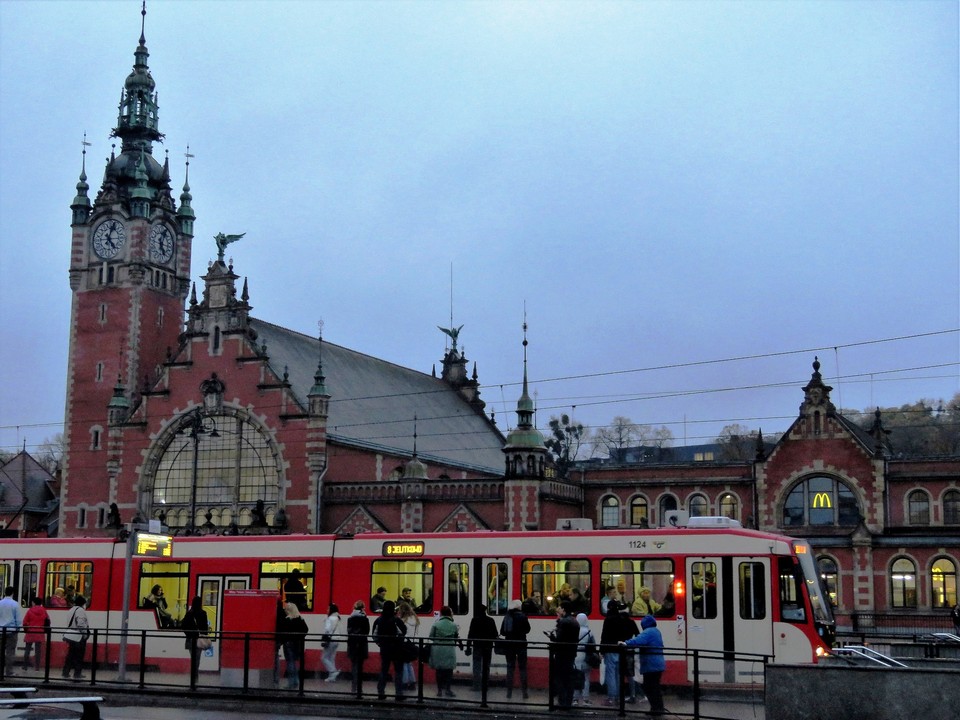
- Students under 26 years old will receive a half discount. Remember to bring your identification (ISIC or EURO26 STUDENT card) to prove it. At many major bus stations, there will often be a red ticket vending machine. You can buy tickets here with a bank card or coins.
- Be careful with Gdasnk train stations. Not because it’s dangerous, but it’s … confusing. I was always get lost in it. The pastry shops in the stations are very cheap and delicious, please take advantage.
- Most Polish train stations do not have ticket vending machines. When you go to the place to buy, you have to queue. So, pay attention to arrange time.
- Poland does not offer ticket discounts for international students. They only offer discounts for Polish students who have a Polish student card.
Gdansk travel guide: Where to stay in Gdansk?
During my travel, I stayed at W Kamienicy’s apartment ( Agoda.com or Booking.com ) for €30/night/ 2 people. I booked this room through Booking.com. I thought it was a hotel, but then I found out that it was the house of a Polish man. This guy is very kind and enthusiastic. The house is decorated very cute, comfortable and located right in the old town. This guy let us feel comfortable, so he wasn’t here for a few days when we were there. In general, renting a room is like renting an entire apartment. Not only that, the house is located right in the old town, so it is very convenient to travel, right below the house there are many restaurants. This is by far one of my favorite places to stay!
Or you can consider to stay at La Guitarra Hostel Gdansk ( Agoda.com or Booking.com ).
- Budget: Only about 8 – 10 euros/night/bed for dorminity of 8 people. It’s even cheaper if you choose a bed without breakfast, without tea or coffee, without wifi (I chose this bed because I have a Polish SIM card, so I don’t need the internet, and actually the receptionist still gave WiFi code to me. This bed was only… 5 euros, so cheap). Moreover, I recommend that you go out for breakfast. Polish coffee shops are everywhere, both cheap and delicious. Hotel breakfast is usually not good.
- Convenient location: It takes about 10 minutes to walk to the port or Mariacka street (bar, pub area). 15 minutes to the Long Market Square. 5 minutes walk to the World War II museum.
- Facilities: Clean bed, full heating. The room was full of guests, but the beds are not too close together, so it was not pack. There are cabinets, electronic lockers, feeling quite secure. The kitchen/common room is very large and fully equipped.
- Bathrooms are all tiny. Not very clean either. I don’t like it very much. There seems to be only one minus point. I came in the cold season, the hotel was not crowded, so it was very comfortable to stay.
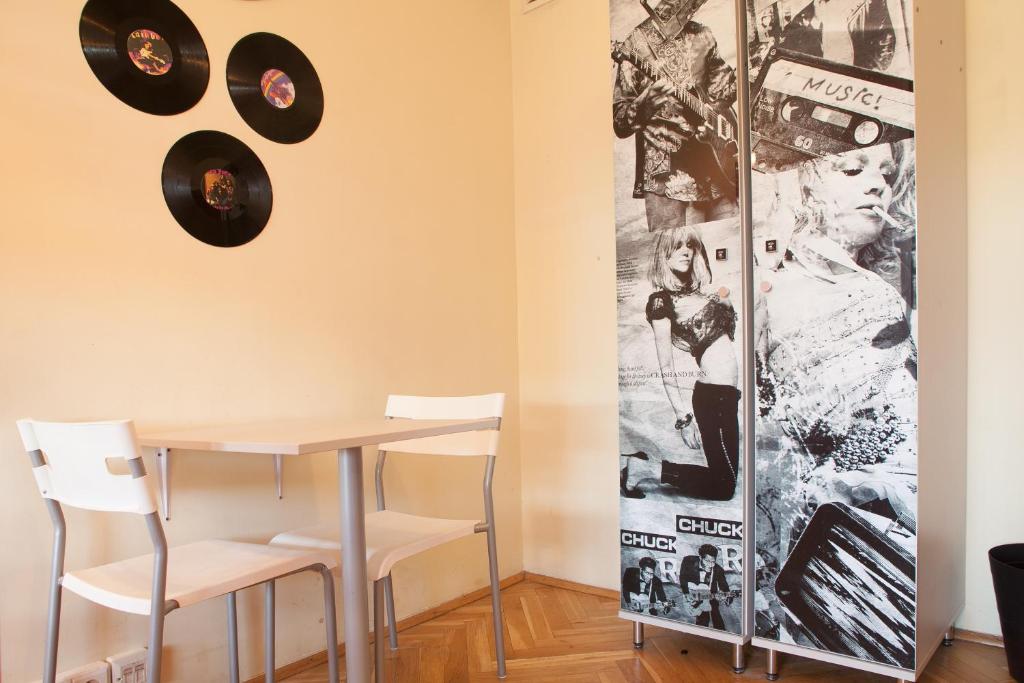
Below we recommend more best budget, mid-range and upscale hotels with good ratings and reviews you can refer to.
- Radisson Blu Hotel Gdansk ( Agoda.com or Booking.com )
- Hilton Gdansk ( Agoda.com or Booking.com )
- PURO Gdansk Stare Miasto ( Agoda.com or Booking.com )
- Podewils Hotel ( Agoda.com or Booking.com )
- Hotel Gdansk Boutique ( Agoda.com or Booking.com )
- Hampton by Hilton Gdansk Airport ( Agoda.com or Booking.com )

Check out more top and best hotels in Gdansk on Agoda.com or Booking.com .
Gdansk travel guide: Where to go, best things to do in Gdansk, what to do in Gdansk
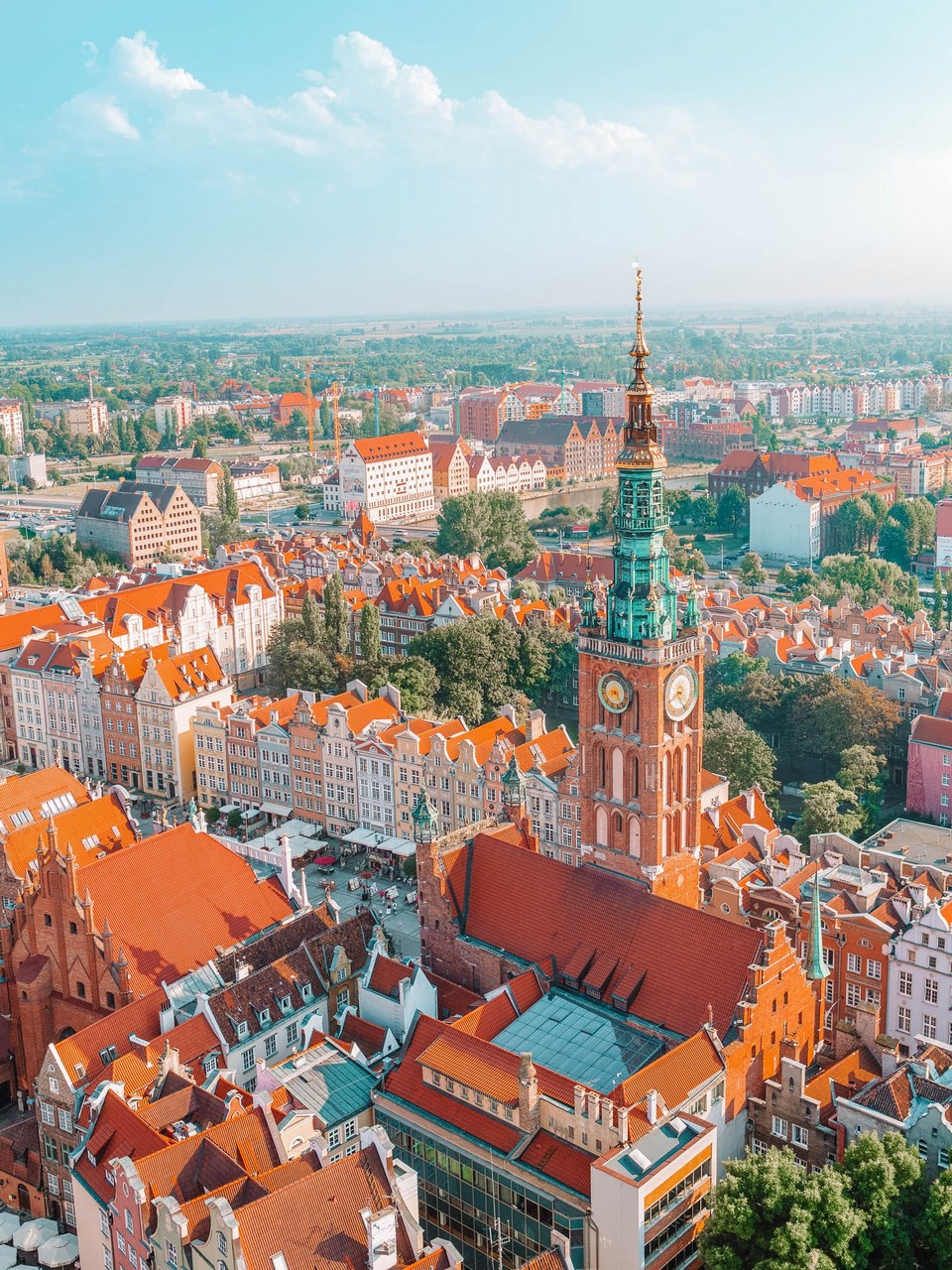
Old Town is one of the most famous and must visit tourist attractions. This place was carefully reconstructed after being flattened in World War II and has many similarities with other old towns in cities such as Amsterdam, Brugges, Riga… The old town is really beautiful and impressive with brilliant red tile roofs of colorful houses and buildings. This is probably one of the 3 old towns in Europe that I feel most excited about.
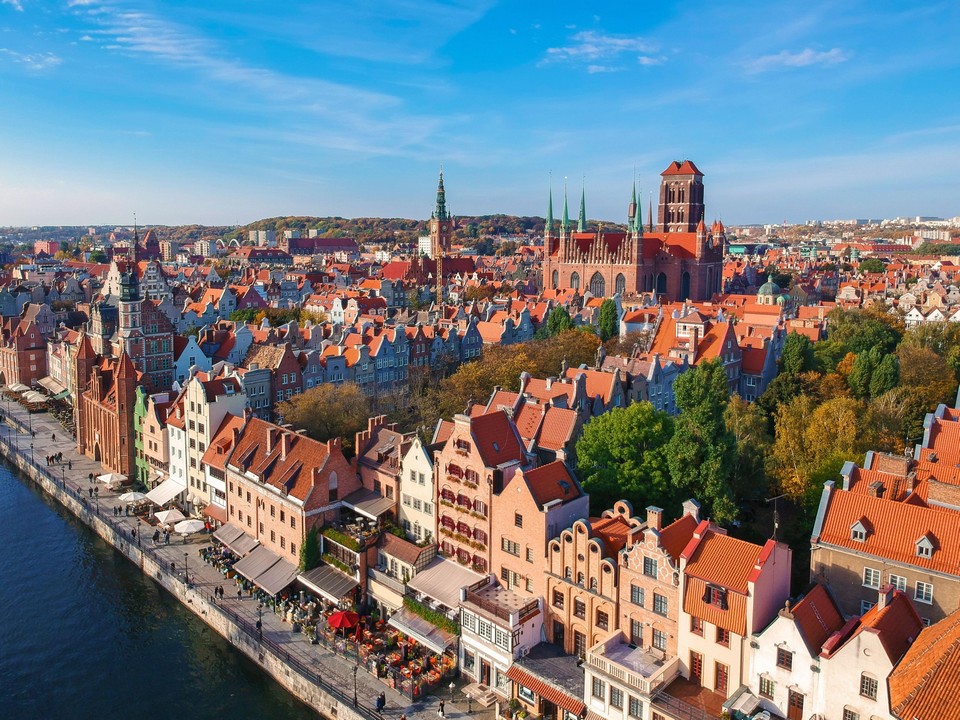
During World War II, Hitler began to rampage and decided to raze the old town of Gdansk. Many unique architectural works with Gothic, Baroque, and Renaissance styles were completely destroyed during the war.
Only 37 buildings remained, but not so that the Poles were discouraged when they decided to rebuild the old town after the war. They learn and offer a lot of restoration methods to rebuild this old town. Even the study of 14th century building materials and reuse of bricks and stones from medieval constructions elsewhere to bring back here and rebuild buildings and houses in Gdansk.
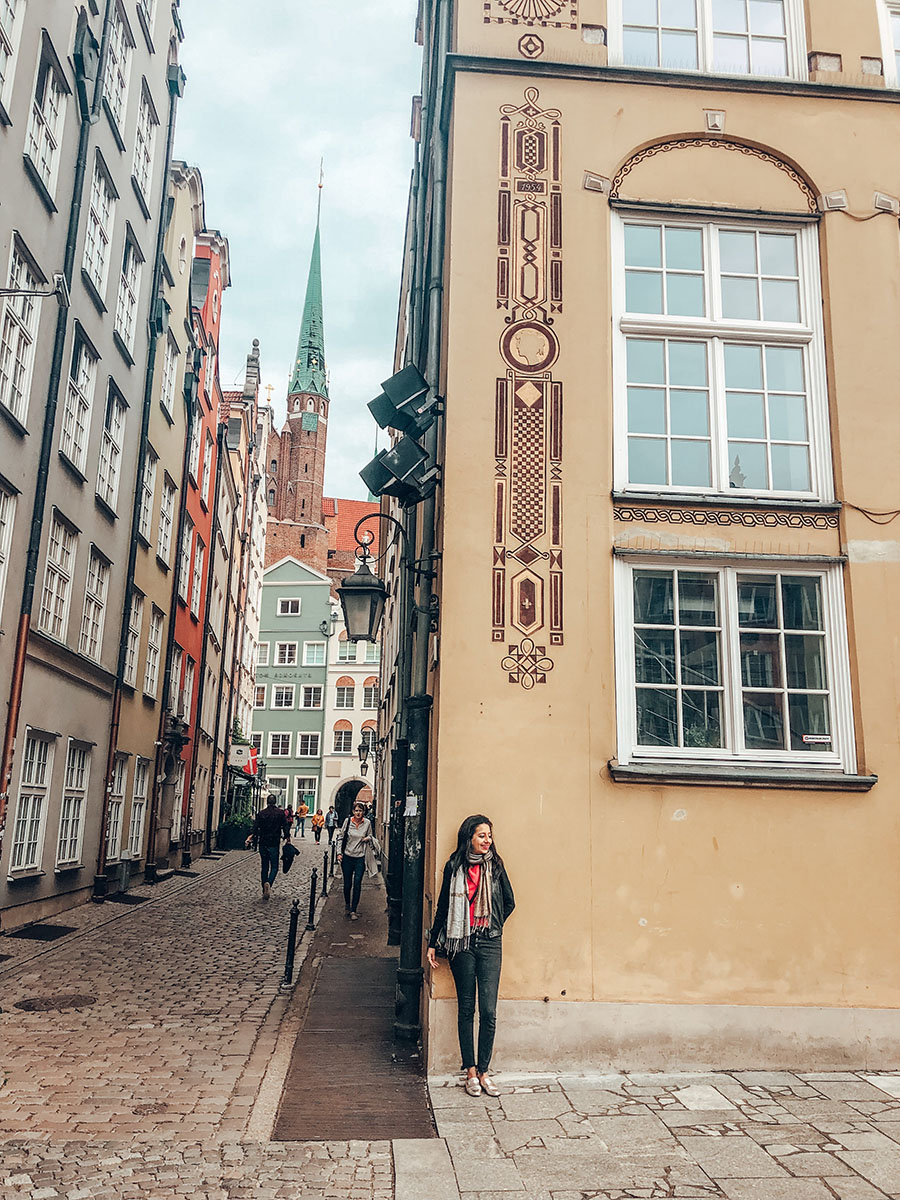
Dluga Street (ul. Dluga)
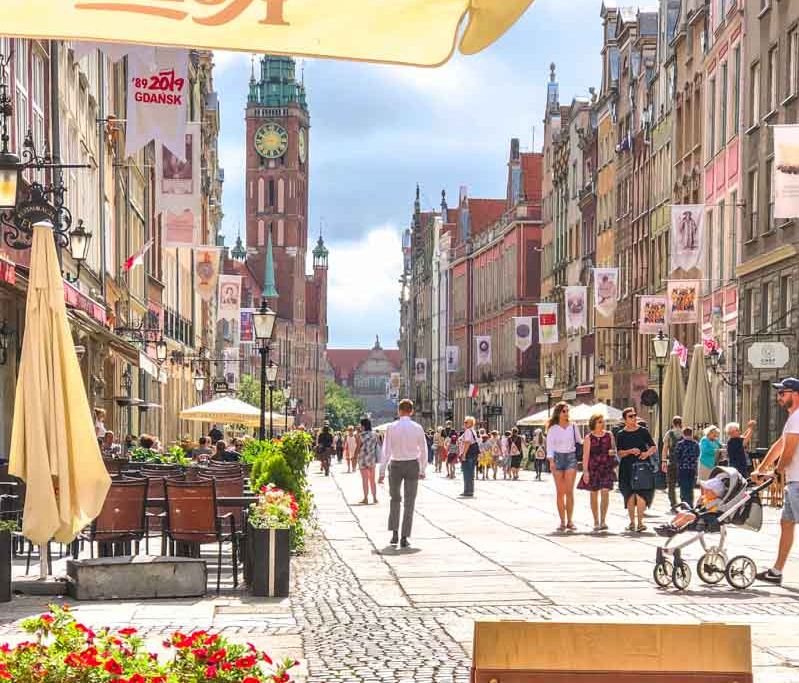
The main street of the old town is Dluga Street. This is also the area with the busiest cultural and commercial activities in the city. Because of the history of trade with many countries such as Germany and Flamand (originating of the Netherlands and Belgium today), it is not difficult to realize that the architecture here is also partly influenced by these countries. Most of the buildings here have also been restored in the 20th century and are modeled after the 18th century.
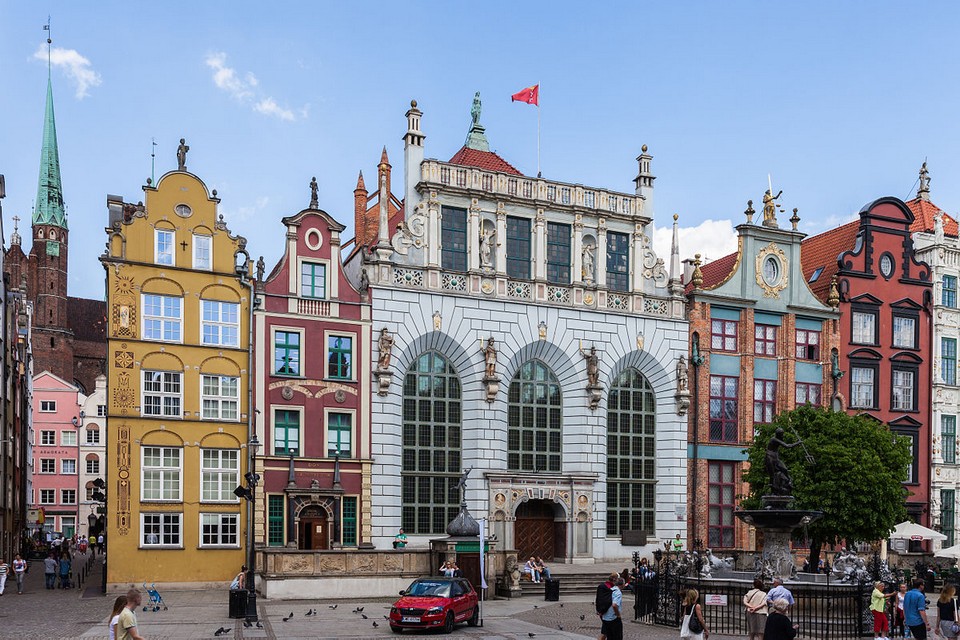
Mariacka Street (Ulica Mariacka)
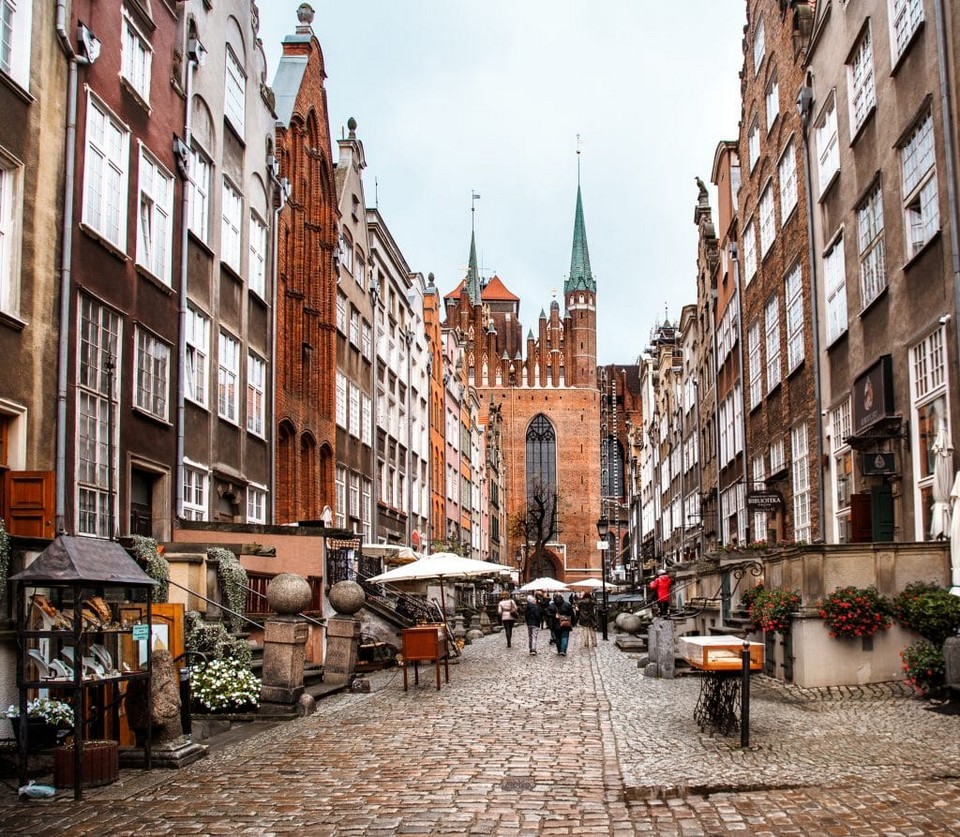
Gdansk’s history is associated with amber because the city thrived on the export of this luxury item throughout Europe. And the Mariacka road is a clear example of that period of great prosperity in Gdansk.
Along both sides of the street are many souvenir shops specializing in amber related items. The architecture of the buildings along the two sides of the road is also characteristic of the city with awnings that jut out into the street and are decorated very gracefully. So gentle!!
St. Mary’s Church (Basilica of St. Mary of the Assumption of the Blessed Virgin Mary in Gdańsk)
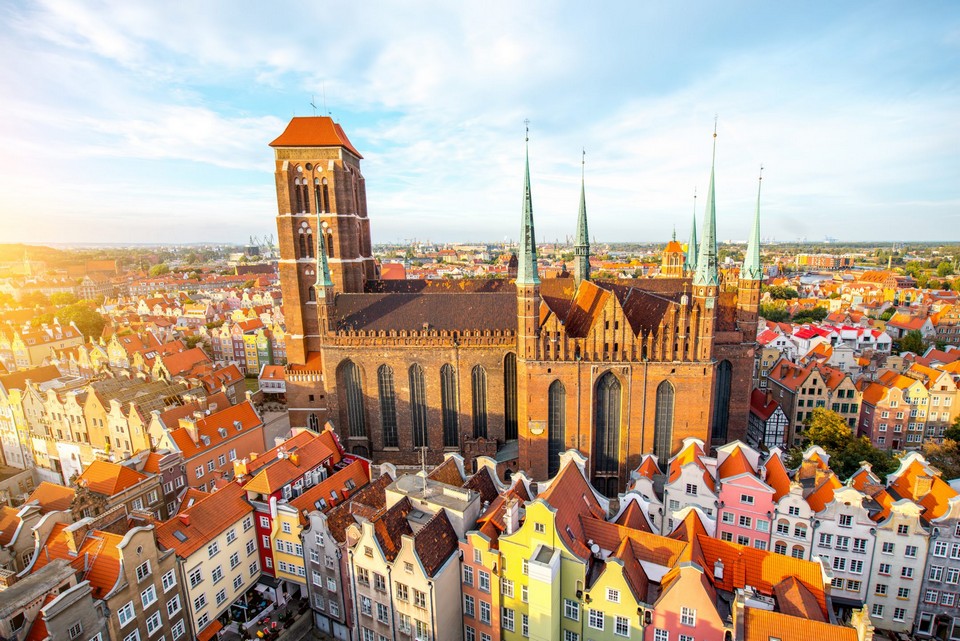
Address: Podkramarska 5, 80-834 Gdańsk, Poland Hours: 9AM–6PM/Sunday: 1–6PM
The construction of the Gothic St Mary’s Church began in the 14th century but was not completed until 140 years later. This tourist attraction is one of the largest brick churches in the world with a capacity of up to 25,000 people. Although it is massive, the interior is decorated quite simply. The church has 31 chapels, more than 30 large windows and an astronomical clock.
Artus Court Building
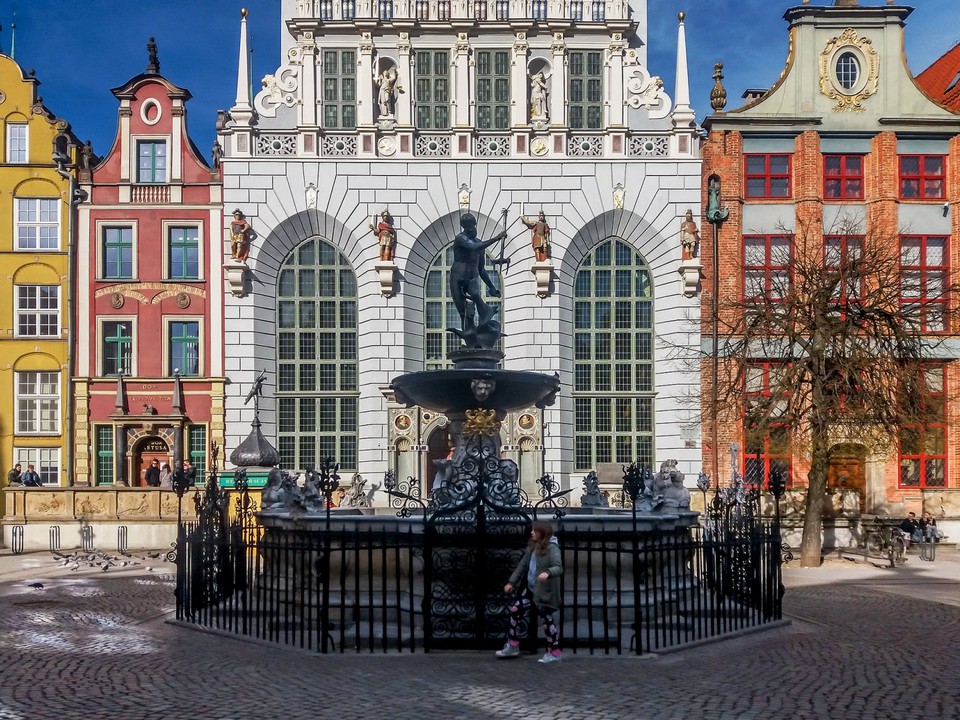
In the port area, the Artus Court building with the Neptune fountain is considered the second symbol of Gdansk. This famous tourist place is the most concrete proof of the port city’s heroic past.
The Artus Court building was built as a symbol of the unity of businessmen in the busy trading period of the city. In addition, the Artus Court also acts as a seat of economic law and a place to protect the interests of trade associations. The building was also completely destroyed by the Nazis after a bombing during World War II. And it was not until 1970 that this famous tourist attraction was restored based on the original old version. Today, the Art Court building is not open to visitors but only serves as a place to receive heads of states.
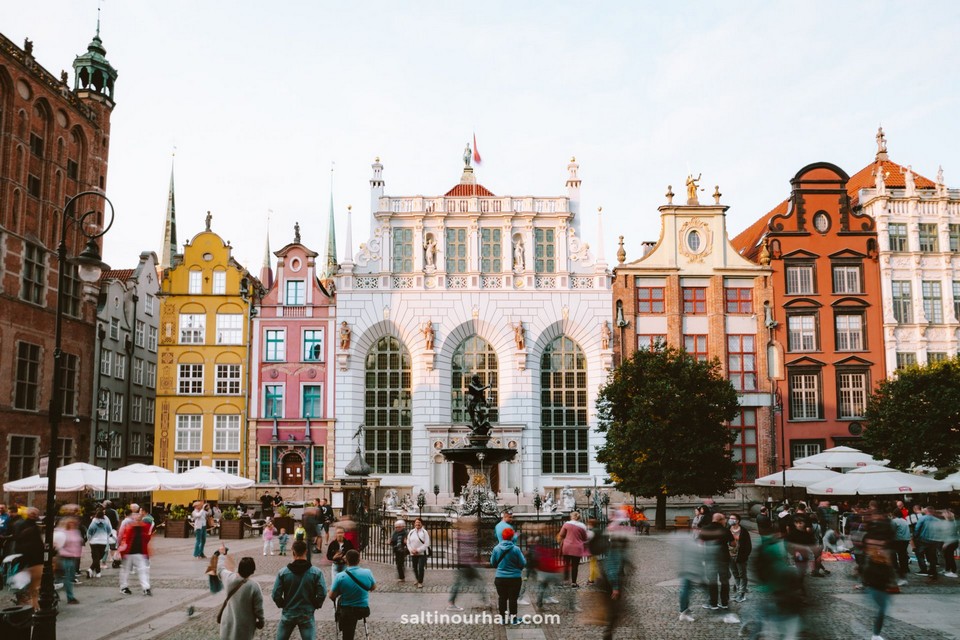
Other Gdansk tourist attractions
- European Solidarity Centre (Europejskie Centrum Solidarności)
- Museum of the Second World War (Muzeum II Wojny Swiatowej)
- Westerplatte port area (The military area of Westerplatte): The first place the Nazis attacked in Poland during World War II. There are quite a few buildings left after the war. There are also many records of the war shown in this area. I find it quite interesting too. Come to read to know that the Poles are extremely resilient and indomitable!
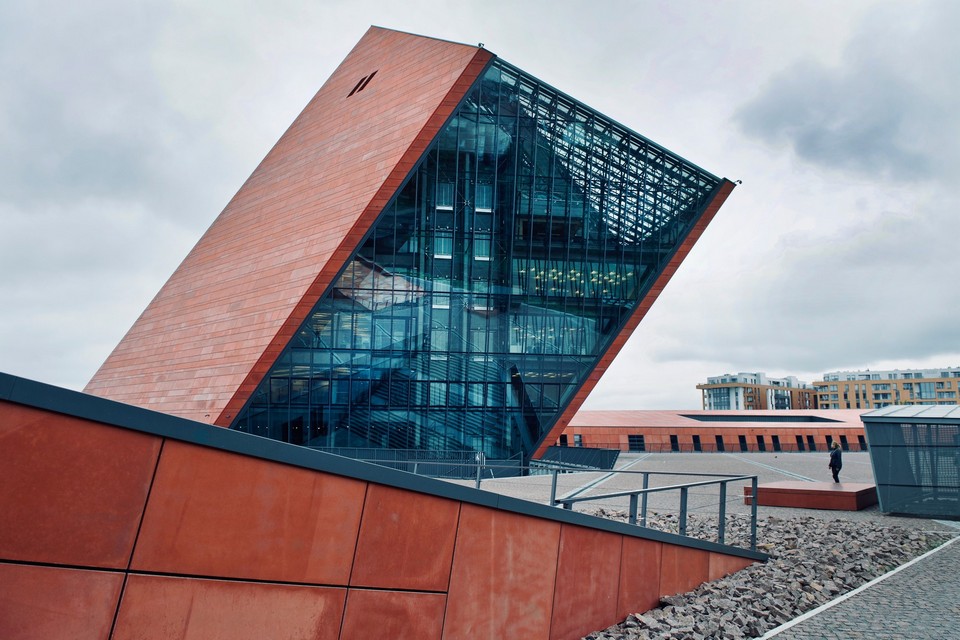
Malbork Castle
Don’t just visit Gdansk only! My motto has always been to go less with quality instead of always moving between cities. If you have taken a trip to Gdansk, you should spend half a day to visit the world’s largest brick medieval castle, Malbork.

Malbork Castle was built in the 13th century, is a trench of the Teuton Knights (Teutonic Order) – the Catholic Church of Germany. Later it became the Polish royal palace. During the Prussian dynasty, Malbork became a refuge for the people. The latter was heavily destroyed during World War II. It is now a popular UNESCO heritage site in Poland.
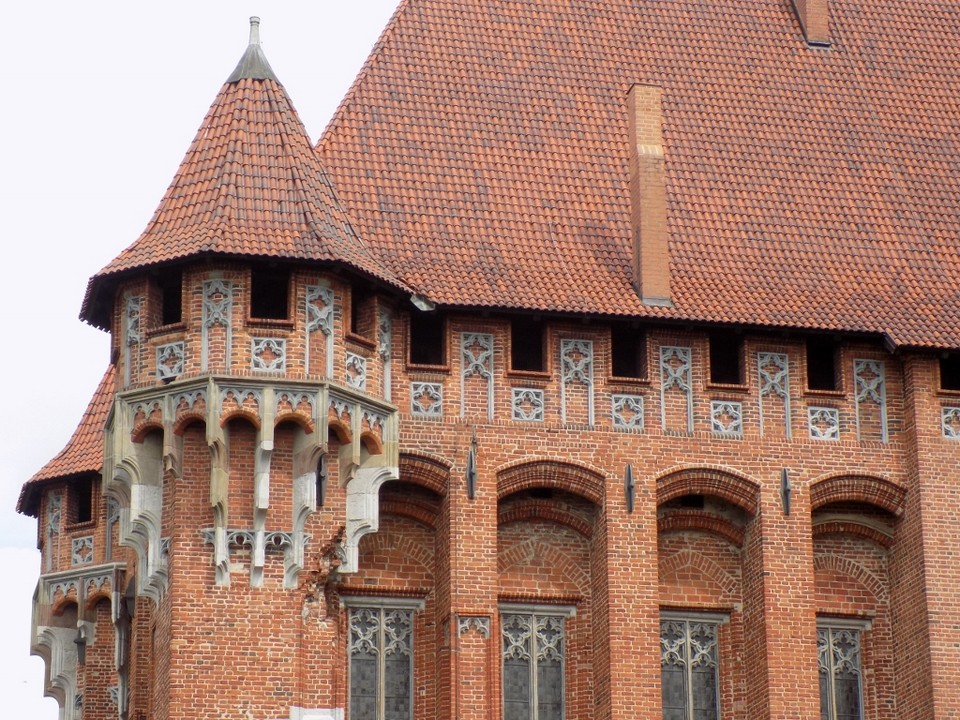
Private Tour of Malbork Castle from Gdansk
Malbork is about 45 minutes by train from Gdansk. Malbork Castle was recognized by UNESCO as a world cultural heritage in 1997 as the largest Gothic brick building in the world. This castle was built in the 12th century – typical of a medieval fortress.
Gdansk guide: Suggested Gdansk travel itinerary 3 days 2 nights
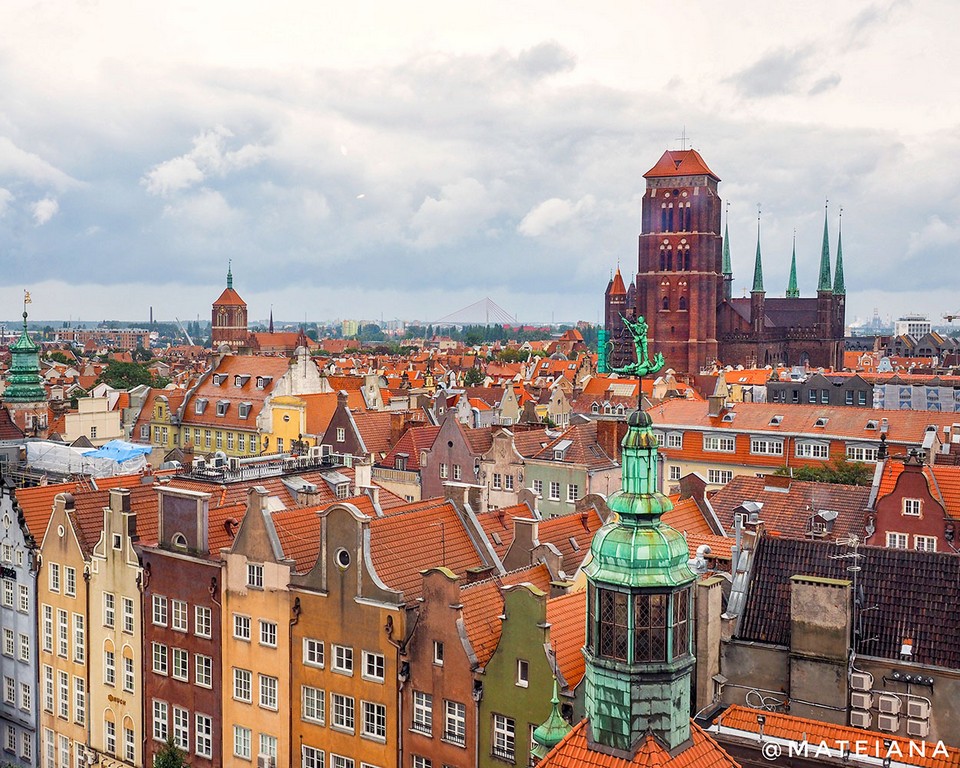
For me personally, self-sufficient travel to Gdansk needs about 2 full days is enough. If you still have time, visit Malbork Castle – 45 minutes by train from Gdansk.
- Day 1: Old Town — Artus Court — Dluga Street — St. Mary’s Church — Mariacka Street — Port area.
- Day 2: Westerplatte area. You just need to find the way to Westerplatter. This place is about 13km from the center of Gdansk: World War II Museum and Military museum).
- Day 3: Visit Malbork Castle if you have time.
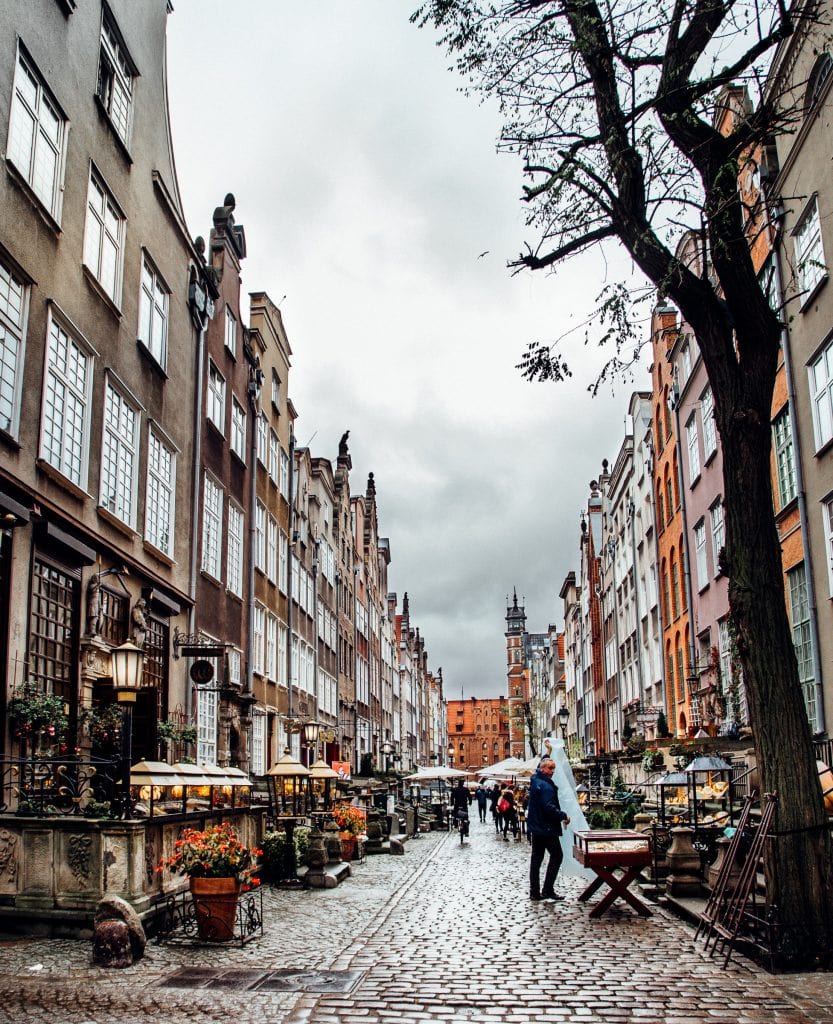
Gdansk travel guide: What and where to eat in Gdansk
Gdansk has a fairly large Forum shopping mall located right opposite the old town. It offers a lot of food from Polish traditional cuisine to Asian cuisine or fast food. The price is also around €5 and you already have a pretty good meal.
In addition, most of the streets in the old town have a lot of restaurants. Please look at the menus outside first and then choose which restaurant is crowded to enter. The day I went, I ate at Seafood Station Restaurant , Bar & Grill and Thai Thai restaurant specializing in Thai dishes in the old town.
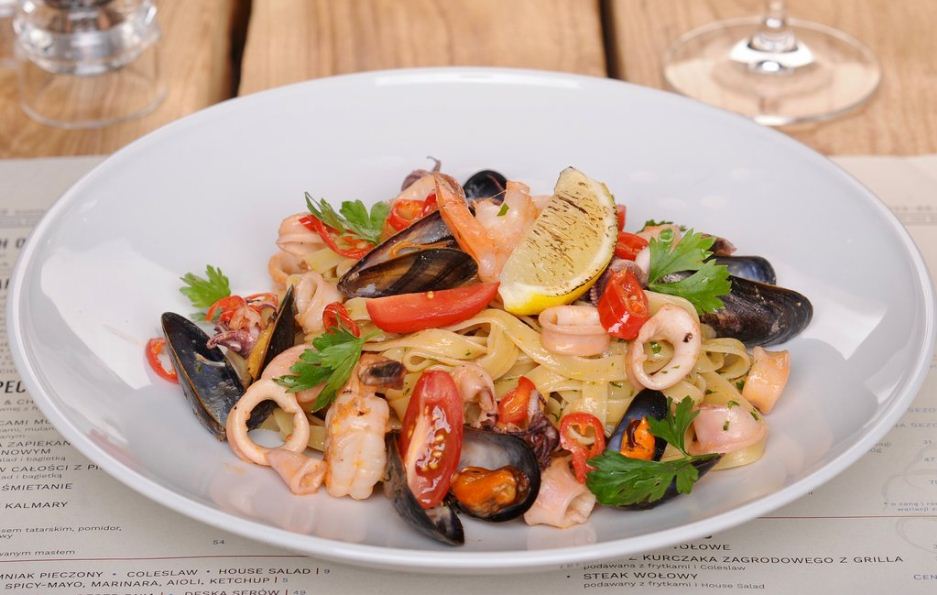
Also, remember to eat ice cream at Dluga Street. Ice cream costs €1.5-2 but it’s delicious!!
Gdanks guide: Traveling cost
- Hotel: €15/night
- Meals: €15-20/day
- Traveling: €3
Summary of travel costs to Gdansk is really very cheap compared to other countries. Average daily only about €40 is too good. I see a lot of visitors from Germany and Nordic countries like Finland, Sweden, Denmark come here. The price is so cheap, only half or even 1/3 compared to those countries, but traveling is too convenient.
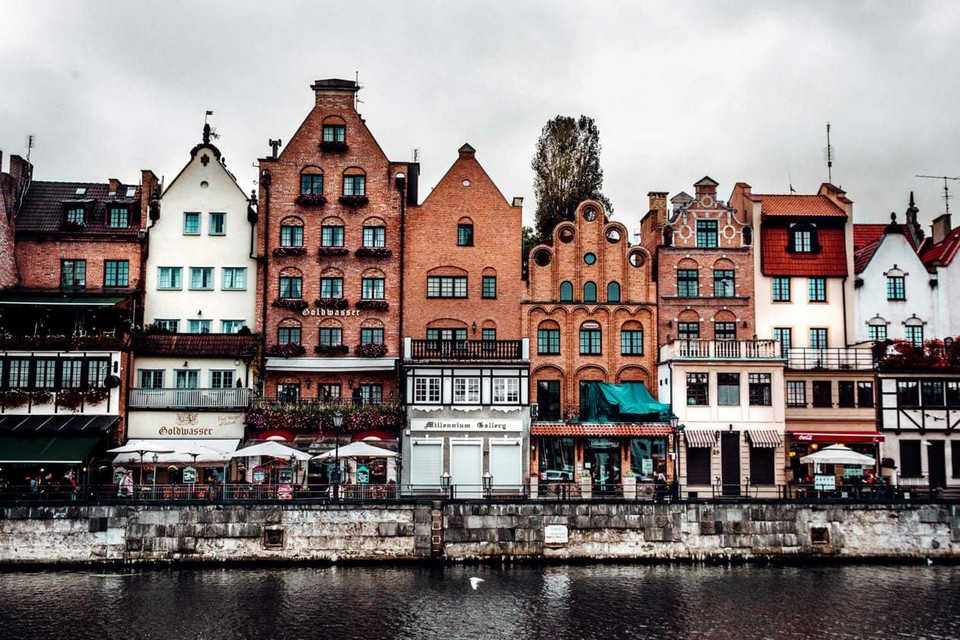
Gdansk travel guide: Some Gdansk travel tips before you go
- The beautiful city of Gdansk is one of the most popular destinations that has emerged in recent years. So it maybe extremely crowded in the summer.
- Eating out in Gdansk is cheap and delicious. Please check out the must-try restaurants in Gdansk.
- Gdansk people in particular and Poles in general rarely speak English. Rather, many people do not know English. You should always have at least Google translate app on your phone.
- Poles will be happier if you know at least Good Morning in Polish (Dzien Dobry), and Thank you (Dzieki).
- Before coming to Gdansk, it was difficult for me to imagine what the city would be like. I think there will be similarities with Baltic countries like Lithuania or like the capital of Warsaw. But then I went to see the city is extremely beautiful, I like it very much. It is recommended that you go if you intend to travel to Poland. I went through 4 cities of Poland, my favorite is Gdansk and Zakopane. Then there is Krakow and finally the capital, Warsaw. Indeed, Poland tourism is not inferior to other European countries!
- If possible, you should go to the old town in the morning. Around 8-9am, there are still quite a few people, so taking photos on the street will be easier and more convenient. Going along Dluga Street will be a small harbor where boats dock to carrying tourists to visit. The harbor is also very beautiful. In general, for me personally, Gdanks tourism is the right standard: “wonderful, quality, cheap” !
- From the Westerpletter area to the center usually takes an hour to have a bus. You should watch the time for your departure and return to not to be miss the bus. This is also the port where you will take ferry to other countries.
- Important: Gdansk was known as Danzig under German influence. There was also a very long period of self-rule that was pro-German. But DO NOT call Gdansk as Danzig. Try to learn how to pronounce the name of this city. Or at the very least you can read it as Danzica. Because the people of Gdansk hate the name Danzig.
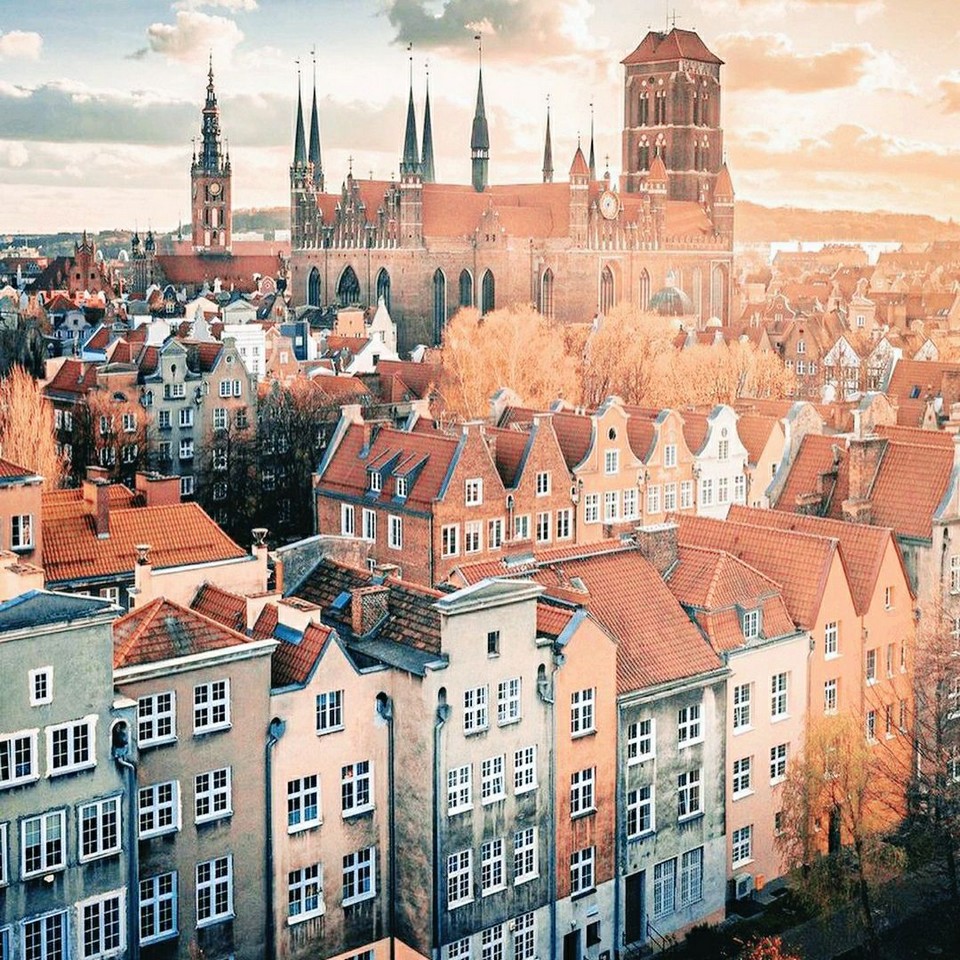
Gdansk guide: Some best day tours, trips, activities and transfer services, tickets in, from and to Gdansk you can refer to
- Private World War II Tour of Gdansk
- Private Bike Tour of Gdansk
- Traditional Polish Food Private Tour in Gdansk
- Beer Tasting Tour in Gdansk
- Private Vodka Tasting Tour in Gdansk
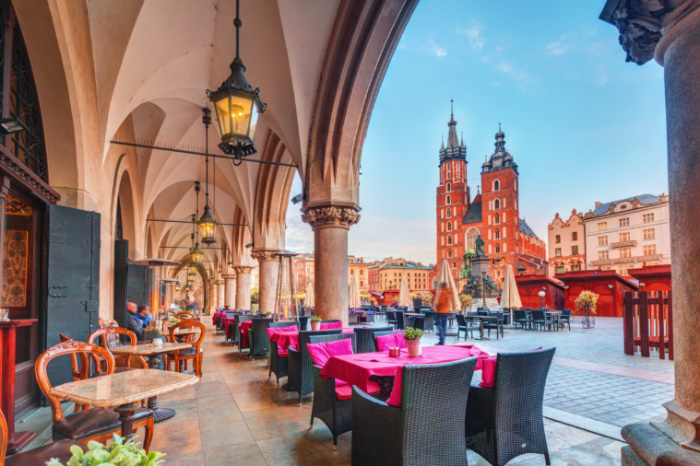
Happy traveling, check out more Poland travel guide here .
Related articles
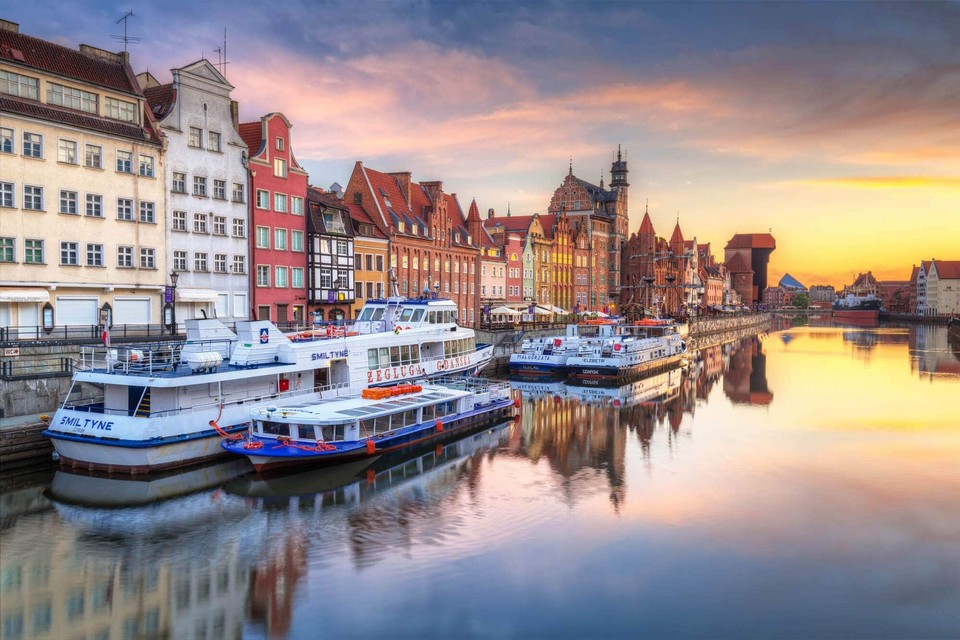
RELATED ARTICLES MORE FROM AUTHOR
Where to go & what to do in varanasi — 15+ places to visit & best things to do in varanasi, what to buy in indonesia — top +9 famous gifts, souvenirs & best things to buy in indonesia, what to buy in kyoto — 31+ must-buy kyoto souvenirs, gifts & best things to buy in kyoto, what to buy in india — 29+ best gifts from india & best things to buy in india.

What to buy in Korea? — Top +23 cheap, famous & best things to buy in Korea

What to buy in USA? — 17+ must buy in USA & best things to buy in USA
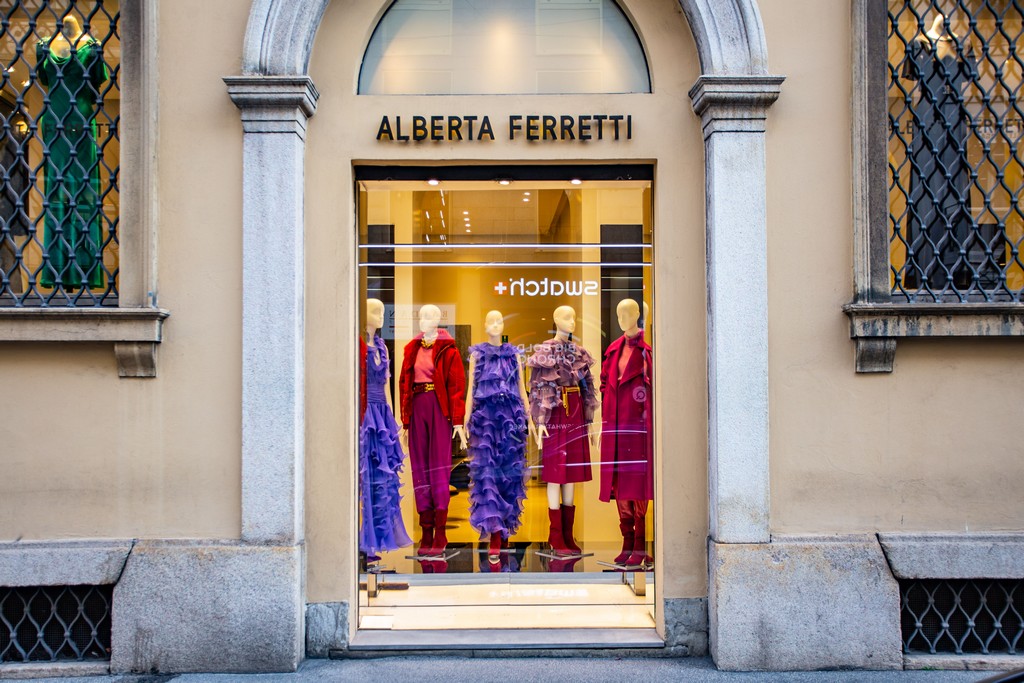
What to buy in Italy? — 19+ top souvenirs & best things to buy in Italy
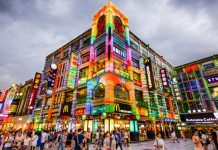
What to buy in Guangzhou? — 11+ best things to buy in Guangzhou & best shopping places in Guangzhou

What to buy in Tibet? — Top 9+ tibet souvenirs, gifts & best things to buy in Tibet
Editor picks.

Where to eat in Nha Trang? — 27+ budget, best places...

What to eat in Singapore? — 10+ must-eat & best street...

Must eat in Nha Trang — 45+ best street food in...
Popular posts.

What to buy in USA? — 17+ must buy in USA...

What to buy in Korea? — Top +23 cheap, famous &...

Must buy souvenir in Taiwan — Top 17+ most famous, cheap...
Popular category.
- Inspiration + Guide 1462
- Trip Inspiration 468
- Food + Drink 211
- Thailand 209
- Coasts + Islands 193
- Vietnam 168
- South Korea 168
- Travel Photos 144
- Work for Us
- Terms & Conditions
- Privacy Policy

20 Wonderful Things to do in Gdansk: Museums, History and Travel Guide
December 30, 2023 | Posted in: Poland
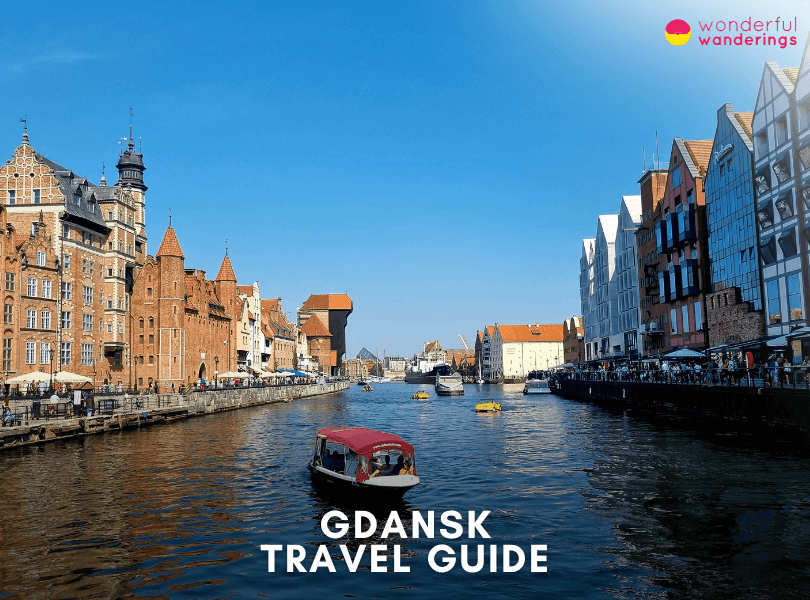
Gdańsk is a major port city on the Baltic Sea coast in northern Poland. It is located at the mouth of the Motława River and lies in the Pomeranian Voivodeship, of which it is the capital and largest city. Gdańsk forms part of the Tricity metropolitan area and the nearby cities of Gdynia and Sopot. Gdańsk is in the Pomeranian Voivodeship, the province's capital and largest city, with a population of 457,298 people as of 2023.
Gdańsk has a long history dating back to the 10th century when it was founded as a fishing village. It was part of the Duchy of Pomerelia before joining the Hanseatic League in 1361, which brought increased trade and prosperity. Gdańsk has endured various rulers over the centuries, from Polish kings to Prussian and German control and back to Poland in 1919 after WW1. Gdańsk was reincorporated into Poland after 1945. Gdańsk was the birthplace of the anti-communist Solidarność movement. Gdańsk has focused on rebuilding, attracting tourists and revitalizing its shipbuilding and maritime industries since the fall of communism.
Gdańsk offers visitors various attractions and activities to discover its complex history and culture as a medieval port city on the Baltic coast. Must-see sites include wandering the historic cobblestone streets of the Main Town to view landmarks like the towering St. Mary's Church, Artus Court and Neptune's Fountain. The iconic shipyard gates lead to the captivating European Solidarity Centre museum recounting the anti-communist movement born in Gdańsk. Visitors can admire views of spires and gabled roofs on a Motława River boat tour. The National Maritime Museum's interactive displays showcase shipbuilding and deep sea artifacts. World War Two history comes alive at Westerplatte and the iconic medieval crane is still towering over the harbor. Sample Baltic amber jewelry and handicrafts between the quirky architecture lining Mariacka Street. Gdańsk rewards pedestrians roaming between Old World trading houses and dramatic churches infused with centuries of Portuguese, Dutch, French and Hanseatic German influences unique to Baltic culture. Gdańsk is in the Central European Time zone, UTC+1. It observes Central European Summer Time (UTC+2) when daylight savings is in effect from late March to late October each year.
Listed below are the things to do in Gdańsk.
- Gdańsk Old Town. Gdańsk Old Town is in northern Poland at the mouth of the Motława River. It was established in the 10th century and joined the Hanseatic League in the 14th century, increasing trade and prosperity. Gdańsk soon became one of the largest and wealthiest cities on the Baltic coast. The old town suffered enormous damage in WWII but was reconstructed. It is renowned for its spectacular medieval and Renaissance architecture along picturesque cobblestone streets. Highlights include the 15th-century Artus Court, St. Mary's Basilica and the iconic Great Armoury building.
- European Solidarity Centre. The European Solidarity Centre (ESC) in Gdańsk, Poland, commemorates Solidarity, the independent trade union born out of worker strikes at the Gdańsk Shipyard in 1980. The ESC opened on the 34th anniversary of the Gdańsk Agreement in 2014. The main attraction is a permanent multimedia exhibition detailing Solidarity's history across seven interactive halls using archival materials, documents, films and art installations. Other facilities include a library, media center, academic research facilities, conference rooms, a winter garden, shops and a restaurant.
- Mariacka Street. Mariacka Street is in Gdańsk's Old Town neighborhood. It is lined with beautiful burgher houses dating back to the Renaissance and Baroque periods. The narrow cobblestone street feels like a step back. Highlights include admiring the decorated architecture, visiting amber jewelry shops, which Gdańsk is famous for and dining at cafes serving Polish fare. The street is also home to attractions like the Archaeological Museum in the Naturalists' House.
- Highgate (Brama Wyżynna). The High Gate (Brama Wyżynna) is a Renaissance-style fortified gate built in 1574 and 1588 as part of Gdańsk's city walls. Inside is a small tourist information center featuring ornately carved decorations and Latin inscriptions highlighting virtues. It features an automated procession of figures, including knights, ladies and the Polish king Jan III Sobieski, on horseback. The structure makes an impressive backdrop for photos.
- Artus Court. Artus Court was a meeting place for medieval Gdańsk's elite merchants and an event venue. Featuring a magnificent interior with colorful ceiling depictions and enormous stoves, it also houses the Gdańsk History Museum, exhibiting artifacts through the ages. Visitors can admire the architecture and decor, learn about the city’s history and attend classical music concerts held in the Grand Hall.
- Neptune's Fountain. Neptune's Fountain in central Gdańsk dates to 1633. The Baroque fountain features a bronze statue of Neptune atop a richly decorated basin, representing the city's maritime trade. The statue was hidden during WWII to save it from being melted by the Nazis. The restored granite fountain remains an atmospheric centerpiece along the historic Long Market, making an excellent photo backdrop.
- Oliwa Cathedral. Oliwa Cathedral was reconstructed from a Gothic monastery into an ornate Baroque-Rococo form after fires and wars. Home to the renowned Oliwa Pipe Organ with over 8,000 elaborately carved, gilded pipes, highlights include admiring the decor, attending frequent organ concerts and visiting the Diocesan Museum of treasures and artifacts.
- Gdańsk Crane. The iconic brick Gdańsk Crane functioned as a harbor loading crane and fortified city gate. Featuring circular towers, walls and elevated wooden machinery operated by men walking inside giant wheels, it could lift 2-tonne loads to 27 meters high. It is a branch of the National Maritime Museum and visitors can tour 17th-century port life exhibits and views from 25 meters up overlooking the Motława River.
1. Gdańsk Old Town
Gdańsk Old Town (Polish. Stare Miasto w Gdańsku) is located in the city of Gdańsk in northern Poland. Gdańsk is situated on the Baltic Sea coast, at the mouth of the Motława River. The exact address of Gdańsk Old Town is Długi Targ, Gdańsk, Poland. Gdańsk Old Town has a long and fascinating history. It was established in the 10th century when Gdańsk was founded by Mieszko I, Duke of Poland. In the 14th century, Gdańsk joined the Hanseatic League, an alliance of merchant guilds and market towns in Northern Europe. This brought increased trade and prosperity to the city. Gdańsk soon became one of the largest and wealthiest cities on the Baltic coast. It continued to thrive for centuries as an important port and trading hub. Gdańsk Old Town suffered enormous damage during World War II, over 90% of its buildings were destroyed. A meticulous reconstruction project was undertaken to rebuild the historic center to its former glory. The architecture and layout of the original buildings were recreated using old paintings and photographs as reference. The beautifully restored Gdańsk Old Town allows visitors to step back in time and glimpse the city's storied past.
Gdańsk Old Town is renowned for its spectacular medieval and Renaissance architecture. Visitors can wander along picturesque cobblestone streets with ornately decorated burgher houses, Gothic churches and historic merchant townhouses. Architectural highlights include the 15th-century Artus Court, St. Mary's Basilica (the largest brick church in the world) and the iconic Great Armoury building. There are many interesting things visitors can see and do in Gdańsk Old Town. A must-do activity is soaking in the atmosphere while strolling down Długi Targ (Long Market), the main thoroughfare dotted with beautiful historic buildings. Check out Neptune's Fountain in the center of Długi Targ, a symbol of Gdańsk created in 1633. Foodies will enjoy sampling traditional Polish cuisine at one of the many restaurants, like the famed Pierogarnia Mandu, which specializes in dumplings. Popular river cruises along the Motława River offer unique vantage points to view Gdańsk's architecture. Visitors interested in history can visit museums like the Gdańsk Museum of Amber to learn more about the city's trading heritage. Shopping aficionados will love hunting for Baltic amber jewelry, ceramics, artworks and handicrafts at souvenir stalls and galleries. Gdańsk Old Town offers fun activities for visitors of all ages and interests.
Gdańsk Old Town is located in the city center and can be accessed on foot. It is easily reached by bus, tram, taxi or Uber. Visitors can also take the train from Gdańsk's main train station, Gdańsk Główny and arrive at Gdańsk Śródmieście station. This train station sits on the edge of the Old Town. Entry to Gdańsk Old Town is free. Visitors only need to pay admission fees for certain attractions like museums or to go up the tower of St. Mary's Basilica.
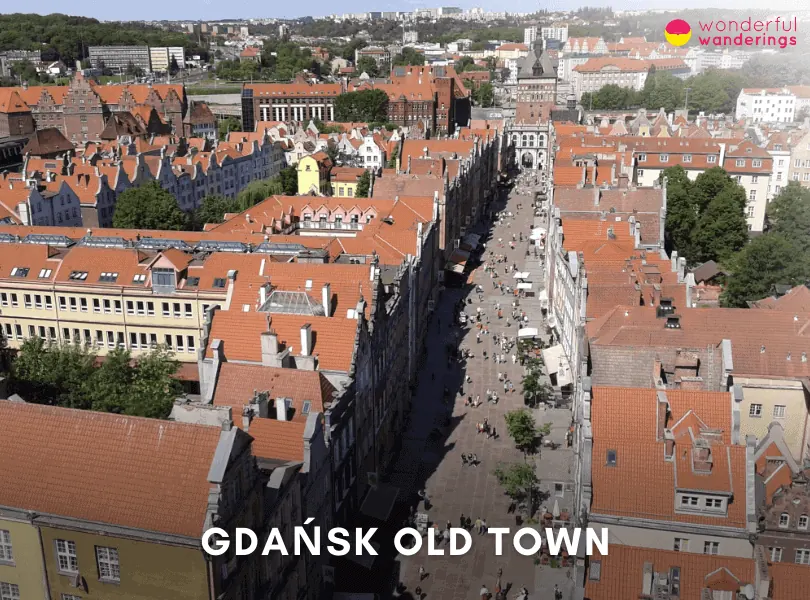
2. European Solidarity Centre
The European Solidarity Centre (ESC) is located in Gdańsk, Poland, at Plac Solidarności 1 (Solidarity Square 1). The ESC opened on August 31, 2014, on the 34th anniversary of the signing of the Gdańsk Agreement, which led to the creation of Solidarity, the first independent trade union in the Communist bloc. The ESC was established to commemorate and promote the ideals of the Solidarity movement, which began with worker strikes at the Gdańsk Shipyard in 1980. Led by electrician Lech Wałęsa, Solidarity grew into a mass social movement that contributed to the eventual fall of communism in Poland and across Eastern Europe. The design of the ESC building, with its rust-colored steel walls, is meant to evoke ships under construction at the Gdańsk Shipyard. The 5-story structure contains over 25,000 square meters of space, including a permanent exhibition, temporary exhibition halls, a multimedia library, archives, conference rooms, a winter garden, shops and a restaurant.
The main attraction at the ESC is the permanent exhibition detailing the history of Solidarity. Spread over seven halls on two floors, the interactive multimedia exhibition utilizes archival materials, documents, photos, films and art installations to immerse visitors in the story of the Solidarity movement. Key items on display include the original 21 demands written by striking workers in 1980, the overhead crane operated by Solidarity activist Anna Walentynowicz, a bullet-pierced jacket from a victim of the 1970 shipyard massacre and the desk of opposition leader Jacek Kuroń. The exhibit walks through major events like the August 1980 strikes, the declaration of martial law in 1981 and Poland's transition to democracy in 1989. The permanent exhibition best suits adults and high school/college students interested in Solidarity and Poland's modern history. Audio guides are available in 11 languages. Visitors should plan on spending at least 2 hours exploring the multimedia exhibit. Other facilities at the ESC include a library with over 100,000 books, a media center, academic research facilities, conference rooms, a winter garden that hosts cultural events and a restaurant and shops on the ground floor. The ESC also has a children's play area called the Play Department.
The ESC can be reached by public transportation, taxi, bike or car. The nearest tram stop is Solidarności. The building has an underground parking garage accessible from ul. Stągiewna. Admission to the permanent exhibition costs 30 PLN ($7, 6€, 4£). Discounts are available for students, seniors 60+ and families. Access to the building and winter garden is free. Temporary exhibitions usually cost extra.
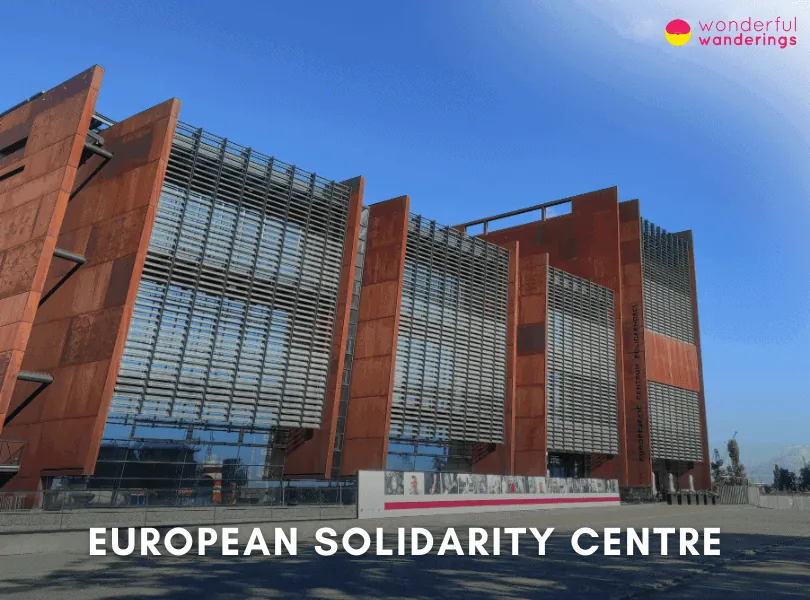
3. Mariacka Street
Mariacka Street is located in the Old Town neighborhood of Gdańsk, Poland. Gdańsk is a port city on the Baltic Sea coast in northern Poland. Mariacka Street has existed since the 14th century. It was originally known as “Our Lady's Street” in Latin, referring to the nearby St. Mary's Basilica. In the Middle Ages, Mariacka Street was home to shoemaking workshops. Gothic tenement houses were built along the street from the late 15th century onward. Mariacka Street is special because of its well-preserved historic architecture and atmosphere. The street is lined with beautiful burgher houses that date back to the Renaissance and Baroque periods. Many houses have decorative terraces and porches protruding over the narrow cobblestone street. Carvings and engravings of religious and mythological scenes adorn the facades. Mariacka Street was destroyed by bombing raids in 1945. A meticulous reconstruction was undertaken between the 1950s and 1970s to restore the street. Mariacka Street feels like a step back in time, allowing visitors to experience the historic charm of Gdańsk.
There are several things visitors can do on Mariacka Street. Wandering along the cobbled lane and admiring the architecture is a must. Visitors can also check out the many amber jewelry shops, as Gdańsk is famous for its amber. Foodies will enjoy the numerous cafes serving Polish fare. The street is also home to art galleries and museums like the Archaeological Museum in the Naturalists' House at no. 25/26. Mariacka Street would appeal most to history and architecture enthusiasts, as learning about its medieval origins and reconstructed buildings is fascinating. It is also a good activity for families with older children who can appreciate the historic surroundings. Photography enthusiasts will find the picturesque streetscapes dotted with gargoyles and ornamentation very photogenic.
Gdańsk is accessible by train, bus or car. Mariacka Street is located in the heart of the Old Town, making it accessible from most accommodations. Public transport like trams and buses can also bring visitors to stops near Mariacka Street from different parts of Gdańsk. Entry along Mariacka Street is free, though individual attractions may charge admission fees ranging from 10 to 20 PLN ($2, 2€, 1£) to ($4, 4€, 2£).
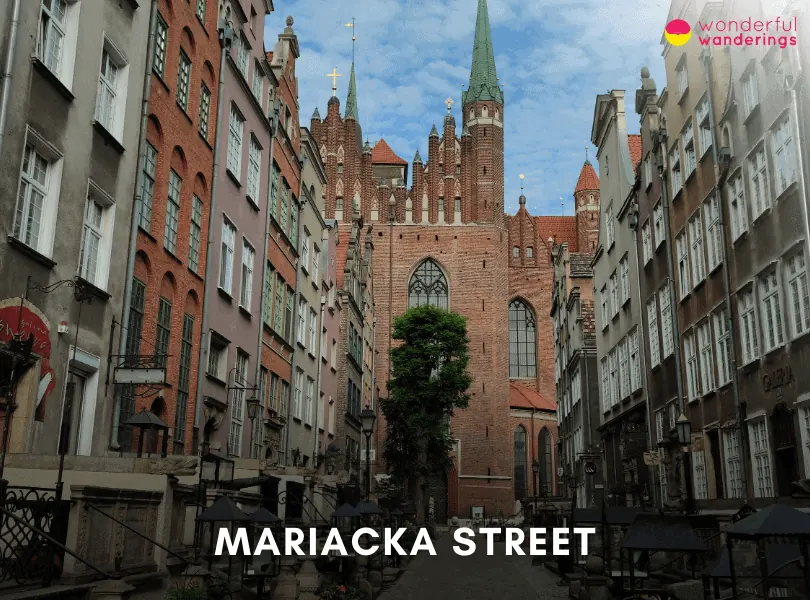
4. Highgate (Brama Wyżynna)
The High Gate, known in Polish as Brama Wyżynna, is located in Gdańsk, Poland at Wały Jagiellońskie Street 2A. The Renaissance-style gate was built between 1574 and 1588 as part of the city's new fortifications. It was designed by architect Willem van den Blocke and served as the main entrance to Gdańsk, opening onto the Royal Route into the city. For almost 300 years until 1878, the High Gate remained part of a larger fortified complex with walls, bastions and a moat. Today, the free-standing gate is a historic landmark in the city. The structure features ornately carved sandstone decorations on the facade, with three coats of arms above the arched passageways – the Polish eagle in the center, the Gdańsk coat on the right and the Royal Prussian coat of arms on the left. The building has two floors, with four lion statues standing guard atop the gate. Latin inscriptions on the walls highlight virtues like justice, piety, peace and wisdom.
Inside the gate is a tourist information center run by the Gdańsk History Museum. Visitors can stop by to learn about the gate's history, pick up maps and brochures or ask the staff questions about attractions in the city. The small space inside also hosts temporary exhibits related to Gdańsk's history. Outside the High Gate, visitors can admire the historic building from the street Wały Jagiellońskie. The structure makes for an impressive photo backdrop. On the hour, an automated procession of figures emerges from the gate, including knights, ladies and the Polish king Jan III Sobieski on horseback. Tour groups often gather to watch the spectacle.
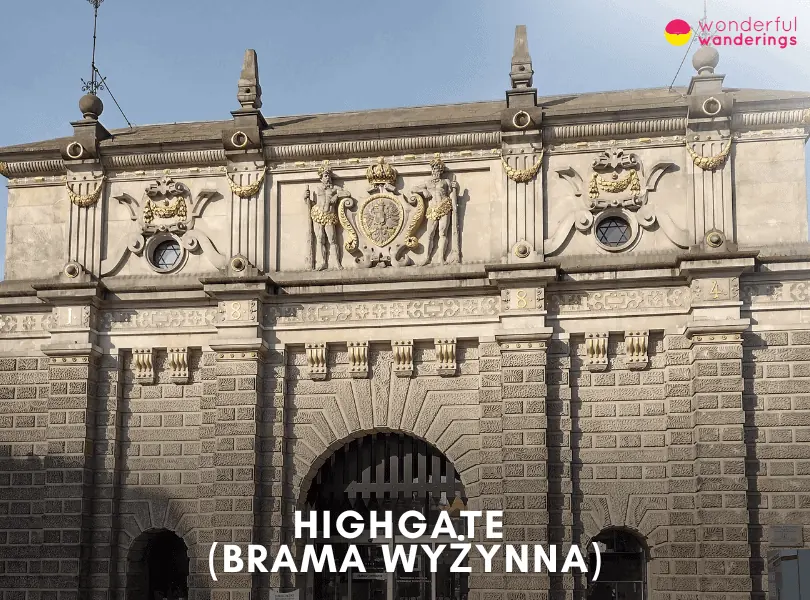
The gate is ideally suited for adults interested in architecture, history and photography. The automated procession draws interest from visitors of all ages. Getting close to the gate can be difficult for those in wheelchairs or with limited mobility, as some stairs and cobblestones lead up to the entrance.
The High Gate is located in Gdańsk's Main Town area, near the Gdańsk Główny train station. It can be reached by local tram (stop Brama Wyżynna), city buses and taxis. Tourists staying in the Old Town area can easily walk. There is some metered parking nearby. Entry to see the small interior exhibits costs 5 PLN ($1, 1€, 0.86£) per person. Access to the street and external facade is free. The tourist information center inside provides free maps and guidance. Guided walking tours in Gdańsk often include a stop at the High Gate to talk about its history and architectural significance.
5. Artus Court
The Artus Court (Polish. Dwór Artusa) is located at Długi Targ 43/44 in Gdańsk, Poland. Gdańsk is a port city on the Baltic coast in northern Poland. The Artus Court has a long and illustrious history. It was constructed between 1348 and 1350 as a meeting place for merchants and a center of social life for the elite members of the city. It was named after the legendary King Arthur and the Knights of the Round Table, as medieval merchants saw themselves as nobles and knights. In its heyday during the 16th and 17th centuries, the court hosted lavish balls, weddings and other events for wealthy citizens and visiting dignitaries. Artus Court features its magnificent interior decor. The Grand Hall features a colorful ceiling from 1617 depicting wildlife hunting scenes. The high walls are adorned with enormous 19th-century Gdańsk-style stoves decorated with biblical reliefs. Displays include precious 16th-century majolica pottery, gold jewelry and goblets for ceremonial occasions. The building also houses the Gdańsk History Museum, exhibiting historical artifacts of the city through the ages.
Visitors to the Artus Court today can admire the ornate architecture and decor, learn about Gdańsk’s history in the museum and attend classical music concerts held in the Grand Hall. Guided tours can allow visitors to view the main halls and take in detailed explanations from knowledgeable guides. The court also houses an upscale restaurant serving traditional Polish cuisine if visitors wish to take a culinary journey into history. The Artus Court appeals most to history enthusiasts interested in learning about Gdańsk's prosperous past as a medieval trade city. Architecture buffs who can admire the excellent craftsmanship of the interior design. Foodies who want to complete the historical immersion by sampling dishes from a bygone era and classical music lovers, as concerts with musicians dressed in period costumes often occur.
The Artus Court is located in the Main Town of Gdańsk, making it very walkable from most accommodations, shops and restaurants in the historic center. It can be reached in 1.6 kilometers (0.9 miles) from Gdańsk Główny train station by local bus, tram or taxi. Entry tickets to the interior of the Artus Court cost 12 PLN ($3, 3€, 1£). Visitors can pay extra for a guided tour and/or a meal at the onsite restaurant. The building exterior can be viewed for free.
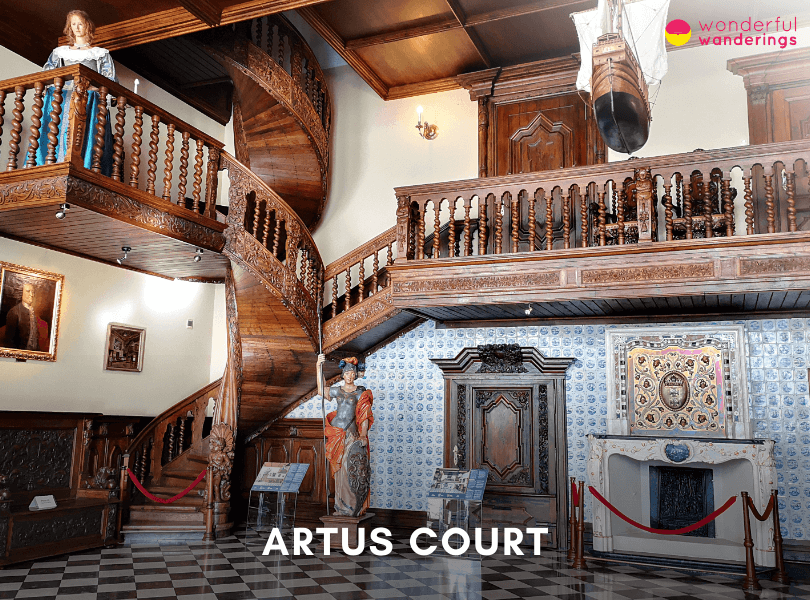
6. Neptune's Fountain
Neptune's Fountain (Fontanna Neptuna) is in the heart of Gdańsk's Main Town at Długi Targ 43/44 (Long Market 43/44). It is along the city's historic Royal Route and the fountain has stood in the center of Long Market since 1633. The Baroque fountain features a bronze statue of Neptune, the Roman god of the sea, standing atop a richly decorated basin. The powerful figure represents Gdańsk's long connection to shipping and maritime trade. The statue was designed in 1617 by architect Abraham van den Blocke and sculpted by Flemish artist Peter Husen using 8 tonnes of bronze. The unique Gdańsk liquor Goldwasser (Goldwater) was born at Neptune's Fountain. When Neptune struck the water with his trident, gold flakes from passing merchant ships spilled into the basin and mixed with the fountain's waters, thus creating the famous drink with floating gold specks. Neptune's Fountain has endured a turbulent history. The original 17th-century fountain was pulled down in 1836 with plans for something grander, but construction stalled. A simpler temporary plaster version was erected, which survived until WWII. The Nazi occupation regime planned to melt the bronze statue for armaments, but Polish resistance fighters hid the figure. A new granite fountain was rebuilt in 1954 using the original Neptune statue.
Visitors gather around the restored fountain to admire the detailed sculpture and flowing water. The striking centerpiece adds old-world charm to the atmospheric Long Market, lined with colorful historic townhouses. Tour groups often pause here while guides recount Gdańsk's maritime heyday when ships laden with goods docked along the Motława River. The fountain makes an excellent photo backdrop, especially when illuminated at night. Visitors can get up close to inspect the god Neptune wielding his trident. The four female figures at the base represent major rivers associated with Gdańsk – the Vistula, Oder, Elbe and Rhine. Intricate reliefs decorate the granite basin. Neptune's Fountain appeals to visitors of all ages interested in art, architecture, history and photography. Families enjoy the impressive statue and flowing water. It also draws shoppers and diners to visit Long Market's restaurants and amber shops.
The fountain is in central Main Town, near Gdańsk Główny train station. It can be reached via tram line #2 or #3 to Brama Wyżynna or various buses to Długi Targ. Limited paid street parking is available nearby. Entry to admire and photograph the fountain is free. Neptune's Fountain is outdoors and always open. Occasional public events like concerts may restrict direct access. Guided walking tours of Main Town often stop here to talk about Gdańsk's maritime history.
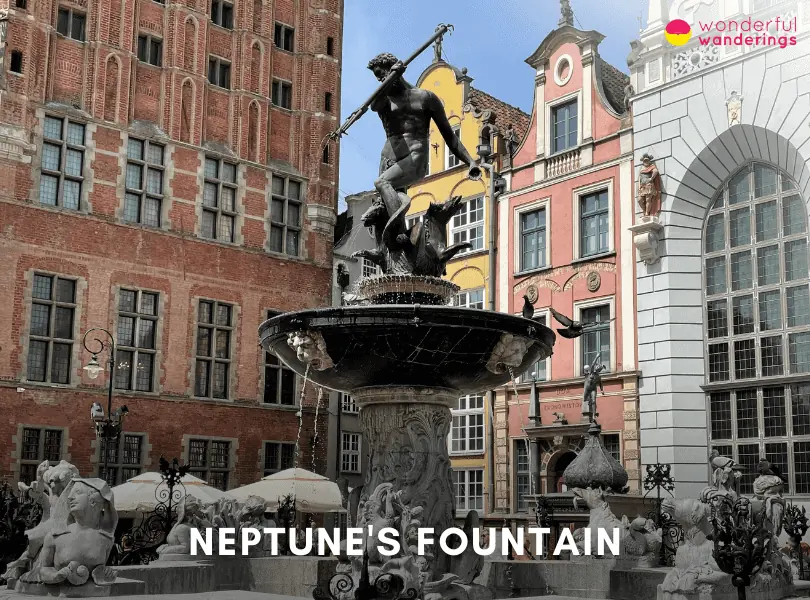
7. Oliwa Cathedral
The Oliwa Cathedral (Polish. Katedra Oliwska) is located at ul. Nowolipie 1, 80-330 Gdańsk, Poland. Gdańsk is a port city on the Baltic Sea coast in northern Poland. The Oliwa Cathedral has a long and fascinating history dating back to the 12th century when it was founded as part of a Cistercian monastery. Fires and wars led to the reconstruction of the Gothic-style cathedral into its present form with exceptional Baroque and Rococo interior decor. Oliwa Cathedral highlights the ornate architectural details and works of art. The centerpiece is the massive Oliwa Pipe Organ, constructed between 1763 and 1788 and renowned as one of the largest and most complex organs in the world. The intricately carved, gilded organ has over 8,000 pipes and is decorated with hand-carved figures of angels, suns and stars. The cathedral also contains many altars, paintings, sculptures and tombstones of great artistic value.
Visitors today can admire the cathedral's architecture and art, attend organ music concerts held regularly and visit the Diocesan Museum to see historical artifacts and treasures. Guided tours are available to view the impressive pipe organ and learn more about the cathedral's history. There is also a restaurant on-site if visitors wish to dine. The Oliwa Cathedral appeals most to classical music lovers, especially organ music lovers, as concerts occur frequently. History and architecture enthusiasts are interested in the cathedral's Medieval origins and Baroque-Rococo reconstruction. Art aficionados who can appreciate the altars, paintings and sculptures. Photography enthusiasts, due to the striking interior and organ views.
The Oliwa Cathedral is located in the Gdańsk district of Oliwa, 5 kilometers (3.1 miles) by car or bus from central Gdańsk. Public bus #122 runs frequently from Gdańsk's main train station (Gdańsk Główny) and stops close to the cathedral. Taxis are also available. Entry to see the cathedral interior costs 8 PLN (2€, $2, 1£) per person. Additional fees apply for photography permits, guided tours, organ recitals and the onsite Diocesan Museum. Visitors can also dine at the cathedral's restaurant or purchase souvenirs from a gift shop.
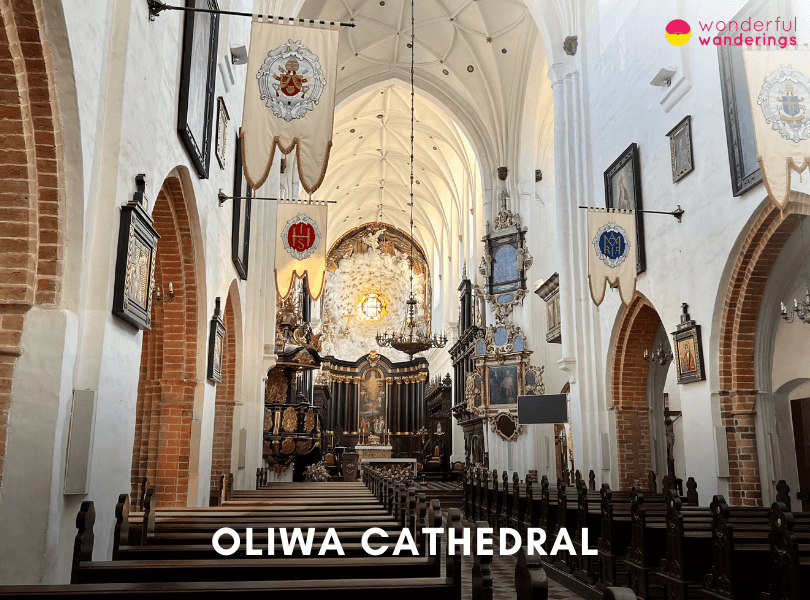
8. Gdańsk Crane
The Gdańsk Crane, known in Polish as Żuraw Gdański, is located in central Gdańsk at Szeroka Street 67/68 along the Motława River. The spectacular Gothic brick structure was built between 1442 and 1444, with an ornately decorated west facade added in 1483. It functioned as a harbor crane for loading goods and a fortified city gate, featuring two circular towers connected by walls and wooden crane machinery in an elevated central section. The Gdańsk Crane could lift loads to 2 tonnes using rope wound around two huge wooden treadwheels, each over 6 meters in diameter. The wheels were powered by men walking inside, enabling the crane to lift cargo from ships on the Motława River up to 27 meters high. The building has defensive features like cannon ports, gun loops and high towers to provide a lookout and protection. It served as an entrance to the city from the harbor. The brick construction and soaring height made it a prominent landmark.
The iconic Gdańsk Crane is a branch of Poland's National Maritime Museum. Visitors can tour exhibits that recreate 17th-century port life, including models of ships, counting houses, granaries and the huge internal wooden gears that operated the crane. The top floor offers excellent views from 25 meters up, overlooking the Motława River and historic harbor. Seeing the massive wooden machinery also gives an appreciation for early lifting technology.
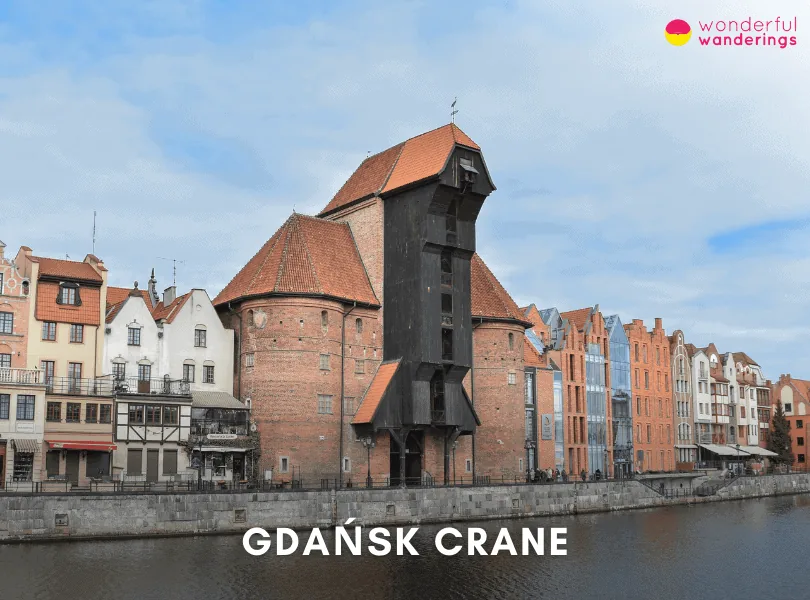
The crane appeals to adults and older children interested in medieval architecture, port history, engineering and photography. The building's narrow spaces and steep stairs make it unsuitable for those with mobility limitations.
The Gdańsk Crane is located in the Main Town area of the city, near the Gdańsk Główny train station. Visitors can take local tram #2 or #3 to the Brama Wyżynna stop or city buses that stop along Długie Pobrzeże. Limited paid street parking is available nearby. Entry to the museum exhibits costs 10 PLN ($2, 2€, 1£) per person. Access to the building exterior and views from Long Embankment are free. Guided walking tours of Gdańsk often stop here to discuss the crane's history and operation.
9. National Maritime Museum in Gdańsk
The National Maritime Museum in Gdańsk (Polish. Narodowe Muzeum Morskie w Gdańsku) is located at Ołowianka 9-13, 80-751 Gdańsk, Poland. Gdańsk is a port city on the Baltic Sea coast in northern Poland. The museum has a long history dating back to 1958 when a Museum's Friends Association was established to create a maritime museum in Gdańsk. It was officially opened on January 1, 1962 and has expanded over the years to encompass several branches across northern Poland. Today, the museum's main branch is housed in the meticulously restored medieval granaries on Ołowianka Island in central Gdańsk.
The National Maritime Museum has an extensive collection of Poland's maritime history and culture over the centuries. The museum holds over 28,000 artifacts, including model ships, naval artillery, ethnographic objects, works of art and archaeological materials recovered from underwater excavations. The granaries contain interactive displays depicting shipbuilding techniques, famous naval battles, artifacts from sunken galleons and Polish maritime exploration around the world. Visitors can explore several permanent exhibitions and temporary displays in the granaries and maritime culture center. Guided tours of the museum ships SS Sołdek and Dar Pomorza are available, bringing history to life by allowing access to these vessels' interior spaces and equipment. The museum also houses conservation workshops, where visitors can observe archaeological preservation. The National Maritime Museum appeals most to Maritime history enthusiasts interested in Poland’s naval past. Nautical archaeology fans can view conserved artifacts firsthand. Ocean exploration aficionados who were eager to learn about Polish maritime exploits and families with children over five who could engage with the interactive shipbuilding exhibits.
The museum's main branch on Ołowianka Island is located in central Gdańsk, near the Gdańsk Główny train station. It can also be reached by local tram or bus. Entry to the permanent exhibitions at the National Maritime Museum costs 18 PLN ($4, 4€, 2£) for adult tickets and 12 PLN ($3, 3€, 1£) for concessions. Extra fees apply for special exhibitions, museum ships and guided tours. Visitors can also purchase combined tickets for 28 PLN ($8, 7€, 4£) to access all branches by ferry and see the full maritime experience.
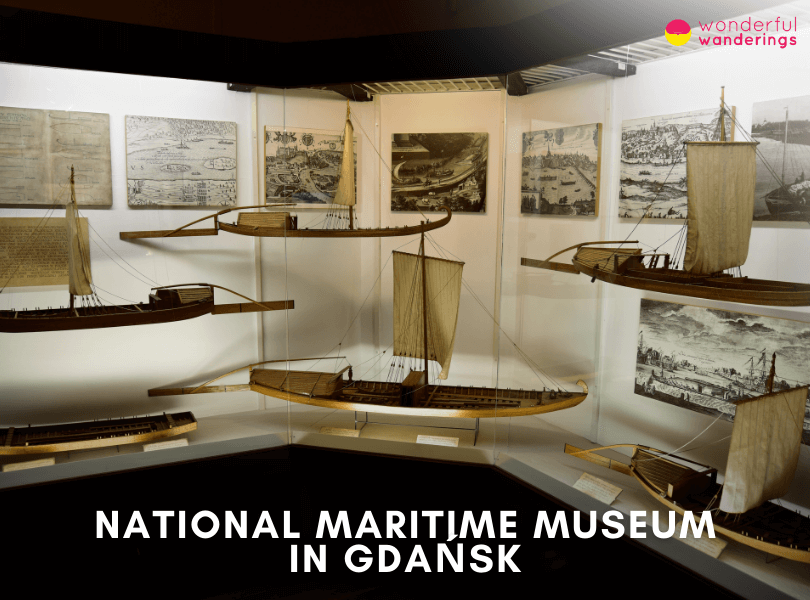
10. Uphagen's House
Uphagen's House (Dom Uphagena) is in central Gdańsk at Długa Street 12 ( within the historic Main Town area. The house was purchased in 1775 by Johann Uphagen, a wealthy merchant, historian, art collector and city councilor. Johan Uphagen had it extensively remodeled in an 18th-century patrician residence style to suit his status. After Uphagen died in 1802, the house stayed in his family for generations. It was converted into a museum in 1991, showing the historic interiors and furnishings of a Gdańsk merchant's home. It functioned as a museum until 1944, when the contents were evacuated and hidden away by German curators. The house itself was destroyed in 1945 during the Soviet capture of Danzig. After the war, the exterior was reconstructed by 1954, but the museum did not reopen until 1998 after extensive restoration.
Visitors to Uphagen's House can tour period rooms that recreate the ambiance of an 18th-century Gdańsk merchant residence. The elaborate interiors reflect the immense wealth flowing through the port city during its heyday in the Hanseatic League. Highlights include the tall Entry Hall with stucco details, the Chinese-themed Tea Room, the extravagant main Drawing Room with mythological wall panels and damask fabrics, the ornate gold-leafed ceiling of the Dining Room and the Music Room with bird motifs. The house also contains some original furnishings and a display of kitchen equipment. Temporary exhibits are housed on the 2nd floor in former bedrooms. There is a small gift shop in the old merchant's office. Uphagen's House appeals primarily to adults interested in local history, historic architecture and decorative arts. Visitors should allow at least an hour to view the main rooms and exhibits. The building's historic design makes accessibility challenging for some.
Visitors can take tram #2 from the station to the Brama Wyżynna stop or buses that stop along Długie Pobrzeże. Limited paid street parking is available nearby. Entry to see the museum exhibits costs 12 PLN ($3, 3€, 1£). Discounts are available for students and seniors. The interior rooms are only accessible by guided tour. The gift shop and exterior of the house can be viewed independently.
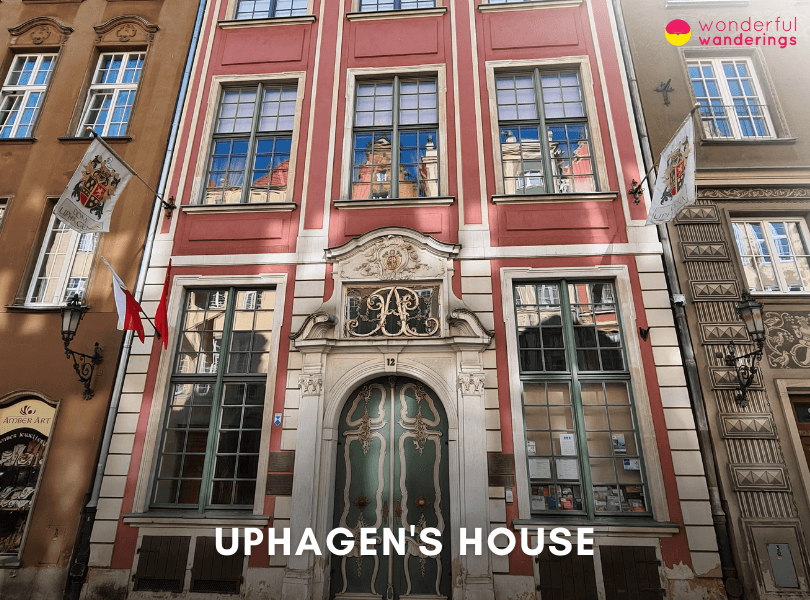
11. Basilica of St. Mary of the Assumption of the Blessed Virgin Mary in Gdańsk
The Basilica of St. Mary of the Assumption of the Blessed Virgin Mary, also known as St. Mary's Church (Polish. Bazylika Mariacka), is located in central Gdańsk, Poland, at Podkramarska 5, 80-834 Gdańsk. St. Mary's has a long and fascinating history dating back to the 14th century when construction began on the Gothic brick church. St. Mary's was expanded and various architectural elements were added in the Renaissance and Mannerist styles. It has endured fires, wars, destruction and meticulous reconstruction to stand today as one of the largest brick churches in the world.
St. Mary's is special because of its immense size and spectacular interior decor, with a volume between 185,000 and 190,000 m3. Its grandeur rivals that of great cathedrals. The 105.5-meter-long, 66-meter-wide interior impresses with its soaring pillars, elaborate 17th-century pipe organ, 15th-century astronomical clock and immense Golden Chapel containing ornate sarcophagi. The church holds about 25,000 people and was elevated to a minor basilica in 1965. Visitors to St. Mary's today can admire the architectural height and scale of the church, view the many artworks inside, including the famous Last Judgement painting by Herman Han and attend organ music concerts when held. It is also possible to take an elevator up the 75-meter tall tower for panoramic views across Gdańsk. St. Mary's appeals to history enthusiasts interested in church origins dating to medieval times. Architecture buffs who can appreciate the brick Gothic and mannerist styles. Art aficionados keen to see The Last Judgement and other work and music lovers who may chance upon one of the occasional concerts
St. Mary's is centrally located in downtown Gdańsk, 0.3 kilometers (0.1 miles) from the Gdańsk Główny train station. It can also be reached by local tram, bus or taxi. Entry to admire the church interior is free. There are small admission fees to access extras like the tower elevator ride (5 PLN) ($1, 1€, 0.86£) or occasional special exhibitions. Guided tours for 120 PLN ($29, 26€, 23£) per group may also be booked.
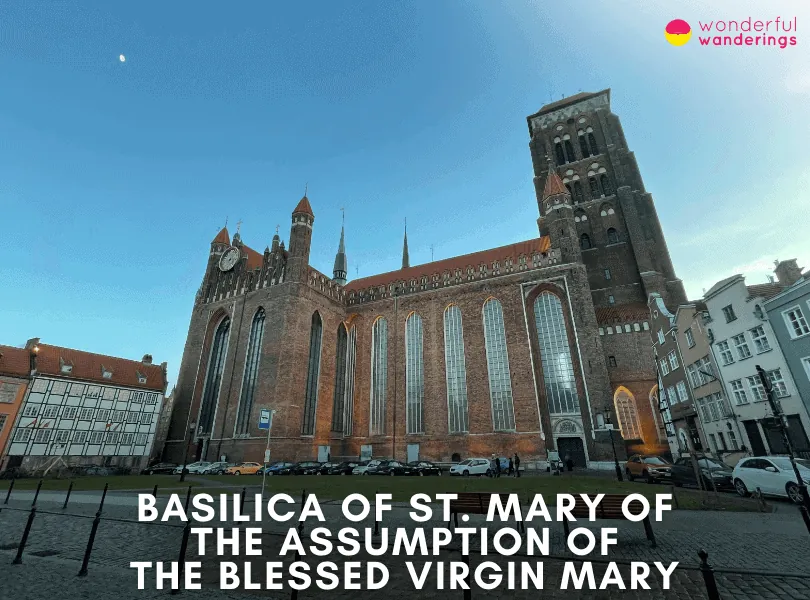
12. Westerplatte
Westerplatte is located in Gdańsk, Poland, at Mjr. Henryka Sucharskiego Street 25 within the former Westerplatte Peninsula. It was the location of the Battle of Westerplatte, the first clash between Polish and German forces in World War II. Westerplatte has a long military history. In the mid-16th century, a fort was built here to defend Gdańsk. In 1925, under the terms of the Treaty of Versailles, Poland was allowed to maintain a small military transit depot on the Westerplatte Peninsula, which was still German territory at that point. On September 1, 1939, Germany attacked the depot, beginning the invasion of Poland. Polish defenders (182) held off over 3,000 German troops for seven days in a symbolic stand.
Westerplatte is preserved as a war memorial and museum. The ruins of the barracks, guardhouses and other military structures stand as haunting reminders of the 1939 battle. The landscape is dotted with memorials like the Monument to the Coast Defenders, a 25-meter tall granite obelisk and a cemetery for the Polish soldiers killed in action. An on-site museum documents the battle. Visitors can walk along the marked sightseeing path to the ruins and memorial sites. The Westerplatte memorial appeals most to adults and older youth interested in World War II and Polish history. Seeing the remains of the bombed-out buildings and military fortifications brings the 1939 battle to life. The museum's photos, documents and exhibits add important context. Those interested in military strategy may appreciate analyzing battlefield tactics.
Westerplatte can be accessed by car, public transit or tour bus, with limited parking available. By public transport, visitors can take tram #2 or #3 from downtown Gdańsk to the Przystanek Muzeum stop and then walk to the museum. The memorial grounds are open year-round. Entry to the Westerplatte Museum cost 10 PLN (2€, $2, 1£) per person. Access to the outdoor memorial park is free. Guided tour options of the battleground are available during the summer. Those staying in Gdańsk's Main Town can also reach Westerplatte by riverboat.
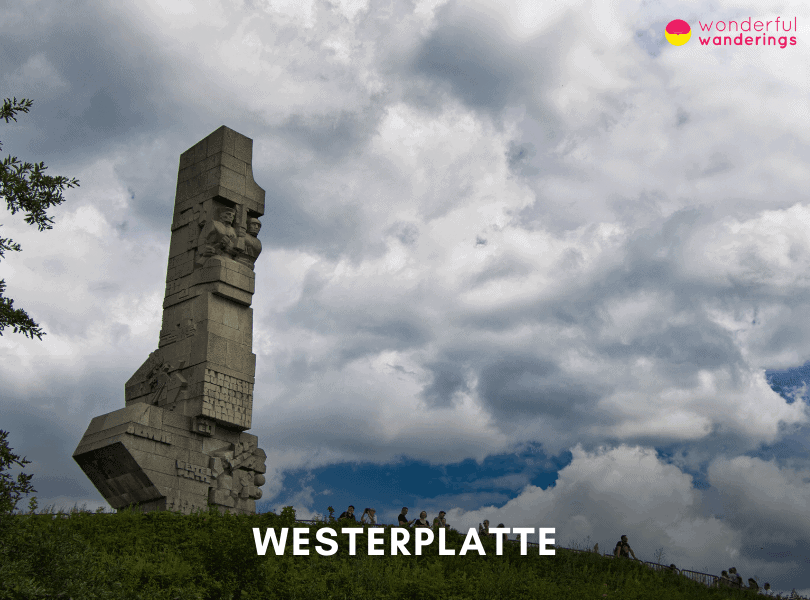
13. Long Market (Długi Targ)
Long Market, known in Polish as Długi Targ, is located in the heart of Gdańsk's Main Town between the Long Lane (Ulica Długa) and Green Gate (Brama Zielona) at Długi Targ 43/44 Długi Targ was initially a merchant road leading to an oval marketplace. After the 1308 massacre of Gdańsk citizens by the Teutonic Knights, it became the city's main thoroughfare. Its official Latin name, “Longa Platea”, was first written in 1331, with the Polish name “Ulica Długa” introduced in 1552. Długi Targ is lined with colorful historic townhouses reconstructed decades after World War II. The buildings feature distinctive architectural styles from Dutch Renaissance to French and Flemish Baroque. Intricate stonework decorates many facades, such as the Golden House's 12 carved biblical scenes.
Długi Targ is home to several iconic landmarks. In the center is the Neptune Fountain, featuring a 1633 statue of the Roman sea god standing atop a richly decorated basin. The fountain pays homage to Gdańsk's long connection to shipping and trade. Behind Neptune's Fountain is the 15th-century Artus Court, which once served as a meeting place for wealthy merchants and now houses a museum. The iconic 1487 Golden Gate sits at the western end, a remnant of the city's medieval fortifications. The Main Town Hall's green and white 16th-century towers are also along Długi Targ. Długi Targ bustles with tourists, shoppers and diners patronizing its many restaurants, cafes and amber shops. Visitors stroll down the atmospheric lane to admire the striking architecture and landmarks. The Long Market is an excellent photo backdrop, especially at dusk when the buildings glow under golden light. The promenade appeals to all visitors interested in architecture, history, photography, shopping and dining. Landmarks like Neptune's Fountain also attract families. Sections of Długi Targ are close to vehicle traffic, making it ideal for pedestrians. Guided walking tours of Gdańsk often pause here to discuss the history.
Długi Targ is located in Main Town, near Gdańsk Główny train station. Visitors can take tram #2 from the station to Brama Wyżynna stop or local buses. Limited paid street parking is available nearby. Entry to walk Długi Targ and admire its landmarks is free. Museums like Artus Court charge admission around 12 PLN ($3, 3€, 1£) per person. There are no entry fees for the shops, cafes and restaurants lining the atmospheric promenade.
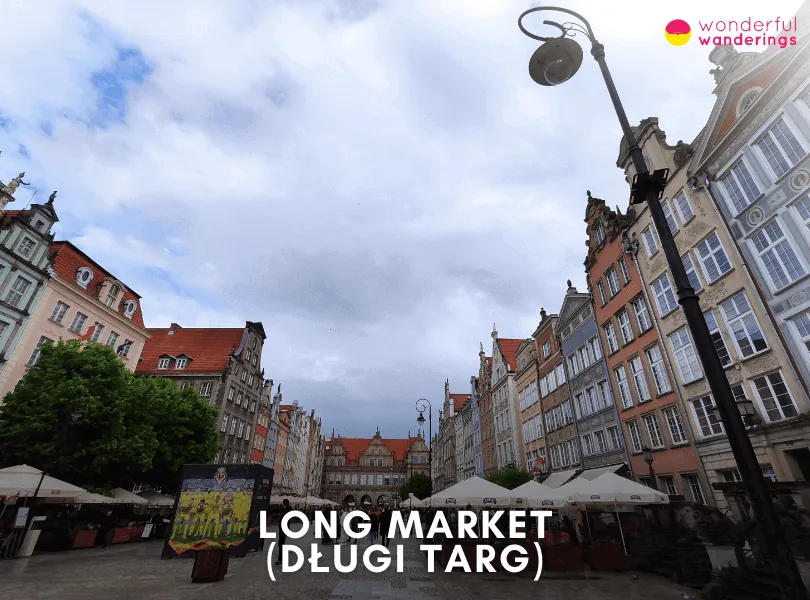
14. Golden Gate (Zlota Brama)
The Golden Gate (Polish. Złota Brama) is at the end of Długa Street in the Old Town area of Gdańsk, Poland. Gdańsk is a port city on the Baltic Sea coast in northern Poland. The Golden Gate has a long history from the early 17th century. It was constructed between 1612 and 1614 by architect Abraham van den Blocke and builder Jan Strakowski to replace an older 13th-century Gothic gate on the same site. Its location connects the historic Long Market (Długi Targ) to Long Lane (Ulica Długa), once the Royal Route into Gdańsk.
Golden Gate features its ornate Renaissance-style architecture and extensive decorative sculpture work. It is a testament to Gdańsk's prosperity as a trading center in the 1600s. The light sandstone facade combines Dutch and Italian influences with four pairs of Doric and Ionic columns across two stories framing an arched passageway. Intricate masonry and abundant ornamentation give it grandeur. Figurative stone sculptures representing civic virtues like peace, Concord and Prudence adorn the attic story. Visitors to the Golden Gate today can admire its historic architecture, stroll through the passageway from Long Lane onto the Long Market main avenue and view the sculpture work up close. Interpretive signs detail the gate's history and symbolism for self-guided learning. The atmospheric side street and the square also have restaurants, cafes and shops to enjoy. The Golden Gate would appeal to history enthusiasts interested in Gdańsk's trading heyday. Architecture buffs who can appreciate the Dutch Mannerist style. Art aficionados keen on symbolic sculpture work and photographers and tourists seeking an iconic city photo spot
The Golden Gate is centrally located in Gdańsk's touristy Old Town area, quite walkable from most accommodations, shops and restaurants nearby. It can be reached through the Gdańsk Główny train station by local tram, bus or taxi. Entry to view the Golden Gate from both sides and pass through the walkway is free. Some restaurants and shops adjoin the small square around it. Guided walking tours of Gdańsk often pass by it as a highlight attraction to explain further.
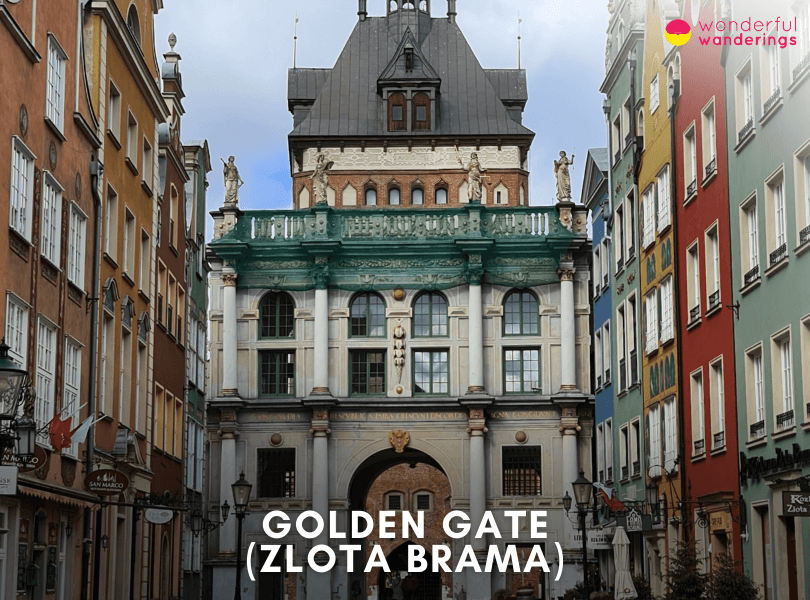
15. Amber Museum (Gdańsk)
The Amber Museum (Polish. Muzeum Bursztynu) is located at Targ Węglowy 26, 80-836 Gdańsk, Poland. Gdańsk is a port city on the Baltic Sea coast in northern Poland. The Amber Museum has a history dating back to 2006 when it opened as a branch of the Gdańsk History Museum, housed in the historic Foregate complex on Długa Street. This complex consists of the Torture House, Neck Prison Tower and Prison Tower, dating back to the 14th century. The Amber Museum was Poland's first museum devoted exclusively to amber.
Amber Museum displays one of the largest amber collections in the world, allowing visitors to explore the unique history and artistry surrounding this fossilized tree resin. Exhibits showcase raw amber specimens, inclusions (plant and animal material trapped inside amber), historical artworks from Gdańsk and contemporary amber art and jewelry. Multimedia presentations explain how amber formed millions of years ago, methods for extracting amber, its uses in medicine and magic and more. The museum also exhibits paintings, graphics, sculptures and installations by artists who use amber as an artistic medium. Visitors to the Amber Museum can admire the diverse amber exhibits, learn about amber through multimedia displays and attend demonstrations of amber working techniques. There is also a gift shop selling jewelry and souvenirs. Special exhibitions and cultural events are held periodically as well. The Amber Museum appeals to geology and natural history enthusiasts interested in amber formation. Art lovers who can appreciate historic and contemporary amber artworks. Jewelry aficionados are keen to see exquisite amber adornments and families and visitors of all ages can engage with the multimedia exhibits.
The Amber Museum is located in Gdańsk's Main Town area, near the Gdańsk Główny train station. Local tram, bus or taxi can also easily reach it. Entry tickets to the Amber Museum cost 12 PLN (3€, $3, 1£)for regular admission. Family packages and special rates for groups and tours are also available. Access to special exhibitions or events may incur additional charges.
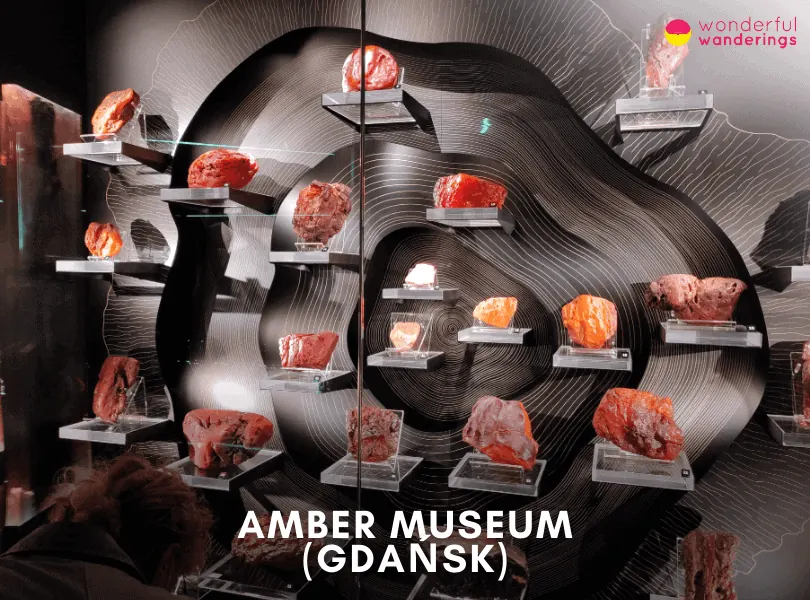
16. Oliwski Park
Oliwski Park, also known as Park Oliwski, is located in the Oliwa district of Gdańsk, Poland, at Opata Jacka Rybińskiego Street. The origins of today's Oliwski Park revolve around the monastery garden established by the Cistercian monks in the 12th century. In the mid-18th century, the last Cistercian abbot, Jacek Rybiński, commissioned the creation of a Baroque-style French garden in front of the Abbot's Palace, featuring geometric flower beds, canals and an avenue of linden trees known as the “Prince's View”. A new abbot brought a gardener to introduce an English-Chinese-style garden with winding paths, streams, bridges and exotic “temple” structures. In the 19th century, the park was opened to the public and expanded with thousands of tree varieties and an alpine rock garden. The park covers over 10 hectares.
The most famous part of Oliwski Park is the French Baroque garden in front of the Abbot's Palace. Visitors can admire the intricate topiary shrubs sculpted into ornamental shapes and symmetrical flower beds decorated with colorful seasonal plants. The garden also contains a large pond and fountains. Visitors can explore winding paths past old trees and water features like lakes and streams in the English-Chinese garden. Other sections include an alpine rock garden, a palm house greenhouse, whispering grottoes with unique acoustics and a Japanese garden with cherry trees. The park provides plenty of benches, lawns and secluded spots for relaxing amidst nature. Oliwski Park offers activities for visitors of all ages. Families enjoy picnicking on the lawns, feeding the ducks and swans and letting kids run around the dedicated playground. The palm house appeals to those interested in botany. Couples and seniors frequent the park to stroll along the scenic paths. The whispering caves are popular with kids.
The park is in Gdańsk's Oliwa district, near the Oliwa SKM commuter train station. Visitors can also take trams #2 or #3 from downtown Gdańsk to the Oliwski Park stop. Limited paid street parking is available around the park. Entry to enjoy Oliwski Park is free. The palm house typically charges a small admission fee of 5 PLN ($1, 1€, 0.86£). Visitors are welcome daily from around 5 am to 9 pm, though parts may close earlier. Guided walking tours of the park are available seasonally.
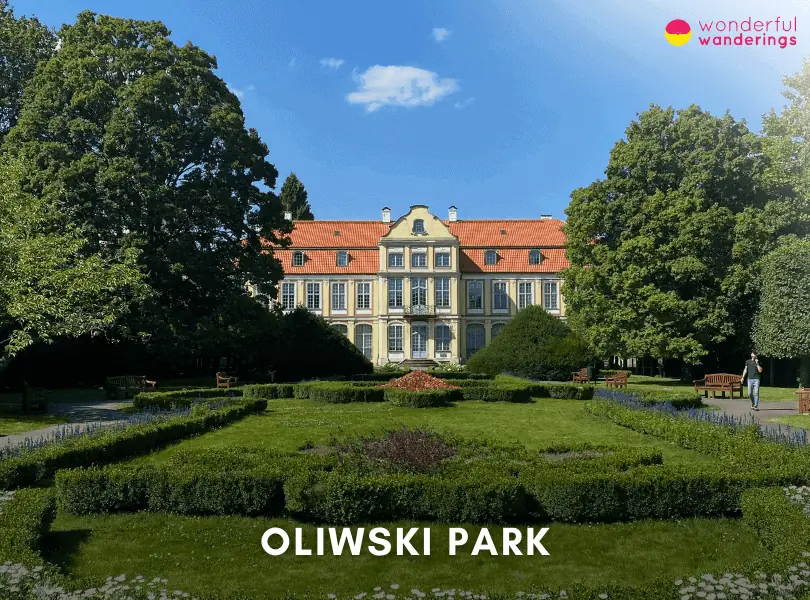
17. Museum of Gdańsk – Main Town Hall
The Museum of Gdańsk – Main Town Hall (Muzeum Gdańska – Ratusz Głównego Miasta) is located in central Gdańsk, Poland, at Długa 46/47, located at the intersection of Długa Street and Długi Targ Street. The Gothic-Renaissance Main Town Hall building dates back to the 14th century. It served as the seat of city authorities in Gdańsk for over 400 years until 1921. The structure was heavily damaged in World War II but carefully reconstructed by the 1950s. it houses the Museum of Gdańsk and some of the city's most ornate historic interiors.
The Museum features exhibits related to Gdańsk's history and culture across two floors and a tower. Highlights include the lavish Great Council Hall with intricate ceiling paintings, the Great Weta Hall's imposing marble fireplace, displays of silverwork and handicrafts showcasing Gdańsk's past trade wealth, period furnishings and temporary exhibitions in the Pile Gallery. The top floor houses an immersive exhibit recreating everyday life in pre-war Gdańsk, giving visitors a glimpse into homes, workshops and businesses as they were in 1939 before the destruction of WWII. Visitors can also access the 83-meter-high tower for impressive views across the historic Old Town and the iconic St. Mary's Church. The tower contains a Carillon bell instrument that plays tunes over the city. The museum appeals primarily to adults interested in local history, architecture, arts and culture. Allow at least 1-2 hours to see the main exhibits. School groups frequent the museum to enrich history lessons. Families enjoy the views from the tower. The building's historic spaces and tower stairs present some accessibility challenges.
The Museum of Gdańsk – Main Town Hall is located in the pedestrian zone of Długa Street, near Gdańsk Główny train station. Visitors can take trams #2 or #3 to the Brama Wyżynna stop nearby. Regular admission is 23 PLN for adults and 16 PLN for concessions. Mondays are free entry. Guided tour options are available.
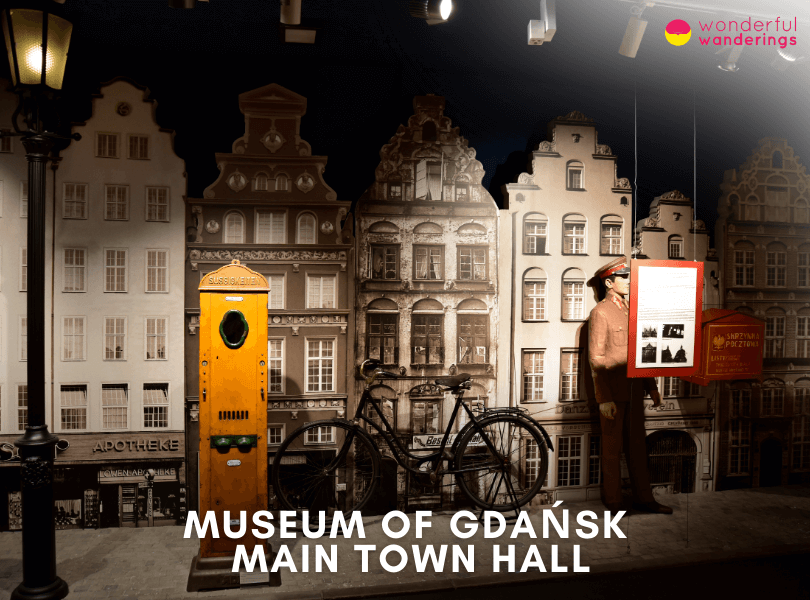
18. Museum of the Second World War
The Museum of the Second World War (Polish. Muzeum II Wojny Światowej) is located at pl. Władysława Bartoszewskiego 1, 80-862 Gdańsk, Poland. Gdańsk is a port city on the Baltic Sea coast in northern Poland. The museum has a history dating back to 2008, when it was established by a regulation of the Minister of Culture and National Heritage. Originally called the Westerplatte Museum in Gdańsk, it was renamed the Museum of the Second World War in Gdańsk in November 2008. The museum's purpose is to collect, preserve and showcase artifacts related to the history of World War II through exhibitions, education, publications and more.
The museum houses one of the world's largest exhibitions about World War II at over 5,000 square meters. Its vast collection and multimedia displays aim to comprehensively cover different aspects of the most devastating war in human history. Exhibits include photographs, propaganda posters, weapons, diaries, maps, film footage and other artifacts from wartime Poland and beyond. Visitors to the museum can explore several floors of captivating exhibits showcasing the course of WWII from beginning to end in immersive displays. There are also temporary exhibitions on special topics. The museum has a cinema showing war-themed films, a reading room, conference rooms, shops and cafés. Guided tours are available for groups. The museum appeals most to history buffs interested in understanding WWII through impactful artifacts. Students and educators who are seeking an informative experience about 20th-century history. Military enthusiasts who can examine weapons and uniforms up close. Travelers wanting to learn about Gdańsk's wartime fate under Nazi occupation.
The Museum of the Second World War is near Gdańsk Główny train station. It can also be reached easily by local tram, bus or taxi. Entry tickets to the main exhibition cost 23 PLN ($5, 5€, 3£) for normal admission and 16 PLN ($4, 4€, 2£) for concessions like students and seniors. Extra rates apply for special exhibitions, cinema, guides, etc. Admission is free on Tuesdays.
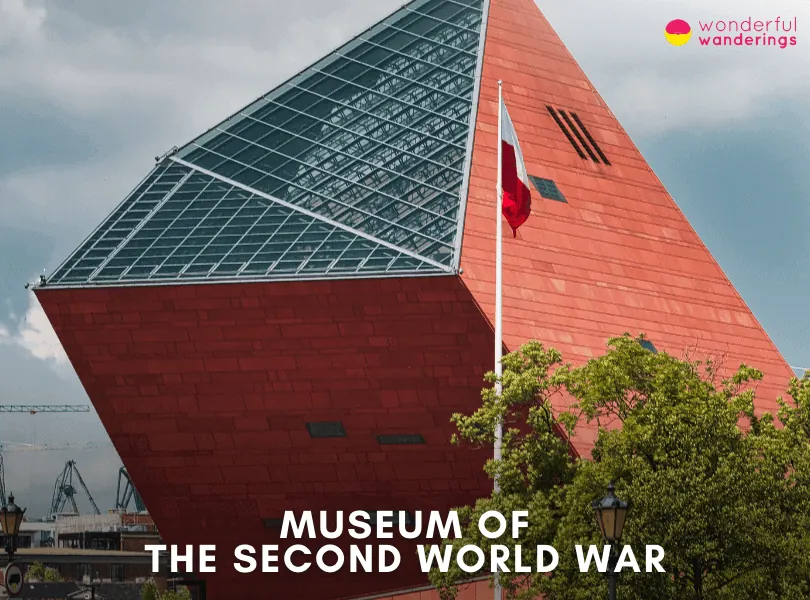
19. Brzeźno Pier
Brzeźno Pier (Molo w Brzeźnie) is located in the Brzeźno district of Gdańsk, Poland at Jantarowa Street 1. The pier was first built in the late 19th century, with an original length of 100 meters extending into the Bay of Gdańsk. It was later expanded after World War II to its current size of 136 meters long and 7.2 meters wide. The pier structure consists of a wooden deck supported on concrete pillars. Brzeźno Pier was a popular seaside attraction and recreational spot for residents. Its scenic views of the bay made it a favorite place for walks, fishing and family gatherings. During WW2, the original pier suffered damage and had to be rebuilt in its current location about a kilometer north of the original site.
Brzeźno Pier continues to be a popular seaside destination and tourist attraction. Visitors come to walk along the wooden deck, take in views across the bay and enjoy the seaside location. A few benches are along the pier for sitting, relaxing and picnicking. The shore ends have volleyball courts and a small playground for kids. Visitors can also access the adjoining beach for swimming during summer. A restaurant and bar is located next to the pier. The pier is busiest during summer months when locals and tourists alike come to enjoy the seaside spot. Its scenic bay views and wooden decking make it a great place for walks, fishing or simply relaxing by the Baltic Sea. The pier appeals most to adults seeking scenic views but also draws families with kids who enjoy the beach and playground.
Brzeźno Pier is near the city center in Gdańsk's northern Brzeźno district. Visitors can take tram line #2 from downtown Gdańsk to the Jantarowa stop to the pier. Limited parking is available near the pier. Entry and access to Brzeźno Pier is free. Visitors can walk onto the pier structure at any time. The adjoining restaurant charges separately for food and drinks. Walking the scenic pier to admire the bay views and sea air is the main activity for visitors.
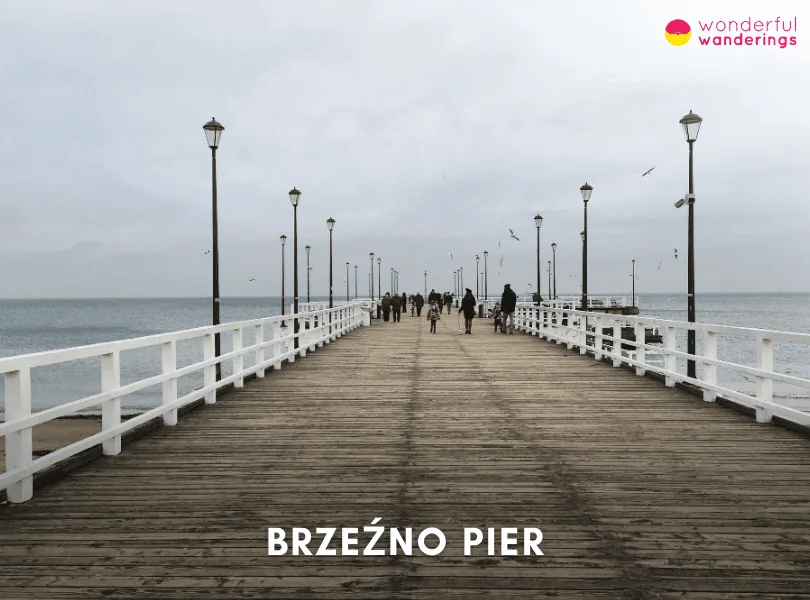
20. Bread Bridge – “Bridge of Love”
The Bread Bridge, known locally as Most Miłości (Bridge of Love) or Most Chlebowy (Bread Bridge), is located in Gdańsk, Poland, over the Radunia Canal at the intersection of Korzenna Street and Na Piaskach Street. It is called the Bread Bridge because bread sellers had stalls here in medieval times; it dates back to at least the 14th century. The brick bridge structure was built in the 19th century, though it has undergone reconstruction and renovation.
The bridge has taken on a new identity as a “love lock” bridge where couples affix padlocks marked with their names or initials to symbolize their everlasting love, similar to other “love lock” bridges in European cities. Locals often refer to it as the Bridge of Love.
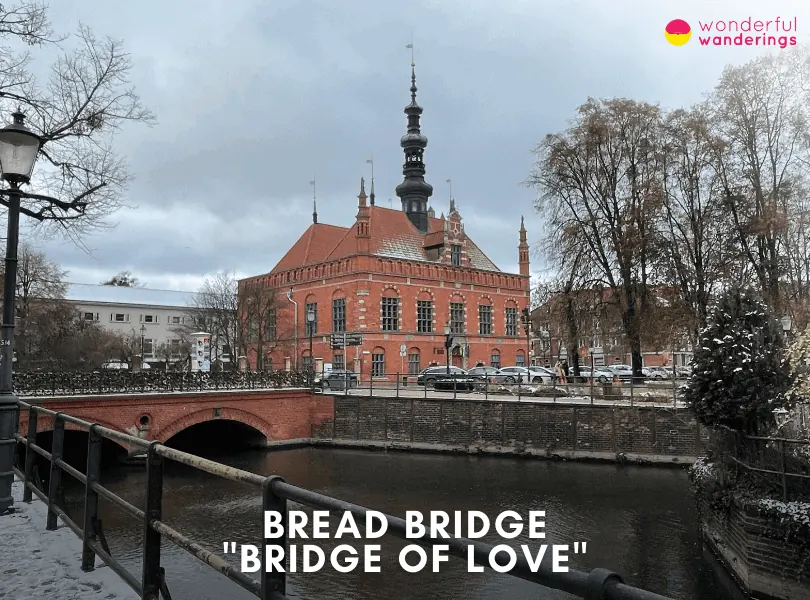
Visitors to the Bread Bridge can walk onto the small arched bridge to admire the padlocks left by lovers, young and old. The bridge provides beautiful views of the historic Old Miller's House on one side and makes a charming photo backdrop with its brick arches reflected in the Radunia Canal below. Couples looking to leave their love lock can purchase one from nearby souvenir shops or bring their own to clip onto the bridge's railings using the provided scissors. It is said that once the lock is secured, the couple should throw the key into the flowing waters below to seal their love forever. Guides warn not to throw keys into the canal from the bridge due to passing tour boats. The Bread Bridge appeals most to romantic couples looking to participate in the love lock tradition. Its central location in Gdańsk's atmospheric Main Town also draws tourists interested in photography, architecture and the city's history. The bridge is outdoors and fully accessible.
The Bread Bridge is near the Gdańsk Główny train station in the heart of Main Town. Visitors can take tram #2 from the train station to the Brama Wyżynna stop and limited paid street parking is available nearby. There is no admission fee to walk onto the Bread Bridge, view the love locks or take photos. Adding your lock typically costs around 15 to 30 PLN ($4, 4€, 2£) to ($8, 7€, 4£) though some bring their locks. Guided walking tours of Gdańsk often stop here to talk about the bridge's romantic evolution.
What are the best museums to visit in Gdańsk?
Listed below are the best museums to visit in Gdańsk.
- The National Museum in Gdańsk. The National Museum in Gdańsk houses an expansive collection spanning centuries of Polish and European artistic heritage across multiple buildings. Visitors can admire medieval altarpieces, Flemish and Dutch Old Master paintings, Art Nouveau works and more in this cultural gem's galleries. Guided tours provide deeper insight into the over 300,000 artifacts.
- The Museum of the Second World War. The Museum of the Second World War utilizes a sleek modern building and cutting-edge multimedia technology to vividly showcase the largest exhibition on WWII in the world. Visitors journey through immersive displays recounting the conflict's devastating events through artifacts, documents, recordings and visuals from the European and Pacific theatres.
- The European Solidarity Centre. The European Solidarity Centre recounts the dramatic story of the Solidarność movement, which began in Gdańsk's shipyard and sparked national protests, ultimately leading to the fall of communism. The interactive museum set in the actual historic shipyard site utilizes photos, videos, commissioned artworks and salvaged materials to showcase the movement's underground operations and the regime's brutal crackdowns, culminating in victory.
- The National Maritime Museum. The National Maritime Museum comprises multiple locations exhibiting model ships, nautical equipment, ethnographic objects and archaeological materials that bring Poland's thousand-year relationship with the sea to life. Of particular note is the museum's shipbuilding section with interactive displays demonstrating techniques perfected in Gdańsk's shipyards and the harbor warehouse granaries housing conserved artifacts from ancient wrecks.
- The Amber Museum. The Amber Museum celebrates the unique material that put Gdańsk on the map as an international trading hub – fossilized tree resin known as Baltic amber, nicknamed ‘Baltic Gold'. Visitors can learn about amber's formation, extraction methods, associated myths and legends, artistic uses and their role in local history and culture.
What are the best things to do in Gdańsk with kids?
Listed below are the best things to do in Gdańsk with kids.
- Explore Main Town Gdańsk. Visitors with their families can wander the cobblestone streets of Gdańsk Old Town, allowing kids to admire the colorful historic houses along Długi Targ's main avenue. Let them hunt for the cute little lion statues hidden in nooks across town, making sightseeing an engaging adventure. Visitors can also stop for some traditional Polish gingerbread cookies.
- Visit the Amber Museum. This museum allows kids to enter the unique world of Baltic amber, the “Gold of the North,” through interactive displays and hands-on activities. Children can touch real amber samples, marvel at amber's ability to preserve ancient plants and insects and learn how amber is mined and turned into beautiful jewelry.
- Ride the Ferris Wheel. The giant Ferris wheel soars over the Motława River waterfront, offering stunning panoramic views of Old Town's historic architecture across the river. The 15-minute ride is smooth and suitable for kids ages three and up for a thrilling bird's-eye perspective.
- See New Zoo Gdańsk. Get up close to over 2500 animals like playful polar bear cubs, lemurs and more at one of Poland's best zoos. Kids will love playgrounds, a petting farm with ponies and a miniature train ride around the spacious 123-hectare park.
- Tour the ORP Błyskawica Ship. This historic destroyer allows kids to imagine life as a sailor. Kids can climb steep steps between decks and explore the engine room, captain's bridge, sleeping quarters and more while learning about its amazing WWII survival story.
What are the best activities for a business traveler in Gdańsk?
Listed below are the best activities for a business traveler in Gdańsk.
- Attend a business networking event. Gdańsk has a growing startup and technology scene. There are regular business networking events, meetups and conferences happening that allow you to connect with other professionals. For example, events by Startup Grind Gdańsk or the Gdańsk Entrepreneurship Foundation are good opportunities. These events help expand your professional contacts.
- Have a business meeting at a trendy cafe. Business travelers can try one of Gdańsk's cool cafes for a casual business meeting, like Cafe Ferber or Cafe Sąsiedzi. These cafes have free WiFi and great coffee in creative spaces, perfect for informal discussions. The relaxing atmosphere facilitates good conversations.
- Tour the European Solidarity Centre. Understand Gdańsk's inspiring history by visiting this museum in the former shipyard where the Solidarity movement began. The interactive exhibits showcase the fight for freedom in Poland. Visiting inspires lessons in leadership, civic engagement and enacting change.
- Check out the business district. The Young City (Młode Miasto) neighborhood has many new office buildings, corporate headquarters and hotels perfect for business travelers. Multinational companies like Intel, IBM and State Street have major offices here. Walking the modern business district provides insight into the city's economic growth.
- Use the water tram to meet clients. Impress visiting clients using Gdańsk's unique water trams to tour the harbor and shipyards. The boats give unique vantage points to view the port's operations while discussing business. Rides start at Złote Tarasy mall.
Where is Gdańsk?
Gdańsk is a city located on the Baltic Sea coast in northern Poland. It lies at the mouth of the Motława River, connected to the Leniwka branch of the Vistula River delta. Gdańsk is in the Pomeranian Voivodeship, the province's capital and largest city. It is part of the Tricity metropolitan area and the nearby cities of Gdynia and Sopot. Gdańsk's geographic coordinates are 54°22′00′′N 18°38′00′′E.
What is the history of Gdańsk?
Gdańsk has a long and complex history spanning over a thousand years. It likely began as a Slavic fishing village in the 10th century. It was part of the Duchy of Pomerelia, ruled by the Samborides dynasty. Gdańsk joined the Hanseatic League in 1361, increasing trade and prosperity. The Teutonic Knights captured Gdańsk and ruled the city until 1454, when it returned to Polish rule under King Casimir IV. It was part of the Polish-Lithuanian Commonwealth and had much autonomy from 1569 to 1793. Gdańsk was annexed in 1793 by Prussia and later Germany up until 1919. It became the Free City of Danzig under the League of Nations. Nazi Germany attacked the city in 1939 to start WWII. Gdańsk was reincorporated into Poland after 1945. Gdańsk was the birthplace of the anti-communist Solidarność movement. Gdańsk has focused on rebuilding, attracting tourists and revitalizing its shipbuilding and maritime industries since the fall of communism.
What language is spoken in Gdańsk?
The official and predominant language spoken in Gdańsk is Polish. As a major port city and center of trade and immigration over centuries, the city has also had historical minorities of Germans, Dutch, Scots, French, Swedes and Kashubians influencing the local dialect of Polish. After WWII, most of the German minority were expelled. Polish is the common language used by the government, businesses, education and daily life. Due to tourism, history and commercial ties, many locals also speak English, German and Russian as second languages.
What time zone is Gdańsk in?
Gdańsk is in the Central European Time zone, UTC+1. It observes Central European Summer Time (UTC+2) when daylight savings time is in effect. Poland and the rest of the European Union shift clocks forward 1 hour to CEST on the last Sunday of March and revert to 1 hour on the last Sunday of October. Gdańsk uses CET in the winter months and CEST in the summer months. The time in Gdańsk is the same as most of Poland, Germany, France and other Central European countries.

How many people live in Gdańsk?
The population of Gdańsk is 457,298 people as of 2023. There are 221,523 men and 235,775 women living in Gdańsk. Regarding age breakdown, 67,527 children under 14 comprise 15% of the population. The number of teenagers between 15-19 is 23,348 or 5%. In the working age group of 20-59 years old, 295,027 people or 64% of the Gdańsk population. For the elderly over 60, there are 71,398 people, which is 16% of the total.
What are the most interesting facts about Gdańsk?
Listed below are the most interesting facts about Gdańsk.
- Currency. The official currency of Poland and Gdańsk is the Polish złoty (PLN). Banknotes come in 10, 20, 50, 100, and 200 złoty denominations. Coins come in 1, 2, 5, 10, 20, and 50 groszy.
- Time Zone. Gdańsk is in the Central European Time Zone, UTC+1. It observes daylight saving time, shifting clocks forward 1 hour to UTC+2 in the summer. Gdańsk is 1 hour ahead of GMT/UTC in Winter. It is 2 hours ahead of GMT/UTC in summer.
- Language. The official and predominant language spoken in Gdańsk is Polish. Facts about Poland are that many locals also speak English, German, Russian, or Kashubian (regional dialect). English is widely understood in restaurants/cafes.
- Power Plugs. Poland uses the Type E power plug, which has two round prongs. The standard voltage is 230V, and the standard frequency is 50Hz. Visitors from countries like the USA will need an adapter and possibly a voltage converter to charge devices.
How many days are needed to see Gdańsk?
It is recommended to stay for three days to see what Gdańsk offers. Krakow's Old Town offers historic architecture and Polish cuisine on day one. Day two contrasts Auschwitz's sobering history with Wieliczka Salt Mine's underground sculptures. Zakopane's Tatra Mountains provide Gubalówka Hill's views, scenic hikes, highlander crafts shopping and charming wood architecture relaxation on day three. Splitting time between cultural Krakow, powerful Auschwitz history and mountainous Zakopane nature creates a diverse Poland introduction in just three days. Focusing on one or two cities allows for a manageable highlight taste rather than an overly rushed experience. Krakow introduces Polish history and culture, while Wieliczka adds memorable underground contrast before the Tatra Mountains' active conclusion. Auschwitz provides an impactful history lesson before enjoying Zakopane's lighter mountain resort attractions. This varied itinerary showcases the best of Poland in an engaging three-day timeline.
Is Gdańsk worth visiting?
Yes, Gdańsk is worth visiting. Gdańsk has a fascinating history and beautiful architecture, making it an appealing destination. Some top attractions include the iconic Main Town with the Long Market and Neptune's Fountain, the enormous Gothic St. Mary's Church and the historic shipyard where the Solidarity movement was born. The Old Town has lovely buildings showcasing Flemish Dutch and Hanseatic German influences. Beyond the architecture, Gdańsk has great museums, lively entertainment areas, good shopping and delicious cuisine with Baltic and Polish influences. The amber jewelry and handicrafts are especially notable. With convenient transport links, reasonable prices and a seaside location, Gdańsk offers an enjoyable experience for travelers interested in culture, history, architecture and maritime ambiance.
Is Gdańsk expensive to visit?
No, Gdańsk is considered an affordable destination for travelers. Accommodation costs are relatively low compared to other European cities. Good hotels and apartments in the city center can be found for $50 (46€, 39£) to $70 (64€, 55£) per night on average. Hostels and budget options bring prices even lower. Public transportation and taxis are quite cheap. A taxi ride within the center costs between $2 (2€, 1£) and $5 (5€, 3£). Public transit tickets start at $1 (1€, 0.86£). Food and dining out are reasonably priced. A meal at an inexpensive restaurant costs between $8 (7€, 5£) to $11 (10€, 8£) per person. Even mid-range places have entrees between $5 (5€, 3£) and $11 (10€, 8£). Groceries from markets and shops are also affordable. Many attractions are inexpensive as well. Museums and churches have tickets from $1 (1€, 0.86£) to $5 (5€, 3£) on average. Walking tours cost between $11 (10€, 8£) and $17 (15€, 13£). It can be accessed on foot, so visitors don't need to spend much money around the compact Old Town area.
Is Gdańsk safe to visit?
Yes, Gdańsk is very safe to visit. Gdańsk is considered very safe due to low violent crime and theft rates compared to European cities of similar size. Tourist-targeted violent crime is extremely rare. There is a visible police presence deterring criminals in busy areas like the Old Town. Historic cobblestone streets are well-lit at night for safe walking. Nightlife attracts more families than party-goers, creating a relaxed ambiance after dark. Gdańsk remains safe, with locals comfortable at night. Basic precautions like avoiding deserted areas and watching for pickpockets are still advised. Gdańsk's community atmosphere makes it a low-risk, welcoming Polish destination for travelers.
Is Gdańsk easy to visit with kids?
Yes, Gdańsk is easy to visit with kids. Many main sites in Gdańsk, like the Artus Court, the Crane and the Amber Museum, have interactive exhibits and displays to engage kids. There is also a puppet theater and a zoo. The old town has colorful architecture, street performers and cafes to stop at along cobblestone streets, which kids tend to enjoy. Accommodations in Gdańsk, such as hotels and apartments, provide more space and amenities for families. There are playgrounds, parks and beaches for letting kids play and explore. The Oliwa Park has hiking trails through gardens. Kids can discover Gdańsk's maritime history by taking boat rides on the Motława River or out to Westerplatte. Gdańsk has plenty of kid-friendly attractions and activities and offers an accessible vacation for families.
What is Gdańsk famous for?
Gdańsk is most famous for its historic role as a major port city and its connections to amber trading and shipbuilding. Secondly, Gdańsk is famous for being the birthplace of the Solidarity movement in 1980 under leader Lech Wałęsa, as the shipyards saw strikes that inspired protests against communist rule internationally. Shipbuilding remains a key industry, centered around the renowned Gdańsk Shipyard. Thirdly, Gdańsk is known for its beautifully restored historic old town along the Motława River. Lastly, Gdańsk is known as the “Amber Capital”, featuring an Amber Museum and thriving amber crafts due to the “Baltic Gold” gemstone being abundant locally. Gdańsk attracts visitors to experience its blend of culture, architecture and complex history.
Who are the most important people born in Gdańsk?
Listed below are the most important people born in Gdańsk.
- Günter Grass. Günter Grass was a famous German novelist, poet, playwright, illustrator, graphic artist, sculptor and recipient of the 1999 Nobel Prize in Literature. He was born in the Free City of Danzig (now Gdansk, Poland) on October 16, 1927. The Grass is best known for his first novel, “The Tin Drum”, published in 1959, about the Nazi era in Danzig. He lived most of his life in Germany and was an outspoken voice on political issues. Grass died on April 13, 2015 in Lübeck, Germany.
- Daniel Gabriel Fahrenheit. Daniel Gabriel Fahrenheit was a Dutch physicist, engineer and glass blower best known for inventing the mercury thermometer and Fahrenheit temperature scale. He was born in Danzig (now Gdansk, Poland) on May 24, 1686. Fahrenheit invented the first reliable thermometer using mercury instead of alcohol in 1714. The Fahrenheit temperature scale was devised so the freezing point of water was 32 degrees and human body temperature was 96 degrees. He spent most of his life working in Amsterdam and died there on September 16, 1736.
- Arthur Schopenhauer. Arthur Schopenhauer was an influential German philosopher best known for his 1818 work “The World as Will and Representation”. He was born in Danzig (now Gdansk, Poland) on February 22, 1788. Schopenhauer's philosophy asserted that the will is the ultimate reality and that life involves endless striving and dissatisfaction. His ideas influenced later thinkers like Nietzsche and Wittgenstein. Schopenhauer lived in many places before settling in Frankfurt, where he died on September 21, 1860.
- Johannes Hevelius. Johannes Hevelius was an astronomer and brewer who made important observations of comets and described lunar topography. He was born in Danzig (now Gdansk, Poland) on January 28, 1611. Hevelius built observatories and designed advanced astronomical instruments to study the moon, sun and stars. His detailed lunar maps from the 1640s were the best until telescopic photography. He spent his life in Danzig, where he died on his 76th birthday on January 28, 1687.
- Daniel Chodowiecki. Daniel Chodowiecki was a popular Polish-German painter and printmaker born in Danzig (now Gdansk, Poland) on October 16, 1726. He is best known for capturing scenes of bourgeois life in the late 18th century, especially with his sympathetic depictions of Jews and women. Chodowiecki did thousands of etchings illustrating books and magazines. He spent most of his prolific career in Berlin, where he died on February 7, 1801.
What to eat in Gdańsk?
Listed below are what you can eat in Gdańsk.
- Pierogi. Filled dumplings like meat, potato and cheese pierogi are extremely popular across Poland, but Gdańsk has developed its own unique regional varieties using local ingredients. Gdańsk pierogi may feature fillings of Baltic seafood like herring, salmon or cod blended with onions and herbs for a taste of the Pomeranian coast. The pierogi are still boiled and then crisped up through pan-frying or baking as is tradition. It is one of the best dish to taste in Poland .
- Bigos. Bigos is a beloved Polish hunter's stew and Gdańsk's proximity to Kashubian forests and farmland provides easy access to ingredients like pork, mushrooms and sauerkraut. Restaurants across Gdańsk simmer their bigos for hours, allowing the flavors of meat, cabbage and spices to mingle into the hearty, comforting dish the city is known for.
- Goldwasser. Gdańsk's famous Goldwasser liqueur has been produced in the city using secret herbal formulas since 1598 and is still made today with flakes of 22-karat gold for visual brilliance. The Goldwasser distillery in Gdańsk continues centuries-old traditions by offering tours and tastings of the signature sweet and spicy spirit.
- Fresh seafood. Gdańsk's seaside location on the Baltic makes it a prime destination for fresh seafood like salmon and herring caught right off the coast. Restaurants across Gdańsk take full advantage by serving simply prepared fish to highlight the fresh flavors or incorporating the bounty into rich seafood stews.
- Sledzie po kaszubsku. Sledzie po kaszubsku features pickled herring, a specialty of the Kashubian region surrounding Gdańsk, topped with hard-boiled eggs, potatoes, onions and oil for a light appetizer. The dish is a celebration of local seafood and cultural traditions.
- Gdańsk gingerbread. Gingerbread baking with honey and spices has been a generations-old craft tradition in Gdańsk, resulting in elaborately decorated gingerbread sold across the city.
What are the best places to eat in Gdańsk?
Listed below are the best places to eat in Gdańsk.
- Słony Spichlerz. Słony Spichlerz is a restaurant market located in a former granary building, with stalls serving various international cuisines that customers can mix and match alongside a popular shared communal dining space that draws locals and visitors. The recently opened market features high-quality dishes showcasing diversity, from Mediterranean and Asian to Polish and vegetarian.
- Brovarnia Gdańsk. Brovarnia Gdańsk comprises a brewery producing fresh beer and a restaurant set in the historic Hotel Gdańsk building, where visitors can enjoy delicious Polish fares such as pierogi dumplings paired with the house-made brews in a cozy vintage interior decorated with regional art and photography.
- Tawerna Mestwin. Tawerna Mestwin provides a charming, cottage-style setting decorated with regional Kashubian folk crafts and dolls, serving homestyle dishes like pancakes, soups and fried herring that immerse guests in the authentic local cuisine and culture in a shadowy, almost haunting dining room.
- Pierogarnia Stary Mly. Pierogarnia Stary Mly focuses on Polish dumplings, with customers able to watch pierogi being freshly prepared with sweet and savory fillings right at the front of this small set of restaurants before enjoying the huge portions of doughy delicacies that draw constant crowds. Pierogarnia Stary Mly is also one of the best restaurants to eat in Gdańsk.
- Ostro. Ostro is a set of restaurants offering exceptional Neapolitan-style pizza baked in wood-fired ovens with great ambiance, considered among the top pizza destinations in Gdańsk, run by a team focused on quality ingredients and preparation to craft perfect pizza.
What are the best areas to stay in Gdańsk?
Listed below are the best places to stay in Gdańsk.
- Old Town. The Old Town neighborhood attracts tourists to top attractions like the iconic St. Mary's Church, Neptune's Fountain and the Gdańsk Crane. Old Town gives visitors an authentic perception of this Baltic port city with its cobblestone streets, medieval architecture and excellent access to restaurants and shops. Old Town is also one of the best places to stay for visitors traveling alone and with families.
- Wrzeszcz. Wrzeszcz is perceived by tourists as Gdańsk's trendy, youthful neighborhood, filled with energy and active nightlife. Its proximity to Gdańsk's modern shopping centers and malls and easy public transit connections to Old Town attractions make Wrzeszcz popular with visitors.
- Oliwa. Tourists perceive Oliwa as an upscale, green suburban neighborhood perfect for escaping the city crowds. Oliwa features leafy parks, a renowned cathedral and quick train links that allow easy access to Gdańsk's top sites. Oliwa offers a friendly neighborhood for local and foreign tourists.
- Jelitkowo. Jelitkowo gives tourists a beautiful perception of Gdańsk's coastal charm while remaining connected to city sights. Jelitkowo highlights its sandy beaches, pretty fishermen's houses and a more relaxed seaside atmosphere. This neighborhood offers a safe place to stay for solo travelers.
What are the best accommodations to stay in Gdańsk?
Listed below are the best accommodations to stay in Gdańsk.
- Puro Gdańsk Stare Miasto. Puro Gdańsk boutique hotel features a perfect location to explore Gdańsk's Old Town sites like St Mary's Church, situated just steps away across the Motława River. Its 86 rooms feature an urban-chic style with polished concrete walls, floor-to-ceiling windows and luxury amenities like rainfall showers. Visitors can enjoy views of the river and Old Town while dining at the on-site steak restaurant or sipping cocktails on the 8th-floor bar's outdoor terrace. Business travelers can use the 24/7 gym and modern meeting rooms at this highly-rated property that caters to solo guests seeking stylish accommodations in the heart of historic Gdańsk. Puro Gdańsk Stare Miasto is considered one of the best hotels to stay in Gdańsk.
- Hotel Villa Eva. Hotel Villa Eva in Gdańsk's Wrzeszcz district charms guests with its historic early 20th-century architecture fused with modern interior design. Its 33 comfortable rooms with classic furnishings and modern bathrooms provide a quiet retreat, with delightful garden views from the restaurant terrace available to all guests. Situated close to popular attractions like Sopot and the Ergo Arena, Villa Eva allows easy transit access around Gdańsk while offering free parking on-site for those with cars. Leisure and business travelers enjoy the hotel's friendly service and relaxed ambiance, whether visiting Gdańsk for work or a holiday.
- Novotel Gdańsk Marina. Novotel Gdańsk Marina provides contemporary accommodations along a sandy beach in Jelitkowo. All 206 rooms feature balcony views of the Baltic coastline, just steps from the hotel doors via a picturesque seaside promenade stretching for miles. Leisure travelers can use amenities like the indoor swimming pool, while business guests utilize the seven high-tech meeting rooms during their stays. Families appreciate the children's play area and video game consoles when visiting this stylish hotel that blends coastal serenity with easy transit access to Gdańsk's attractions.
- Sofitel Grand Sopot. Sofitel Grand pampers guests with elegant design and indulgent amenities from Gdańsk. Guests relax on the private beach, get pampered at the spa or sample creative Polish cuisine at the renowned Malinowy Młyn restaurant, all while enjoying panoramic sea views. The 182 rooms blend classic and contemporary styles with upscale details like Hermès toiletries, marble bathrooms and butler service in premium suites catering to VIP travelers. High-end leisure and business visitors appreciate the sophistication of this relaxing resort hotel neighboring lively Gdańsk.
- Focus Hotel Premium Gdańsk. Focus Hotel Premium offers sleek, modern accommodations in Gdańsk's trendy Wrzeszcz district. Its loft-style rooms feature exposed brickwork and contemporary art paired with amenities like rainfall showers, air conditioning and Simmons mattresses. Located adjacent to Wrzeszcz's train station, Focus Hotel Premium allows easy transit access for exploring Gdańsk while providing an on-site restaurant and 24/7 gym. Solo guests mingle in the lobby bar and appreciate the friendly yet quiet atmosphere, perfect for relaxing after busy days of sightseeing or work around the city.
How to get from Gdańsk to Warsaw Chopin Airport WAW?
There are a few ways to get to Warsaw Chopin Airport from Gdańsk. These are by plane, train, bus and car. Firstly, LOT Polish Airlines operates direct flights from Gdańsk Lech Wałęsa Airport (GDN) to Warsaw Chopin Airport (WAW) several times daily, with a flight time of 1 hour. Secondly, Gdańsk Główny offers direct train services to Warsaw Centralna station. The journey takes 3-4 hours. Thirdly, PolskiBus and FlixBus offer daily intercity bus routes between Gdańsk and Warsaw Chopin Airport. The bus journey takes 4 to 5 hours. Lastly, driving from Gdańsk to Warsaw Chopin Airport takes 4 hours, covering around 330 kilometers (205 miles) and taking Highway A1. The quickest option is to fly or take the direct train between Gdańsk and Warsaw. Buses run regularly between the two cities for more budget options. Driving allows flexibility but incurs fuel costs over the 4+ hour journey between the cities.
How to get from Gdańsk to Warsaw?
There are a few ways to get to Warsaw from Gdańsk. These are by plane, train, bus and car.
Firstly, LOT Polish Airlines operates direct flights from Gdańsk Lech Wałęsa Airport (GDN) to Warsaw Chopin Airport (WAW) several times daily. Visitors can take a bus, train or taxi from the airport to Warsaw city center. Secondly, Gdańsk Główny offers direct train services to Warsaw Centralna station. Warsaw Centralna station is located in the city center. Thirdly, PolskiBus and FlixBus offer daily intercity bus routes between Gdańsk and Warsaw. The bus journey takes 4 to hours. The Warsaw bus station is next to Warsaw Centralna train station in the city center. Lastly, driving from Gdańsk to Warsaw city center takes 4 hours, covering 330 kilometers (205 miles) taking Highway A1. The quickest and most convenient options are to take the direct train or a flight to Warsaw and then public transportation or taxi to the city center. Buses also connect the two cities fairly fast and cheaply.
Where to go shopping in Gdańsk?
There are several great places to go shopping in Gdańsk. These are Forum Gdańsk, Galeria Bałtycka, Madison, Galeria Metropolia and Galeria Klif. Firstly, Forum Gdańsk is the largest and newest shopping mall near the city center, featuring over 220 shops, restaurants and a movie theater. Bright and spacious with a modern design, Forum Gdańsk contains major international brands alongside local shops with something for everyone's tastes and budget. Secondly, Galeria Bałtycka is a mid-sized, popular shopping center in the Wrzeszcz district with around 200 stores and eateries. Shoppers can browse apparel, electronics, home goods and more at accessible prices or stop for a meal at one of the cafes and restaurants on-site. Thirdly, Madison is a shopping mall near the Gdańsk train station boasting around 100 fashion and retail outlets. The ornate interior with ample marble and statues creates a refined shopping ambiance in the city's heart. Fourthly, Galeria Metropolia contains many shops and boutiques, from global brands to local designers, alongside dining options mainly geared toward families. Located away from the tourist areas, it caters well to local shoppers in Gdańsk. Lastly, Galeria Klif features around 140 stores ranging from luxury fashion houses to specialty shops that attract shoppers looking for exclusive products. Galeria Klif contrasts with Gdańsk's more affordable malls.
What festivals or events are taking place in Gdańsk?
Listed below are the festivals or events that are taking place in Gdańsk.
- St. Dominic's Fair. The St. Dominic's Fair is an annual open-air cultural and trade festival held in Gdańsk for three weeks from late July to mid-August. It features market stalls selling crafts, food, goods, street performances, concerts, competitions and other entertainment. It occurs primarily in the Main Town and attracts 5-8 million visitors annually.
- Gdańsk Shakespeare Festival. The Gdańsk Shakespeare Festival is an annual theater and arts festival held in July-August across venues in Gdańsk and the surrounding region. It showcases Shakespeare productions and adaptations by theater companies from Poland and around the world. The festival also includes workshops, panel discussions and film screenings related to Shakespeare's works.
- Globaltica World Music Festival. Globaltica Festival takes place in Gdańsk for three days each summer, celebrating world music and culture. It features performances by musicians from Poland and other countries and a market with international food, crafts and goods. The festival aims to bring together diverse cultures and ethnic traditions through music. This music fest is one of the much-awaited festivals in Poland and Gdańsk .
- Baltic Sail Gdańsk. Baltic Sail Gdańsk is a 4-day maritime culture festival focused on sailing ships, boats and maritime traditions in early June. Tall ships and historic vessels sail into Gdańsk's port, with a parade and competitions in the waters off Gdańsk. The shoreside festivities feature concerts, fairs, reenactments, food stalls and family activities.
PIN FOR LATER
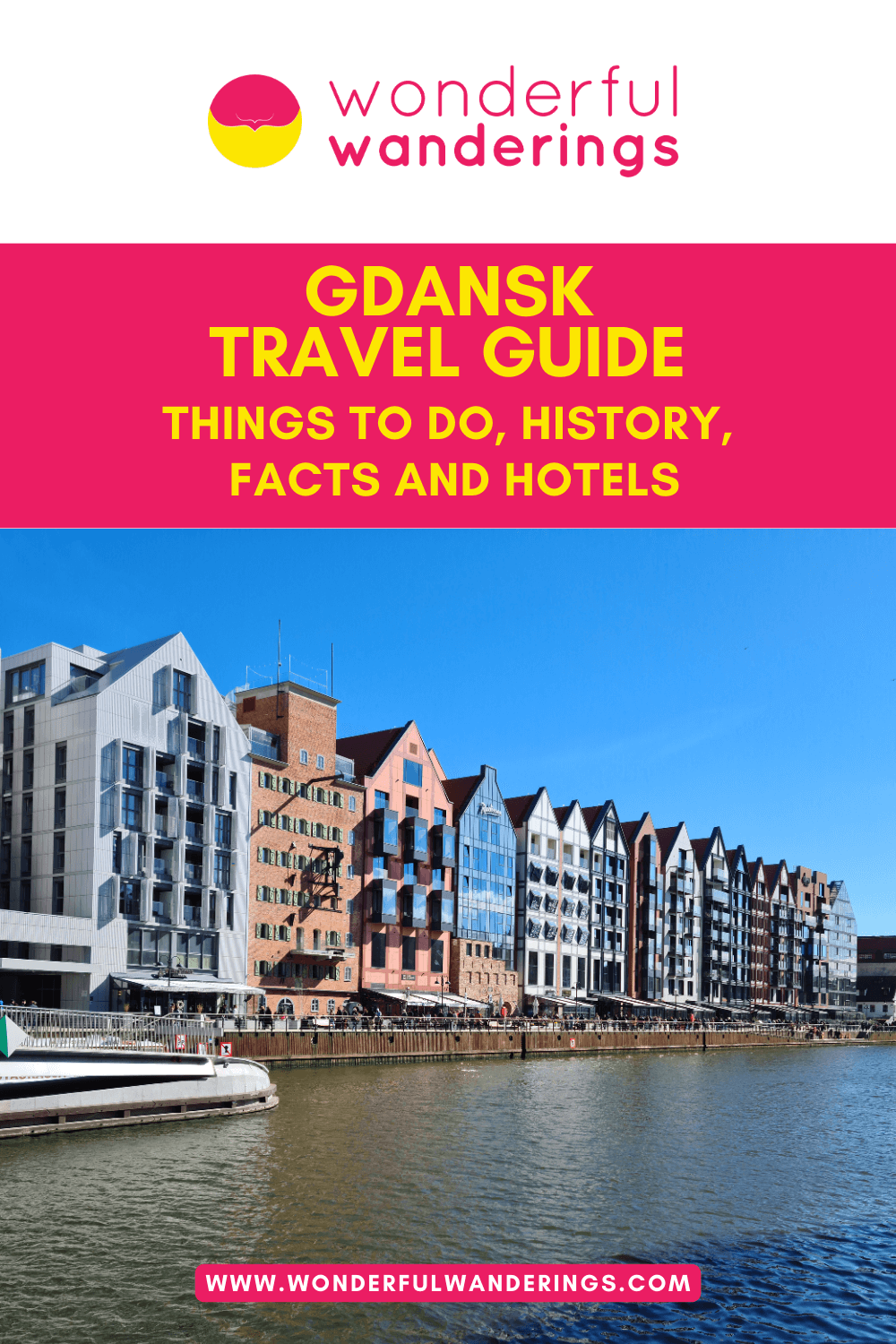
Find below our best travel guides about Poland.

24 Interesting Facts about Poland

18 Best Beaches to Visit in Poland

Renting a Car in Poland: 34 Important Tips (2024)

18 Best Castles to Visit in Poland

Prices in Poland: Is Poland Expensive?

25 Traditional Polish food and Where to Eat Them in Warsaw

36 Most Famous Polish people: Artists, Chefs and Scientists!

Dates of Holidays in Poland 2024 [Annually updated]

22 Top Festivals to Attend in Poland for 2024

Driving in Poland: Road Safety, Driving Etiquette and How to Rent a Car

Transportation Guide in Poland: Which One Is Best for You?

17 Fabulous Things to do in Bydgoszcz: Museums, History and Travel Guide

19 Impressive Things to do in Krakow: Museums, History and Travel Guide

19 Top Things to do in Warsaw: Museums, History and Travel Guide

17 Best Things to do in Gdynia: Museums, History and Travel Guide

17 Best Destinations in Poland to visit all year round!

Auschwitz tour review: an Auschwitz tour from Krakow

Poland Vacation Guide – Everything to plan your trip
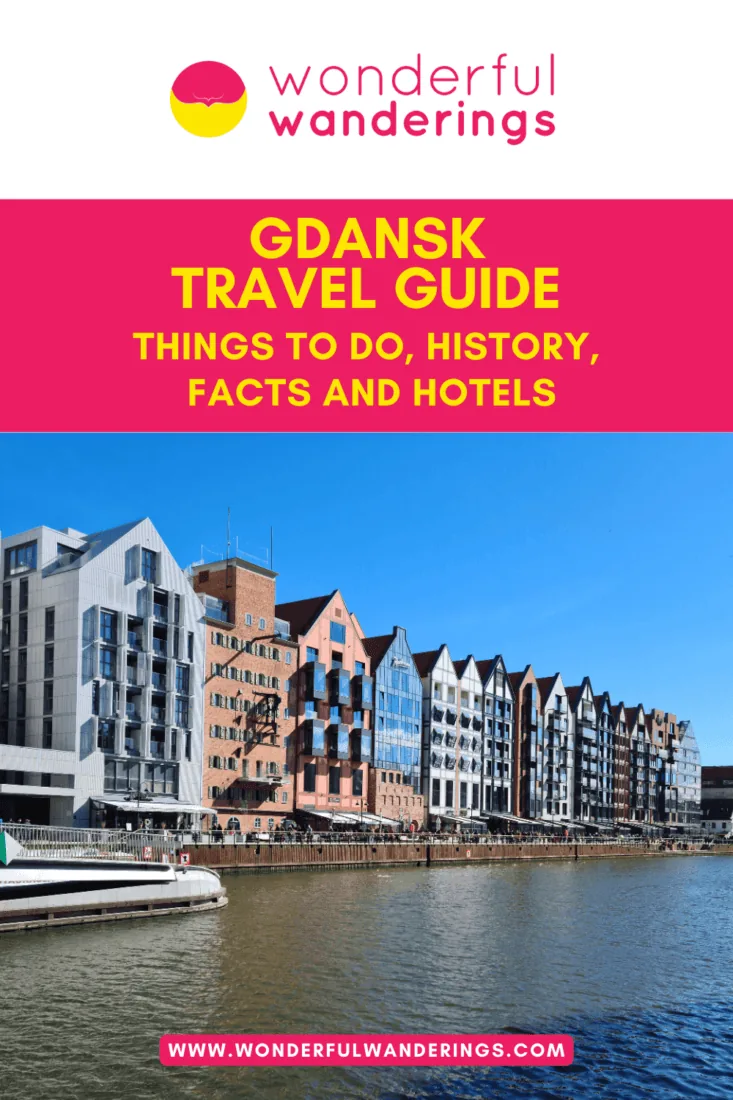
The editorial team at Wonderful Wanderings brings together travel experts with backgrounds in travel writing, web development and digital marketing. The team, through their collaborative effort, provides readers with relevant travel experiences and up-to-date digital content. The vast expertise within the team ensures an informative blend of travel stories and useful online travel guides and trip experiences, built on a foundation of both industry recognition and hands-on global adventures. Learn more about Wonderful Wanderings
Your email address will not be published. Required fields are marked *
Join 58,000+ other Wonderful Wanderers!
As an Amazon Associate I earn from qualifying purchases.

Visiting Gdansk: 18 Wonderful Things to Do | Ultimate City Guide
Nestled on the Baltic Sea coast, this cute port town boasts rich and complicated history, plenty of exciting sights to see, and one of the mesmerizing museums, to name a few. Visiting Gdansk should be on anyone’s plans when planning a trip to Poland. Therefore, this ultimate guide to visiting Gdansk is packed with all the necessary information, the best things to do in Gdansk, and much more.
Even though this post is based on my travels to Gdansk in winter, you can enjoy and experience most of the things listed here all year round.
This post includes affiliate links to products, which earn me a small commission at no extra cost to you. This helps to fund my blog and bring more authentic articles to you 🙂 Learn more
Download this guide as a mobile app
Why Visit Gdansk?
Located in northern Poland, Gdansk is the fourth-largest city. Together with the cities of Sopot and Gdynia, it forms a metropolitan area called Trojmiasto in Polish, or Tricity in English.
Even though Gdansk is a coastal town, it doesn’t feel like it because the Baltic Sea coast is far away from the city. However, it still brings breeze and cold to Gdansk.
One of the main reasons for visiting Gdansk is that it was the ground zero of World War II. It is here where the first shots were fired. Therefore the city has plenty of exciting and unique sights to explore.
Throughout its history, Prussia, Germany, and Poland ruled the city of Gdansk. In the middle ages, the area of the current Gdansk was inhabited by mainly German settlers, while in the 17th century, it was home to a large number of Jewish Poles, Poles, Latvians, Dutch, and Flemings.

In the most recent past, between 1920 and 1939, Gdansk was a semi-autonomous city-state called Free City of Danzig (a German name for Gdansk). The city was formed after World War I, according to the Treaty of Versailles. The Free City of Danzig also incorporated around 200 surrounding towns and villages that Germans primarily inhabited.
According to the Treaty, the Free City of Danzig was supposed to remain detached from the newly independent Polish Republic and the post-war German Republic. League of Nations protected the city.
ADVICE : always travel with comprehensive travel insurance that also covers COVID. I personally use SafetyWing .
Unfortunately, the obscure political statues of the Free City of Danzig created some tensions and led to World War II. During this tragic era of humanity, 90% of the city center was in ruins. People completely rebuilt it to its original state after the war.
Frequent border changes, displacement of its citizens, and new settlements have shaped the modern-day Gdansk in and after 1945.
In the 1980s, Gdansk became the birthplace of the Polish Solidarity movement, which was the main driving force to end Communism in the country. It also helped speed up the processes of breaking the Eastern Bloc, falling the Berlin Wall, and concluding the Warsaw Pact.
More Poland Content
Best time to visit gdansk.
Gdansk’s climate is gentler than elsewhere in Poland as the city is very close to the Baltic Sea. Summers here are colder than in southern Poland, while temperatures in winter are above zero. Although the wind is relatively common in Gdansk.
The beginning of spring still feels like winter, with short days, low temperatures, and not much sun. The weather in April is inconsistent, and it can bring sun and snow most of the time. Therefore, late May is the best time to visit Gdansk in spring. At this time, days are warmer, and plants start to turn green.
Another best time to visit Gdansk is in June to avoid big tourist groups but take advantage of long warm days with almost no rain. Even though the weather is not that warm to swim in the Baltic Sea, it is ideal for seeing the city and making day trips.
The peak season for Gdansk is July and August, and the hotels get booked far in advance. During these months, many locals also come to Gdansk for their vacation because of its access to the sea.
September is another best time to visit Gdansk with fewer tourists and still warm days to appreciate long strolls in the city. The real autumn here starts in October, making it ideal to see fall colors in this cute town. However, autumn brings lots of rain too.
Gdansk in winter brings Christmas markets and festive decorations to the city. The days are shorter, and the temperatures can go below zero, but with fewer crowds and lower prices, consider visiting Gdansk in December.
How Many Days to Spend in Gdansk
The majority of Gdansk attractions are in the Old Town and within walking distance from each other. Therefore, you can finish the majority of sights in one day.
The season you plan on visiting Gdansk or what you want to do determines how many days to spend in Gdansk.
For warmer and longer days in spring, summer, or autumn, 2 full days are enough for city sightseeing. However, for relaxing summer days at Gdansk beaches, add another 2-3 days.
Visiting Gdansk in winter requires 3 full days because the days are shorter, and the majority of the museums close at 4 pm. We stayed in Gdansk in winter for 2 full days, and even though we managed to see pretty much everything, it still felt a bit rushed.
How to Get to Gdansk
Visiting Gdansk is easy as it is well-connected to the rest of the country and the European continent. Lech Walesa Airport is the main domestic and international airport in Gdansk. Therefore, you can quickly fly directly from other cities in Poland or Europe.
→ Get a private transfer from Gdansk airport to your accommodation .
If you are in Poland already, Gdansk is also well-connected to the country’s main cities like Warsaw , Krakow , Poznan , Wroclaw , with public transport.
The train is the easiest and fastest public transport in Poland. There are also buses, but they might take longer than trains to get to the destination depending on traffic. Therefore, I advise you to travel via train to the central train station in Gdansk (Gdańsk Główny).
How to Get Around Gdansk GDANSK
All the places to visit in Gdansk are in the city center, making it a walkable city. When visiting Gdansk, you don’t need to use public transport for the main attractions. Use Gdansk public transport only when traveling to Sopot, Gdynia, Westerplatte, or Zaspa neighborhood, to name a few.
Tickets for trams and buses are the same. Here are quick ticket prices:
Single journey for regular, fast, and night lines – 3.80 PLN 60 minutes for all lines – 4.40 PLN 24 Houts for all lines – 14 PLN
You can buy tickets from vending machines at the tram/bus stops, from kiosks, or Jakdojade mobile app. Don’t forget to validate the tickets when you get on the bus/tram. Tickets bought via mobile app don’t need to be validated. You’ll get a fine of 154 PLN for traveling without a valid ticket, which you need to pay within 7 days. Otherwise, the price will increase.
I recommend downloading the Bolt taxi app if you want to use a taxi in Gdansk (use code YRP76 for a discount). It has relatively reasonable prices and is the best choice if you need to get somewhere in a hurry or arrive at Gdansk airport late at night and don’t feel like using public transport.
Where to Stay in Gdansk
Gdansk has many accommodation options, including hostels, hotels for various budgets, and apartments.
Our choice : Apartament Kameralny 11 na Starówce – centrally located behind the St. Mary’s Basilica. This apartment is one of the best places to stay in Gdansk and has everything to make your days here comfortable. The flat is bright with modern furniture, a TV and a full kitchenette to prepare your meals. All the Gdansk sightseeing are within walking distance from here.
Mid-range apartment : Blue Mandarin Old Town – is another centrally located option with views of the river or Gdansk Old Town. These modern apartments come with dining areas and a fully equipped kitchen.
Mid-range aparthotel : Dwór Uphagena ARCHE Hotel Gdańsk – a great hotel in Gdansk with reasonable prices and close to the main Gdansk attractions like Green Gate and Long Market street. The rooms are elegant with a minimalist approach and a touch of color in their design.

Hostel : Bi-Pi Hostel – one of the best places to stay in Gdansk if you are on the budget. Located in the city’s center, unlike many hostels, this one doesn’t have big dorm rooms. Instead, it has double, triple, and quadruple rooms with shared bathrooms. And if you want some privacy, they also have a double room with a private bathroom.
Boutique hotel : Hotel Impresja – is another alternative to stay in Gdansk for those who’d like to be a fit far away from the hustle and bustle of the town but still be close to the main attractions. This hotel has a cute design and an elegant dining room with gorgeous stained glass windows.
Luxury hotel : Radisson Hotel & Suites , overlooking the Motława River, is across the Green Gate, offering magnificent views of the riverside backdropped by cute houses. All rooms here have a desk, air-conditioning, a kettle, TV, and safety box, while some rooms even have a kitchen.
Holiday Inn Gdansk is another alternative if you are looking for a luxury hotel in Gdansk. Located on the shore of Motława River on Spichrzów Island, the hotel also offers views of the Old Town like the Radisson Hotel. Its Sky Bar on the 7th floor offers panoramic views of the city.
→ Find other apartments and hotels in Gdansk here .
18 Wonderful Things to Do in Gdansk
There is something for everyone in Gdansk, but it is mainly the city for history lovers due to its complicated past and the starting point of the Second World War. It is fascinating to see how Gdansk rebuilt the destroyed city center as it was pre-war.
From wandering the cobblestone streets, visiting its magnificent museums, and trying Polish food, here are the best things to do in Gdansk.
Buy Gdansk Tourist Card for free entrance and discounts
Before I get into the sightseeing, one of the things to do in Gdansk, or even before your visit, is to buy Gdansk Tourist Card and its Sightseeing Package if you plan on visiting Gdansk museums.
With the card, you have free admission to most museums and reasonable discounts on others. The card also offers various discounts for selected restaurants, services, and landmarks.
It’s straightforward to use and quite convenient. You can buy it online and pick up at various points throughout the city or buy it once you get to Gdansk.
→ Check out their website for more information
Stroll down the Dlugi Targ (Long Market street)
Długi Targ is the central pedestrian street of Gdansk Old Town. It was a merchant road that led to the oval market area in the past. The street is between the Golden and Green Gates of the city.
Before the 18th century, the street was also called Royal Route; only Polish monarchs used this path to enter the city. Therefore, the richest, prominent, and elite inhabitants lived in these houses.
Dlugi Targ street was also a place for executions of criminals that were either city’s citizens or the nobles, heretics, and witches.

Today, the street is home to some of Gdansk’s most charming, colorful, and ornate houses. Each building is a piece of art in its way, adorned with portraits of its inhabitants, statues, stuccos, mosaics, and painted figurative scenes, to name a few. They all have individual characters, and I am sure each has an intriguing story to tell. They are so stunning that I couldn’t help me from taking dozens of photos of every building.
The ground part of each house is still preserved along the street. Cemented staircases with ornate gargoyle rain gutters covered in a skinny layer of moss are absolutely mesmerizing to admire.
Apart from architectural marvels, the street has many shops, cute cafes and coffee shops, souvenir shops, convenience stores, exchange offices, etc.
Places to visit in Gdansk Old Town:
Złota Brama (Golden Gate): one of the main gates which lead to Long Market street. Famous Flemish architects created the gate adorning it with allegorical statues. The gate, constructed in the mid-17th century, was destroyed entirely during WWII and was not restored until 1997.
“Small states grow by concord, great ones fall by disagreement,” reads the inscription on it. Unfortunately, during our stay in Gdansk, scaffolds covered the gate due to the renovation.
Town Hall : this Gothic-Renaissance-styled Town Hall is the second tallest building in the city, which hosted various Polish Kings visiting Gdansk in the past. Today, it’s home to the Gdansk Museum, giving you a glimpse of its past life.
Lavish ceiling paintings of the Red Hall will leave you speechless before shifting your gaze towards the impressively-sized fireplace.

Other rooms of the museum showcase vintage furniture of the 16th-17th centuries, around 600 silver china and other pieces, and temporary exhibits in the Pile Gallery.
During our visit, the Gallery hosted breathtaking works of Tomasz Setowski, a local artist whose pieces showcase the fairy-tale world blended with reality in the most fascinating way. He is recognized as one of the most gifted and original painters of the young generation who created his own unique style.
The museum’s top floor shows what life was like in Gdańsk before the war. Small displays reveal the everyday lives of Gdansk citizens, home layout, and what items they’ve used. Apart from this, there are displays of businesses, a bank, and a pharmacy, to name a few.
You can go to the viewing platform to enjoy sweeping views of the Gdansk Old Town from this floor. Unfortunately, it was closed for renovation during our visit.
Opening Hours: closed on Tuesdays . The rest of the days are from 10 am – 4 pm. Thursday from 10 am – 6 pm. Entrance Fee: Adults – 16 PLN for the museum and 12 PLN for the viewing platform. Free on Mondays or anytime with Gdansk Tourist Card. Website: Museum Gdansk
Neptune Fountain: a famous Flemish architect created a bronze statue of Neptune, Roman God of Sea, in 1617. He also designed nearby Artus Court, the Golden House (41 Długi Targ street), and The Royal Granary next to the Central Maritime Museum. The statue was transformed into a fountain in the 1630s.
Neptune’s statue is the symbol of Gdansk, which was dismantled and hidden during the Second World War. The authorities put back the statue to its rightful spot only in 1954.
Artus Court: this remarkable manor was a meeting site for merchants and a centre of social life. It is named after King Arthur and its famous round table concept.
In the mid-19th century, it was renovated into a Dutch Mannerism style after a devastating fire, featuring striking sculptures and illustrations of man’s values and sins.

Inside is the museum now, featuring magnificent paintings of unknown artists, ornamented furniture, ship models, coat of arms, armours, and tapestries, to name a few.
The central piece of the museum is the 11-meter high heating stove covered in gorgeous 520 individual tiles showcasing the most outstanding leaders of Europe. The heater is said to be the tallest one in Europe.
Opening Hours: closed on Tuesdays . The rest of the days are from 10 am – 4 pm. Thursday from 10 am – 6 pm. Entrance Fee: Adults – 16 PLN; Free on Mondays or anytime with Gdansk Tourist Card. Website: Museum Gdansk
Brama Zielona (Green Gate): four-arched gatehouse on the riverfront used to be a palace for Polish monarchs. Even though none of the Polish Kings lived here, Lech Wałęsa (the driving force of the Solidarity Movement) had an office before the European Solidarity Center.
The building is now home to the Gdansk Photo Gallery and Modern Art Gallery, hosting various exhibitions.
From here, you can continue to cross the Green Bridge to Granary Island.
Opening Hours: closed on Mondays . Tue-Sun from 11 am – 6 pm. Entrance Fee: Adults – 15 PLN; Free on Fridays. Website: Nomus
Peek inside Katownia
Katownia refers to the medieval prison & torture chamber right in front of the Golden Gate. It was originally built as part of Gdansk’s fortification in the 14th century. However, a Flemish fortifications engineer later rebuilt it in the late 16th early 17th centuries. Two small buildings were the torture chambers, while the tall tower was a prison.
Even today, when you peek inside the yard, you can see heavy metal handcuffs hanging near the cell doors. The government still performed the executions until the mid-19th century. Like many other buildings, it was also destroyed during the war and rebuilt later.
Travel back in time by visiting the gorgeous house of a merchant
Johann Uphagen, a historian, art collector, and merchant, purchased this building in 1775 and renovated it to suit the needs of the that-time wealthy merchant. It is one of the few 18th-century merchant city homes in Europe open to the public.
From 1911 till 1944, Uphagen House was a museum. The war shattered the house to the ground and was rebuilt soon after. However, it didn’t open to the public until 1998.

Today, you can wander through the lavishly decorated rooms of the house and see how the Uphagen family lived back in the day. The floor made from stone panels and stucco decorations on the ceilings is absolutely stunning.
When you visit the house, only then do you realize how spacious and vast these narrow houses are.
Admire one of the oldest astronomical clocks
Considered the largest brick church globally, St. Mary’s Basilica is one of the first places to visit in Gdansk. You can admire 37 glass windows, 31 chapels and see more than 300 tombstones inside the church.
Like other city sights, the Basilica was also destroyed during the war, and the original frescoes were whitewashed.
One of the main reasons to visit the Basilica is the gigantic astronomical clock from 1464. Its comprehensive dials indicate the time and date, moon phases, the position of the sun and moon with the zodiac signs, and the calendar of martyrs.
With sweeping views of the Old Town, climb up 405 steps of the 78-meter-hight tower.
Opening Hours: varies at the moment, so check the website Entrance Fee: visiting the church is free. Tower viewing platform – 14 PLN for adults.
Cross the Green Bridge
Once you walk down Long Market street, the following places to visit in Gdansk are the Green Bridge leading to Granary Island and Gdansk Marina.
The island was the epicentre of the Danzig trade for many centuries and the primary source of its wealth. The first building on the island was a slaughterhouse in the 14th century. But as the city developed, new buildings were slowly added, including several manors, carpentry workshops, quality control points, and timber yards, to name a few.

By the mid-17th century, the island could store more than 250 thousand tons of grain and service more than 200 ships, making Gdansk the biggest harbour on the Baltic Sea and one of the wealthiest cities in Europe.
Today, the island is home to some international hotel chains, museums, coffee shops, bakeries, and a couple of restaurants offering a fantastic view of the waterfront and the old town.
Admire the once most giant Crane in the world
Another iconic symbol of Gdansk, this Crane, represents what little has been left from the glorious trading age of the city. For the best views of the Crane against the waterfront, admire it from Granary Island.
The Crane is one of the defining symbols of Gdańsk and represents what little is left of the city’s lavish trading age.
visiting gdansk, best things to do in Gdansk
Apart from putting up masts on ships and transferring cargoes, it also had a defensive purpose for the city’s one of the gates. Using two giant, 6 meters in diameter wooden wheels, the Crane could lift 4 tonnes of goods to a height of 11 meters. Men walking inside these wheels powered the Crane to shift the lifting mechanism. The Crane worked till the mid-19th century, and in 1945 80% of the building was obliterated.
The government rebuilt it after the war and donated it to the Polish Maritime Museum.
Currently, the Crane is under construction and closed to the public.
Understand how Gdansk became the ‘city of Amber’
Gdańsk has harvested Amber gemstones for centuries and has been the leading city in the production of Baltic Amber stones.
The exhibition in the museum dives deep into the history of Baltic Amber, how it got the title of ‘city of Amber’, the differences between gemstones, and gets you up close and personal with various items made solemnly from them.

The display of insects, bugs, and plants caught inside the stones is fascinating to look at, so is the hall of gorgeous jewellery items made from these stones.
Opening Hours: closed on Tuesdays . The rest of the days are from 10 am – 4 pm. Thursday from 10 am – 6 pm. Entrance Fee: Adults – 20 PLN. Free on Mondays or anytime with Gdansk Tourist Card. Website: Museum Gdansk
Shop for Amber at Mariacka street
Gdansk is also referred to as the ‘capital of Amber’ due to its centuries-old tradition of cultivating Amber stones. Therefore, one of the places to visit in Gdansk is Mariacka street to shop for this ‘Baltic Gold’.
Although the city has plenty of shops to buy the gem, Mariacka has the most prestigious and authorized Amber sellers in Gdansk. Making fake Amber is pretty easy, and many street stall dealers might sell fake ones. However, this doesn’t mean that shops sell only authentic and natural stones. Be careful, do your research beforehand, and always ask for the certification of authenticity.
Trusted Amber shops on Mariacka street are Galeria Wydra, Amberstyl, and Salonik Pod Skrzydlatym Aniołem.
→ Become an amber craftsman in the workshop
Learn more about WWII and how it started
Gdansk is a small heaven for museum and history lovers. Even if you are not a big fan of museums, you should consider them as part of your itinerary when visiting Gdansk better to understand the most recent history of humanity.
Museum of the Polish Post Office is one of the spots where the Second World War broke out. After the decisions of the Treaty of Versailles came into force in 1920, the Polish post began its service in Gdansk. Nestled in a several-story brick building, the museum tells the story of Gdansk Polish Post Office workers and community in 1920-39. The employees’ heroic defence of the building on September 1, 1939, against Germans went down in history.

The museum showcases unique manuscripts, prints, and items connected to the battle. You can see the plan of attack on the Post Office made by Germans on July 3, the same year.
Opening Hours: closed on Tuesdays . The rest of the days are from 10 am – 4 pm. Thursday from 10 am – 6 pm. Entrance Fee: Adults – 16 PLN. Free on Mondays or anytime with Gdansk Tourist Card. Website: Museum Gdansk
Museum of the Second World War is one of the best museums in Gdansk, telling the story from the beginning with the uprise of Nazi and Communism movements in Germany, France, Italy, and Russia. Within its intertwined 8 rooms, the museum follows the significant events chronologically with magnificent visual and digital displays.
It even has war-era military equipment inside, including a tank and naval artillery, personal items of soldiers, items from concentration camps, and many more.

The Museum of the Second World War is undoubtedly is one of the best museums I have ever visited. Oto and I were both amazed at how well-laid-out it was. The information on the plates was easy to digest and understand, while visual and multimedia equipment made us feel we were part of the history.
If you want to hear more interesting stories, legends, and consequences of WWII, join organized tours:
- Gdansk private WWII tour with Museum of the Second World War ticket
- Private WWII tour with Museum of Second World War and Post Office Museum tickets
Opening Hours: varies according to season. Check the website . Closed on Mondays . Entrance Fee: Adults – 25 PLN. 16 PLN with Gdansk Tourist Card.
Find out what role plaid Poland to end Communism in Poland (and maybe elsewhere)
European Solidarity Centre aims to promote awareness of anti-communist opposition in Poland and Europe and the Solidarity movement that played a significant role in ending Communism in the world.
The five-floor building is not only a museum. It also has a lovely atrium with greenery, library archives, a few conference halls, reading rooms, dining venues, a rooftop terrace with panoramic views of the shipyards, and a massive children’s playground, to name a few.
While the building is free to enter, you still need to pay for the permanent exhibition spread out in seven halls. The museum offers unique documents, artefacts, film footage, and photographs with a mixture of traditional exhibition methods and pretty impressive interactive displays.
Museum tells a long story, starting with Anna Walentynowicz , an activist and co-founder of Solidarity, the first non-communist trade association in the Eastern Bloc, followed by the years of tension and the birth of the Solidarity movement.
It also covers how Lech Walesa became the leader of the movement and how the activists managed to uprise against the Soviet Union together with other countries of the Communist Bloc to fight for freedom.
The last two sections present the victory of democratic elections in Poland, which led to the foundation of many independent states in Europe as they broke away from Soviet rule.
Opening Hours: varies by season. Check the website . Entrance Fee: Adult – 30 PLN, including a free audio guide. 20% discount with Gdansk Tourist Card.
Drink hot chocolate
One of the things to do in Gdansk is to drink a delicious hot chocolate from the E. Wedel Company.
It’s a local confectionery manufacturer producing cakes, chocolates, and snacks since 1851. It basically is the Polish national chocolate company with several cafes in pretty much every city of Poland.

While you can buy E. Wedel chocolate bars and other candies in the grocery stores, trying their products in one of their cafes is absolutely a must-do when visiting Gdansk.
They have bitter, milk, and white-hot chocolates to choose from. A small cup costs 16 PLN, a bit expensive for Polish standards and cost of living, but it’s worth every Zloty!
Try Polish doughnuts
Pączki are local, deep-fried doughnuts filled with various cream or fruit fillings. These doughnuts are covered with icing, glaze, powdered sugar, or orange zest.
Stewed plum jam and wild rose fillings are traditional, but bakeries also sell Pączki with strawberry, salty caramel, blueberry, raspberry, and custard, to name a few.
While all bakeries sell Pączki, Dobra Pączkarnia is famous for its tastiest doughnuts in the country.
Visit Gdańsk Christmas market
You can’t miss the Christmas market when visiting Gdansk in winter. Set nearby the Golden Gate and adjoining streets of Dlugi Targ, wandering through the stalls is one of the best things to do in Gdansk at night. Even though the market opens late morning or afternoon, save the visit after dark to see the charming Christmas decorations at their best.

Touring around the Christmas market is an excellent way to get into the festive mood and try some local meals explicitly prepared during this time of the year.
Eat like a local at a Milk Bar
Milk Bar or Bar Mleczny is a local cafeteria that emerged in Communist times. The venue supplied locals with government-funded traditional Polish meals at the lowest cost. Traditionally, the restaurant served food based on dairy products, hence comes the name. But over time, they started providing non-diary local meals as well.
Even today, they are still the cheapest options providing comfort food to locals and foreigners.
While some Milk Bars look vintage, as if the time has frozen inside, others have relatively modern yet simple interiors.
Neptun on Dlugi Targ is one of the best Milk Bars in Gdansk for a cheap local dinner or lunch.
→ Join 4-hour traditional Polish food tour .
Visit the biggest street art neighborhood
If you like street art even for the slightest, touring the grounds of the Zaspa neighbourhood is one of the must-do when visiting Gdansk. And if you’ve been following my travels, you know that I LOVE street art, and when I found out that there is a whole neighbourhood featuring about 60 gigantic murals on the walls of the Soviet residential complex, I had to see it.
This open-air gallery is a Monumental Painting Collection in Gdansk that started back in 1997 to commemorate the 1000th anniversary of the city.

Zaspa area itself has a rich history. This place is even more special because the residents of this complex do tours in Polish and English, telling stories about the art and anecdotes of artists who worked on those mesmerizing murals.
We had a fantastic time with Jarek Orlowski, a local guide, who showed us the best mural pieces and told us great stories about how artists worked on them, what challenges they faced while painting, or what inspired them to create those pieces.
However, if you feel adventurous, you can walk around yourself without the guide and follow the PDF guide and a map created by the organization that curates the area.
Tours in Polish are free and happen three times a week in summer. English tours are done on individual requests from May to October. Get in touch with them here . Price for English tours : 185 PLN paid to the guide, no matter if you are alone or a group of people. But double-check with the organization.
Go on a day trip to Sopot
Sopot is the seaside town between Gdansk and Gdynia. Its location at the Baltic Sea makes Sopot a popular destination among locals for summer holidays.
There is not much to do in Sopot. Relax on the beach on warm days, walk the longest wooden pier in Europe, admire the Krzywy Domek – an unusually shaped building, and walk the main street of the city called Ulica Bohaterów Monte Cassino.
Wandering the streets of Sopot is a fun way to spend a day or half-day away from Gdansk. We didn’t have much of the plan for Sopot, so we walked aimlessly until we stumbled upon a street full of the most charming houses we’ve seen in the city.
The long street Jana Jerzego Haffnera is full of charming and adorable private residential houses and apartment blocks.
MORE PLACES TO VISIT IN GDANSK AND BEYOND
There are plenty of interesting small towns around the city; therefore, you can easily make day trips from Gdansk to visit some cultural and historical sights from here. Weserplatte is a peninsula where the first gunshots were fired that triggered WWII.
The fairytale-looking Malbork Castle , the world’s largest fortification by land and a UNESCO Site, is only a 50-minute train ride away.
My favorite travel Resources
✈ Book affordable flights on WayAway , a platform that shows the best flight deals, tours, and hotels. With a WayAway Plus membership, you can earn cashback . Get 10% off with code: RFD10
🚫 Get compensation for up to 700$ with Airhelp if your flight was canceled or delayed within the last 3 years.
🚗 Rent a car with DiscoverCars , a trusted international car rental website.
💻 Get a VPN from Surfshark to protect your devices from hackers when using public Wi-Fi when traveling.
📱 Install the Airalo app , which provides local eSIMs for a more affordable internet connection when traveling. Get 3 USD with code: BAIA2592 .
💸 Use Wise to withdraw money in local currency without hidden fees and avoid high exchange rates. On top of that, you might get a Visa or Mastercard debit card .
🏨 Find budget-friendly deals on all sorts of accommodation types on Booking.com .
❣ Pre-book a private car transfer with Welcome Pickups to your hotel.
🩺 Buy the most flexible and budget-friendly travel insurance, SafetyWing , covering COVID with add-ons for adventure sports and electronics theft.
☀ Book in advance some of the best city walks, cultural experiences, and day tours to maximize your stay and experience here.

Want more inspiration?
Spread the word!
Thank you for sharing lots of amazing info on this beautiful location! I recently visited and loved it there, and I hope I can visit again one day! It’s such an interesting place to explore and wander.
Hi Bea, I am glad you found it helpful! I’d love to go back in the warmer season.
What a great blog on Gdansk. I’m going there next week and your tips and ideas were really extensive to assist planning my trip. I can’t wait!
Hello Tamsin,
I am gald you found my Gdansk city guide helpful. It’s one of my favorite cities in Poland, so have fun!
Leave a Reply Cancel reply
Your email address will not be published. Required fields are marked *
This site uses Akismet to reduce spam. Learn how your comment data is processed .
- 1.1 Tourist information
- 1.2 Tourist Card
- 2.1.1 Transport from airport to city
- 2.2 By train
- 2.5 By boat
- 3.1 By tram and bus
- 3.2 By train
- 4.1 Main city
- 4.2 Religious buildings
- 4.4 Museums
- 4.5 Further afield
- 8.1.1 City centre
- 8.1.2 North-west Gdańsk
- 8.2 Mid-range
- 8.3 Splurge
- 10.1 Budget
- 10.2 Mid-range
- 10.3 Splurge
- 11.1 Internet
- 12 Stay safe

Gdańsk [dead link] (also known by its German name Danzig ) is a city in Poland on the Baltic Sea. Gdańsk is considered one of the most beautiful cities on the Baltic Sea and has magnificent architecture.
Understand [ edit ]
Gdańsk is the capital of Pomerania . In 2021, it was home to 471,000 people. Gdańsk with nearby Sopot and Gdynia are often referred to as Trójmiasto ("tricity").
Its position on the Baltic has made Gdańsk one of the most important port cities in Northern Europe, and the scene of a disturbing past. Gdańsk used to be the biggest and richest city in the Polish Kingdom. The first claim to fame for Danzig (as it was then known) was its membership in the Hanseatic League as an important Baltic port on the crossroads of North East and Central Europe.
World War II was ignited by a dispute over the control of the city. By the end of the war the city lay almost completely in ruins. The German population was expelled and replaced by Poles as the city came under Polish rule and changed its name to Gdańsk. However, the impact of its former German ties are still evident. Most of the old buildings were damaged or destroyed in World War II, but they have been painstakingly restored or rebuilt, although in a style that is not exactly the same as before the war.
In modern history, Gdańsk is known as the birthplace of Solidarity (pl: Solidarność ), the labour and democracy movement that helped to bring down the Communist government in Poland at the end of the Cold War . The movement was led by the charismatic leader, Lech Wałęsa, who won the Nobel Peace Prize in 1983 and in 1990 became Poland's first post-Communist president.
Tourist information [ edit ]
- 54.34817 18.65544 1 Tourist Information Centre , Długi Targ 28/29 ( Next to Green Gate ( Zielona Brama ) ), ☏ +48 58 301 43 55 , [email protected] . May - August: daily 09:00-19:00; September - April: daily 09:00-17:00 . ( updated Jun 2020 )
- Tourist Information Point , Rajska 10 ( In the Madison shopping mall. ), [email protected] . M-Sa 09:00-17:00, Su 10:00-17:00 (only Sundays when shopping is allowed) . ( updated Jun 2020 )
- Tourist Information Point , Słowackiego 200 st. ( at Lech Wałęsa Airport ), ☏ +48 58 348 13 68 , [email protected] . 24/7 . ( updated Jun 2020 )
- 54.34854 18.65269 2 PTTK Tourist Information , 45 Długa st ( opposite the Town Hall ( Ratusz Głównego Miasta ) ), ☏ +48 58 301 91 51 , +48 58 301 37 52 , [email protected] . ( updated Jun 2020 )
Tourist Card [ edit ]
At every Tourist Information point you can buy the Tourist Card [dead link] .
Within the "Gdańsk-Sopot-Gdynia-Plus" Tourist Card nearly 220 offers are available, including: accommodations, performances, concerts, exhibitions, souvenirs, books, amber jewellery purchase, dinners and other meals, water equipment hiring, car rental, paintball, Aquapark, visits in beauty salon, and entertainment.
Get in [ edit ]

By plane [ edit ]
Transport from airport to city [ edit ].
Bus 210 — operates between the airport (bus stop: Port Lotniczy) and Gdańsk, and makes a stop at the train station, 35–50 minutes away. Perhaps the preferred way to buy ticket is install Jakdojade: public transport app You get more information about route and stops in English with this app. The fare is 4,80 zł for single travel in one bus in one route. It is also possible to buy ticket from a news stand, ticket machine or Bilety shop and from driver. Make sure you have correct ticket and it is validated in validating machine inside bus. There is controller regularly after few stops on the route looking for foreign travelers who have wrong ticket, wrong punching, ticket machine malfunctions etc. There is fine of the order of 200-300 zł. (See videos in youtube also). Talk with fellow passengers, driver about validity of ticket if not 100% sure.
Train [dead link] — There's a train connection [dead link] to the city center roughly every 15 min during the day (Airport stop: Gdańsk Port Lotniczy). Less frequent services in the morning, evening and at night. The train station is accessible from the west end of Terminal T2 via a covered bridge. Ticket machines are on the platforms. There are a few direct connections to the main train station in Gdańsk. For other connections to the main train station you need to switch trains in Gdańsk Wrzeszcz. Single tickets to the main train station cost 3.50 zł.
Airportbus shuttle — operates a transport service to Gdańsk centre for 9.90 zł (you can buy ticket directly in the bus). This is a direct line between airport and city's centre. Bus stop in Gdańsk is located in front of Mercure Hevelius hotel (it's 5 minutes walk from Main Railway Station). Journey depends on traffic and takes around 25–30 minutes.
Taxi — Avoid the unofficial, rip-off taxis who will pounce on you as soon as you have cleared security, unless you know how to deal with them. A taxi from the airport to the city centre should cost up to 100 zł however will cost more in the evenings or at weekends. "Neptun" is an officially recognized company. Taxi drivers will be waiting in the arrivals hall offering fixed price transfers, 100 zł is not unreasonable for an evening (after 22:00) transfer to the centre of Gdańsk. Uber and Bolt operate in the area too and cost is provided upfront for peace of mind.
Private transfers — MPA Poland provides transport services around Tri-City and Pomerania region. An airport transfer from/to airport costs 100 zł up to 8 people.
By train [ edit ]

Gdańsk is a major hub on the Polish railway network. High-speed trains runs frequently from Krakow (6 h) via Warsaw (3 h) and there are slower intercity trains from most major Polish cities with at least a couple of departures every day. All inter-city trains to Gdańsk continue north up the coast to Sopot and Gdynia , a 25 min ride. Local SKM trains also shuttle on this route every 10 min or so.
There are a few international trains too. One daily train from Berlin , taking six hours via Frankfurt (Oder) , Poznań , Gniezno and Bydgoszcz as well as one daily train from Vienna via Ostrava (for Prague ), Katowice and Warsaw, 10 hr 30 min.
National operator PKP runs all high-speed and intercity trains while SKM [dead link] operates the regional trains between Gdańsk, Sopot and Gdynia .
See Poland#Get in for general tips on rail travel. It helps to write down your destination and preferred time to show to ticket clerks as trains have different prices.
By car [ edit ]
By bus [ edit ].
Buses can be used to travel to regional destinations that lack railway connections, such as the concentration camp in Sztutowo . Polskibus operates coach services from here, with direct connections going to Poznań , Wrocław and Warsaw.
By boat [ edit ]
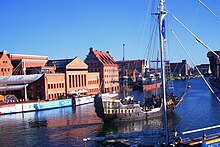
Polferries operates ferry service between Gdańsk and Nynäshamn, just south of Stockholm , Sweden . The trip takes 18 hours and costs ~€70.
Stena Line operates ferry service between Gdynia and Karlskrona , Sweden . The trip takes 12.5 hours and costs ~€50.
Get around [ edit ]

By tram and bus [ edit ]
Zarząd Transportu Miejskiego , the City Transportation Office. Easyway journey planner helps to find schedules and routes.
Trams and buses are cheap (3.80 zł/hr) and frequent. Tickets can be bought from drivers, but it is easier to buy them from ticket machines (which are on most popular stops) and kiosks. The most popular website and mobile app for journey planning is jakdojade.pl. Google Maps has reliable public transport data, and is an excellent tool for planning your journeys.
Single journey tickets are valid until leaving the bus or tram. They cost 4.80 zł for a full-price and 2.40 zł for a half-price ticket.
Time tickets are based on travel time, so you must estimate the duration of the journey or have a few tickets extra to validate when your previous ticket expires. Time tickets are either valid for up to 24 hr and allow any amount of journeys and changes within that time. The 75-min time ticket costs 6.00 zł for a full-price ticket and 3.00 zł for a half-price ticket. The 24-hr ticket costs 22 zł for a full-price ticket and 11 zł for a half-price ticket and is valid on all trams, buses during the day and on night buses.
All tickets need to be validated at the start of the journey.
SKM trains [dead link] make 16 stops along the coast (from the first station,Gdańsk Śródmieście to Gdynia Główna. The main stops are Gdańsk Główny, Gdańsk Wrzeszcz, Gdańsk Oliwa, Sopot, and Gdynia Główna.
A ticket from Gdańsk Śródmieście to Gdynia Główna will cost 9 zł and from Gdańsk Śródmieście to Sopot is 6.40 zł.
- Halorent Car Rental , ☏ +48 695-78-78-95 , [email protected] .
- MPA Poland , ☏ +48 515 181161 , fax : +48 58 5549393 , [email protected] . Personalised private car hire with driver, or rental cars to self-drive.
- As-Car Car Rental 24h/7 , Stężycka 107 , ☏ +48 790 017 270 , [email protected] . ( updated Dec 2017 )
See [ edit ]
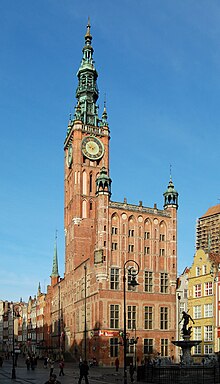
Main city [ edit ]
The main city ( Główne Miasto ) is the historic part of Gdańsk and contains most of the sights. The Long Street ( ulica Długa ) and Long Market ( Długi Targ ) are two of the most beautiful streets in the city. They are enclosed first by the Upland Gate, then by the Golden Gate to the west and the Green Gate to the east close to the riverside. This entire stretch is also referred to as the Royal Way . Along those two streets there are many interesting sights.
- 54.34857 18.65322 3 Neptune Fountain , Długi Targ . Statue of Neptune, patron of the city, installed in 1549. During World War II, the statue was hidden. In 1954 it was put back to its original location on the Long Market.
- 54.3499 18.6572 10 Motława River bank , Długie Pobrzeże . Impressive houses stand along the river bank. They can be nicely observed from the other bank of Motława.
- 54.35056 18.65744 11 Crane over the Motława River ( Żuraw ), ul. Szeroka 67/68 , ☏ +48 58 301 69 38 , +48 58 329 87 60 . Opening hours for Dec and Jan: Tu-Su 10:00-15:00, M closed . The former port crane is one of the most well-known buildings in Gdańsk. It is first mentioned in 1367, but was rebuilt several times since then. During World War II it was partially destroyed again. In 1962 after final reconstructions it was turned over to the National Maritime Museum. It now houses an exhibition about the former port of the city. The mechanism for lifting the crane can be observed as well. 8 zł adults, 5 zł concession, 1 zł children. Last tickets sold 30 min before closing. Tickets available in the museum next door . ( updated Dec 2015 )
- Maiden in the window .
Religious buildings [ edit ]
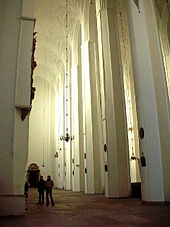
- 54.34988 18.6525 13 St. Mary's Church ( Bazylika Mariacka ), ul. Podkramarska 5 . Open daily. Tower closed in winter months (around Dec-Mar) and at bad weather conditions . One of the largest Gothic churches in Europe and one of the three (almost equal sizes) second largest brick churches in the world. There is space for more than 20,000 people in the church. It is possible to take the stairs to the tower (78 m), but the view is not as inspiring as the one from Main Town Hall. The church also contains a large astronomical clock from 1464. There are tickets to visit the church and tickets to the tower, sold in different places. Apr-Nov: 6/3 zł including tower, 4/2 zł without tower; Dec-March: free (tower closed) . ( updated Jan 2016 )
Other [ edit ]
- 54.35396 18.64803 20 Hall of the Old City ( Ratusz Starego Miasta ), ul. Korzenna 33/35 . Built in the 16th century. Its most famous resident was the councillor and mayor of Danzig, Johannes Hevelius, who was also an astronomer in his later life and a brewer in his earlier life. The building is now home to the Baltic Sea Culture Centre. ( updated Jun 2020 )
- 54.35243 18.6453 21 New City Hall ( Nowy Ratusz ). The current seat of the Gdańsk City Council.
- 54.36054 18.64904 22 Memorial to fallen Shipyard Workers , Solidarity Square . Monument to the Fallen Shipyard Workers shot during communist regime in 1970.
- 54.354 18.6499 23 Grand Mill , ul. Wielkie Młyny 16 . Old mill (built 1350), with 18 water wheels up to 1939 produced 200 tonnes of flour daily, but is now a shopping centre.
- 54.38459 18.60981 24 Günter Grass Monument , Plac Wybickiego ( close to the train station Gdańsk Wrzeszcz ). A statue of the author Günter Grass, who was born in Gdańsk, facing his famous character Oskar Matzerath from The Tin Drum . Installed in October 2015, six months after his death, and on his 88th anniversary. ( updated Jan 2016 )
- 54.350833 18.648889 25 Great Armoury ( Wielka Zbrojownia ), ul. Targ Węglowy . Old city arsenal from 1605. Great example of Dutch design with astonishing stonework. These days the Great Armoury belongs to the Gdansk Academy of Fine Arts and visiting inside is only possible during art exhibitions which are organised from time to time by the Academy.
Museums [ edit ]
- 54.34934 18.65652 26 Archaeological Museum , ul. Mariacka 25/26 .
- 54.354 18.6509 27 Tower Clock Museum , ul. Wielkie Młyny 10 ( located in the tower of Saint Catherine’s Church ), ☏ +48 58 305 64 92 . M-W F-Su 11:00-19:00, Th 10:00-17:00 . Part of the Gdańsk History Museum. Inside the museum you can also see a carillon and views from the top of the tower. ( updated Dec 2015 )
- 54.35517 18.65686 29 Gdańsk Post Office and Museum , ul. Obrońców Poczty Polskiej 1-2 . M 09:00–13:00, Tu–Th 09:00–16:00, F Sa 10:00–18:00, Su 10:00–16:00 . There is a small museum which documents the events that happened on 1 September 1939 at the beginning of World War II. It also contains a small active post office. Even if the museum is closed, the square in front has a great (and free) series of billboards summarizing the start of the war. 8 zł adults, 5 zł concesssions, Mon free . ( updated Apr 2019 )
- 54.3515 18.6587 31 Sołdek Ship (Museum) , ul. Ołowianka 9-13 , ☏ +48 58 301 86 11 . Closed in winter . The ship was launched in 1948 as the first Polish ocean-going vessel and used as a coal and ore carrier. It was named after the "shock worker" Stanisław Sołdek. It is part of the National Maritime Museum. ( updated Dec 2015 )
Further afield [ edit ]
- 54.406 18.676 33 Westerplatte ( take bus 106 from bus stop Akademia Muzyczna or 606 from train station to Westerplatte, the bus ride takes about 20 minutes and leaves hourly, check schedule via jakdojade.pl ). Park with many information panels about the first battle of World War II that took place here in September 1939. You can also see disused bunkers and a crumbled command-post, as well as a large monument to those who fought in the battle. From the monument you have a view of the Nowy Port area and the lighthouse. The bus ride also takes you past the enormous (now defunct) shipyards. Free . ( updated Jun 2020 )
Do [ edit ]
- Swim in the sea . The water is usually cold. Almost all of Gdańsk's coast consists of sandy beaches accessible for recreation. There are multiple areas with lifeguards, food stands and bars; the most popular ones are in Brzeźno and Jelitkowo. A less crowded one is in Stogi. The beach that's the furthest from the city centre (and thus not well accessible using public transport) is on Sobieszewo Island.
- 54.3426 18.6491 4 Canoe-tour through the canals , ul. Żabi Kruk 15 .
- 54.34968 18.65497 5 Walk the Mariacka street , Mariacka . Take an evening walk down one of Europe's most picturesque streets.
- Water tram ride . ZTM offers a seasonal water tram service: route F5 Żabi Kruk - Westerplatte and F6 Targ Rybny - National Sailing Centre . A single ticket costs 10 zł.
- Football: Lechia Gdańsk were relegated in 2023 and now play in 1. Liga, the second tier. Their home ground is Stadion Energa Gdańsk (capacity 41,600), 3 km north of town centre.
Events [ edit ]
- Mystic Festival Largest metal festival in Poland
Work [ edit ]
Teaching English is a possibility.
Buy [ edit ]
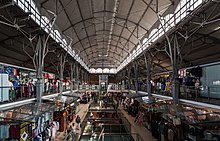
Gdańsk is sometimes called the Amber Capital of the World . The surrounding area is the richest known source of this semi-precious stone, and the product can be found in many of the city's shops. The ones with insects in are much more expensive.
- Galeria Sztuki Kaszubskiej ( Kashubian Art Gallery ), ul. Św. Ducha 48 ( near St. Mary's church: one block left when facing church entrance ), ☏ +48 503 0059783 . Hand-embroidered items in traditional and contemporary designs and colours including clothing, tablecloths, napkins, curtains, and other regional folk art souvenirs.
- 54.35277 18.65203 1 [dead link] Market Hall ( Hala Targowa ), Plac Dominkański 1 . Fresh produce in the basement level. ( updated Jan 2016 )
Eat [ edit ]
Budget [ edit ], city centre [ edit ].
- 54.348869 18.648009 1 Pyra Bar , Garbary 6/7 . The food does not only has a nice name, but also tastes great. A large selection, solid portions. A quiet place, a garden on the corner of the street, away from the hustle and bustle of the city but still close. ( updated May 2022 )
- 54.348467 18.654155 2 Pijalnia Wódki I Piwa , Długi Targ 35/38 . Interesting decor back of communists periods. Nice atmosphere and simple dishes. A revelation. ( updated May 2022 )
- 54.349036 18.653675 3 No To Cyk , Chlebnicka 2 . Very recommended for people who want to feel the atmosphere of 1990s and underground. Food is simple but amazing. Very cool retro vibe. ( updated May 2022 )
- 54.352941 18.652714 4 Pasta House , Lawendowa 9 . Cozy place, delicious Italian pasta, original packaging for dishes, friendly service and very short waiting time for food ( updated May 2022 )
- 54.352772 18.651466 5 Dominikański , Plac Dominikański 1 . Best place with "home" cuisine. Delicious food, large portions. The tomato soup is poetry. ( updated May 2022 )
- 54.351822 18.650301 6 Bar Turystyczny , Szeroka 8/10 . Very good home cooked food. Tasty and wonderful meals with a sense of humor. ( updated Aug 2022 )
- 54.350944 18.64975 7 Alanya Kebap , Kołodziejska 2 . Turkish specials on the polish soil. Great kebab in a bun. Good meat (beef), good salads, lots of sauce, delicious cucumbers. ( updated May 2022 )
North-west Gdańsk [ edit ]
- 54.398046 18.574839 8 Manekin , ul. Aleja Grunwaldzka 270 , ☏ +48 58 554 32 59 . The place mainly serves pancakes with different type of sources, fillings. You can order not only sweet pancakes here. Recommended are the ones with potato flour. Or Try the crepe with chicken, camembert and cranberries. ( updated Oct 2022 )
Mid-range [ edit ]
You can buy fish on one of bars on Motława River bank (25 zł/meal)
- 54.353811 18.646676 9 Pierogarnia Mandu Gdańsk Śródmieście , Elżbietańska 4/8 ( up from Neptune Fountain ), ☏ +48 58 3016071 . serves pierogi (dumplings). Big portions, do not order more than one per person. Because it's cheap and good, it's crowded in the season and during lunch time. ( updated Jan 2023 )
- 54.356877 18.652501 10 Swojski Smak , ul. Heweliusza 25/27 . Good value, nice food, in a nicely decorated venue. ( updated Jan 2023 )
- 54.349128 18.656251 11 Gdański Bowke , Długie Pobrzeże 11 . Lots of delicious traditional polish food. Even though it's in a tourist spot, the quality of the food is truly fine. The tatar tastes amazing with different shades of flavor. Just next to the riverside. ( updated Jan 2023 )
- 54.348862 18.65756 12 Słony Spichlerz , Chmielna 10 . Nice place to seat outside and see river. Beautiful food hall with a chilled atmosphere and a great variety of vendors around. ( updated Jan 2023 )
- 54.40947 18.561825 13 Kafe Delfin , ul. Opata Jacka Rybińskiego 17, Oliwa ( take a tram 2,6,11 or 12 and get off at the Oliwa Pętla Tramwajowa stop ), ☏ +48 58 552 03 44 , +48 698 46 88 33 . A charming, cozy cafe serving delicious apple pie and coffee. Try also cheap and tasty bread toasts. ( updated Jan 2023 )
Splurge [ edit ]
- Restauracja Filharmonia , ul. Olowianka ( in Philharmonia Baltica building ), ☏ +48 58 3238358 . 12:00-22:00 or until the last guest . "Molecular" cuisine in lovely building with great view on the river. Excellent service, but no vegetarian dishes. ~100 zł for 3-course meal .
- Fellini , Moltawa area, near Hilton . High-quality Italian cuisine and top-notch service. ~100 zł for three-course meal .
- Gdańska , ul. Św. Ducha 16 , ☏ +48 58 3057671 . An entertaining place to visit. The rooms are filled with antiques according to the principle less is not more , and the waiters are dressed like in the good old days. From 18-100 zł .
- Tawerna Mestwin , ul. Straganiarska 20/23 ( Old Town ). A regional restaurant serving traditional Kashubian dishes. Pretty expensive, but worth it.
Drink [ edit ]
Danziger Goldwasser , root and herbal liqueur which has been produced since 16th century is considered the city's drink (it is now made in Germany though). It's vodka-based, creamy and has small flakes of 22- or 23-karat gold in it. Cheaper alternatives include Gdańska Złotówka or Złota Woda .
Gdańsk's national drink before World War II was Stobbes Machandel juniper vodka. After the war it was rejected and slightly forgotten due to association with German soldiers occupying the city, but today is gaining popularity again. There is a special ritual to be followed while drinking a shot of Machandel with a dried plum for a snack.
Bars [ edit ]
- Brovarnia Gdańska , Szafarnia 9 ( on the other side of the river next to the old city ). A mini brewery making their own really good beers in the basement of a hotel in restored 18 century granary. Food also served. Beer: 10 zł .
- Bar Shpinx , Długi Targ ( Main street ). Another bar on the main street. Beer: 9 zł .
- Loft , ul. Młyńska 15 ( near Jacks Tower ). Nice late bar/club, no entry charges, free food late on weekends, good music and good young crowd. Beer: 6 zł, tatanka 8 zł .
- Sassy , Chmielna 10 ( 80-748 ). ( updated Oct 2022 )
Sleep [ edit ]

As the TriCity is in effect conjoined and there are good, fast transit links, you can just as well consider accommodation in Gdynia or Sopot .
- Dom Harcerza , ul. Za Murami ( 200 m east of Długi Targ ). Simple but very clean and tidy rooms. Singles at 50 zł, double at 120 zł. Generous breakfast offered by the café in the back at 9 zł .
- Baltic Hostel , ul Wałowa 52 ( ~10-min walk east of Gdańsk Główny train station, 10-min walk from Molatawa river and old town ), ☏ +48 58 721 96 57 , [email protected] . Simple rooms in a one-story building near the old shipyard area. Dorm rooms at 40 zł, private rooms at 60 zł. Breakfast included. Free Internet (1 shared PC), coffee, tea. .
- [dead link] Gdańsk University of Technology , ul. Traugutta 115 ( Take a bus 115 or 199 from Gdańsk Wrzeszcz railway station ), ☏ +48583471597 . During summer University offers places in student dormitories. 50 zł/single room, 70 zł/double .
- Old Town Hostel , ul. Długa Grobla 7 , ☏ +48 58 3513131 . Beds ranging from 40 zł/8 bed dorm, to 150 zł/double room. Free internet and breakfast . ( updated Jun 2020 )
- Wolna Chata Hostel , ul. Krzywoustego 8, Oliwa ( SKM from Gdańsk Główny to Gdańsk Oliwa station, once off the train head in direction Droszyńskiego street, then on the roundabout cross the street and go straight ahead for about 4 minutes and the hostel is on the left ), ☏ +48 500 121 809 , +48 58 7463351 , [email protected] . Free internet and breakfast. From 36 zł/night - please refer to website for up to date prices .
- Grand Hostel , ul. Kołodziejska 2, Centrum , ☏ +48 666 061 350 , [email protected] . Wi-Fi, warm drinks, breakfast, bike rental Please visit website for more information .
- 5Point Hostel , ul.Podmurze 2, 80-835 Gdańsk, Śródmieście , ☏ +48 882 70 30 70 , [email protected] . Local breakfast, comfortable beds and rooms with a good view Very affordable place to stay, visit website for information .
- Hotel Willa Litarion , ul. Spichrzowa 18 , ☏ +48 58 3202553 . This small modern hotel is in the centre, 150 m from the Długi Targ market. Comfortable, carefully arranged rooms with bathrooms have TV, telephone, free wireless internet. From 255 zł per night .
- Hotel Parnas , ul. Spichrzowa 27 , ☏ +48 58 3201275 . A quiet, small and elegant hotel located in the heart of the city. Rooms are spacious and tastefully decorated. From 300 zł per night .
- Villa Palladium , ul. Czyżewskiego 20 , ☏ +48 58 5543224 , [email protected] . Hotel made from stones from all over the world with comfortable rooms and the bathrooms. From 180 zł per night . ( updated Jun 2020 )
- Qubus Hotel Gdańsk , ul. Chmielna 47/52 , ☏ +48 58 7522100 , [email protected] . Opened in 2009 Qubus Hotel Gdańsk offers richly equipped rooms with a breakfast, free internet access and view of the Motława River and the Old Town.
- Hotel Wolne Miasto , Św. Ducha 2 , ☏ +48 58 3222442 , fax : +48 58 322-24-47 , [email protected] . Helpful staff and central location. 320+ zł .
- Mariacka Residence , Mariacka 50/52 , ☏ +48 697 736 784 , [email protected] . Stylish luxury apartment in the heart of the old town of Gdansk.
Connect [ edit ]
Internet [ edit ].
Gdańsk provides an extensive network of public, free of charge wi-fi hotspots in public places, such as bus stops, parks, etc. clearly marked with 'GD@NSKwifi" logo. The map with all the hotspots is available on the project website . Free wi-fi is also available on all three major train stations, and in the majority of restaurants and bars.
Stay safe [ edit ]
On the whole, Gdańsk is a safe place to visit and explore. Normal precautions for the safe keeping of your personal possessions, as you would in any other city, are suggested to keep you feel safe when wandering around. Gdańsk seems very well organized from a tourist's point of view. There are frequent police patrols and visitors usually get the feeling of Gdańsk being a secure and tourist-friendly city.
When it comes to gay, lesbian, and non-white travelers, Gdansk is an oddball compared to the rest of Poland. The city is much more socially progressive and tolerant compared to the rest of the country, and you can be yourself with little to no violent reactions from locals.
In an emergency, telephone "112". This number connects to Police, Ambulance and Fire/Rescue services. You will be asked which of these three services you require before being connected to the relevant operator.
Go next [ edit ]
Gdańsk Bay:
- sea resort Sopot with the longest European pier
- sea resort and port Gdynia with the biggest Baltic port
- sea resort Puck
Many of the boats (to Sopot in particular) end up fully-booked and you can't buy your ticket on the boat itself. This is a harsh lesson to learn when you have already waited in a huge queue. Tickets for the Sopot ferry must be purchased from an office directly across from the terminal. Also be aware that in Sopot you will need to buy an access ticket for the pier (around 5 zł, even if you already have a return ticket to Gdańsk) in order to board your boat back.
Vistula Bay:
- medieval town of Elbląg
- sea resort and medieval town of Frombork with the grave of Nicolaus Copernicus.
- sea resort Kadyny with one of the best European studs.
Kashubian Coast:
- Slowinski National Park with the biggest dunes in Europe
- sea resort Rowy
- sea resort Łeba
- sea resort Jastrzębia Góra
- sea resort Rozewie
- sea resort Władysławowo
On the Vistula Peninsula:
- the concentration camp in Sztutowo
- sea resort Krynica Morska
On the Hel Peninsula:
- sea resort Chałupy
- sea resort Jastarnia
- sea resort Jurata
Take the train to Hel . It's at the end of the peninsula opposite Gdańsk. SKM trains are the cheaper option. Train from Gdańsk Główny to Gdynia every 15 minutes and then SKM diesel to Hel. If you get the 09:45 from Gdańsk you have 7 minutes to change about 4 platforms across the underpass. The journey is wonderful - straight through pine forests and sometimes with the sea on either side. Single ticket costs 21.50 zł (get a 5.40 zł single from Gdańsk to Gdynia - and then the 16.10 zł single from Gdynia to Hel, just in case you miss the connection.) When you get to Hel have a walk into town, it's a Polish beach resort full of holiday makers. You should have time for lunch and then get the hydrofoil from the end of the pier at 15:30. But make sure you buy the ticket from the office halfway down the pier or you could be walking back! The trip is 50 zł back to Gdańsk but it will be the best value trip you can get. It takes 1hr 50 min but the first hour is getting across to Gdańsk, then the next 50 minutes is navigating the canals back to the town centre. You could pay a tourist company for this trip, but the cost is in your ticket, you see Westphalia lighthouse where the first shots of World War II were fired, the huge ships and the massive remains of the former Lenin Shipyards.
- Has custom banner
- Articles with dead external links
- Has map markers
- Airport listing
- Has mapframe
- Maps with non-default size
- See listing with no coordinates
- Do listing with no coordinates
- Buy listing with no coordinates
- Eat listing with no coordinates
- Drink listing with no coordinates
- Sleep listing with no coordinates
- Usable cities
- Usable articles
- City articles
- All destination articles
- Has Geo parameter
- Pages with maps
Navigation menu
Jetsetting Fools
Travel Far. Discover More. Spend Less.
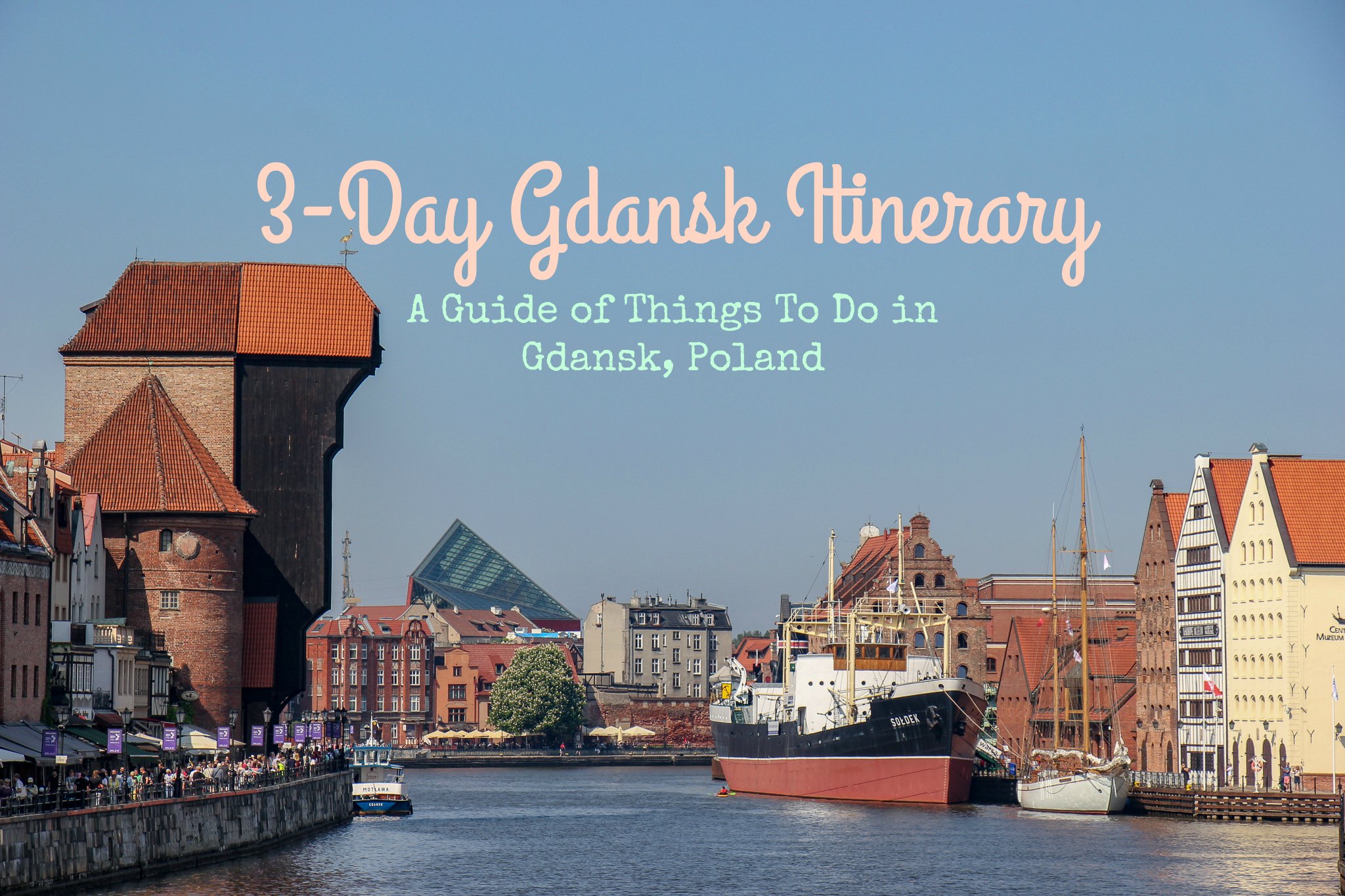
Things To Do in Gdansk, Poland: A Perfect 3-Day Gdansk Itinerary
Welcome to JetSetting Fools, here you will find our best travel tips for destinations worldwide. Some of the links on this site are Affiliate Links and if you use them to make a purchase, we may earn a commission. For more information, read our Disclosure Policy .
When we started planning our trip to Gdansk, Poland, we were surprised by the number of attractions and sights in the city. Stunning architecture, fascinating history, day trip destinations and savory cuisine all made their way onto our Gdansk To-Do list. In order to fit all of the top things to do in Gdansk into our trip timeline, we designed a perfect Gdansk Itinerary – and are happy to share it with fellow travelers!
Why Travel To Gdansk, Poland?
Many people ask us, “ Why visit Gdansk, Poland? ” Well, after visiting Warsaw and Krakow, we were in on the secret: Poland is incredible . Our time in Gdansk, Poland solidified the fact – the country is completely underrated as a travel destination!
Just like Warsaw and Krakow , what to see in Gdansk, Poland revolves around the city’s storied past, amazing architecture and fabulous museums. Unlike the two other Polish cities we have visited, there are unique Gdansk things to do; namely, visit the coastline on the Baltic Sea featuring miles of sandy beaches.
In our time exploring the city, we filled our days with the best things to do in Gdansk and created a 3-day Gdansk Itinerary to help other travelers experience the highlights as well.
About Our 3-Day Gdansk Itinerary

Our Gdansk 3 Day Itinerary includes the top things to see in Gdansk and the greater region. For each sight, we include a brief description and a link to more information.
At the end of the article, there are Gdansk tips for your trip, like how to get there, where to stay and options for the best Gdansk day trips. We also offer advice on how many days in Gdansk and what to pack for Gdansk trips.
Day-by-Day Itinerary Of Things To Do in Gdansk

Our list of the best things to do in Gdansk is organized in a day-by-day 3-day itinerary. This Gdansk travel blog post includes everything you need to plan your Gdansk vacation!
Save, Pin or Bookmark our Gdansk Itinerary so that you can plan your trip to Poland!
DAY 1 – Must-See Gdansk: Old Town and WWII Museum

On the first day of your 3 days in Gdansk, start by seeing Gdansk highlights in the Old Town then delve into the history of World War II at a state-of-the-art museum. End the first day of your Gdansk trip with a scenic view and a classic Polish meal.
Gdansk Walking Tour: The Royal Route

Kick off your trip with one of the Gdansk top things to do: Walk the Royal Route. Not only will it help get you acquainted with the city, but many of the tourist attractions in Gdansk are located along the route.
The Royal Route through the heart of Gdansk Old Town was once the path taken by kings. Today, the Royal Way is still the route for ceremonies and parades. We’ve outlined a Gdansk city tour that extends from Upland Gate to Green Gate – and we note the Gdansk tourist attractions that are found on along the way.
High Gate (Brama Wyzynna)

Start your walk at Upland High Gate, which was built in the 16th century as part of Gdansk’s fortifications. The Upland Gate now houses the Gdansk Tourist Information Office.
Prison Tower and Torture Chamber (Wieza Wiezienna)
Built in the 14th century, the Prison Tower and Torture Chamber were part of the original Gdansk city walls. When new walls were constructed in the 16th century, the building became the prison, court and torture chamber. Today, it houses the much more pleasant Amber Museum.
Golden Gate (Zlota Brama)
The 17th century Golden Gate leads directly onto Gdansk’s most popular street: Ulica Dluga. The gate features 8 figures representing Peace, Freedom, Wealth, Fame, Agreement, Justice, Piety and Prudency.
Long Street (Dluga)

The picturesque Long Street is the main thoroughfare through Gdansk Old Town. The pedestrian-only street, which had to be almost completely rebuilt after World War II, features colorful and ornately decorated facades.
Tall, slender buildings are found throughout the city, but the ones on Long Street are the most beautiful. Numerous cafes, bars, restaurants and ice cream shops line Long Street; strolling up and down Long Street with an ice cream cone in hand is one of the top Gdansk activities in the summertime.
Gdansk Town Hall (Rathaus)

On Long Street, at the opposite end from Golden Gate is the unmissable Gdansk Main Town Hall and its rising spire. The building dates to the 14th century and today houses the Gdansk History Museum. Visitors can climb to the top of the Town Hall Bell Tower for stunning views of the Old Town.
Long Market (Dlugi Targ)

Where Long Street ends, Long Market begins. The wider street dates to the 13th century and once was home to Gdansk’s most affluent citizens. Today, Long Market Gdansk is largely occupied by gossiping locals, gawking tourist and aspiring musicians.
Neptune Fountain (Fontanna Neptuna)

The historic Neptune Fountain dates to the early 17th century and stands proudly in front of the Artus Court. It’s an absolute must-see in Gdansk!
Artus Court (Dwor Artusa)

At Dlugi Targ 44 is the Artus Court (named after the legendary King Arthur). The building, which dates to the 14th century, was a place of meeting, socializing and entertainment for the noble and wealthy. Now, as part of the Gdansk History Museum, visitors can take a peek inside.
The Golden House
Just a few doors down from Artus Court is The Golden House at Dlugi Targ #41. Decorated with five statues – representing prudence, justice, strength, temperance and fortune (the one on the top of the building), the Golden House dates to the early 1600s and has been the residence of several mayors of Gdansk.
Green Gate (Brama Zielona)
The end of the Royal Route, the Green Gate marks the passage from Long Market to the Motlawa River. The gate was built in the 16th century as a royal residence, but no royalty ever lived there. Today, the National Museum resides in the Green Gate – activist and Polish President Lech Walesa used to have an office in the building, as well.
More Old Town Gdansk Sights
The Royal Route is the perfect place to begin sightseeing Gdansk, but there are other places to see in Gdansk Old Town. Continue your discovery using this list of places to visit in Gdansk, Poland.
St. Mary’s Basilica

Officially the Basilica of the Assumption of the Blessed Virgin Mary, the church is one of the top things to see in Gdansk, Poland.
Construction of the Catholic church began in the year 1343 and, today, it ranks as one of the largest brick churches in the world (it can accommodate 25,000 people!). The 15th century Gdansk Astronomical Clock stands inside the church. Rising as the tallest bell tower in Gdansk, the view from the top is truly remarkable!
Basilica of St. Nicholas

With a history that dates to the 12th century, the Basilica of St. Nicholas is one of the oldest churches in Gdansk. It is also one of the only churches not to sustain damage during WWII. Inside, beautiful baroque altars decorate the cavernous church.
The Crane (Zuraw)

As a symbol of the city, The Crane is one of the top Gdansk things to see. A port crane has existed on the same site as The Crane since as early as 1367. At a time, it ranked as the largest crane in the world. Suffering major damage during WWII, The Crane was reconstructed and became part of the Maritime Museum. Getting a look at The Crane is a must do in Gdansk.
Motlawa River Promenade (Dlugie Pobrzeze)

The promenade that follows the river at the edge of the Old Town, called Dlugie Pobrzeze, is one of the top Gdansk places to visit. Lined with restaurants and shops, the walkway provides views over the river and harbor. Several Gdansk boat tour operators dock along the promenade.
Mariacka Street
The pleasant Mariacka Street runs from St. Mary’s Basilica to St. Mary’s Gate, which leads to the river. The charming lane is lined with houses that have raised entrances and carved stonework. Many amber shops are located on Mariacka Street. If you are searching for where to go in Gdansk to buy amber products, this is your street!
Piwna Street

Running parallel to Long Street is Piwna Street. Once home to a local brewery, there are several bars and cafes located on the street that is home to some of the best Gdansk nightlife (more on Gdansk bars later in the article).
Gdansk Monuments

Throughout the Old Town there are several monuments and statues that decorate and commemorate events in Gdansk. While we wouldn’t recommend going out of your way to locate all the specific monuments, keep your eye out for these interesting monuments while exploring Gdansk.
- Four Quarters Fountain: The city of Gdansk was once divided into four quarters – Wide (Szeroki), High (Wysoki), Fish (Rybacki) and Ship (Kogi) – and the Four Quarters Fountain is located at the point where those districts came together (at the corner of Gwietego Ducha and Grobla I streets). Each quarter is represented by an impressive lion statue.
- Fahrenheit Monument: Daniel Fahrenheit, creator of the Fahrenheit temperature scale, was born in Gdansk in 1686. To honor him, a glass-encased thermometer sits on Dlugi Targ (opposite the Neptune Fountain).
Best Ice Cream Gdansk

Ice cream shops (called Lody) are found on every street in Gdansk – but not all ice creams are equal. We think there are two places that serve the best ice cream in Gdansk.
Paulo Gelateria uses recipes from the 2015 Polish Champion of Ice Cream to make unique flavored ice cream (try the creamy and delicious avocado ice cream). Another must try – and a place we actually prefer for both the ice cream and the cones – is Slony Karmel, where they make ice cream from natural ingredients.
Lunch: Milk Bar Gdansk (Bar Mleczny)

After spending the morning discovering the best things to see in Gdansk Old Town, get your first taste of true Polish cuisine by eating lunch at a classic Milk Bar.
Known to be inexpensive, the generous portions of ‘home cooked’ Polish dishes are served to the masses at cafeteria-style Milk Bars. Popular during the communist era, most Milk Bars have a daily menu (usually written on a chalkboard, no translations) and little decor. The two best Milk Bars in Gdansk are Bar Turystyczny and Bar Mleczny Neptun.
Bar Turystyczny is located in the northwest section of the Old Town and has an authentic feel to it. We waited in a line that stretched out the door for platters of schawoby (fried pork chop) and placek po cygansku (an omelet filled with tender beef and covered in sauce).
Located in the heart of the Old Town in the middle of Long Street, Bar Mleczny Neptun attracts a few more tourists and charges a bit more for their meals, but the establishment still retains the classic Milk Bar appeal. In fact, we think it is one of the best restaurants in Gdansk Old Town because there is outdoor seating right on Long Street, which is fantastic for people watching.
Granary Island
After lunch, continue your exploration of Gdansk must-see places and head to Granary Island. Located on the opposite side of the Motlawa River east of Green Gate, Granary Island was once the commercial center of Gdansk. An entire complex of granaries were built on the island to store goods brought in from afar by ships.
By the 17th century, Gdansk had more than 300 granaries – and boasted the largest harbor on the Baltic Sea. However, only three buildings survived WWII and the island was left in shambles for decades, only recently getting a facelift and now attracting tourists and locals alike.
Olowianka Island and Soldek

Next up on our list of Gdansk attractions is Olowianka Island. Located just north of Granary Island, Olowianka Island is home to the Central Maritime Museum, the Royal Granary and the Philharmonic building.
Docked in front of the National Maritime Museum is the gargantuan Soldek, the first steamship built in the Lenin Shipyards after the war. Converted into a museum, visitors a welcome to explore the ship’s interior.
Pro Tip: Let a Gdansk Tourist Guide Lead the Way
Above we outlined what to do in Gdansk for sightseeing in the city center. However, visitors can get a personal introduction on a tour with a local Gdansk tour guide.
Private Walking Tour
Tour the Royal Route on a private tour with a knowledgeable guide – Book it here!
Sightsee Gdansk on two wheels on a popular city biking tour – Find out more!
Tour Gdansk at your own pace – but with an Audio Guide Tour that delivers more Gdansk facts and information – Get it here!
Free Walking Tour Gdansk
Visitors can join a Free Gdansk Walking Tour – just keep in mind that these are tip-based tours in Gdansk.
Museum of the Second World War

Visiting the Museum of the Second World War is one of the top Gdansk, Poland things to do. The state-of-the-art museum details the events of World War II, which began on September 1, 1939 when Germany invaded Poland at Westerplatte (less than 6 miles from Gdansk Old Town).
Both interactive displays and personal items are featured in the museum that tells the story of the horrific war. The exhibits are educational and gripping.
We highly recommend renting an audio guide during your visit to the museum – as the information presented can be slightly overwhelming. We spent four hours at the museum (and could have stayed longer) and think it is one of the best things to do in Gdansk.
Information on opening hours and tickets can be found on the Museum of the Second World War official website .
Polish Post Office and Memorial
Continue learning about the impact of the war on Gdansk with a trip to the Post Office. Although some people may think this is one of the unusual things to do in Gdansk, WWII buffs will appreciate its place in history.
At the same time Westerplatte was being attacked, German troops were also targeting the Polish Post Office near the Gdansk Old Town. The workers held off the Nazis for 17 hours before surrendering. In front of the post office there is a large memorial – and behind the post office is a moving display of the postal workers who were captured and shot to death on site.
Gradowa Hill

After a full day of history, climb up to Gradowa Hill to have some time to reflect…and to take in the great views over Gdansk.
West of the Old Town, across the railroad tracks, Gradowa Hill is part of an old fort complex. Buildings half-covered in earth display exhibits that are part of the Hewelianum Center Museum and at the north end of the park is the 50-foot-tall Millennium Cross.
Following one of the trails to the top of Gradowa provides panoramic views of Gdansk and the shipyards – and is a fabulous place to watch the sun set on the Old Town.
Dinner: Pierogarnia Mandu Centrum

For dinner on your first of 3 days in Gdansk, eat at one of the best pierogi restaurants in Gdasnk, Pierogarnia Mandu . We liked the pierogis so much, we ate here twice! The large variety of pasta dumplings (which are created by hand) can be served boiled or baked. We tried – and loved – both.
Pro Tip : Try the craft beer (bottled) made special for Mandu by Brewery Bytow.
Polish Craft Beer in Gdansk

With your belly full of delicious pierogis, it is time to sample some locally produced craft beer – it’s one of the best things to do in Gdansk at night.
Among the many reasons we have fallen head-over-heels for Poland is their superb production of craft beer. Gdansk has a hefty number of multitaps – aka craft beer bars – that boast excellent Polish craft beer on draft.
Bar Guide Gdansk

Use our Gdansk pub guide to help navigate your way to the best craft beer – and the best bars in Gdansk!
Café Lamus, Lawendowa 8 and Pulapka: These three bars, located at the east end of the Market Hall, are what we called “Craft Beer Corner.” With sidewalk seating in front of each bar, it was clear this is a top-spot for craft beer lovers to enjoy a pint in the late afternoon or well into the evening. The atmosphere is similar in each of the small bars, but we found the staff to be especially friendly and helpful with recommendations at Café Lamus .
Labeerynt Multitap Bar Gdansk Old Town: The subterranean Labeerynt Mulitap sits inconspicuously beneath Polskie Kino Pub on Szeroka Street in the Gdansk Old Town. While the dimly lit space would be inviting in too hot or too cold weather, we enjoyed our beers outdoors at one of the patio tables.
Local Gdansk Breweries : There are a few local breweries in Gdansk, like Brovarnia and Browar PG4 , which brew beer on-site, but (from what we could tell) stick to the traditional beers of the region – light, dark and wheat – rather than the IPAs and other hop-forward beers we found at the multitaps.
Old Town Gdansk Map: Day 1 of Things To Do in Gdansk
Use this link to our Gdansk Old Town Map to find locations of our recommend sights!
DAY 2 – Day Trip to Sopot from Gdansk

On Day 2 of your 3-day Gdansk itinerary, travel north to the resort town of Sopot on a day trip from Gdansk for some seaside fun!
Visit Sopot, Poland
The quaint seaside town of Sopot is one of Poland’s top tourist destinations. Sopot, along with Gdansk and Gdynia, are part of the Tri-City Region. With only a few ‘sights’ the real reason to visit Sopot is for the sandy beaches and laid-back atmosphere. That said, in addition to the beach, we are highlighting what to see in Sopot, Poland in one day.
Getting to Sopot
How to get to Sopot from Gdansk is easy! Visitors can take a Gdansk to Sopot Train from the Gdansk Main Train Station or use the Gdansk-Sopot Ferry.
Gdansk-Sopot Train
Hop on an SKM train bound for Sopot and arrive in the city in 20 minutes flat. Trains run frequently, but check the Gdansk-Sopot train timetable at the station. Tickets for the train from Gdansk to Sopot (one-way) cost about 5.50zl ($1.25 USD).
Boat Trip Gdansk-Sopot
Alternatively, take the Gdasnk-Sopot boat. Find the Gdansk to Sopot ferry schedule here . They only run a few of boats a day and tickets cost 70zl.
What To Do in Sopot, Poland

Once you arrive in Sopot, set off on to explore the city, then relax on the beach. Our list of Sopot attractions are listed in order of a 1-Day Sopot Itinerary to help you best plan your time.
Monciak Street

There is no Sopot Old Town, but the main pedestrian street in Sopot is Ulica Bohaterow Monte Cassino – although the locals refer to it by its former name, Monciak. Strolling the length of Monciak is a must on your Sopot to-do list. Lined with restaurants, cafes and pubs, the street leads directly to Sopot’s famous pier.
Crooked House (Krzywy Domek)

Built in 2004, the Crooked House on Monciak can’t be missed. The design was inspired by a fairytale and the building is part of a shopping center – and is an interesting Sopot sightseeing attraction.
Sopot Pier (Molo)
Hands down, one of the best things to do in Sopot, Poland is walk on the pier. The Sopot Pier, which dates to 1827, ranks as the longest wooden pier in Europe – and extends a quarter of a mile into the Bay of Gdansk on the Baltic Sea. At the end of the pier there is a restaurant and marina, as well as the departure points for entertaining bay cruises. During the peak summer season, a ticket is required to enter the pier.
Lunch: Fishing Harbor

Located three-quarters of a mile south of the pier on the Karlikowo Shore is the Sopot Fishing Harbor. Fishermen sail out each day in traditional Kashubian boats and return mid-day, ‘beaching’ their boats right in the sand…hopefully with a fresh catch!
Hungry visitors can order platters of fresh or smoked fish for lunch at Bar Przystań. Alternatively, walk north from the Sopot Pier to Bulaj , a popular Slow Food restaurant right on the beach.
Sopot Beaches

Topping the list of Things To Do Sopot is visiting the beaches. To the north and south of Sopot pier are miles of wide, sandy beaches. Kick off your shoes and walk with the sand between your toes, take a dip or catch some rays. The sandy beach in Sopot is a place to relax and enjoy!
Dinner: Burgers or Pizza
When it is time for dinner, take a break from traditional Polish cuisine and join the local youth for a burger or pizza.
SurfBurger is a small Polish chain serving real beef burgers made of natural and fresh ingredients – and they are seriously good!
For pizza, try Prosto (Pizza i Piwo) , where they crank out delicious pizza pies in an easy-going atmosphere.
However, for an inexpensive ‘pizza’ (or after bar snack), get a zapiekanki (a half baguette with ham, mushrooms, cheese and ketchup). Our favorite zapiekanki stand is at the corner of Monciak and Jana Jerzego Haffnera.
Top Tip : Not in the mood for burgers or pizza? There are plenty of restaurants in Sopot on Monciak. Read reviews on the top-rated restaurants on TripAdvisor .
Polish Craft Beer in Sopot
Having a cold drink at the end of the day is naturally one of the top Sopot things to do. For us, that meant seeking out Polish craft beer.
There are a few places along Monciak that offer craft beer, but beer aficionados will want to make the effort to find Konsulat Dobrego Piwa , a craft beer bar just outside the Sopot town center. The small, cozy bar features eight taps of craft beer and a fun beer garden.
Sopot Map: Day 2 – Gdansk Day Trip to Sopot Activities
Use this link to our Sopot, Poland Map to locate our recommended activities for Day 2.
Day 3 – Westerplatte and/or Oliwa and Solidarity Museum

On Day 3 of your 3 Days in Gdansk, shop, take a short day trip and then spend the afternoon at the Solidarity Museum.
Gdansk Market Hall

Start your shopping at the Market Hall – one of the top Gdansk things to see and do. Built in the late 1800s, there are three levels inside the Market Hall in Gdansk – along with unearthed discovery of a Romanesque church.
The Green Market (fresh produce) stalls overflow onto the plaza to the south of the Market Hall (where you will also find an underground archeological museum).
The market is a great place to sample local food – and to purchase items for an afternoon picnic lunch. The kabanos (Polish smoked sausages) and fresh fruit are popular picks!
Pro Tip : Paczki, Polish donuts, are a must-eat when in Gdansk! Eat a sugary breakfast of Gdansk donuts from Stara Paczkarnia. Located on the north side of the market, the fresh donuts at the corner kiosk and cost less than $1 USD. We recommend the chocolate cream-filled paczki (czekolada).
Half-Day Trips from Gdansk: Westerplatte or Oliwa
The rest of your morning will be spent on what to see around Gdansk on a quick trip. Choose between one of these trips from Gdansk: Westerplatte or Oliwa.
Why Visit Westerplatte from Gdansk?

If you are visiting Gdansk to learn more about the history of WWII, then Westerplatte is where you should spend your morning. The Westerplatte peninsula is known the world over as the site where World War II officially began on September 1, 1939.
When the Polish military fort on Westerplatte came under attack by Nazis, a battle ensued that lasted seven days. Although they surrendered, the 7-day resistance of the Polish soldiers, who were severely outnumbered and under-armed, gave hope and inspiration to the people of Poland.
Today, the Polish Coast Guard occupies part of the peninsula, but visitors can learn more about the events that transpired on Westerplatte in a small museum (Guardhouse Number 1), as well as on informational plaques located along the well-marked route.
Getting to Westerplatte
Without a car, there are three options to get from Gdansk to Westerplatte: boat, bus, bike.
- Gdansk Boat Trip to Westerplatte: Cruise from Gdansk on a ferry or tourist boat to Westerplatte. Check timetables at the docks, as they vary by season. Note: The Gdansk to Westerplatte boat was our first choice of transport, but a lost-in-translation of the ferry boat schedule had us using the bus instead. If you intend on taking the Gdansk-Westerplatte boat, we recommend confirming the schedule in advance.
- Bus from Gdansk to Westerplatte: Bus 106 transports passengers from Gdansk to Westerplatte in about 30 minutes.
- Bike from Gdansk to Westerplatte: There are a few bike rental shops in Gdansk. Rent a bike and pedal your way to Westerplatte following this route.
- Private Tour to Westerplatte: Visitors who want door-to-door transport and the expertise of a local guide should book a tour from Gdansk to Westerplatte. Find out what’s included.
Sights at Westerplatte
If you make the day trip from Gdansk to Westerplatte, there are a handful of must-see sights you won’t want to miss.
Monument to the Defenders of Westerplatte: The 82-foot-tall granite Monument to the Defenders of Westerplatte stands on a 72-foot hill, making it visible from afar and nearly impossible to miss.
Nowy Port Lighthouse: Dating to the late 1800s, the lighthouse (which was modeled after a lighthouse on Lake Erie in Cleveland, Ohio ) was fitted with a Time Ball to aid in sailors’ navigation. However, what puts the lighthouse in the history books is the fact that at 4:45am on September 1, 1939, Nazi Germans (who had overtaken the lighthouse the previous night) fired the first shots at Westerplatte from the Nowy Port Lighthouse, thus beginning World War II.
Why Visit Oliwa?

Oliwa, a suburb that lies between Gdansk and Sopot, has its own fascinating history of a monastery, battles and peace treaties. Although rich in historic facts, the reason we visited Oliwa was simply to enjoy a hike in nature.
Getting to Oliwa

How to get to Oliwa from Gdansk is just as easy as getting to Sopot. Simply hop on a train from the Gdansk Main Station. The short train ride will get you to Oliwa in about 10 minutes.
Sights at Oliwa
There are not an abundance of Oliwa attractions – but just enough to fill a few hours of sightseeing and relaxing in nature.

Oliwa Park features tree-canopied walkways, pristinely manicured hedges, streaming water, hidden gardens and colorful flowerbeds. A few museums and the Oliwa Cathedral are also part of the Oliwa Park complex.
Oliwa Cathedral

Consecrated in 1594, the Oliwa Cathedral is striking both inside and out. Upon entering, visitors can see the entire length of the church and the decorative high altar, which is made to look like heaven with angels hovering above it.
However, it is for the organ which sits over the entrance, that many people visit Oliwa Cathedral. Built in the 1700s (over a period of 30 years), the organ has more than 7,800 pipes. Short 20-minute concerts are played several times daily.
Pacholek Hill

Rising to the west of Oliwa Park is Pacholek Hill. The forested area has several walking/biking trails, a few of which lead to a hill-top viewing platform that provides 360-degree views over Oliwa and to the sea.
Lunch: Picnic
Whether you decided to go to Westerplatte or Oliwa, find a spot with a view to enjoy the picnic you assembled at the Market Hall in the morning. Alternatively: there is a fast-food kiosk at Westerplatte and a restaurant in Oliwa Park.
After your leisurely lunch, make your way back to Gdansk to spend the afternoon at the Solidarity Museum.
Westerplatte or Oliwa…or Both?
We recommend the leisurely traveler choose between visiting Westerplatte or Oliwa. However, ambitious visitors could squeeze both into one day.
To do so, take the first 106 bus to Westerplatte (or the first ferry, both should depart about 09:30am, but check). Spend an hour at Westerplatte and be on the 11:20am bus to the Gdansk Main Station (Gdańsk Główny). From there, catch the next train to Oliwa and spend 2-3 hours in Oliwa.
This trip plan should allow for enough time when you return to Gdansk to visit the Solidarity Museum in the afternoon (hours vary by season, but in the summer, the museum stays open until 7pm on weekdays and 8pm on weekends).
Solidarity Museum at the European Solidarity Centre

The Solidarity Museum is one of the Gdansk top attractions – and, in our opinion, a Gdansk must see sight. The permanent exhibition at the European Solidarity Center details what led to the formation of Solidarity and its impact on Poland.
Solidarity – or Solidarnosc – is a Polish trade union that formed in August 1980 in opposition to the working conditions at the Lenin Shipyards. The name, Solidarity became a social movement and many people attribute the movement to be the beginning of the fall of communism in 1989.
Sitting in front of the museum is the Monument to the Fallen Shipyard Workers of 1970. The three soaring steel crosses stand in memory of the workers who lost their lives in the riots.
Dinner: Pyra Bar

Load up on more Polish carbs with a final meal at Pyra Bar, a restaurant featuring incredible potato dishes. With every dish dedicated to the tuberous, starchy vegetable (in the form of casserole, potato pancake or baked potato), it might sound bland – but we can assure you, it’s not! Glorious, caloric amounts of cheese and meat are combined with potato in perfect platters of comfort food!
Piwna Street Bars
After three days of sightseeing in Gdansk, end your time at the popular Old Town bars on Piwna Street, which is a hot spot for Gdansk nightlife. You could even create your own pub tour in Gdansk, using our recommendations below.
- Jozef K – a unique, retro-themed bar with a nice variety of beer.
- Pub Red Light – quirky and cozy bar with unique cocktails and craft beer.
- Flisak 76 – a cellar bar serving up hand-crafted cocktails.
- Wiśniewsk – if you’ve been to Piana Vyshnia in Lviv , Budapest or Brasov …this cherry liquor is likely familiar to you already!
Gdansk Tourist Map: Day 3 Gdansk Sightseeing
Use this link to our Gdansk City Map to find the sights recommended for Day 3.
Gdansk: What To Do – More Tips for your Trip
Above we outlined what to visit in Gdansk in 3 days. However, if you are still looking for ideas of things to do in Gdansk, we have a few more tips!
Gdansk Cruise
One of the top things to do in Gdansk is to set sail on a Gdansk river cruise for an afternoon of fun. There are a few boats to choose from, but one of the top fun things to do in Gdansk is to spend an afternoon on the Pirate Ship Cruise.
More Day Trips from Gdansk
Want to know what to do around Gdansk? We’ve already listed our favorite day trips from Gdansk, but there are more things to do near Gdansk.
Visit Gdynia, Poland
Gdynia is the northern outpost of the Tri-City Region. Originating as a modest fishing village, Gdynia is now a modern seaport town. Search for things to do in Gdynia on TripAdvisor . Another one of the fun things to do in Tricity Poland is to join a tour of the Region and see the highlights of Gdasnk, Sopot and Gdynia in one day!
Malbork Castle
Just a train ride from Gdansk is the town of Malbork and the famous Malbork Castle. Built in the 13th century by Teutonic Knights, the Medieval castle is the largest brick castle in the world. Private tours to Malbork Castle can also be arranged.

Gdansk: How Many Days
Determining how many days to spend in Gdansk will depend on your interests, budget and overall trip plans. Personally, we found the city to be fascinating and beautiful – and easily filled our Gdansk vacation with sightseeing, feasting and exploring. We think 3 days in Gdansk is just enough time to get a feel for the city.
Above, we detailed what to do in Gdansk, Poland in three days. But what if you have more or less time? No worries! We have outlines for where to go in Gdansk Poland in 1 day, what to do on a weekend in Gdansk and how to visit Gdansk, Poland in 5 days.
What to See in Gdansk in One Day
Trying to see Gdasnk in one day is tough! In fact, some travelers may wonder, “Is Gdansk worth visiting for just one day?” – and we absolutely think it is!
While 3 days in Gdansk is best, if one day in Gdansk is all you have, then we recommend making the most of it! To create an ideal 1-Day Gdansk Itinerary, we think it is best to simply follow Day 1 of our Gdansk, Poland things to do.
2 Days in Gdansk: Things To See and Do
While two days in Gdansk is still not enough time to see all of the highlights, it allows plenty of time to explore Gdansk. To plan a Gdansk weekend trip, we recommend following Day 1 of our Things to do Gdansk outline, then combining the best of Gdansk attractions from Days 2 and 3 into a single day.
For example, we would take a half day trip to Sopot, Westerplatte or Oliwa (depending on interests) and then spend the afternoon of Day 2 at the Solidarity Museum.
4 Days in Gdansk: What To Do
We’ve already outlined an ideal trip for three days in Gdansk. So, on the last day, we recommend taking a day trip to Malbork. However, visitors could also opt to split their time between Gdansk and Sopot. Rearrange your 4 day Gdansk Itinerary so that you visit Gdansk in 2 days and then spend 2 full days in Sopot.
5-Day Gdansk Itinerary
With 5 days in Gdansk, you can partake in many of the top activities in Gdansk. Create a Gdansk 5-Day Itinerary by including all of the best places to visit in Gdansk!
We recommend using our 3-Day Itinerary for Gdansk as written, then on Day 4 take a day trip to Malbork and on Day 5 go to either Westerplatte or Oliwa (which ever you skipped on Day 3) and end your visit with an afternoon Pirate Ship cruise.
Alternatively, you could spend two days in Sopot with an overnight stay…and three days in Gdansk.
One-Week Poland Itinerary: Visit Gdansk, Krakow and Warsaw
Create an epic itinerary for one week in Poland by visiting Gdansk, Krakow and Warsaw! In addition to our detailed Gdansk travel guide that outlines the places to visit in Gdansk, we have complete Poland itineraries for 3 Days in Krakow and 3 Days in Warsaw.
Gdansk on a Budget
In general terms, Gdansk is an affordable city to visit. Many museums offer free days to visit (check online prior to your trip). Additionally, the Gdansk Tourist Card covers entry into many sights.
Gdansk Tourist Card
The Gdansk Tourist Office offers three money-saving cards for attractions in Gdansk: Family, Sightseeing and Active. The cards offer entry into some of the best things to do in Gdansk, Poland! Go to the Gdansk Tourist Card website for more information.
Self Guided Gdansk Walking Tour
When you visit Gdansk city center, use our outline of what to see in Gdansk as a self-guided walking tour – we think it is one of the best free things to do in Gdansk. We highlight all of the top attractions for you in Day 1 of our Gdansk, Poland: What To Do Itinerary!
Budget Gdansk Restaurants
The cost of eating out in Gdansk can be incredibly inexpensive – and we’ve included affordable dining recommendations in our day-by-day Gdansk guide.
Best Restaurants in Gdansk, Poland

Eating traditional Polish fare should definitely be on your Gdansk to do list – and we have highlighted some of the best places to get a taste of the local cuisine.
Visitors who want a local guide to lead the way to the best tastes should join a Gdansk Food Tour. Participants get to taste local dishes at multiple restaurants. Reserve your space!
That said, in addition to milk bars and pierogi feasts, there are Gdansk fine dining establishments; see Gdansk restaurant reviews on TripAdvsior for top-rated places to eat.
Getting To Gdansk, Poland
Gdansk can be reached by plane, train, bus, ferry or car. How to get to Gdansk will depend on where you are coming from and your budget.
For our Gdansk visit, we flew into the Gdansk Airport from Basel via Frankfurt and departed to Helsinki , and then on to Singapore (we are JetSetting Fools, after all!).
The official name of the Gdansk Airport (GDN) is the Gdansk Lech Walesa Airport and it is located 7.5 miles from Gdansk.
Start your search for Gdansk flights and the best deals on airline tickets on Skyscanner .
Gdansk Airport to City
There are a few ways to get from Gdansk Airport to Gdansk: Taxi, uber , private transfer , train or bus. We used the Gdansk airport train, which was quite convenient. The bus from Gdansk airport to Old Town is the cheapest way to travel to Gdansk from the airport.
For information on using public transportation (including best routes and timetables), visit the Gdansk Tourist Office in the Gdansk Airport.
Gdansk Travel to nearby Destinations
Gdansk Poland is well-connected to other nearby destinations. That said, how to get between the cities will depend on your budget and the overall time and route for your trip.
Gdansk to Warsaw
There are inexpensive direct flights between Warsaw and Gdansk, which we think is the best way to get between the two cities. However, there are also trains from Gdansk to Warsaw and as well as buses.
Gdansk to Krakow
The best way to travel from Krakow to Gdansk (and vice versa) is via plane. There is a Krakow-Gdansk train, but – on average – the train from Gdansk to Krakow takes about 6 hours (which can really cut into your Gdansk vacation). Due to the long travel time, we would not recommend the Gdansk to Krakow bus.
Gdansk-Stockholm Ferry
Visitors wishing to travel from Gdansk to Stockholm will want to check overnight ferry schedules for Gdansk-Nynashamn (and then organize travel to Stockholm from Nynashamn).
Where To Stay in Gdansk, Poland
The best area to stay in Gdansk is in or near the Old Town – especially if you are planning a short trip to Gdansk.
Gdansk Holiday Apartments
During our visit to Gdansk, we stayed slightly outside of Old Town Gdansk, Poland in a great Airbnb Apartment . For us, it was the best place to stay in Gdansk because it had more space than a hotel room and a full kitchen where we could prepare simple meals.
Gdansk Hotels
In addition to holiday apartments, there are also many hotels in Gdansk or close to the city center. We have rounded up a list of some of the best places to stay in Gdansk Old Town (based on customer reviews).
PURO Gdansk Stare Miasto
Located in the heart of the city, PURO is the best hotel in Gdansk for a stylish stay. The hip hotel gets rave reviews for the chic design and comfortable rooms. Check rates and rooms for your stay!
Marina Club Hotel
A modern Gdansk hotel in the middle of the Old Town, Marina Club features clean, comfortable rooms (many with stellar city views) and rooms with kitchenettes, too. Check rates for your stay!
Stay Inn Hotel Gdansk
Stay Inn has an excellent location in the center of Gdansk Old Town. The hotel gets great reviews for the excellent staff and hot breakfast. Reserve your room!
Hotel Gdansk Boutique
An elegant, modern hotel in a historic building in the Old Town, Hotel Gdansk Boutique gets rave reviews for the exceptional breakfast and luxurious features. Check availability!
Start your search for the perfect hotel for your city sightseeing Gdansk trip on Booking.com !
Where to Stay in Sopot
We highly recommend staying in Sopot if it fits into your Gdansk itinerary. We spent 2 nights in Sopot at the charming Villa Sedan Hotel , which was ideally located near the main pedestrian street and pier. The affordable room was clean and comfortable and the staff was super!
That said, the poshest place in town is the beachfront Sofitel Grand Hotel . Check Booking.com for availability at the Sofitel and other hotels in Sopot.
Visit Gdansk, Poland: What To Pack
Our final packing hacks and travel tips for your Gdansk city guide!
Walking Shoes
Gdansk is a walkable city…but only if you have the right shoes! Don’t forget to pack a pair of lightweight and comfortable walking shoes for your trip – and keep in mind that we cover some ground in our Gdansk itinerary.
I always pack comfortable shoes – these are my current favorites ! Kris prefers wearing these trail shoes by Merrell for all types of walks. Read more of our tips for the Best Traveling Shoes .
Travel Camera
We think Gdansk is an incredibly photogenic destination – and if you are anything like us, you will be snapping tons of photos during your trip. Rather than relying on your mobile phone to capture the sights, upgrade to an actual travel camera for higher quality photos. We travel with a Canon Rebel and use an everyday 18-135mm lens .
Weather Appropriate Wear
Gdansk weather is quite variable – with four distinct seasons. Be sure to bring sunscreen and sunglasses in the summertime – a wide-brimmed hat is a good idea, too. Because summers are also the rainiest season, pack a travel umbrella and lightweight raincoat , too.
Day Pack for Travel
Whether you travel with a backpack or suitcase , with long days of sightseeing in Gdansk, you will want a travel day pack as well. It’s an ideal way to carry your camera and other essential travel items in!
Poland Travel Insurance
If you haven’t already obtained travel insurance for your trip to Poland, consider traveling protected with World Nomads .
Organizing your Gdansk Itinerary 3 Days
We have shared our top tips for the top things to do in Gdansk, Poland, the best places to eat and even advice on how long to spend in Gdansk. Now it’s time to start planning the particulars of your trip!
As you begin to make your plans for a European Vacation , use a Travel Planner to stay organized. Our Printable Travel Planner is perfect for organizing your trip and keeping track of the best places in Gdansk to see!

Start planning your trip to Poland ! Search for the lowest airfares , the best accommodations and fun things to do …then start packing ! Want more travel planning tips? Head over to our Travel Planning page for more information and tips on traveling – and for country-specific information, take a look at our Travel Guides page !
We want to know: What do you think of our list of things to do in Gdansk, Poland? What would you add to our Gdansk itinerary? Give us your best tips and advice in the comments below!

Pin it! See all of our travel pins on our JetSetting Fools Pinterest Board .

Share This Story!
- Click to share on Pinterest (Opens in new window)
- Click to share on Facebook (Opens in new window)
- Click to share on Twitter (Opens in new window)
- Click to share on LinkedIn (Opens in new window)
National Geographic content straight to your inbox—sign up for our popular newsletters here

A guide to Gdansk, Poland's regenerated maritime city
The Polish city has transformed its former port districts, with trendy craft breweries and hotels in former warehouses.
The gateway to the beaches of the Polish Riviera and once a major seaport for northern Europe’s Hanseatic League merchants, Gdańsk is a city framed by water and defined by proud maritime traditions. Famed as the birthplace of the European Solidarity labour movement in the late 20th century, its former worker neighbourhoods, islands and Baltic port districts have undergone a transformation in recent years.
To understand the city, you need to explore its past. Start in the central Śródmieście district, which incorporates parts of the Gdańsk waterfront and its Old Town. The area’s pedestrianised Royal Way is a legacy of the period before the 18th century when Poland had a monarchy and Gdańsk was one of the country’s three royal cities. Stroll past its mansions and former merchant houses, many built in the 16th and 17th centuries during Gdańsk’s Golden Age. This thoroughfare is also home to many major museums, including the Amber Museum, which explores why Gdańsk is considered the world capital of amber. In summer, for a small fee, climb the tower in the nearby Historical Museum of Gdańsk for the best view of the city.
At the end of the Royal Way lies the lively Motlawa River Embankment, lined with cafes, restaurants and the brick-and-timber Gdańsk Crane — a medieval port relic and symbol of the city’s trading heritage. Nearing the end of a two-year renovation, it’s set to reopen in spring with a new permanent exhibition inside. Across the river lies the National Maritime Museum . Tickets grant entry to the museum, the Crane and several Bay of Gdańsk outposts, including the Shipwreck Conservation Centre.
The importance of the Gdańsk Shipyard and its workers is explored at the European Solidarity Centre , a 20-minute walk north of the Embankment. It’s well worth the trip to learn how they were integral to Solidarity, a trade union founded in Gdańsk in 1980 that gave rise to a wider, anti-communist movement that helped end Soviet rule in Poland in 1989.
Dedicate at least one afternoon to exploring some of the city’s many former port and warehouse districts, which have been transformed into trendy neighbourhoods over the past 10 years. The island of Wyspa Spichrzów — connected to the rest of the city centre by several bridges — is a good starting point. Here, centuries-old grain warehouses eviscerated by Second World War bombs still sit alongside restored ones now housing hotels and boutiques. You could drop by Bar Mleczny Stągiewna for an old-school Polish canteen experience, complete with dishes that hark back to the cuisine of the communist era, including cheap borscht and cabbage rolls.
Just north of the city, the former Gdańsk Shipyard has also been impressively transformed, with cafes, bars and shops housed in repurposed shipping containers sitting in the shadow of defunct shipyard cranes. Seek out the once-connected Royal Rifle Factory and Backyard, whose names reveal their former functions. Today, both serve as spaces for exhibitions, markets and pop-up dining.
Thanks to the region’s Germanic heritage, Gdańsk has a strong beer-brewing culture and is full of craft-beer venues. One of the best spots is Brovarnia , the first brewpub in northern Poland. Housed inside a restored former granary building, it specialises in Czech-style beers paired with hearty Czech-inspired food. Another local favourite is Labeerynt, a cosy basement bar with a rotating selection of beers. The buzzy student neighbourhood of Wrzeszcz, a short tram ride north west of the city centre, is home to Browar Spółdzielczy , a pub managed as a social cooperative that runs projects for locals with disabilities. It has 20 of its own beers on tap, from IPAs to sours.
For Hungry Minds
Related topics.
- MODERN HISTORY
- LIVING HISTORY
- FOOD CULTURE
- FOOD TOURISM
You May Also Like

A guide to Ghent, Belgium's rebellious, unsung city

Photo story: is this city the chocolate capital of Europe?

A guide to Dijon, Burgundy's wine-soaked medieval capital

A taste of Mexico City — tacos, tamales and more in the Latin American capital

The inside guide to Wroclaw, Poland's medieval marvel
- Environment
History & Culture
- History & Culture
- History Magazine
- Mind, Body, Wonder
- Coronavirus Coverage
- Paid Content
- Terms of Use
- Privacy Policy
- Your US State Privacy Rights
- Children's Online Privacy Policy
- Interest-Based Ads
- About Nielsen Measurement
- Do Not Sell or Share My Personal Information
- Nat Geo Home
- Attend a Live Event
- Book a Trip
- Inspire Your Kids
- Shop Nat Geo
- Visit the D.C. Museum
- Learn About Our Impact
- Support Our Mission
- Advertise With Us
- Customer Service
- Renew Subscription
- Manage Your Subscription
- Work at Nat Geo
- Sign Up for Our Newsletters
- Contribute to Protect the Planet
Copyright © 1996-2015 National Geographic Society Copyright © 2015-2024 National Geographic Partners, LLC. All rights reserved
Book your individual trip , stress-free with local travel experts
- roughguides.com
- northern-poland
- Travel guide
- Local Experts
- Travel Advice
- Accommodation
Plan your tailor-made trip with a local expert
Book securely with money-back guarantee
Travel stress-free with local assistance and 24/7 support
We chose a trip to Poland due to the fact that my family comes from Poland. It was the best choice. Our guide showed us the house where my family once live...
Both the starting point of World War II and the setting of the famous strikes against Communist control, Gdańsk has played more than a fleeting role on the world stage. Traces of its past are visible in the steel skeletons of shipyard cranes and the Hanseatic architecture of the old town. After all the social and political upheavals of the last century, the city is now busy reinventing itself as a tourist hub.
The Main Town (Główne Miasto)
The waterfront and shipyards.
With its medieval brick churches and narrow eighteenth-century merchants’ houses, Gdańsk certainly looks ancient. But its appearance is deceptive: by 1945, the core of the city lay in ruins, and the present buildings are almost complete reconstructions.
Tailor-made travel itineraries for Poland, created by local experts

11 days / from 1598 USD
Explore the Liberation Route in Poland
Poland was the first country that Hitler invaded and with it starting World War II. Discover the Polish sites of World War II with this itinerary, from the Northern city of Gdansk where the first battle took place to the concentration camps of Auschwitz close to Krakow.
Huge stone gateways guard both entrances to ul. Długa, the main thoroughfare. Start from the sixteenth-century gate at the top, Brama Wyżynna , and carry on east through the nearby Brama Zlota. You’ll soon come across the imposing Town Hall, which houses a Historical Museum (June–Sept Mon 10am–3pm, Tues–Sat 10am–6pm, Sun 11am–6pm; Oct–May Tues 10am–3pm, Wed–Sat 10am–4pm, Sun 11am–4pm; 10zł, free Mon June–Sept & Tues Oct–May) with shocking photos of the city’s wartime destruction. Further down, the street opens onto the wide expanse of ul. Długi Targ, where the ornate facade of Arthur’s Court (same hours as Historical Museum; 10zł) stands out among the fine mansions. The surrounding streets are also worth exploring, especially ul. Mariacka, brimming with amber traders, at the end of which stands St Mary’s Basilica (Mon–Sat 7.30am–6pm, Sun noon–6pm), the largest church in Poland.
At the end of ul. Długi Targ the archways of Brama Zielona open directly onto the waterfront. Halfway down is the fifteenth-century Gdańsk Crane , the biggest in medieval Europe, part of the Central Maritime Museum (July & Aug daily 10am–6pm; Jan–June & Sept–Nov Tues–Sun 10am–4pm; Dec Tues–Sun 10am–3pm; 8zł; w www.cmm.pl ) spread over both banks of the river. Highlights include an exhibition of primitive boats; for an extra 8zł you can also tour the cargo ship SS Soldek docked outside. Further north loom the cranes of the famous Gdańsk shipyards , crucible of the political strife of the 1980s. Poignantly set outside the shipyard gates is the monument to the workers who formed the anti-Communist Solidarity movement, many of whom were killed during riots in the 1970s. It was here that Poland’s struggle to topple Communism began, a story detailed in the Roads to Freedom exhibition in the Solidarity offices at ul. Piastowskie 24, across from the shipyard gates (Tues–Sun 10am–5pm; 6zł; Wed 2zł).
Discover more places in Poland

- Travel Guide Morocco
- Travel Guide Namibia
- Travel Guide South Africa
- Travel Guide China
- Travel Guide India
- Travel Guide Indonesia
- Travel Guide Japan
- Travel Guide Laos
- Travel Guide Malaysia
- Travel Guide Myanmar (Burma)
- Travel Guide Nepal
- Travel Guide Philippines
- Travel Guide Singapore
- Travel Guide South Korea
- Travel Guide Sri Lanka
- Travel Guide Taiwan
- Travel Guide Thailand
- Travel Guide Australia
- Travel Guide Fiji
- Travel Guide New Zealand
- Travel Guide Belize
- Costa Rica Travel Guide
- Travel Guide Cuba
- Travel Guide Guatemala
- Travel Guide Honduras
- Travel Guide Jamaica
- Travel Guide Nicaragua
- Travel Guide Panama
- Travel Guide Puerto Rico
- Travel Guide Trinidad and Tobago
- Travel Guide Albania
- Travel Guide Austria
- Travel Guide Belgium
- Travel Guide Bosnia-Herzegovina
- Travel Guide Bulgaria
- Travel Guide Cyprus
- Travel Guide Czechia (Czech Republic)
- Travel Guide Denmark
- Travel Guide England
- Travel Guide Estonia
- Travel Guide Finland
- Travel Guide France
- Travel Guide Germany
- Travel Guide Greece
- Travel Guide Hungary
- Iceland Travel Guide
The Rough Guides to Poland and related travel guides
In-depth, easy-to-use travel guides filled with expert advice.

Find even more inspiration here

Planning your own trip? Prepare for your trip
Use Rough Guides' trusted partners for great rates
written by Rough Guides Editors
updated 26.04.2021
Ready to travel and discover Poland?
Get support from our local experts for stress-free planning & worry-free travels.
- Where to stay
- Travel advice

Promotions apply when you purchase
These promotions will be applied to this item:
Some promotions may be combined; others are not eligible to be combined with other offers. For details, please see the Terms & Conditions associated with these promotions.
Buy for others
Buying and sending ebooks to others.
- Select quantity
- Buy and send eBooks
- Recipients can read on any device
These ebooks can only be redeemed by recipients in the US. Redemption links and eBooks cannot be resold.

Download the free Kindle app and start reading Kindle books instantly on your smartphone, tablet, or computer - no Kindle device required .
Read instantly on your browser with Kindle for Web.
Using your mobile phone camera - scan the code below and download the Kindle app.

Image Unavailable

- To view this video download Flash Player
GDANSK TRAVEL GUIDE 2024: Unveiling the Historic Tapestry of Poland's Maritime Gem:Explore the rich history and cultural allure of Gdansk in 2024 Kindle Edition
Discover the Enchanting Wonders of Gdansk 2024: A Travel Guide by Catherine H. Hutchinson
Embark on an unforgettable journey through the heart of Gdansk with Catherine H. Hutchinson as your expert guide. This meticulously crafted travel companion is not just a guidebook; it's your passport to an immersive and extraordinary experience in this mesmerizing Polish city. Let the allure of Gdansk captivate your senses and transform your travel aspirations into unforgettable memories!
Unveiling gdansk's hidden gems, join catherine on a narrative-rich adventure as she unveils the secrets and stories behind gdansk's cobblestone streets, centuries-old architecture, and the pulsating energy of its cultural scene. immerse yourself in tales of the city's resilience, from its historic hanseatic league roots to its modern-day vibrancy., explore gdansk's highlights: your ultimate itinerary, - medieval marvels: wander through the picturesque old town, where every corner tells a story of the city's rich history., - amber elegance: delve into the world of amber at the amber museum, showcasing the golden gem that has been gdansk's treasure for centuries., - modern charms: experience the contemporary allure of gdansk shipyard and the european solidarity centre, where history meets the present., why this guide stands out, - fresh insights: catherine brings a local's perspective, ensuring you discover hidden gems that traditional guides miss., - up-to-date recommendations: navigate confidently with the latest information on restaurants, accommodations, and attractions., - traveler's toolkit: practical tips and tricks to make your journey seamless, from language essentials to local etiquette., secure your gdansk adventure today, ready to make your gdansk dream a reality order your copy now and receive exclusive access to catherine's curated tips, downloadable maps, and a bonus chapter on off-the-beaten-path adventures. elevate your travel experience and let gdansk's magic unfold before your eyes. don't just visit; immerse yourself in the soul of gdansk with catherine h. hutchinson's travel guide 2024, gdansk awaits - your adventure starts here.
- Print length 47 pages
- Language English
- Sticky notes On Kindle Scribe
- Publication date February 6, 2024
- File size 626 KB
- Page Flip Enabled
- Word Wise Enabled
- Enhanced typesetting Enabled
- See all details

Customers who viewed this item also viewed

Product details
- ASIN : B0CV5TJ6XC
- Publication date : February 6, 2024
- Language : English
- File size : 626 KB
- Simultaneous device usage : Unlimited
- Text-to-Speech : Enabled
- Screen Reader : Supported
- Enhanced typesetting : Enabled
- X-Ray : Not Enabled
- Word Wise : Enabled
- Sticky notes : On Kindle Scribe
- Print length : 47 pages
- #25 in Iceland & Greenland Travel
- #59 in General Poland Travel Guides
- #85 in 90-Minute Travel Short Reads
Customer reviews
Customer Reviews, including Product Star Ratings help customers to learn more about the product and decide whether it is the right product for them.
To calculate the overall star rating and percentage breakdown by star, we don’t use a simple average. Instead, our system considers things like how recent a review is and if the reviewer bought the item on Amazon. It also analyzed reviews to verify trustworthiness.
- Sort reviews by Top reviews Most recent Top reviews
Top reviews from the United States
Top reviews from other countries.
- Amazon Newsletter
- About Amazon
- Accessibility
- Sustainability
- Press Center
- Investor Relations
- Amazon Devices
- Amazon Science
- Sell on Amazon
- Sell apps on Amazon
- Supply to Amazon
- Protect & Build Your Brand
- Become an Affiliate
- Become a Delivery Driver
- Start a Package Delivery Business
- Advertise Your Products
- Self-Publish with Us
- Become an Amazon Hub Partner
- › See More Ways to Make Money
- Amazon Visa
- Amazon Store Card
- Amazon Secured Card
- Amazon Business Card
- Shop with Points
- Credit Card Marketplace
- Reload Your Balance
- Amazon Currency Converter
- Your Account
- Your Orders
- Shipping Rates & Policies
- Amazon Prime
- Returns & Replacements
- Manage Your Content and Devices
- Recalls and Product Safety Alerts
- Conditions of Use
- Privacy Notice
- Consumer Health Data Privacy Disclosure
- Your Ads Privacy Choices

Best Places to Visit in Europe | Money
If you’re overwhelmed while planning for a European vacation, you’re not alone. There are so many popular destinations worth visiting that it can be difficult to pare down a list to chose from. How do you sort out which cities are too expensive, too crowded, or have the type of attractions you’re looking for?
Read on for an in-depth look at five European cities you might want to include in your travel itinerar y and check out our quick travel guide to help you plan the perfect European vacation.
Our Top Picks for Best Places to Visit in Europe
- Dublin, Ireland – Best tourist attractions
- Barcelona, Spain – Best theme parks
- Gdansk, Poland – Best historical destination
- Prague, Czech Republic – Best architecture
- Chania, Greece – Best beaches
Best Places to Visit in Europe Reviews
Best tourist attractions in europe: dublin, ireland.
- Free parks and hiking areas
- Accessible from other Western European destinations
- Inclement weather during off-season
Why we chose it : Dublin, Ireland is full of entertaining tourist attractions including castles, museums, free parks, historical sites and plenty of nightlife.
Dublin offers attractions to visitors of all stripes. Its well-maintained historical sites dating back to medieval times attract history buffs; its nightlife, whiskey and plentiful pubs make it a reveler’s delight, while its free parks and natural scenery make it an agreeable place for the whole family.
A few of Dublin’s most popular tourist attractions are:
- Trinity College Dublin : One of the oldest universities in Europe, with beautiful stone architecture and classical buildings. Several guided tours are available for a fee.
- National Botanic Gardens : World-renowned botanical gardens in the heart of Dublin. Entrance is free.
- Temple Bar : A popular nightlife district, centered around the famous Temple Bar Pub.
- Dublin Castle : A medieval castle that currently serves as a government complex. Tour costs vary by season.
- Phoenix Park : One of the largest enclosed public parks in Europe, free to visit.
On top of the attractions within Dublin’s city limits, you can also visit the castles, national parks, charming towns and beaches dotted throughout Ireland by renting a car or taking public transportation. Another advantage is that the city is highly accessible from other destinations — you’ll find affordable flights to Dublin from most major European cities.
Dublin can get crowded during the summer months and around the winter holidays. Prices for museums and tours also tend to increase during those months, so you’ll save money by traveling to Dublin in the off-season. Unfortunately, those winter months are when the weather can get unpleasant, blustery and rainy.
Despite the rain and cold, Dublin is an entertaining and accessible city to add to your itinerary as you explore Europe.
Best Theme Parks in Europe: Barcelona, Spain
- Sunny weather
- Good public transportation system
- Pricier than other destinations
Why we chose it : Barcelona has multiple amusement parks including the famous Tibidabo Amusement Park, one of the oldest theme parks in the world.
Barcelona, Spain is a bustling cultural center in Europe with plenty of attractions, including ancient architecture and world-class food. But the city’s whimsical side is also displayed in its variety of theme parks, water parks and rides.
Tibidabo Amusement Park is the oldest amusement park in Spain (and one of the oldest in the world). It’s situated on Tibidabo — the tallest hill in the area — with views of the surrounding city and ocean below. While there, you can ride the Ferris wheel and roller coaster or enjoy seasonal entertainment around Halloween and Christmas. Tickets cost €35 with the train ride up Tibidabo or €14 separately.
PortAventura Park, located about an hour outside of Barcelona, is another popular amusement park with rides, shows, restaurants and bars. It offers three hotel complexes, with one located inside the park — a fun option if you’re traveling with kids. Ticket costs vary by season but you can save money by buying them online before your trip.
Aside from theme parks, you’ll also find plenty of public parks, green spaces and sunny beaches in Barcelona. You should also be aware that, as part of the autonomous community of Catalunya, Barcelona stands out from the rest of Spain — residents speak Catalan as well as Spanish, the cuisine is unique to the region and prices are higher than in other smaller Spanish cities.
Best Historical Place in Europe: Gdansk, Poland
- Affordable destination
- Lively street markets
- Relatively cold, even in the summer
Why we chose it : In Gdansk, you can visit historical sites relevant to maritime history, World War II, the Solidarity movement and even medieval times.
Gdansk, Poland is a port city and historical merchant town on the northern coast of Poland. Although much of the city was destroyed during the Second World War, it has been rebuilt to match its original charm. The city’s Old Town maintains its Renaissance-style architecture, colorful buildings and street markets.
Along with Old Town, you can also visit Gdank’s many museums to learn about local history, including:
- Museum of the Second World War : Here, you’ll learn about the events of World War II from the perspective of Polish citizens.
- Museum of Gdansk : A Gothic/Renaissance-style building with modern and local art.
- Museum of Amber : Learn about the amber trade and its role in making Gdansk a thriving merchant town.
- Europejskie Centrum Solidarności : Roughly translated as the “European Center of Solidarity”, the museum is devoted to the history of Solidarity movement during Soviet rule in Poland.
Ticket costs to Gdansk’s museums vary by season but are generally less than $10 per person. Poland is one of the cheapest places to travel in Europe and has its own currency — you’ll pay less for attractions, food and lodging in Gdansk than in bigger cities like London, Berlin or Barcelona. However, that means you’ll have to exchange currency when you get there.
The weather also rarely gets warm, with average highs of only 63 degrees Fahrenheit in the summer. You also might encounter a language barrier in Gdansk as English isn’t as prevalent as in other major cities.
Best Architecture in Europe: Prague, Czech Republic
- Renowned Christmas markets
- Historical old town
- Cold and dark in the winter months
Why we chose it : Prague, Czech Republic is one of the few major Central European cities to make it through the 20th century with their historic architecture mostly intact, including its stunning Gothic and Romanesque buildings.
If you’re a fan of Gothic architecture, you’ll love walking the streets of Prague. The city’s Old Town is well-preserved from medieval times, with cobbled streets, winding alleyways and tall spires. Prague has an extensive and efficient public transportation system, so you can quickly get around the city without a rental car or taxi.
Some of Prague’s most notable architectural sites include:
- Charles Bridge : A medieval stone bridge spanning the Vltava River flanked by religious statues.
- Old Town Hall : Prague’s ancient city center with one of the oldest astronomical clocks in the world.
- Church of Our Lady Before Týn : An 11th-century Gothic-style church, open to public visitors.
- Schwarzenberg Palace : A Renaissance-era palace and current museum with Czech Baroque paintings.
There is no charge to walk around some of Prague’s most famous historical sites and take in the architecture, but you can pay for a guided walking tour to learn more about the history behind each building.
As beautiful as it is, Prague is also a very old city — you can see the impact of decades of pollution on the buildings, and the ancient, narrow alleyways can collect some litter. Prague can also be very cold in the winter months, making walking around and viewing the architecture less enjoyable.
Prague is more affordable than some Western European cities, so it’s a good destination if you want to visit Europe on a budget, even during the pricier summer months.
Best Beach in Europe: Chania, Greece
- Off the beaten path (compared to other destinations in Greece)
- Sunny weather even in the off-season
- Small streets can get crowded
Why we chose it : If you want to visit Greece’s crystal clear beaches without the crowds and high costs of other beach resort towns, try Chania, a harbor city on the island of Crete that offers beach weather even in late fall.
Chania, Greece — the second-largest city on the island of Crete — offers warm, sunny climate and hidden bays, making it a great destination if you’re looking for the best beaches in Europe. Unlike Mykonos and other popular Greek beach communities, Chania is off the beaten path for most tourists. Pleasant weather extends until late November, so you can beat the crowds and still enjoy plenty of warmth and sunshine.
While Chania itself is a port town with cobbled streets and wooden docks, there are plenty of sandy beaches within a short drive or boat ride from the city. The most popular beaches include:
- Elafonisi Beach : A white-sand islet, easiest to reach by boat.
- Balos Beach : A secluded beach accessible by road or boat.
- Falassarna Beach : A family-friendly resort area with a long, sandy beach surrounded by olive groves.
Chania offers affordable accommodations, diverse food options — including Jewish, Turkish and Middle Eastern cuisines — and fresh seafood. There is some nightlife, but the town is quieter than other destinations in Greece. You should also be aware that Chania doesn’t have the whitewashed, domed buildings or high cliffs other Greek towns are known for.
Other Places to Visit in Europe We Considered
Utrecht, netherlands.
- Less crowded alternative to Amsterdam
- Close to the Amsterdam airport
- Can be expensive
Utrecht, Netherlands has the cafés and canals of Amsterdam, minus the crowds and higher prices. It’s a quick train ride from Amsterdam Airport Schiphol and can be a stop on your Netherlands trip or a destination of its own. Although it isn’t quite as pricey as Amsterdam, the cost of food and lodging in Utrecht is still relatively high compared to other European cities.
Lisbon, Portugal
- Colorful architecture
- Great food options
- Crowded year-round
Lisbon, Portugal is one of Western Europe’s most popular tourist destinations. It is generally considered to have a laid-back vibe with charming cobbled streets, colorful buildings and spectacular coastal views. However, because it’s so popular, this city is crowded with tourists year-round.
Reykjavik, Iceland
- Abundance of natural wonders
- Vibrant nightlife
- Far from the rest of Europe
Reykjavik, Iceland is home to natural wonders like waterfalls, glaciers, volcanoes and even the Aurora Borealis. This is a great destination for nature-lovers but, if you’re planning on visiting multiple European cities on your trip, it might be challenging to work Iceland into your itinerary due to its distance from other European countries. Reykjavik might be best for a single-destination trip.
Places to Visit in Europe Guide
If you’re looking for the best international places to travel , you’ll find no shortage of bucket list destinations in Europe. Although it’s difficult to definitively rank the best cities to visit in Europe — or even the best countries to visit in Europe — we’ve compiled this quick European travel guide to help you plan your trip. Remember that the ideal destinations will depend on your priorities and when you’re traveling.
The basics of Europe
Before you start comparing the best airlines or best hotels for your trip, you’ll want to establish your priorities. It’s impossible to see every tourist destination in one trip but focusing on what you want to do and what your ultimate goals are for your trip.
Here are some things to consider to help you decide which European destination works best for your trip.
Europe has distinct regions based on culture, geography and language. The main generalized geographical areas of Europe are:
- Western Europe – This is where you’ll find some of the most popular European destinations including France, the Netherlands and the United Kingdom. These countries are often expensive to visit and can get cold in winter, but they also contain several global cities and important historical sites.
- Southern Europe – Spain, Italy and Portugal are all Southern European countries with typically sunny climates, Mediterranean cuisine and historic architecture.
- Central Europe – When visiting Germany, Poland or the Czech Republic you’ll find colder climates, as well as cultural and historic attractions.
- Eastern Europe – Estonia, Georgia and Croatia are examples of Eastern European destinations you might not have considered traveling to but that offer unique cultural experiences at an affordable cost.
Depending on the time of year you’re traveling, weather can make or break your trip. Western and Central European countries experience dark, freezing winters, making sightseeing challenging.
Despite being a relatively small geographical area, Europe contains hundreds of diverse cultures. You should expect different cultural norms regarding dining, public transportation and conversations everywhere you go. As a traveler, it’s always important to understand and respect the culture of the country you’re visiting.
Best time to visit Europe
Here are a few examples of seasons when you can make the most of your European vacation.
The best time to enjoy the weather in Europe
Weather in Europe varies drastically depending on the region you’re visiting. If you want the sunny beaches of the Mediterranean, you’ll enjoy the best weather between early spring and summer while late summer and fall bring higher temperatures and humidity.
The best time to backpack in Europe
If you plan to backpack and camp in Europe, you’ll want to travel in early or late summer. Pay attention to the rainy seasons! The United Kingdom, for example, is rainiest in spring.
The best time to cruise in Europe
Flying between European countries is fast and generally affordable, especially if you take advantage of some of the best airline rewards programs . But if you’re not in a hurry, a cruise can be a pleasant way to get to your next destination and do some sightseeing along the way.
Some of the best river cruises in Europe can take you through France, Italy or into Central Europe, with the best weather occurring during spring and summer. On the other hand, you might find discounted tickets for a cruise during colder seasons. If you don’t mind a little inclement weather, a cruise in the off-season can be an excellent way to save.
The best time to ski in Europe
For ski resorts, you’ll want to travel during winter or spring. Remember that mid-winter in Northern Europe means short days and long nights — you’ll enjoy more daylight if you travel in late winter or spring, toward the end of the ski season.
Best ways to travel Europe
One of the main differences between Europe and the U.S. is accessible public transportation in and between major cities. Train travel, boats and buses make it easy to get around without renting a car.
Budget airlines can be a good option if you’re visiting multiple countries. You might also get a good deal with the best airline credit cards .
Travel Europe by train
Train travel in Europe can be slow and luxurious or fast and efficient. For example, the Paris to Barcelona train is a direct route that takes less than a day and costs around €30. Many train routes in Europe are very scenic — plus, it’s a more environmentally friendly form of travel than airplanes.
Travel Europe by ferry
Ferries are an affordable option if you’re traveling around the Mediterranean or Baltic seas. You can find overnight ferries (for example, Helsinki to Stockholm) or quick trips, such as between Greek islands. If you plan on taking an overnight or multi-day ferry, book your ticket in advance and use the best travel credit cards to save money.
Travel Europe in group tours
All-inclusive European vacations can make it easier to plan your trip. Instead of booking multiple trips separately, you can book a group tour to see multiple countries with an organized schedule. Travel packages to Europe might be a little more expensive than an unstructured trip, but they remove the stress of planning and can be a comfortable option for an inexperienced traveler.
Things to consider when you travel to Europe
Here are a few more things to remember as you plan your European vacation.
Currency exchange
Many European countries use the euro, but not all of them do. Be sure to research the local currency in each destination country and be prepared to exchange cash. Remember that exchange rates are generally highest at airports and busy tourist areas.
Power adapters
Most of Europe uses a Type C outlet, and the United Kingdom uses Type G. A universal power adapter is a necessary purchase before any international trip.
Busy seasons
Most European destinations are busiest in summer when the weather is warm and kids are off from school. Travel during the busy season is fine, but you should know that attractions will be more crowded and potentially more expensive. If you can travel in the off-season, you might find better deals.
Conservation efforts
When traveling to a country known for its national parks, like Iceland, you’ll want to pay attention to local conservation efforts. National parks are periodically closed to protect sensitive wildlife.
This doesn’t just apply to natural scenery — museums and historical sites can also be closed for maintenance from time to time. Big Ben in London, for example, was closed to visitors between 2017 and 2023 to prevent it from wearing down.
Places to Visit in Europe FAQs
How do i plan a trip to europe, how much does a trip to europe cost, how many countries are in europe, how do i travel to europe on a budget, is it safe to travel to europe now, how we chose the best places to visit in europe.
To chose the European destinations covered in this article, we compared locations based on a few important factors, including:
- Safety : All destinations in this review have low crime rates and are safe to travel to.
- Reputation : We looked into the reputation of each of these cities based on reviews (and the author’s personal experience).
- Accessibility : You can reach these cities directly from the U.S. or major European cities.
- Things to do : We looked for cities that offer a wide variety of things to do, whether you’re traveling solo, as a group or with family.
Summary of Money’s Best Places to Visit in Europe
© Copyright 2023 Money Group, LLC . All Rights Reserved.
This article originally appeared on Money.com and may contain affiliate links for which Money receives compensation. Opinions expressed in this article are the author's alone, not those of a third-party entity, and have not been reviewed, approved, or otherwise endorsed. Offers may be subject to change without notice. For more information, read Money’s full disclaimer .
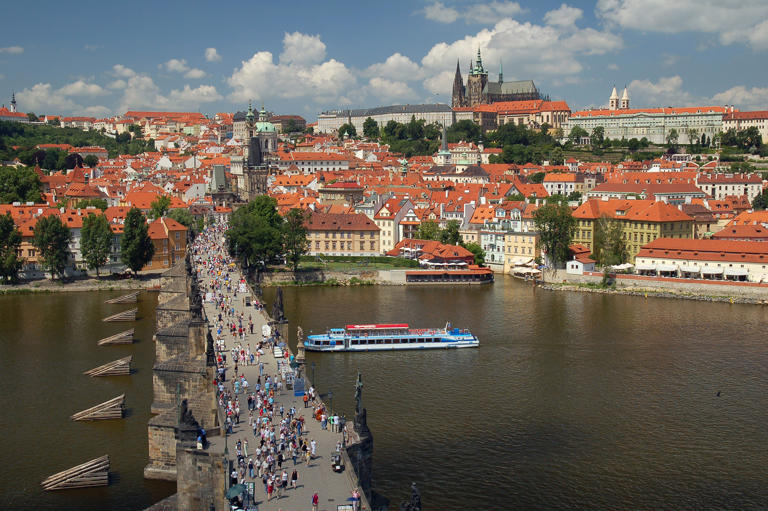
The Rick Steves guide to life
Travel mogul. Philanthropist. Legal weed champion. The real Rick Steves is so much more complex than who you see on TV.

EDMONDS, Wash. — At first glance, it is hard to tell that Rick Steves is protesting.
In the center of his hometown, America’s favorite travel host is perched on the edge of a fountain roundabout engaging in some friendly civil disobedience. As cars circle the intersection, Steves smiles and waves, looking more like an Elf on a Shelf than an angry picketer. This is his way of reminding people he wishes they’d stop driving here.
Steves’s family moved to Edmonds when he was 12, and the 68-year-old is still happy to call it home. Rather than relocate to his beloved Europe, he dreams of bringing some European sensibilities to the edge of the Puget Sound, less than 20 miles north of Seattle.
When he’s not traveling around Europe, writing about Europe or running his multimillion-dollar European tour company, the prolific TV host and author likes to squeeze in some local activism. The roundabout routine is his push to block off Edmonds’s very American Main Street for pedestrians. If you squint at it, you can see what Steves sees: This would be the perfect place for a lively town square.
“I like a lot of things about Europe, but I love the urban energy of Europe. I love the piazza,” Steves said in a wistful tone you might recognize from PBS. “We don’t have a piazza.”
Unfortunately for Steves, the voting majority of the city does not love the idea of parking their SUVs farther away to shop. So despite his Boy Scout enthusiasm, the most famous man in Edmonds must keep up the perch-and-wave. This is not his only crusade.
Spend any amount of time with Steves, and you’ll encounter a total ham who loves a zany bit. But if you ask him about serious issues such as car-free zones, he’ll bring up other causes that are dear to him: affordable housing, supporting the arts, creating senior centers for the elderly to age with dignity.
He’s anti-Trump and pro-cannabis. He does not care if that is bad for business.
The average Rick Steves fan has probably missed this side of him. On TV, they see an always-sunny history lover who makes going abroad feel approachable for the average American. That’s an incomplete picture, like thinking you know Paris because you’ve seen the Eiffel Tower on YouTube.
Meet him in Edmonds, and he’ll fill in the rest.
It may look like a lot of gallivanting, but being Rick Steves takes a lot of work.
He spends three months of the year overseas, researching, writing, recording, refining tours, updating guidebooks. If he’s not planning or producing content, he’s often doing promotional events across the United States. This year, Steves is celebrating the 40th edition of his first book, “Europe Through the Back Door.” Over the course of his career, he has built a privately held company that generates $120 million in revenue a year, published 110 books, filmed 12 seasons of “Rick Steves’ Europe” and produced more than 750 podcast episodes.
“It’s just like coordinating a three-ring circus,” Steves said.
That is: really fun, sort of exhilarating and extremely complicated. To pull this off, Steves does not observe the French 35-hour workweek. He’s a workhorse with a reputation for keeping a frenetic pace year-round.
“It’s more of an American work culture,” Amy Duncan, Steves’s communications director, told me. “He’s an unapologetic capitalist, but he is also a socialist.”
He makes enough money to fly first class, but he sits in only economy, claiming that he doesn’t mind being cramped.
“It never occurred to me that I’m suffering,” he said. “As long as I’ve got an aisle and a seat that reclines, I’m happy.”
Actually, Steves believes airlines should have only one class. It’s part of his egalitarian worldview. He’s also anti-points and anti-miles, refusing to sign up for airline loyalty programs because he believes that they bully us into complicating our lives.
Steves also enforces a self-imposed “ carbon tax ” on his tour company, which takes more than 30,000 people to Europe annually. For every customer, Steves invests $30 to atone for emissions created by their flights between the United States and Europe. Last year, that added up to $1 million donated to a portfolio of organizations, Steves said.
“I don’t need to be a slave to the quarterly profit statement. I want to be around and profitable in 10 years from now in a world that you can travel in that’s stable,” Steves said. “This is a smart investment, and it’s an ethical expense that I should pay for.”
Rick Steves will tell you he’s motivated by making money; the more he can earn, the more good he can do with it.
“Vicarious consumption, that’s one of my things,” Steves said.
After amassing a windfall from the 2001 George W. Bush tax cuts for high earners, Steves donated $1 million to support the local symphony and performing arts center. In 2005, he used retirement savings to buy a 24-unit apartment complex for the local YWCA’s use as transitional housing for women and children. He figured he’d eventually sell the complex and live on the earnings. About a decade later, he changed his mind and donated the complex valued at $4 million.
He also gave more than $4 million to help build the Edmonds Waterfront Center, a vibrant gathering place for seniors where his daughter had her wedding in 2021. And he gave another $2 million for a similar center in the nearby city of Lynnwood, which broke ground in mid-April .
“Rick puts his money where his mouth is,” said Nancy Leson, a former Seattle Times food critic who used to let Steves’s daughter babysit her son. She has appreciated his regular presence in the community, which has entailed hosting events for local politics at his house and shopping at the farmers market .
“He changed travel,” local resident Karen Howe said on her way into the Waterfront Center with a friend. She has used Steves’s guidebooks for years. “He’s introduced us to places that most of us would never think of going.”
Steves hasn’t won his piazza battle, but he has brought European touches to Edmonds. At the Rick Steves’ Europe headquarters, there’s an E.U. flag hanging from the mocha brick facade. And gargoyles that drain rainwater, just like at the Notre Dame cathedral.
“Gargoyles scare away evil spirits,” Steves points out, unable to suppress his inner tour guide.
Here Steves employs more than 100 people: editors, audio producers, tour specialists and cartographers such as Dave Hoerlein, his first employee. That’s excluding the fleet of guides and drivers he contracts across the pond to shepherd tour customers.
Inside, he bounds through a maze of cubicles, his neck craned forward, always at an eager pace. His 6-foot frame appears leaner than in previous seasons of his life, but his signature look is familiar. No, not khakis and a button-down. That’s vintage Rick. These days, he wears dark jeans and a button-down, plus a thin scarf and leather sneakers.
During a day of meetings, Steves’s fjord-blue eyes lit up at the minutia of the business. He went over new maps with Hoerlein. He and longtime co-author Cameron Hewitt addressed problems such as finding a “less glitzy” stop on the Amalfi Coast that’s not Sorrento. They discussed whether a place is worth visiting after it’s gotten too popular, and Steves indulged in some gallows humor.
“It’s going to be like holding the corpse of a loved one who just died,” he said.
His critics argue that the “Rick Steves Effect” can turn a charming village, restaurant or museum into a tourist magnet. Matthew Kepnes, the travel writer behind the blog Nomadic Matt , points to the Swiss town Zermatt, which he says Steves put on the map, and has since dealt with overtourism . You’re bound to bump into groups with Rick Steves guidebooks in Italy’s increasingly crowded Cinque Terre.
Whether Steves is actually to blame for changing a place is up for debate. There are plenty of destinations he’s covered that haven’t been inundated with swarms of Americans (see also: Gdańsk).
Steves says he assesses whether a place wants tourism, if it can handle it gracefully. If it doesn’t or can’t, he may mention it but not promote it.
He has faith — maybe too much — that his clients share his values.
“Does [my work] change the personality of a town? It can. Am I a dramatic impact on Europe? No,” he said.
“There’s a handful of places I really promote aggressively that I’ve had a serious impact on, but otherwise ... my travelers are the kind of people that take only pictures and leave only footprints. ... They’re good travelers.”
You don’t have to spend much time in Edmonds to see why Steves never considered leaving.
The city — population roughly 42,000 — sits on a majestic inlet. You can get to a major international airport in about an hour. The community is so courteous, it has an “umbrella share” program in case people forget their own on a rainy day. As Steves walks around town, he greets people by name. He lives within walking distance to both his favorite diner and a pétanque court, the French answer to Italian bocce. He plays bongos at his church on Sundays.
In 1967, Richard “Dick” Steves moved the family here because he was worried about Rick Junior.
“I was hanging out with dangerous kids and going down the wrong trail,” Steves said. Seriously.
His dad, an Army veteran, got by in the upscale suburb as a piano technician and importer. When Steves was 14, his parents dragged him on a work trip to Europe to visit piano factories; it was a radical experience that sparked his lifelong passion for travel.
Back in Edmonds, Steves started teaching piano, eventually turning his savings into trips abroad of his own — not only to Europe, but also to Turkey, Nepal, Afghanistan. He went to college nearby, earning degrees in European history and business from the University of Washington, where he played in the Husky Marching Band.
After graduating, Steves figured he could keep up his routine: give piano lessons during the school year, then travel during the summer. He started teaching travel classes in the same recital hall where his piano students performed. This was back when there was no internet and there were few guidebooks to consult for trip planning.
The classes were a hit. At 25, Steves turned his lecture materials into a 180-page book, and self-published “Europe Through the Back Door,” in 1980.
Four years later, he hosted his first European minibus tour group, serving as both bus driver and guide.
His businesses have evolved; his bus tours now take up to 28 travelers, a number Steves says is a sweet spot between making the tour more affordable yet enjoyable for customers and profitable for the company. But his mission has remained the same: to be the best resource for European travel and help Americans travel better.
“I just focus on that and I love it,” he said. “It takes my life out of balance — which is not good — but it lets me do a lot of stuff that I believe in and that’s good.”
Steves has been open about the challenges of being a travel mogul. As he built his empire, he was also raising a family. Being “married” to both took a toll. In 2010, Steves and his wife, Anne, divorced after 25 years of marriage.
Up the hill from his junior high, Rick Steves’s modest beige home offers a window into his many lives. There are family photos on the walls, from older relatives to his baby grandson, Atlas. He hosts political fundraisers on the sprawling deck. A painting of Kerala, India, nods to one of his favorite countries. (People forget that Steves did four editions of “Asia Through the Back Door.”)
Next to his grand piano, there’s a stuffed creature that Steves calls his “Silver Fox” baring its teeth and wearing novelty sunglasses with cannabis leaves on the lenses — a nod to two of his interests: taxidermy and marijuana activism.
“It’s the civil liberties. … It’s the racism. … Everything about it is wrong,” he said of keeping weed illegal.
As for the toothy fox, Steves doesn’t do typical souvenirs anymore, but he makes an exception for stuffed animals.
“The wooden shoes and the pewter Viking ships are so obvious,” he said. “I like to do something a little more organic and a little more striking, and it takes me back there — I like it.”
He’s a very good piano player. He can also play the sousaphone and the trumpet — which he did regularly during the pandemic, performing taps for his neighbors at sunset.
The coronavirus was a nightmare for the travel business, but a miracle for Steves’s love life.
After running in the same social circles for years, he and Shelley Bryan Wee, a prominent local bishop, started dating at the end of 2019. They had a lot in common. Both are progressive Lutherans. Both are divorced with adult children. But neither worked a typical 9-to-5, and one of them spent three months of the year in Europe.
Then shutdowns happened. Steves, who couldn’t remember whether he’d ever had dinner in the same place 10 nights in a row, spent 100 nights at the same table with Wee. It solidified their relationship.
“Shelley is a constant,” Steves said. He still struggles with the balancing act between work and love.
When the stars align and they’re both in Edmonds, Wee cooks, and Steves plays sous-chef. They walk Jackson, Wee’s labradoodle, creating their own version of the passeggiata, Italy’s traditional evening stroll. They play table tennis before dinner.
When the world reopened, they started traveling together. They’ve made time for a few big vacations: a trip to Morocco, where they were caught in a windstorm that blew the windows out of their car; a luxury barge cruise through Burgundy, France, “that was embarrassingly expensive,” Steves confessed, followed by a week hiking in the Swiss Alps; and another hiking trip between remote lodges on Mont Blanc.
Before their first trip, Steves edited the contents of Wee’s suitcase, because packing light is part of his philosophy.
“What do you say?” she asked. “You’re talking to Rick Steves.”
Editing by Gabe Hiatt. Additional editing by Amanda Finnegan. Design editing by Christine Ashack. Photo editing by Lauren Bulbin. Videos by Monica Rodman. Senior video producer: Nicki DeMarco. Design by Katty Huertas. Copy editing by Jamie Zega.
More travel news
How we travel now: More people are taking booze-free trips — and airlines and hotels are taking note. Some couples are ditching the traditional honeymoon for a “buddymoon” with their pals. Interested? Here are the best tools for making a group trip work.
Bad behavior: Entitled tourists are running amok, defacing the Colosseum , getting rowdy in Bali and messing with wild animals in national parks. Some destinations are fighting back with public awareness campaigns — or just by telling out-of-control visitors to stay away .
Safety concerns: A door blew off an Alaska Airlines Boeing 737 Max 9 jet, leaving passengers traumatized — but without serious injuries. The ordeal led to widespread flight cancellations after the jet was grounded, and some travelers have taken steps to avoid the plane in the future. The incident has also sparked a fresh discussion about whether it’s safe to fly with a baby on your lap .
- You can still find affordable flights to Europe this summer April 18, 2024 You can still find affordable flights to Europe this summer April 18, 2024
- See how jamón gets made in the heartland of Spanish pork April 16, 2024 See how jamón gets made in the heartland of Spanish pork April 16, 2024
- What to know about Schengen zone, Europe’s ‘border-free’ travel system April 3, 2024 What to know about Schengen zone, Europe’s ‘border-free’ travel system April 3, 2024


IMAGES
VIDEO
COMMENTS
Hard Rock Cafe. Bars & Pubs. 12/15/2023 Georg Sachsen. 07/29/2023 name. An immersive new guidebook for independent travellers. A full, up-to-date, city guide to Gdansk (Danzig). Loads on Gdansk restaurants, cafes, nightlife, sights, history. Lech Walesa, Solidarity, Shipyards, beaches and more.
Discover Gdańsk, a unique Baltic port with a rich history and culture. Find attractions, articles, activities and guidebooks to plan your trip.
Discover the best things to do in Gdansk, one of Poland's oldest and most beautiful cities. Learn about its history, culture, architecture, beaches, and more in this comprehensive guide.
Gdansk Travel Card. If you plan to visit Gdansk for a longer duration intending to move around covering many attractions, it's ideal to buy Gdansk travel card by Gdansk tourism. You can get them in the central stations or sometimes in big kiosks. Gdansk tourist card offers free/discounted entry to many museums, attractions and shops.
The Crane, Gdansk (Zuraw) Another iconic symbol of Gdansk is the Crane. This building was once a port crane, used to remove cargo from ships. During the war, like many other buildings in Gdansk, it was destroyed. However, it was later returned to its former glory in the 1950s and now houses the National Maritime Museum of Gdansk.
Business tourism Thanks to its geopolitical location, access to the sea, rich cultural heritage and well developed network of sea and air connections, Gdansk is one of the fastest emerging and developing locations In Europe. It's a perfect place for organizing conferences, meetings and incentive trips.
Gdansk Travel Guide Information. Location: Gdansk, Poland Official Language: Polish Currency: Polish Zolty Airport: Gdańsk Lech Wałęsa Airport (GDN) Best Time to Visit: June - September. Best Tips & Things to Do in Gdansk Poland Stay In Gdansk Old Town .
Gdańsk's Old Town, rebuilt after the Second World War, is a trelliswork of streets skirted by tall patrician and merchant tenements, while hulking gates defend the landward and water-side entrances. Let's explore the best things to do in Gdańsk: 1. Trakt Królewski (Royal Way) Source: MoLarjung / shutterstock. Dluga Street, Royal Way, Gdansk.
Gdansk Travel Guide: Top 44 Things to Do in Gdansk, Poland. Welcome to the enchanting city of Gdansk, nestled along the picturesque Baltic Sea coast of Poland. With its rich history, stunning architecture, and vibrant cultural scene, Gdansk is a destination that promises an unforgettable experience.
Mapping out a great 1, 2 or 3 days in Gdansk itinerary is a great addition to any trip to Poland. It is a beautiful and unique city located on the Baltic coast offering a relaxing, delicious, and interesting weekend getaway. It's unfortunate that Gdansk receives a small amount of tourists in comparison to other cities in Poland such as Krakow ...
Use this travel guide to Gdansk to help plan or navigate your trip! Getting to Gdańsk, Poland: Transportation Options and Travel Tips. Traveling to and from Gdansk is a breeze with affordable train options (around $10 USD) connecting you to the city, conveniently located just a 10-minute walk from the Old Town.
Gdansk is a city in Northern Poland located on the coast of the Baltic Sea and belongs to the fourth largest metropolitan area of this Central European country. | gdansk guide Gdansk travel guide: Overview of Gdansk Map of Poland and its cities with Gdansk in the north. Gdansk is known as a beautiful port city located on the Baltic Sea coast.
Gdańsk is a major port city on the Baltic Sea coast in northern Poland. It is located at the mouth of the Motława River and lies in the Pomeranian Voivodeship, of which it is the capital and largest city. Gdańsk forms part of the Tricity metropolitan area and the nearby cities of Gdynia and Sopot. Gdańsk is in the Pomeranian Voivodeship, the province's capital and largest city, with a ...
Entrance Fee: Adult - 30 PLN, including a free audio guide. 20% discount with Gdansk Tourist Card. Drink hot chocolate. One of the things to do in Gdansk is to drink a delicious hot chocolate from the E. Wedel Company. It's a local confectionery manufacturer producing cakes, chocolates, and snacks since 1851. It basically is the Polish ...
1 Gdańsk Lech Wałęsa Airport (Polish: Port Lotniczy Gdańsk im. Lecha Wałęsy GDN IATA). West northwest of Gdańsk and not far from the city centre of the Tricity metropolitan area: Gdańsk 12 km (7.5 mi), Sopot 10 km (6.2 mi) and Gdynia 23 km (14 mi). The vast majority of flights to and from the airport are served by low-cost airlines ...
In addition to our detailed Gdansk travel guide that outlines the places to visit in Gdansk, we have complete Poland itineraries for 3 Days in Krakow and 3 Days in Warsaw. Gdansk on a Budget. In general terms, Gdansk is an affordable city to visit. Many museums offer free days to visit (check online prior to your trip).
A guide to Gdansk, Poland's regenerated maritime city. The Polish city has transformed its former port districts, with trendy craft breweries and hotels in former warehouses.
Rough Guides® is a trademark owned by Apa Group with its headquarters at 7 Bell Yard London WC2A 2JR, United Kingdom. Plan your visit to Gdansk, Poland: find out where to go and what to do in Gdansk with Rough Guides. Read about itineraries, activities, places to stay and travel essentials and get inspiration from the blog in the best guide to ...
10 Best Things to Do in Gdansk. 1. Walk the Length of the Long Market. One of the most notable tourist attractions in Gdansk, and one you shouldn't miss, is the Long Market. It got its name from the length of the strip that draws a 500-meter straight line across Gdansk Old Town, stretching from the Green Gate to the Golden Gate. The Long Market ...
Green Gate. The Gdansk Green Gate, with its four arches, sculptures, windows, and roof on the Marcin Białek Royal way, is one of the most famous sights of Gdansk. The construction, made of small Dutch bricks, was completed in the middle of the 16th century. It was supposed to be the residence of the Polish monarchs.
Discover the Enchanting Wonders of Gdansk 2024: A Travel Guide by Catherine H. Hutchinson. Embark on an unforgettable journey through the heart of Gdansk with Catherine H. Hutchinson as your expert guide. This meticulously crafted travel companion is not just a guidebook; it's your passport to an immersive and extraordinary experience in this ...
Compared to other European cities, Gdansk is generally considered to be inexpensive, making it ideal for an affordable city break. For a weekend in Gdansk, we spent approximately £130 per person, which covered flights, accommodation, eating out, and activities/sightseeing.
Our Top Picks for Best Places to Visit in Europe. Dublin, Ireland - Best tourist attractions. Barcelona, Spain - Best theme parks. Gdansk, Poland - Best historical destination. Prague, Czech ...
April 29, 2024 at 5:00 a.m. EDT. 13 min. Comment. EDMONDS, Wash. — At first glance, it is hard to tell that Rick Steves is protesting. In the center of his hometown, America's favorite travel ...